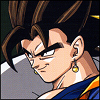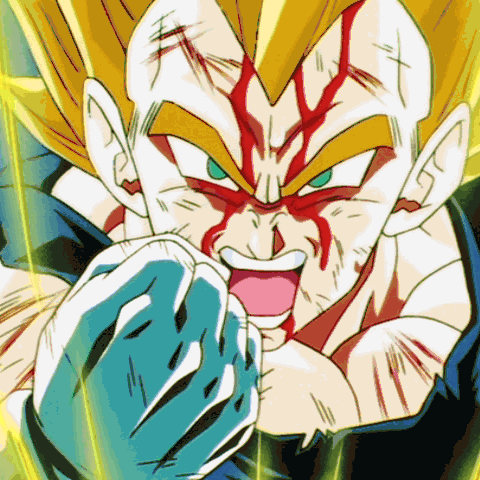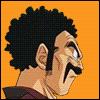Dragon Ball's True Genre: We Need to Talk about Wuxia
Moderators: General Help, Kanzenshuu Staff
- Kunzait_83
- I Live Here
- Posts: 2974
- Joined: Fri Dec 31, 2004 5:19 pm
Re: Dragon Ball's True Genre: We Need to Talk about Wuxia
I suppose not. S'what its here for.
EDIT: Oop! Third page!
EDIT: Oop! Third page!
http://80s90sdragonballart.tumblr.com/
Kunzait's Wuxia Thread
Kunzait's Wuxia Thread
Journey to the West, chapter 26 wrote:The strong man will meet someone stronger still:
Come to naught at last he surely will!
Zephyr wrote:And that's to say nothing of how pretty much impossible it is to capture what made the original run of the series so great. I'm in the generation of fans that started with Toonami, so I totally empathize with the feeling of having "missed the party", experiencing disappointment, and wanting to experience it myself. But I can't, that's how life is. Time is a bitch. The party is over. Kageyama, Kikuchi, and Maeda are off the sauce now; Yanami almost OD'd; Yamamoto got arrested; Toriyama's not going to light trash cans on fire and hang from the chandelier anymore. We can't get the band back together, and even if we could, everyone's either old, in poor health, or calmed way the fuck down. Best we're going to get, and are getting, is a party that's almost entirely devoid of the magic that made the original one so awesome that we even want more.
Kamiccolo9 wrote:It grinds my gears that people get "outraged" over any of this stuff. It's a fucking cartoon. If you are that determined to be angry about something, get off the internet and make a stand for something that actually matters.
Rocketman wrote:"Shonen" basically means "stupid sentimental shit" anyway, so it's ok to be anti-shonen.
- Kunzait_83
- I Live Here
- Posts: 2974
- Joined: Fri Dec 31, 2004 5:19 pm
Re: Dragon Ball's True Genre: We Need to Talk about Wuxia
I don't think I have to say much to this particular crowd about Yu Yu Hakusho (thankfully). It ranks alongside DBZ as one of the defining Shonen Wuxia manga/anime mega-franchises of the early 90s. We'll just briefly run through and review the basics in light of all the previous info (and for the benefit of the few people here who may still be in the dark about this series as well).
So with YYH we've got a manga/anime series that's set in then-modern 1990s Japan, primarily focusing on Yusuke Urameshi and Kazuma Kuwabara, a pair of rival 14 year old middle school-age rebellious delinquent punks whose very immediate futures seem perfectly poised for a life of petty criminal thuggery and Bosozoku gang membership (and in Yusuke's case, judging by his strongly hinted-at family background in the manga, probably a future even further down the road of life as a Yakuza hood).

The fairly predictable path of youthful ruin for these two boys is completely derailed however when Yusuke is of course run down and killed by a speeding car while uncharacteristically saving the life of a small child within the very first manga chapter/anime episode and is revived as a spirit. Kuwabara not long after has his own latent ESP-like psychic connection with the realm of the dead awakened.
After Yusuke is resurrected by Koenma, son of the mythical Great King Enma (due to him dying before his intended time), he and shortly later Kuwabara are recruited by the Spirit World (afterlife) to be their agents in the Human World (Earth/the living world), investigating and combating incidents involving demons and evil spirits from the Demon World (Hell) running amok.
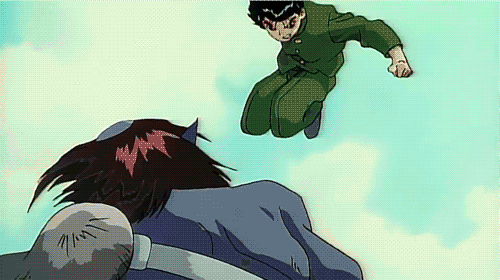
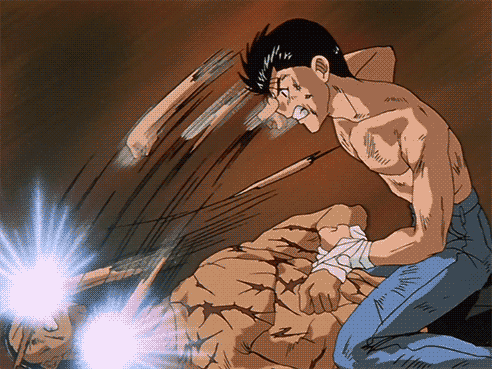
They're both also joined by Kurama and Hiei, a Fox Demon and Fire Demon respectively, who were both once criminals in the Spirit World and are forced by Koenma (after being apprehended initially by Yusuke) to work alongside Yusuke and Kuwabara as almost a form of spiritual/paranormal “community service”.
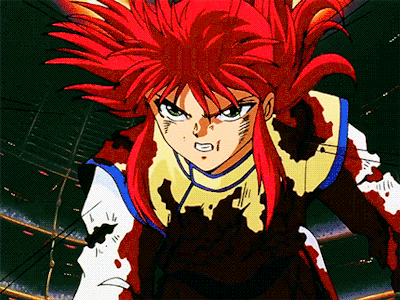
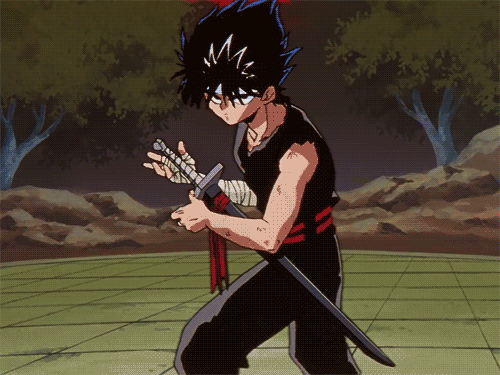
Before long however, the series' shifts its focus away from Yusuke's duties as a Spirit World Detective and more towards his, you guessed it, ever growing and evolving supernatural martial arts skills. Upon dying and being resurrected, Yusuke's mind and spirit are awakened to his latent ability to harness and focus his Ki, and he is mandated by Koenma to train this ability in the form of supernatural martial arts by the great master Genkai so as to be a more effective fighter against the demonic hordes he will be facing as a Spirit World Detective.


Among Yusuke's greatest opponents is Toguro, formerly Genkai's martial arts peer and lover, who sold his soul to become a demon so that he will never age or lose his strength as a martial arts master. Toguro becomes obsessed with and fixated on Yusuke's strength and power as a fighter, and his encounters with Yusuke further brings out in the boy his own Youxia-like will and ideals as a fighter to continue to grow and improve for the sake of growing and improving and realizing his own full potential, all the while with Toguro acting as a cautionary tale and tragic reminder of where those warrior's ideals for growth can lead when they completely and utterly consume a fighter to the point of total obsession.
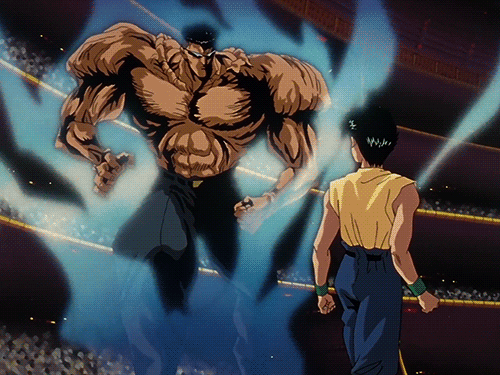

Pretty much most all of Yusuke's major demonic martial arts adversaries throughout the series function in a similar manner to Toguro, acting as dark reflections of Yusuke's own Youxia-like tendencies and showing where they can lead him astray if he doesn't properly apply them and think the ramifications of his actions through clearly.
This is especially apparent in Sensui Shinobu, a once incredibly heroic Spirit World Detective and masterful martial arts warrior who was tragically driven irrevocably and murderously insane by the extreme corruption of the Human World and his own deeply held and unshakable moral and ethical principals as a warrior.

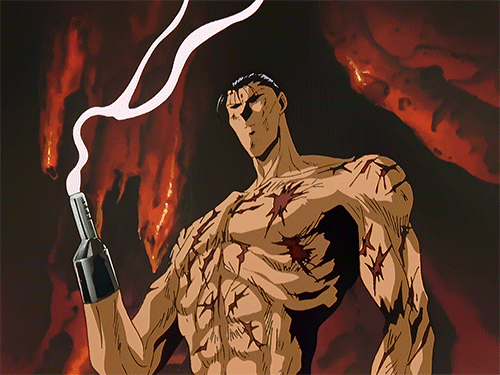
Yu Yu Hakusho is the very essence of early 90s post-modern/post-genre barriers Wuxia personified. You cannot get more specifically dated to that exact moment in time with the genre than this. Coming from Japan as a manga/anime franchise, you've got Bosozoku/delinquent thug elements similar to Osu!! Karate Bu before it, as well as the transplanting of occult/horror and demon/ghost hunting Wuxia elements to modern day Japan ala The Peacock King, all while bringing the afterlife/Bangsian fantasy-centric elements of the genre into the central focus with vast chunks of the series set in the Spirit and Demon Worlds.
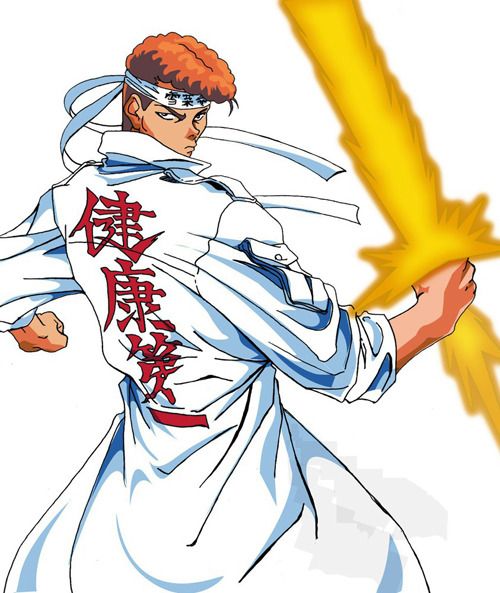
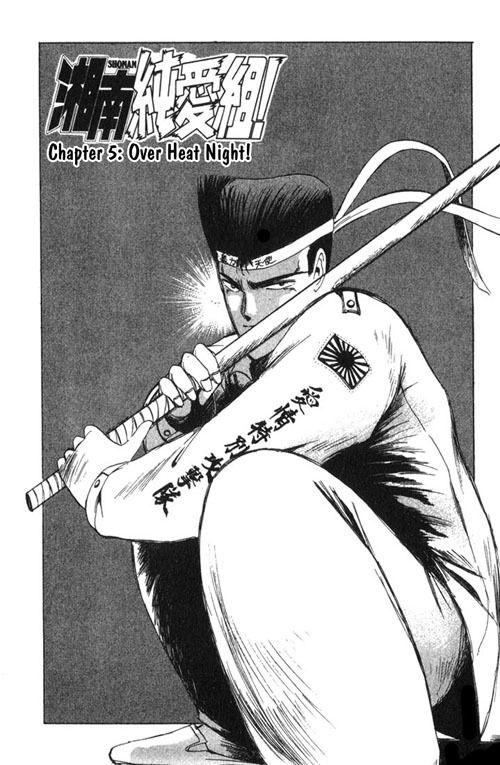
(Kuwabara's Rei Ken/Spirit Sword has a dual meaning: being both a Ki-powered sword wielded by a modern day Xia-like character, as well as a Wuxia-ified take on the wooden Bokuto swords often wielded by Bosozoku thugs, whose stereotypical Kamikaze tokko-fuku garb Kuwabara wears as his Xia warrior's dogi/robe of choice. In fact, the first time Kuwabara accidentally created a Spirit Sword from his Ki, it was through using the broken-off piece of an enchanted, mystically powered wooden Bokuto sword.)
Beyond even all that though, Yu Yu Hakusho is a rather intelligent and thoughtful deconstruction of the Youxia archetype by way of transplanting the extremely medieval and archaic nature of its warriors' ideology to a modern day early 1990s setting. Yusuke spends the vast majority of the series working out how to balance his natural, inherent desire to devote his life to growing and blossoming as a supernatural martial arts master with the vastly more liberal and nuanced morality and social responsibilities of modern living, and each of his major rivals and opponents act as generally three dimensional and achingly human examples of where he can go astray in walking the precarious tightrope he spends the series walking.
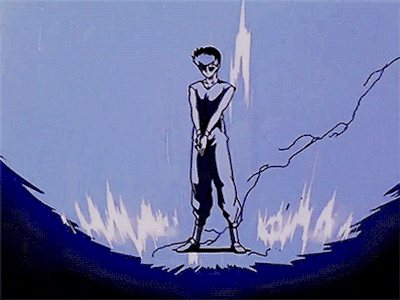
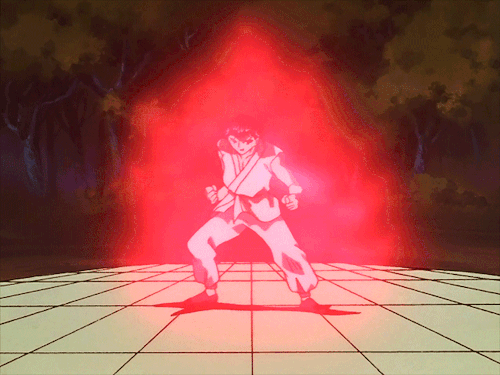
The incredible success of the post-HK New Wave genre-hybridization and modernizing formula for Wuxia had indeed left its mark on Japanese pop culture through numerous highly popular Seinen and Shonen manga and anime. This would only further continue across ever more mainstream Japanese properties well before the 90s would even reach its back half.
Rumiko Takahashi would dip into the craze a bit with her seminal and hugely influential gender bending martial arts/sex comedy Ranma ½, which sprinkled Wuxia elements of Chinese kung fu mysticism and martial arts rivalries throughout an otherwise farcical “harem” comedy set in modern late 80s/early 90s Tokyo.

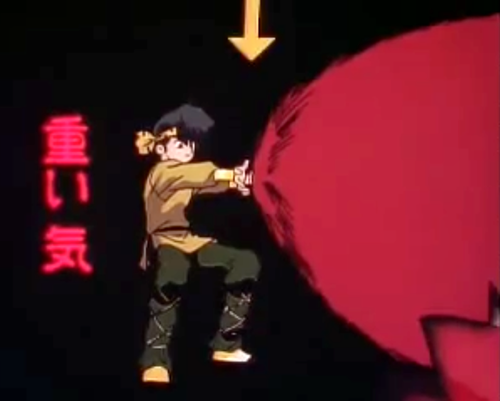
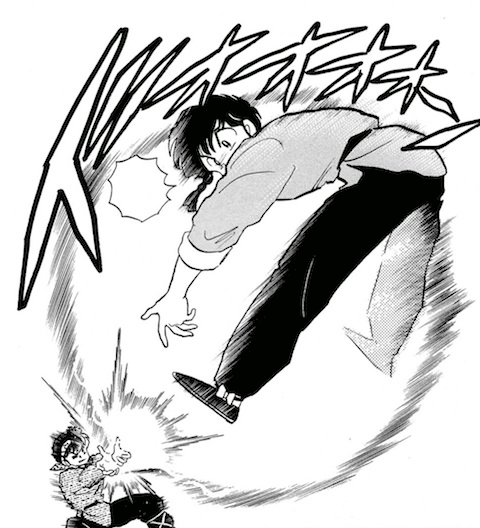 [
[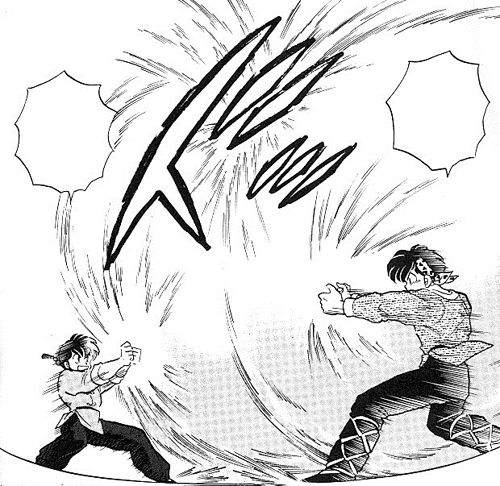
Another popular children's anime franchise to unexpectedly be influenced by the ever-increasing spread of blending Wuxia with other genres by the early 90s was, of all things, the Gundam franchise.
The... ahem... somewhat controversial series Mobile Fighter G Gundam built itself on the premise of essentially being a Wuxia Gundam series, owing to its creator Yasuhiro Imagawa's love of international films, particularly Hong Kong Wuxia and the films of Tsui Hark. Within the series, ruling power over the universe is decided every few years with a martial arts fighting tournament, each world nation being represented by a Gundam battle mech whose pilot (usually an expert martial artist themselves) controls the robot via their own fighting movements, making the Gundam mimic every punch, kick, and various supernatural martial arts Ki techniques that the pilot performs.
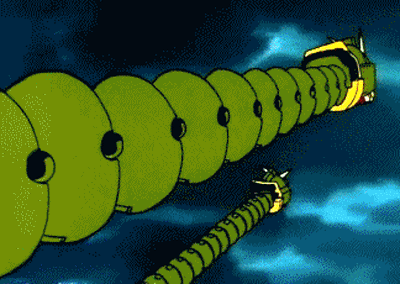
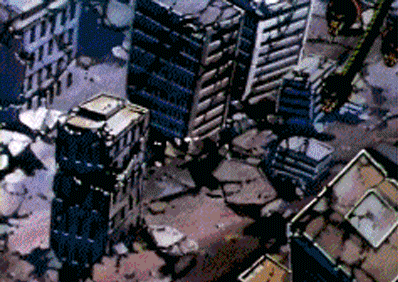

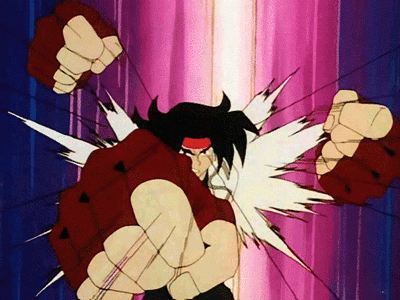
Apart from the obvious parallels, the character of Master Asia's Japanese name Toho Fuhai, is actually the Japanese translation of the previously mentioned Smiling Proud Wanderer character Dongfang Bubai, an intentionally direct homage.
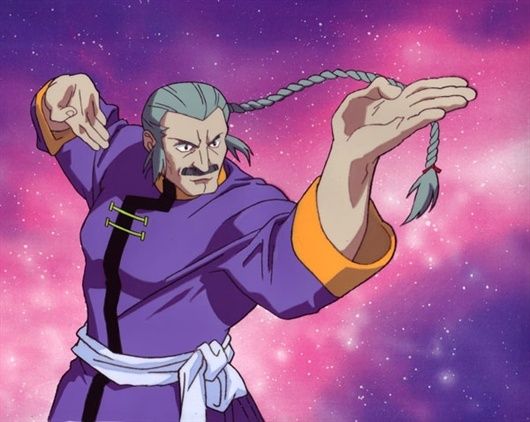
By 1993, even that year's annual Super Sentai series would be Wuxia themed: Gosei Sentai Dairanger, which focused on the main team's growing Chinese kung fu/Ki proficiency and training as well as numerous references to creatures and deities of Chinese folklore with its mecha. The villains they faced, the Gorma Tribe, were an ancient martial arts clan who achieved such powerful mastery of their bodies and their Ki that they grew third eyes: this concept is taken directly from a piece of Taoist lore that pops up in Wuxia from time to time and will be further touched on later.
Even the power by which the Dairanger team transforms stems from their ability to harness and control their own Ki, their costumes designed after Chinese kung fu training clothing, and many of their weapons being based on Chinese medieval martial arts weapons common to Wuxia: their quarter staffs in particular suspiciously and likely intentionally resemble Sun Wukong's magical staff.

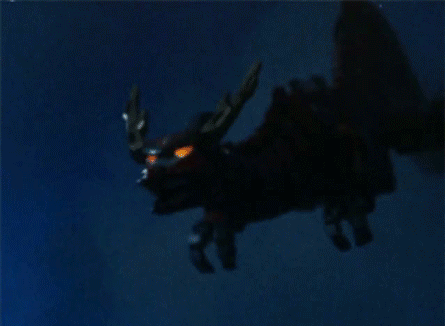
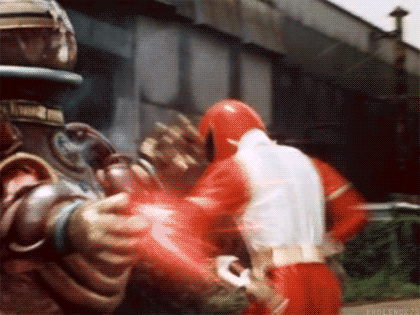
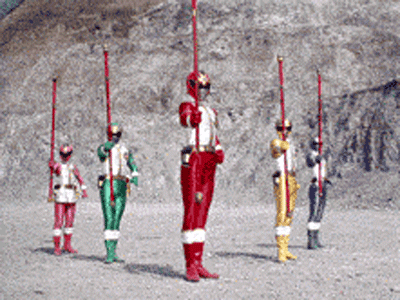
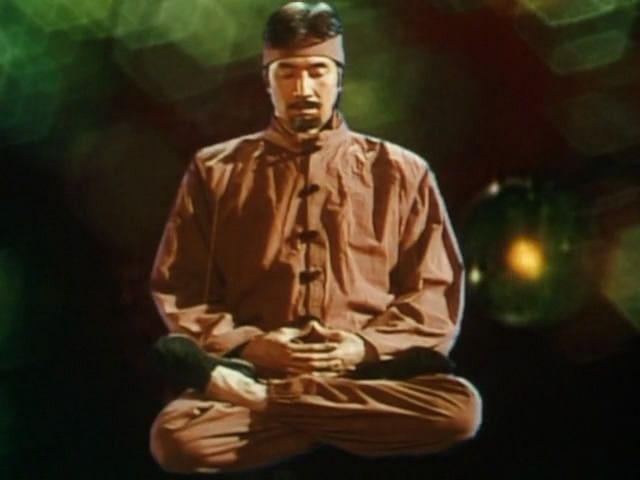
The continued virus-like spreading of post-HK New Wave Wuxia's influence (and the influence of the various works it had by the early 90s already influenced) hardly stopped at Japanese comics and TV shows though. It of course had a HUGE impact on video games, and is essentially responsible for creating one of the most defining game genre's of the early 90s.
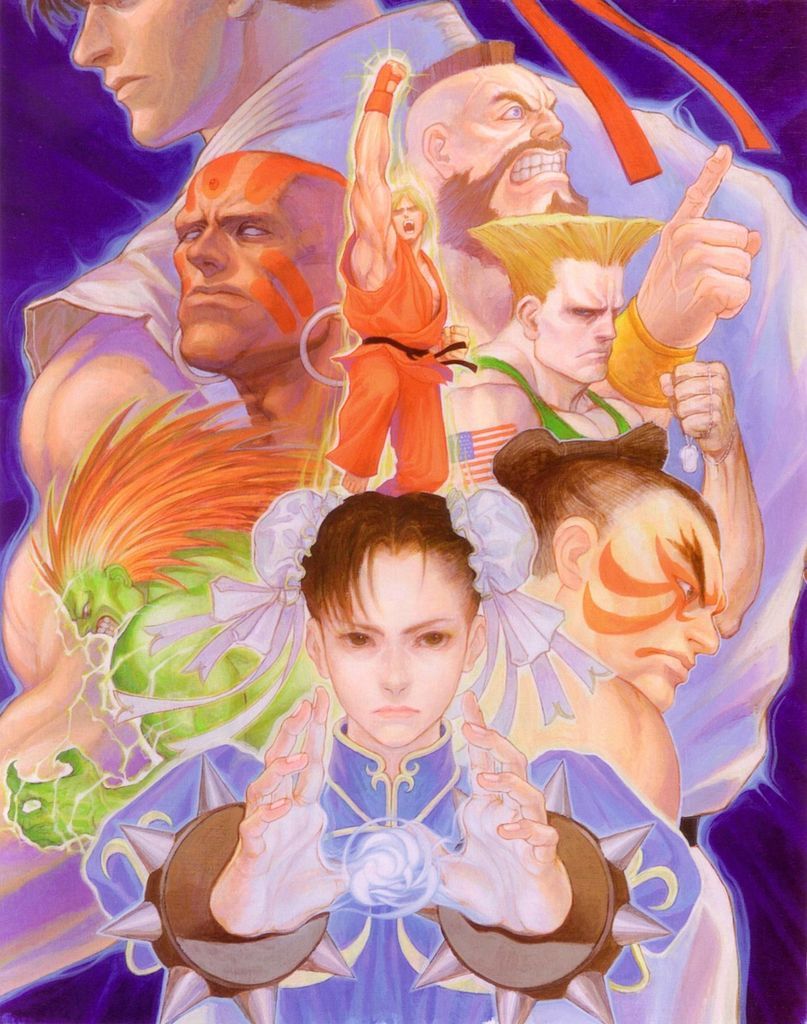
Once more, I believe this one needs little to no introduction.
But for the benefit of those living under a fucking rock for the past 20/25 years now: debuting in arcades in 1991, Street Fighter II is one of the most important flagship franchises of legendary game development studio Capcom and an absolute icon and benchmark of arcade gaming, radically redefining the arcade landscape for what would essentially be its final decade of existence as a cultural entity. It codified and more or less created from wholecloth the vast lion's share of the fundamentals for the modern 2D fighting game as we know it.
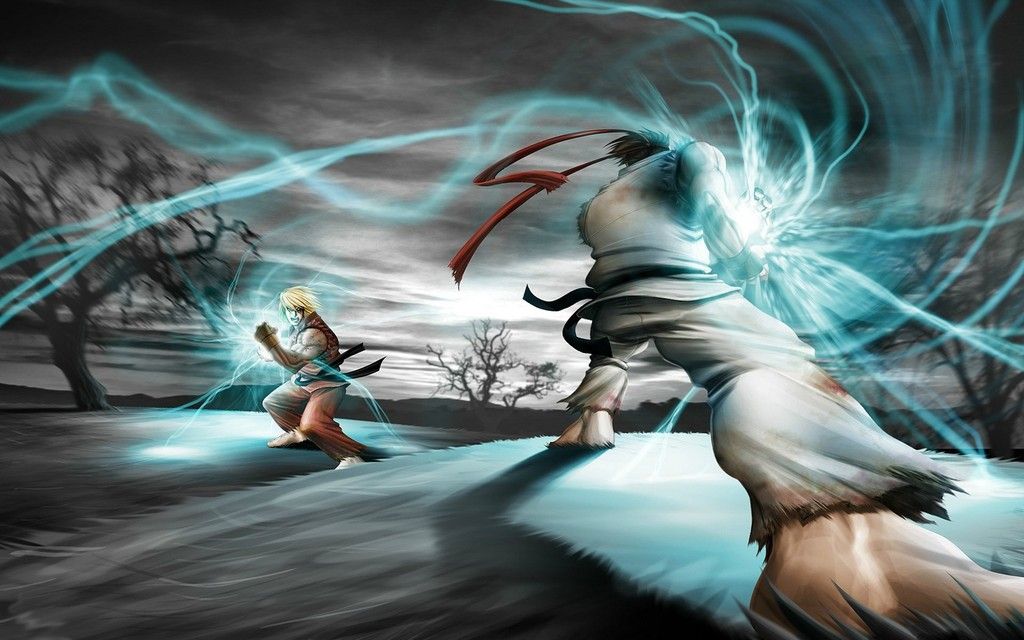
The characters and lore behind the Street Fighter series is of course absolutely the byproduct of an Asian popular culture that had for more than a decade before been inundated throughout every pore with modernized and hybridized takes on classic martial arts fantasy fiction.
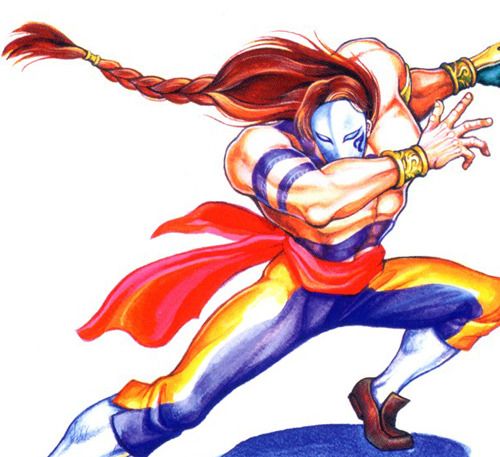
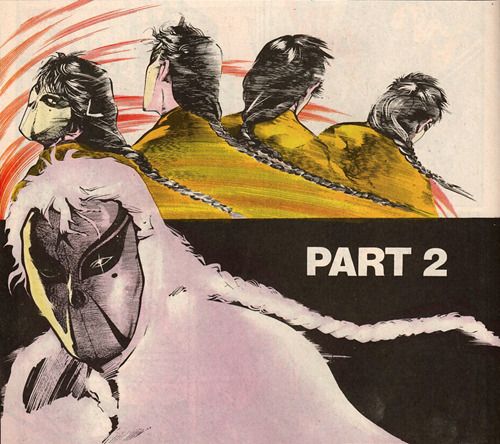
(The look and aesthetics of many pieces of 70s and 80s Wuxia manhua, manga, and movies, genre blended and otherwise, fueled the look and feel of Street Fighter II's stew of fantasy martial arts mixed with modern sensibilities, as was the well established trend of the time. Here you can clearly see that Vega/Balrog's masked/braided ponytail look was largely taken from the armless warrior Ghost Servant from Chinese Hero. In Chinese Hero, Ghost Servant wears the mask to hide his gruesomely disfigured face, while Vega/Balrog wears his to shield and protect his delicately beautiful and handsome features, which may have been an intentional reference/subversion.)
The main character Ryu is essentially a modern day classical Youxia (mixed heavily with numerous elements of actual real life Japanese Karate masters, namely Mas Oyama), a pure warrior constantly and restlessly wandering the globe in search of new challenges to push his martial arts skills to and beyond their absolute limits. Ryu embodies and lives for nothing but the purity of the fight while striving to maintain the integrity of his honor as a martial arts master: you cannot possibly distill the crux of the Youxia archetype down to its barest essence more than this.
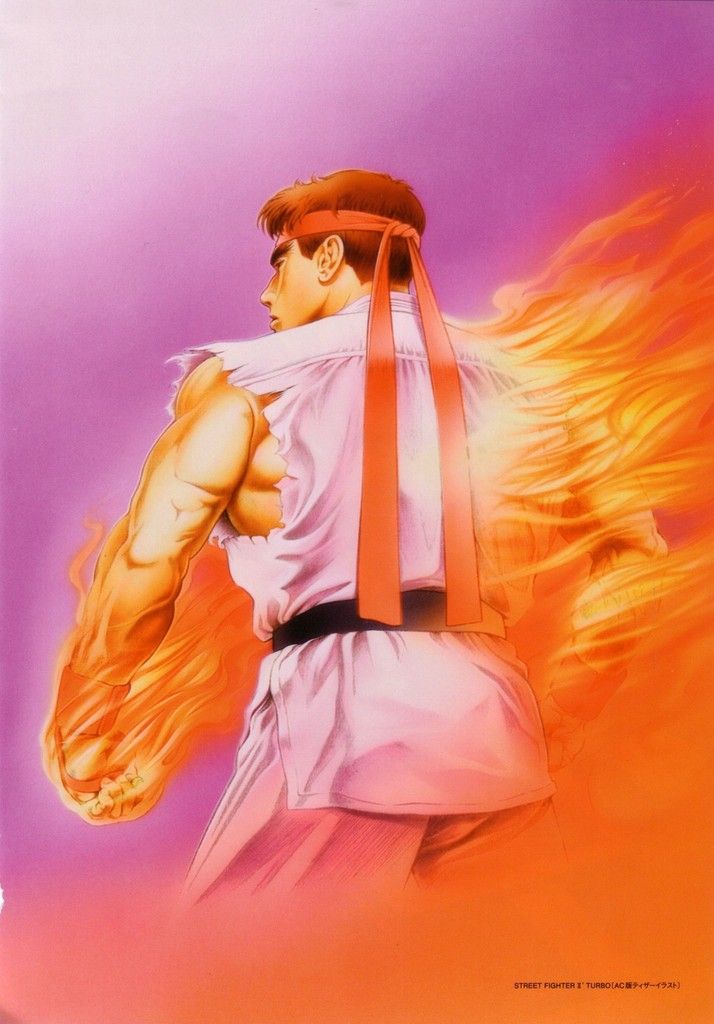
Ryu of course, like any good Wuxia protagonist, is also just as much defined by his rivals as he is his own skills and code of fighters' ethics. His best friend Ken Masters is every bit his American counterpart: brash, energetic, humorous, high spirited, and a bit arrogant, Ken is very much the more down to earth Yin to Ryu's ever stoic Yang, and the careful balance between the pair's deep friendship as lifelong training partners and students under the same master as well as hot blooded rivals in their mastery of their skills is very much at the heart and soul of the series' mythos.
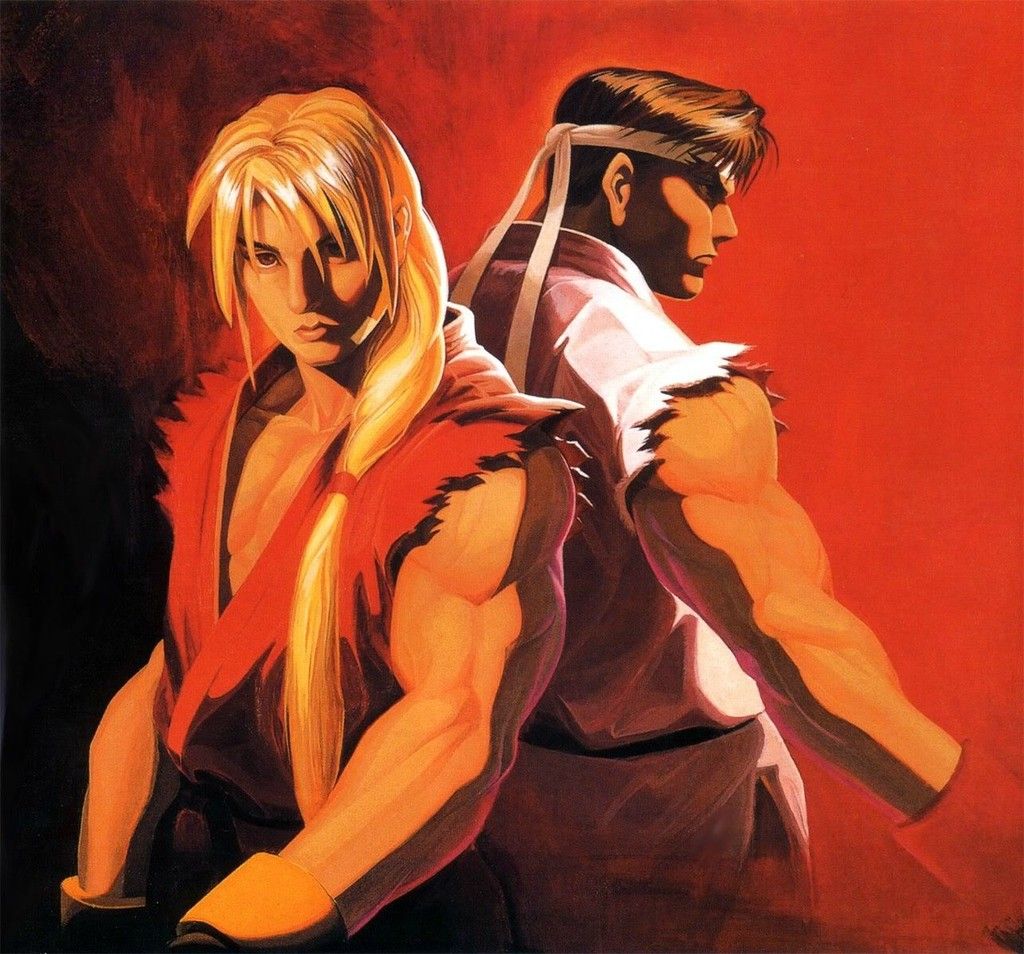

With an international and multi-ethnic cast of warriors each representing a different culture as well as a different fighting style, Street Fighter has over the course of its dense history covered just about close to every possible martial arts character archetype in existence and each of them make up what is essentially within the series' universe a modern day 1980s and 1990s Wulin community: supernaturally powerful martial arts masters who train and exist quietly and on the far fringes of society, making their presence known primarily to test their skills against one another at large gatherings of great masters at major martial arts tournaments, such as those hosted in the series by Sagat and later the criminal empire Shadaloo.
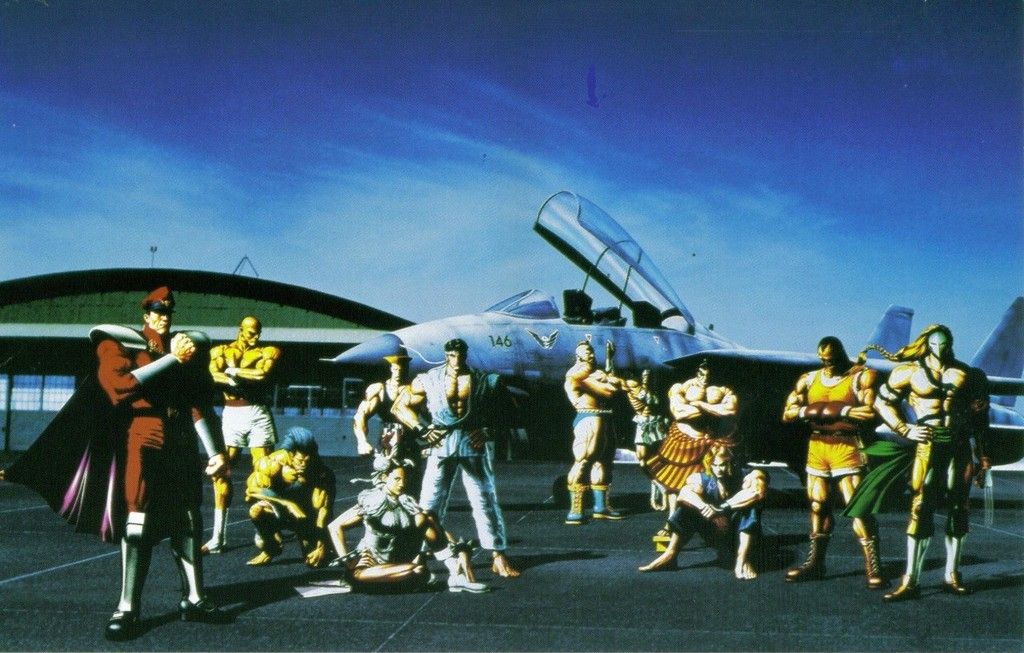
The character Gen for instance, a semi-retired and terminally ill kung fu hitman, is a tribute to virtually every Xian stereotype there is, as well as embodying numerous aspects of countless martial arts assassin characters made especially popular during Shaw Bros. and Golden Harvest's heyday.

Then of course there's the superpowerful psychic martial arts master and drug lord/dictator Vega (or M. Bison if you'd prefer) who takes as much from Japanese folklore and pop culture (namely Hiroshi Aramata's classic apocalyptic occult/onmyodo historical horror epic Teito Monogatari and its iconic villain Yasunori Kato) as he does every possible stripe of Chinese Wuxia warlord characters. Vega/Bison spends much of the series fascinated with Ryu's potential as a fighter and finding ways of exploiting it for his own goals of conquest.
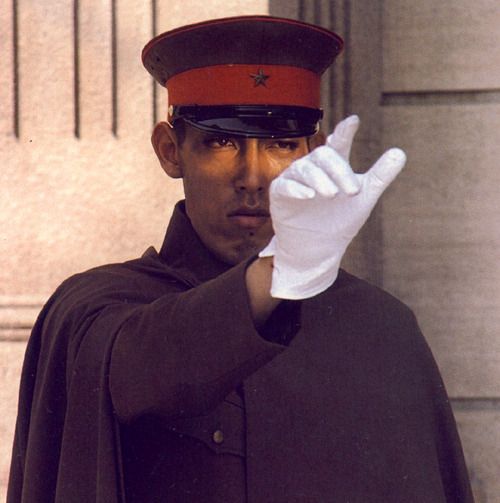
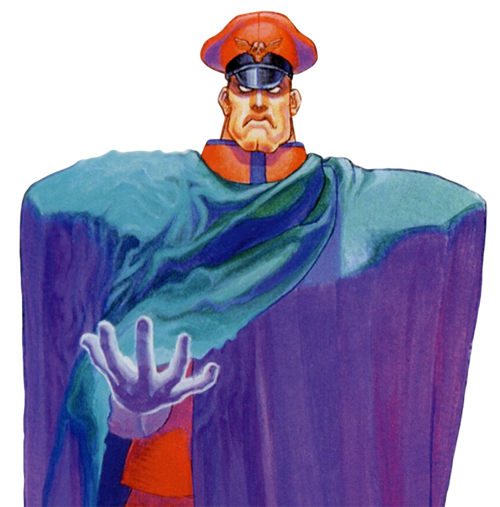
(On the left: Teito Monogatari's Yasunori Kato. On the right: Street Fighter's Vega/M. Bison)
Also on hand is Chun Li, who lends much more of an overtly Chinese flavor to the proceedings (albeit a fairly modernized one, fittingly enough) as well as a more classical “revenge for a slain loved one” storyline that is so indispensable to the martial arts/Wuxia genre.
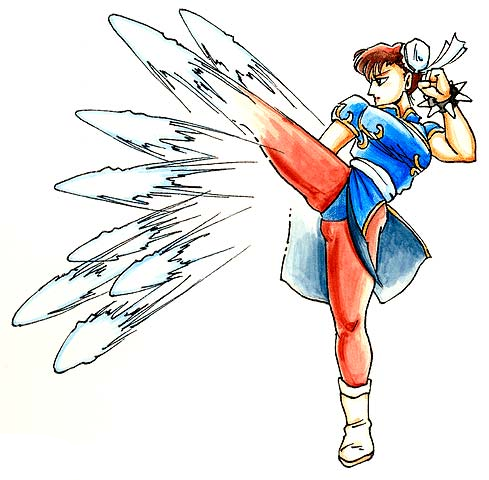
Also notable are the characters Sagat and and somewhat later on Gouki aka Akuma, a pair of dark analogues to Ryu (similar in many ways to the relationship between Yusuke and Toguro/Sensui in Yu Yu Hakusho) whose obsession with fighting and pushing their skills to their utmost breaking point takes on deeply twisted and corrupt perversions of the Xia's warrior code: though in Sagat's case, not without the possibility for redemption.
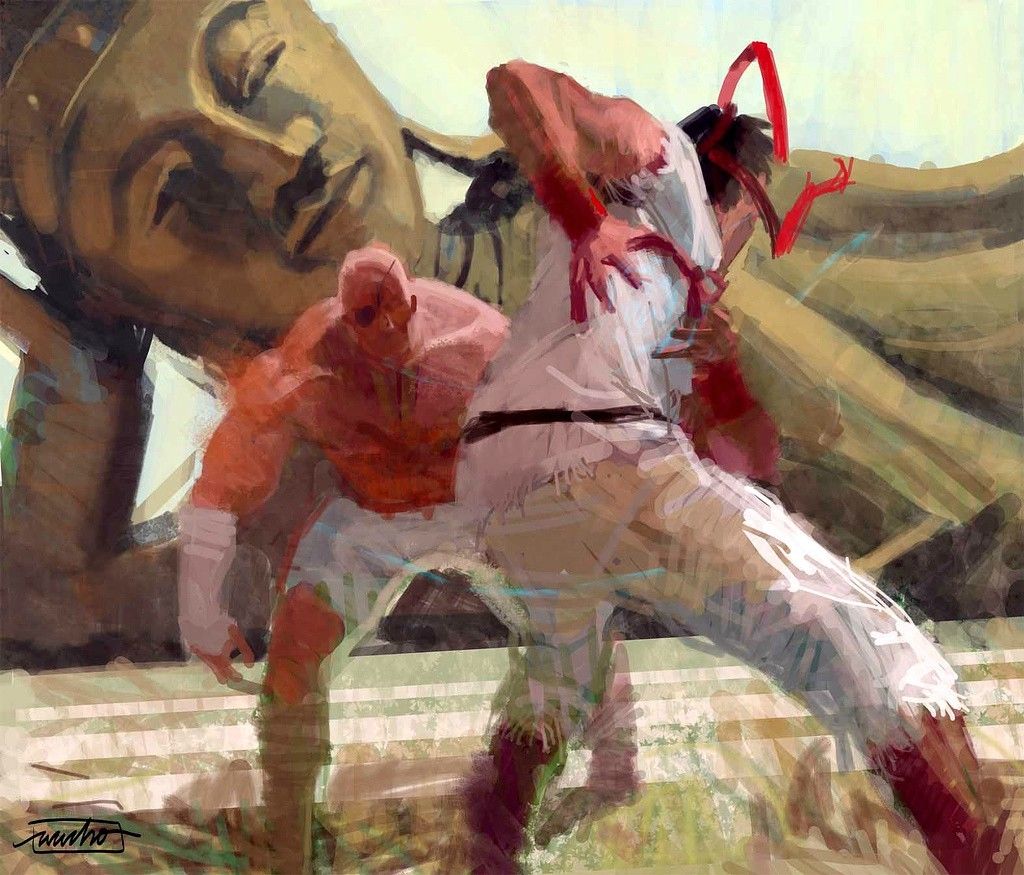
Sagat is driven into a mad fit of obsession over his (literally and figuratively) scarring loss to Ryu, which he perceives as unfair, and sells his soul and his ethics as a warrior to the service of Vega/Bison for the chance to even the score and avenge his crushing defeat (and always with deep pangs of regret for the trade off).
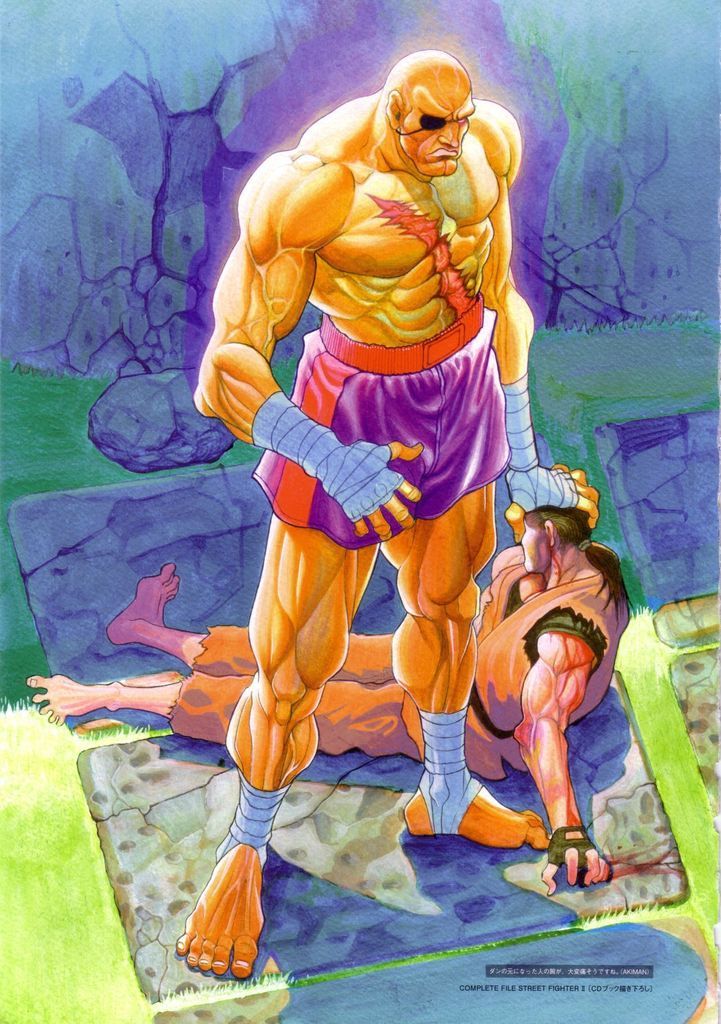
Gouki/Akuma meanwhile is the worst possible tragic outcome of a Youxia gone bad: the brother of Ryu and Ken's master Gouken lead astray into mastering corrupt techniques and martial arts teachings for the sake of fueling his own ego and lust for undisputed dominance in the martial arts world, Akuma like Bison sees in Ryu his incredible potential as a fighter and wishes for Ryu to go down the same dark path of mastery as he did under the belief that it is the only true way for Ryu to fully meet his potential and give him (Akuma) the only true challenge left to his skills as a demonic, twisted Youxia fighter.
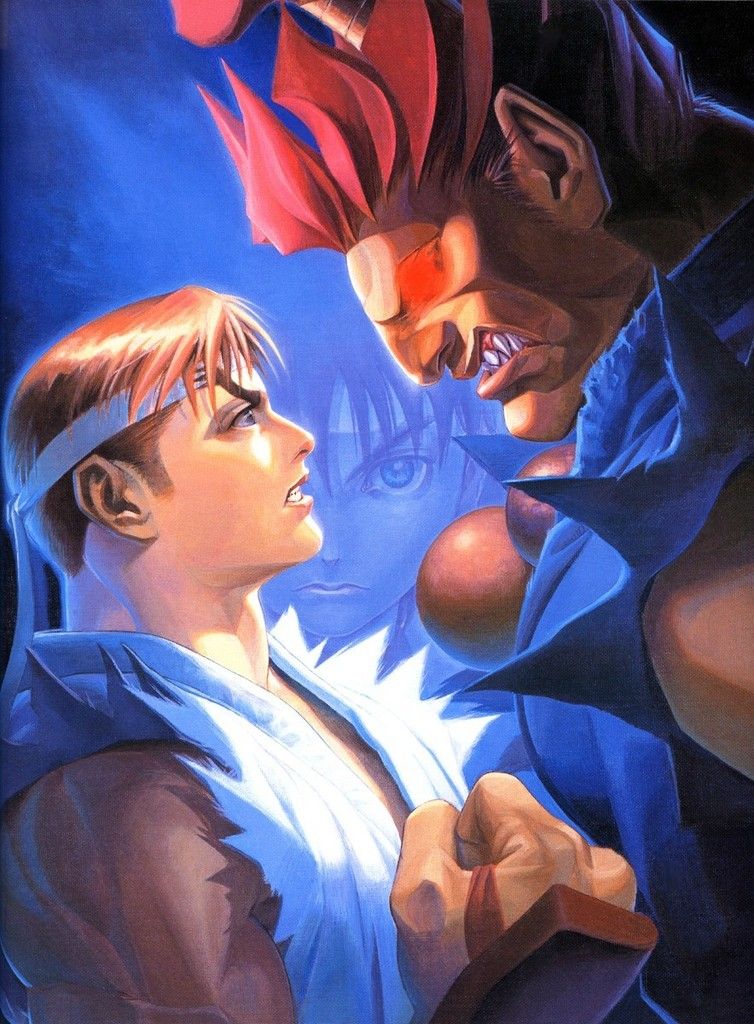
Part of what's long made Akuma so fascinating as a character is the fine line he generally walks between a semblance of warriors' ethics and outright martial arts villainy. Within the context of the modern day Wulin-esque martial arts world of Street Fighter, Akuma is absolutely unquestionably evil as his yearning to explore and push past his own limits is driven more by vanity and a ruthless need to dominate his challenges (as shown by his casual attitude towards killing and crippling his defeated foes) than by a more compassionate road of using his fights to help teach and train his defeated opponents as much as they teach and train himself.
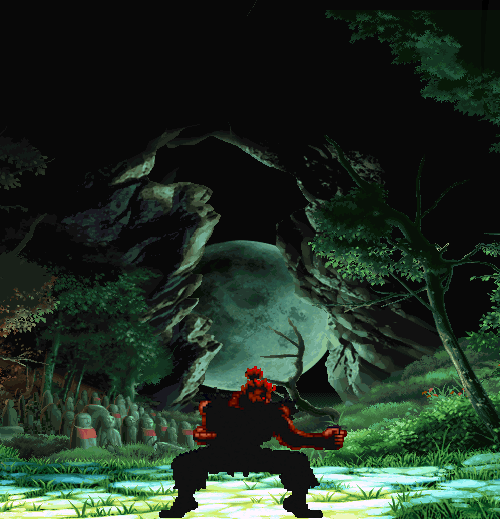

However, even with all that said, Akuma still abides by SOME semblance of Xia ethics, and will not use his skills and power to victimize completely innocent civilians who do not strive to be fighters at all (unlike Bison, whose corrupting power is a danger to all). Akuma's major flaw that makes him “evil” within the context of a Wuxia story is his total lack of compassion for fighters whose skill is beneath his own. In some stories he could be finagled to be seen as more of an anti-hero: in a martial arts narrative however, his attitude posits him unquestionably on the negative end of the spectrum, a fighter who has clearly lost his way and whose honor has been tainted by his own ego.
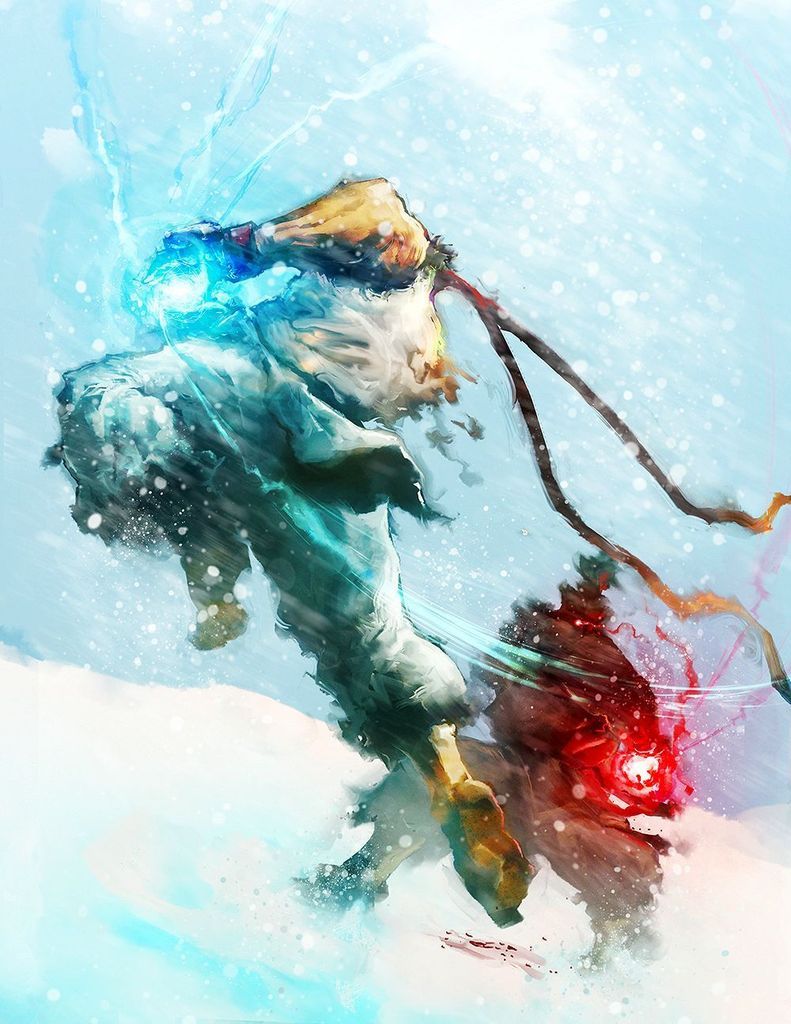
Much of the lore of Street Fighter is centered around the concept of Hadou, which is essentially the series' version of Kikou/Ki mastery, and its dark and light incarnations: essentially based off the real life Taoist concept of positive and negative energies in Ki (thus once again, Yin and Yang) with Satsui no Hadou (Surge of Murderous Intent aka Dark Hadou) being a tempting and corrupting influence on powerful fighters - particularly Ryu who spends much of the series struggling against the temptation of giving into Satsui no Hadou in the heat of combat - tapping deep into the energies of Hadou in order to use them to kill or otherwise horribly maim and cripple their opponent beyond the pale... once again tapping into the Wuxia theme of “excessive force is inherently evil and corrupting”.
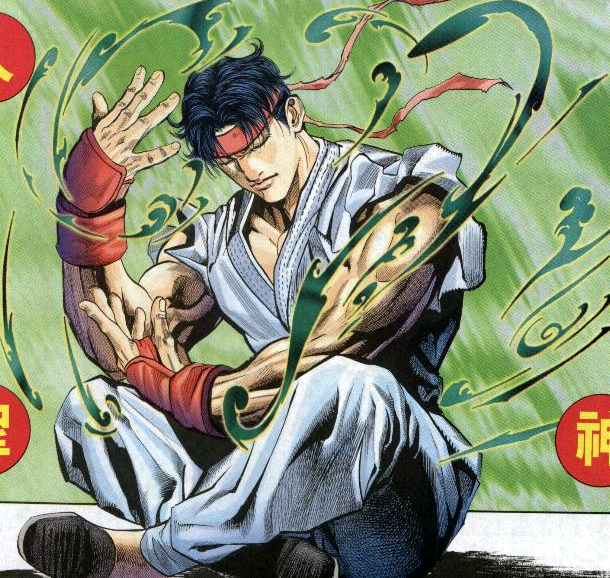
Also as with much of Wuxia during this time (late 80s/early 90s) across other media, Street Fighter would also add many elements of straight up science fiction into its martial arts storylines, first with Bison's futuristic crime syndicate Shadaloo, then his plans centering on the creation of his “psycho drive” (a massive doomsday device which can vastly increase his psychic powers and supernatural fighting abilities to godlike levels) and various cloned “dolls” (mindless, obedient female servants created in a lab and culled from his own DNA), and even further later on numerous other warriors who are as much government science experiments gone wrong as they are fighters' of Street Fighter's own little Wulin community (characters such as Twelve, Necro, and Seth).
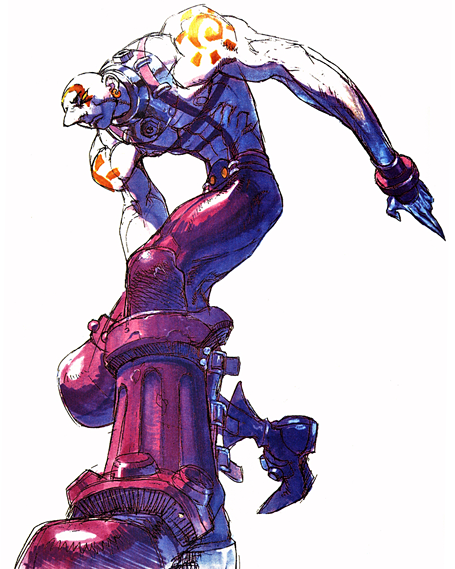

With its focus on martial arts rivalries and warring interpretations of ancient mystical martial arts teachings about powerful Ki mastery and battles raged against an oppressive dictatorial force by a loosely connected sect of powerful and far fringe Wulin martial arts masters, Street Fighter is indisputably a Wuxia tale brought once more to the modern world, as we've well established to be the running theme of the genre throughout the 80s and early 90s. And as with most Wuxia properties that took that track during that time, it paved the way to incredible success and immense, iconic popularity that endures even to this very day.
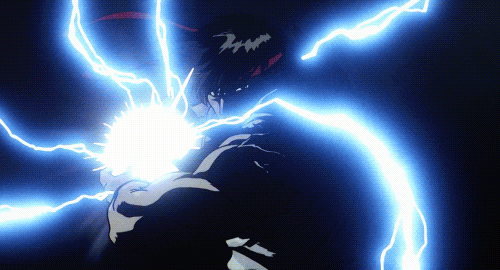
During its original heyday however, Street Fighter of course would spawn COUNTLESS imitators of its own within the video game world, thus kickstarting the 90s golden era of arcade fighting games. The vast overwhelming majority of these games likewise took their cues as much from various Chinese and Japanese martial arts and Wuxia fiction media, from movies to manhua, manga, anime, etc. as they did Street Fighter itself.
Without question the most successful of all of Street Fighter's fighting game/modern Wuxia progeny was SNK's King of Fighters universe.
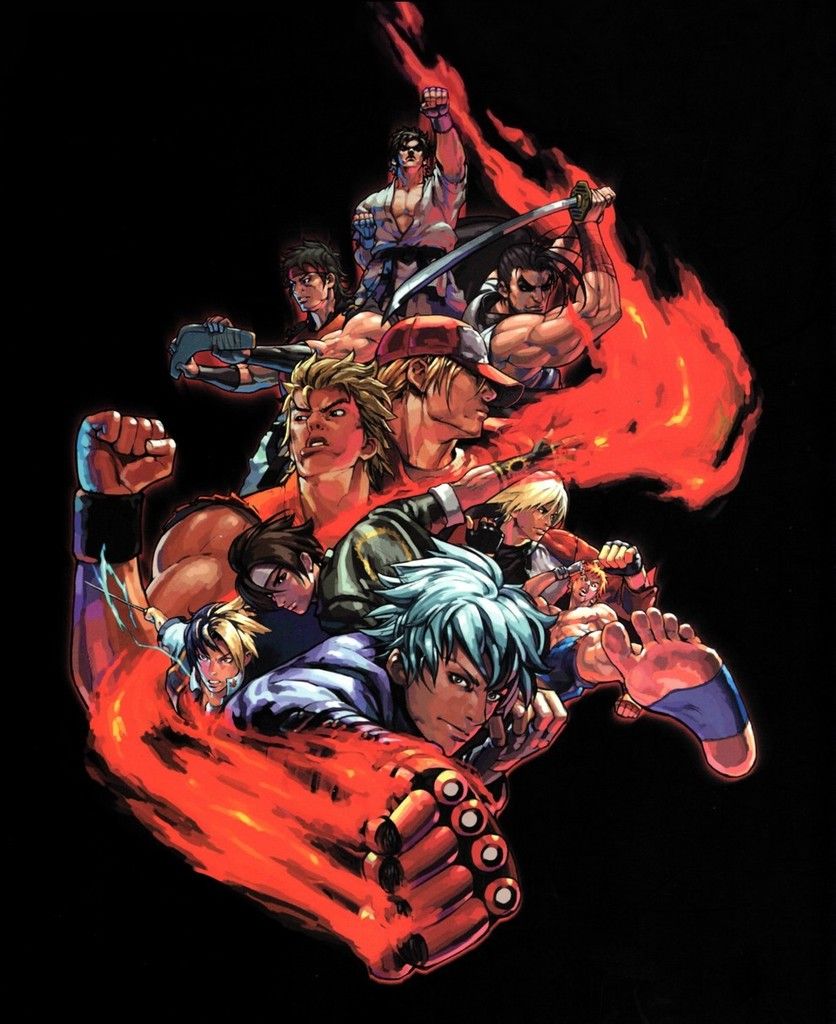
Beginning with the two fighting game franchises Fatal Fury and Art of Fighting, those two series would eventually cross over along with numerous other SNK video game properties to create the King of Fighters fighting game franchise.

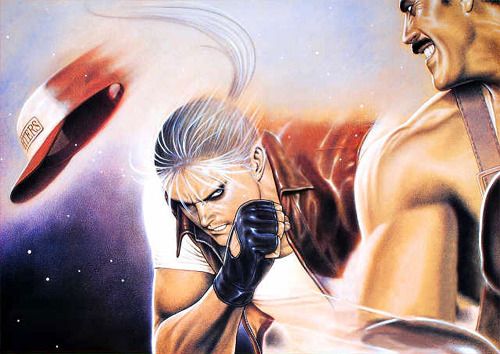
As with Street Fighter and the rest of Wuxia media during these years, the whole SNK universe of fighting games is a modernized take on numerous Wuxia storytelling tropes and character types retrofitted into a modern setting and often with futuristic elements mixed in for seasoning.
The main storyline for Fatal Fury, Art of Fighting, and King of Fighters as a whole centers around the fictional American city of South Town and the King of Fighters martial arts tournament that is annually held there by corrupt police commissioner and syndicate head Geese Howard, as well as the utterly massive international cast of superpowerful Wulin-like fighters that it attracts from around the globe, particularly the American brothers Terry and Andy Bogard and their close Japanese friend Joe Higashi: a very, VERY similar dynamic in fact to the Chinese brothers/half Russian best friend trio from Little Rascals/Oriental Heroes, and the gritty, hardboiled, crime ridden Chinese slums they inhabited not a million miles removed itself from the mean streets of South Town.
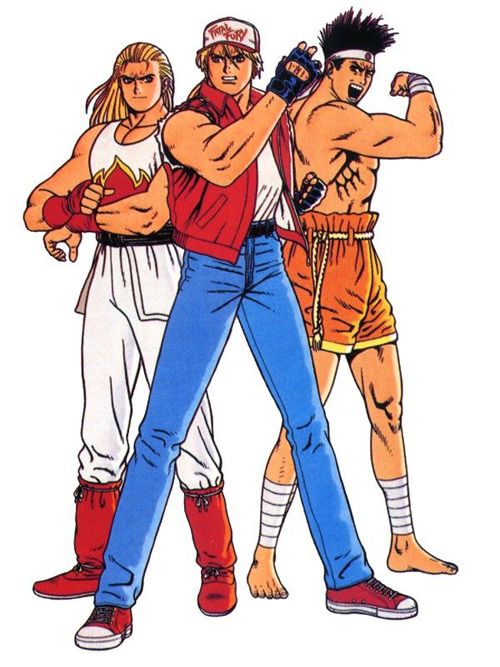
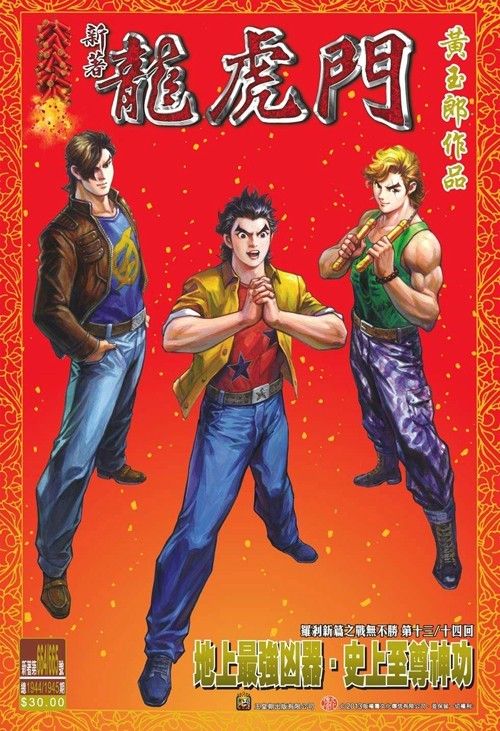
(Central characters Terry Bogard and Wang Xiao Hu even both share a similar “star” motif on most of their street clothing.)
Characters like Art of Fighting's father/son duo Takuma and Ryo Sakazaki are as much staple martial arts/grindhouse/Wuxia character types as they are “heavily inspired homages” (to put it charitably) of Street Fighter's Ryu and other Ansatsuken (Street Fighter's own assassin fighting style practiced by Ryu, Ken, Akuma, et al) characters.

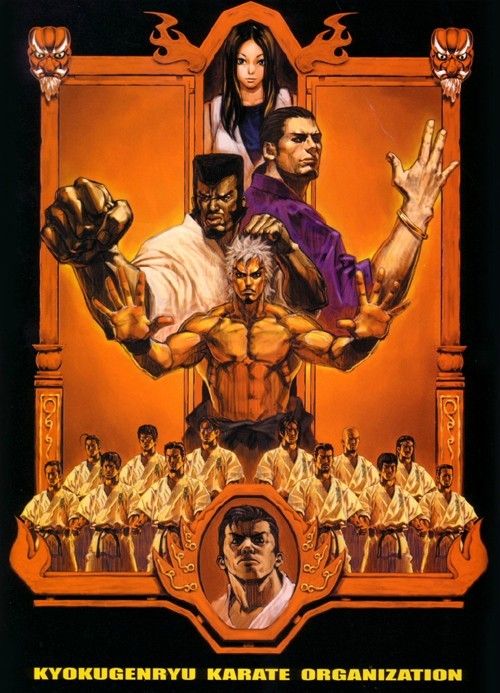
(You may possibly notice some mild similarities.)
Similar to Ryu's Mas Oyama parallels, the fighting style created by the Sakazaki family in the Art of Fighting/King of Fighters series, Kyokugenryu Karate, is also itself derived from Mas Oyama's real life Kyokushin Karate.
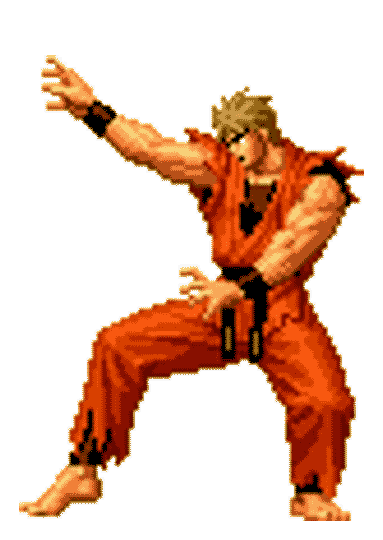
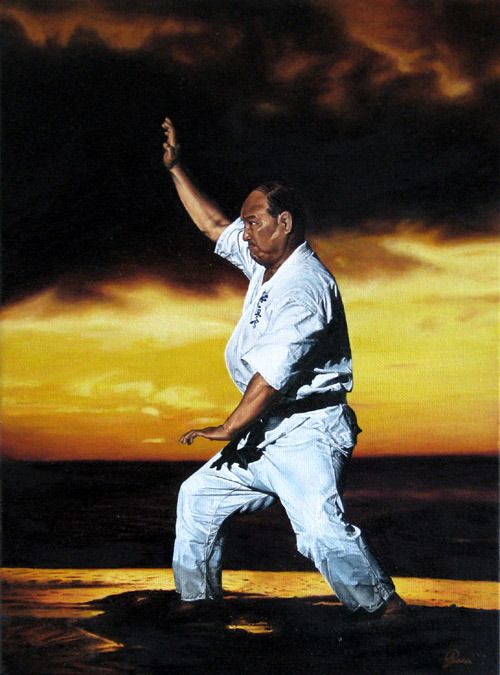
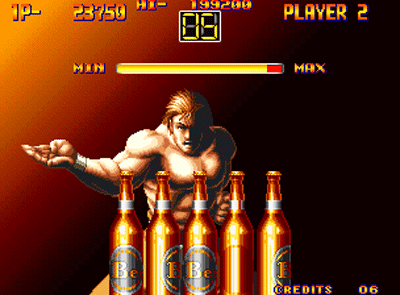
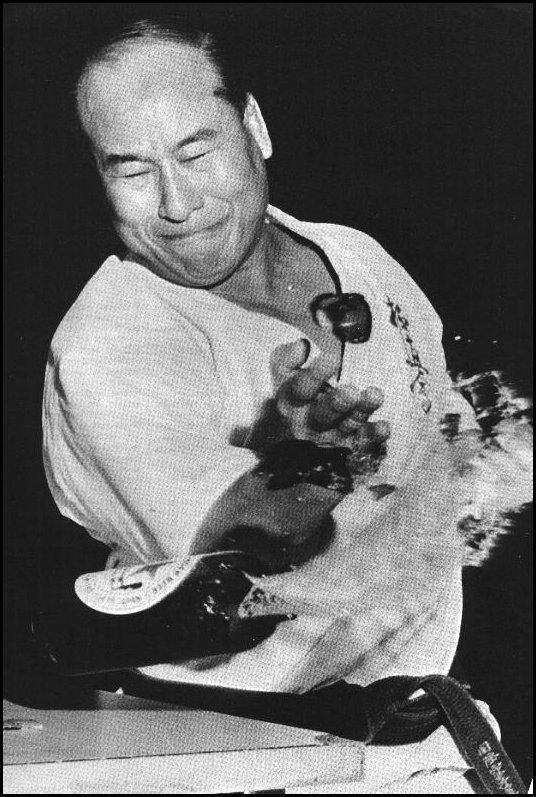
(Left: Ryo Sakazaki. Right: Mas Oyama.)
Ryo's father Takuma Sakazaki meanwhile is heavily inspired by Sonny Chiba's character Takuma Tsurugi from the (coincidentally named) “The Street Fighter” Japanese martial arts film series which was a massive and much beloved staple in American grindhouse theaters in the 70s and 80s. Chiba also studied martial arts under Mas Oyama in real life and played him in a number of films.

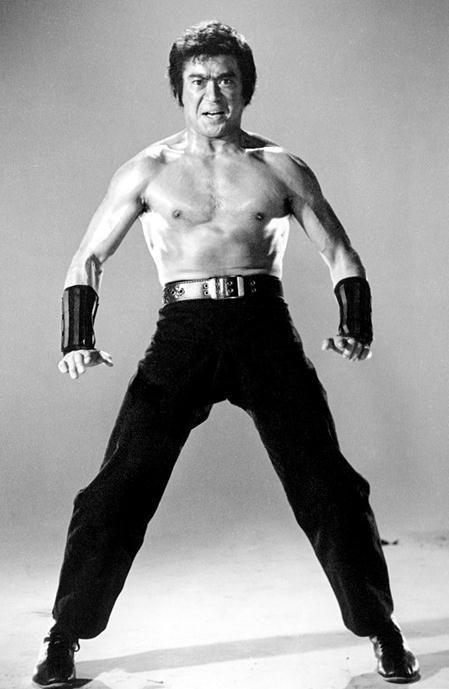
(A Tale of Two Takumas: Art of Fighting's Sakazaki on the left, Sonny Chiba's grindhouse icon Tsurugi on the right.)
Geese Howard also similarly owes his persona as much to stock crime villains from pulpy grindhouse films and 80s Hollywood action movies as he does from Wuxia, further blending the past with the present as was the martial arts fantasy genre tradition of the day.
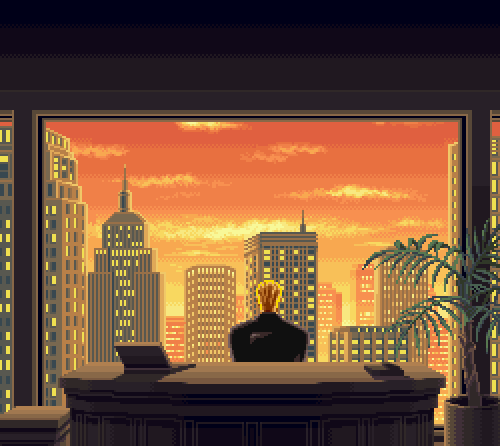
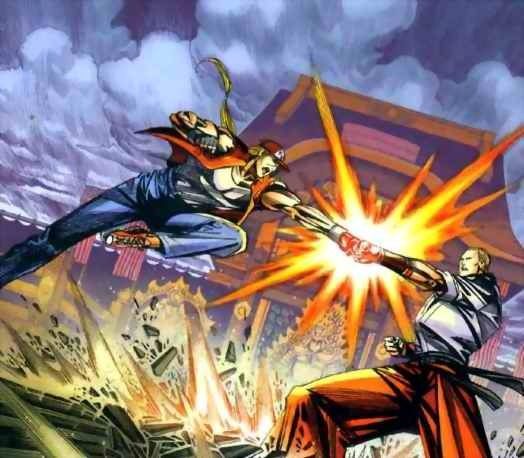
Similar to many comic and manga series, the later merged King of Fighters series would be broken up into several “story arcs”, with earlier arcs focusing more on traditional Wuxia mysticism (the “Orochi saga” which centers on the resurrection of a corrupt warrior deity and the ancient martial arts clans charged with ensuring he is never awoken) and later arcs venturing more into sci fi territory (the “NESTS saga” which focuses on a secret underground syndicate who intend to manipulate the King of Fighters tournament for their own corrupt ends).
Further cementing both the Street Fighter and King of Fighters' positions as pieces of early 90s Wuxia media was their Wuxia Manhua adaptations. Street Fighter would get one in 1992 barely a year into its arcade history by none other than legendary Chinese Wuxia Manhua publisher Jademan Comics.
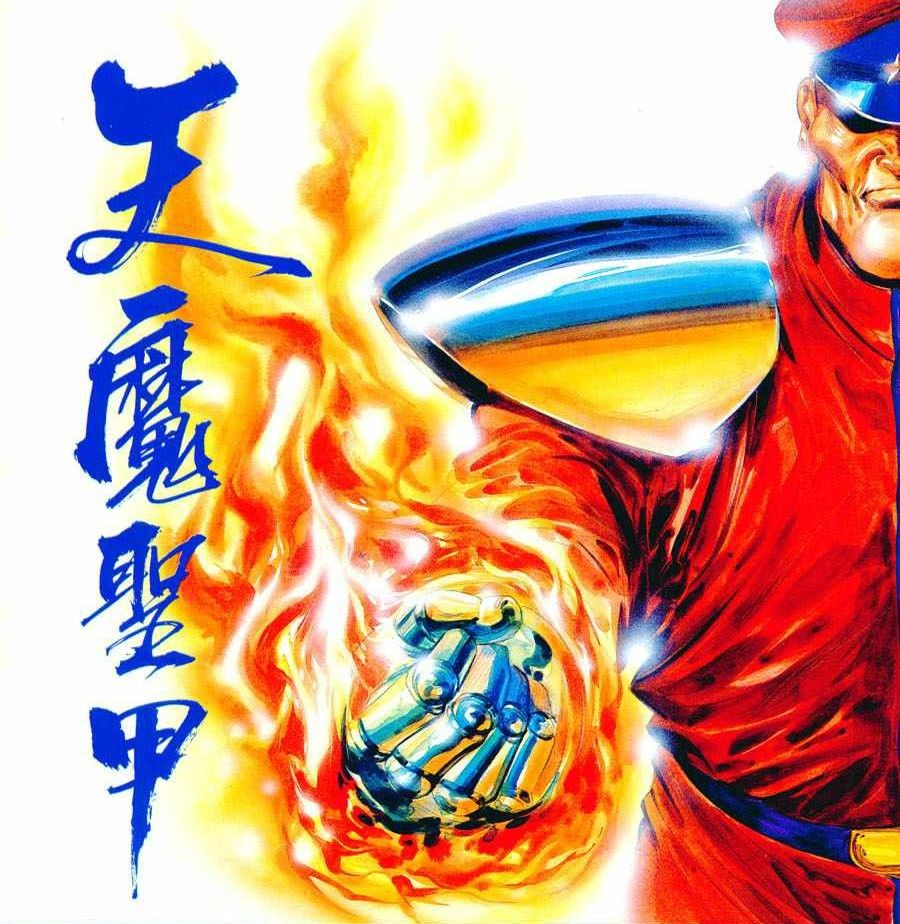
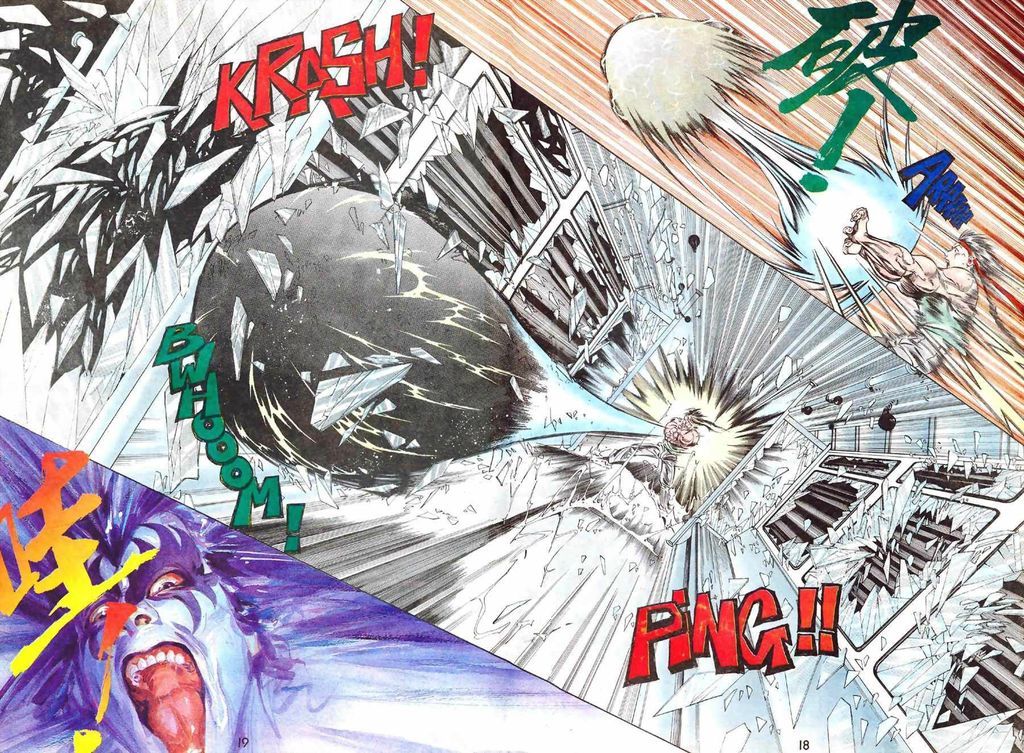
Written and drawn by Xu Jing Chen, the Street Fighter II manhua is gorgeously illustrated and as absolutely early 90s bonkers as genre-blended Wuxia of the era gets, with massive all out free for alls between the incredibly powerful Wulin warriors of the Street Fighter world amidst batshit science fiction subplots centering on evil clone dopplegangers and other such balls to the wall madness.
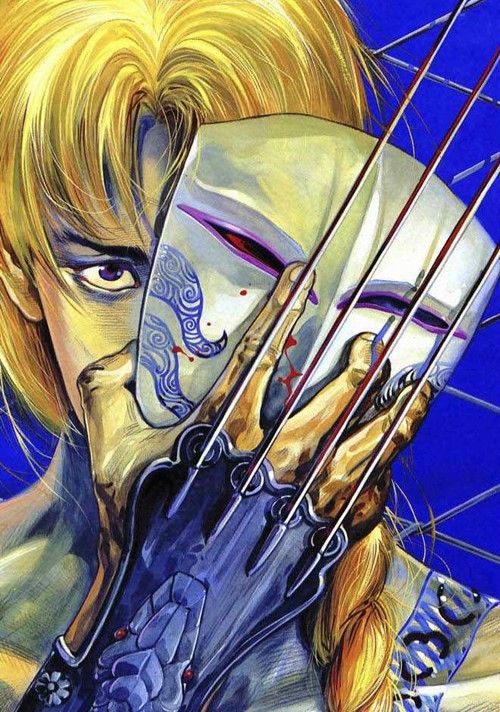
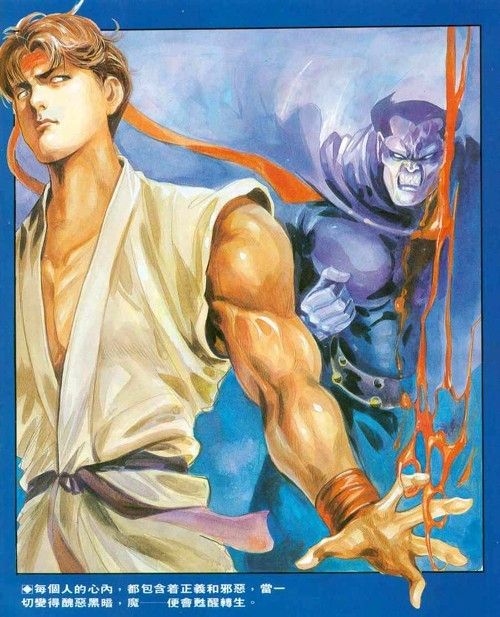
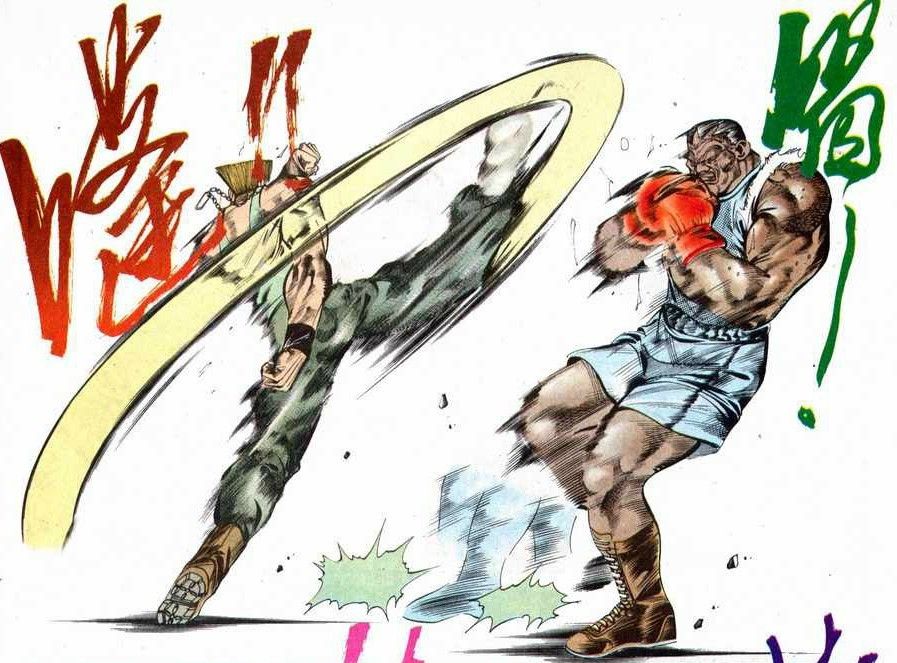
King of Fighters meanwhile would get a Wuxia manhua much later on in the 90s with Andy Seto's King of Fighters: Zillion followed by numerous sequel series which all ran up through the early to mid 2000s, including a few crossovers with Street Fighter.
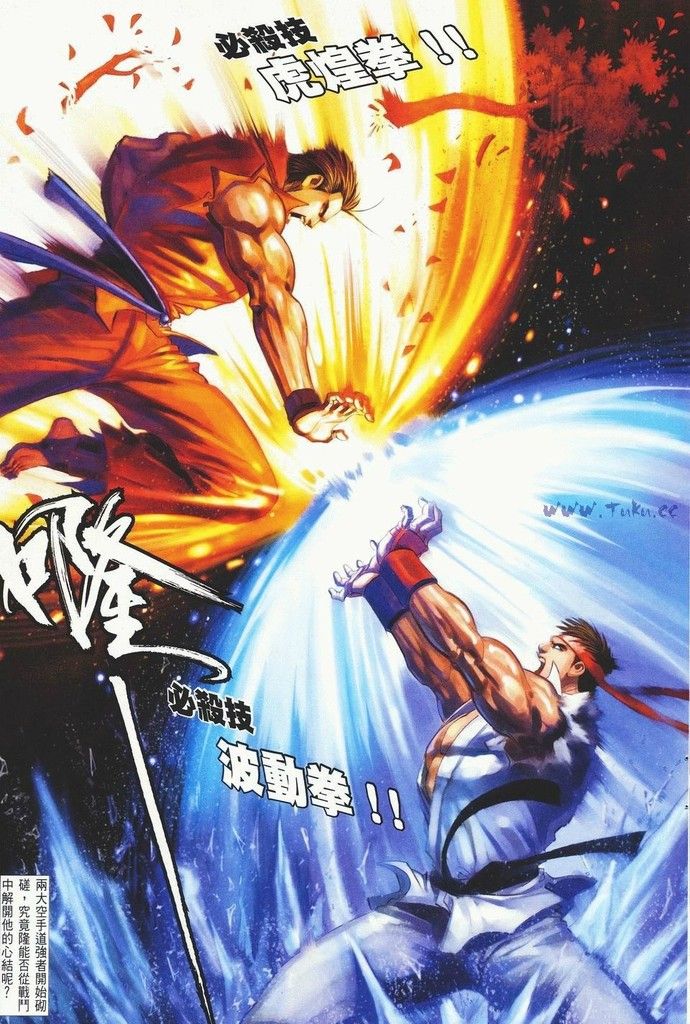
Its not at all an exaggeration to say that literally the entire 90s fighting game boom owes a LOT of its existence to Wuxia, particularly the hyper manic crazed genre-busting incarnation that the genre had taken across much of the 80s and early 90s. Very close to almost every major 2D arcade fighting game title released in that time period can be seen, to one extent or another, as essentially a completely off the wall outrageous Hong Kong Wuxia film or manhua in video game form.
By the end of the 80s and dawn of the 90s, Hong Kong cinema as a whole (and Wuxia along with it) had grown MASSIVELY in popularity all across the world. Including even North America. And this time it wouldn't just be the grindhouses and ghettos getting a taste for it (the grindhouse theater industry indeed was fading fast by the late 80s and would be gone entirely by the very early 90s, largely being made obsolete and replaced by the straight to video/VHS industry).
Spurred on largely by the output of John Woo and Tsui Hark, Hong Kong films - particularly Heroic Bloodshed (operatically melodramatic and excessively violent Chinese mob/Triad epics), drama, comedy, and martial arts/Wuxia films - absolutely EXPLODED amongst the so called “Generation X Grunge/Slacker” culture of the time.
Amongst the major Wuxia titles of the time, A Chinese Ghost Story, Hark's wild remake of the King Hu classic Dragon Gate Inn, and the Swordsman/Smiling Proud Wanderer films were particularly huge amongst teens and 20-somethings of the time, many of whom were also (as noted earlier) into and collected anime and manga as well. Due to the vast use of bootleg VHS tape trading used to gain access to both unlicensed anime as well as HK films, a tremendous degree of overlap formed between the two fandoms, intertwining them closely together for a good number of years throughout much of the 90s.
Particularly due to the prevalence of wacky, dementedly over the top Mo Lei Tau humor, a large number of HK action and Wuxia films were seen by many Western fans at the time as essentially live action anime. Coupled with the popularity of similarly themed 2D fighting games and this also fueled into the popularity of titles like Dragon Ball, Yu Yu Hakusho, Hokuto no Ken, and Ranma ½ at the time.
Being Shonen titles aimed at a much younger audience in their native Japan, they tended to glaringly stick out amongst a largely Seinen/Gekiga dominated Western anime and manga landscape (well, maybe less so Hokuto no Ken) of the late 80s/early 90s that otherwise routinely ignored and cared very little for a great deal of Shonen. But the numerous similarities with over-exaggerated and manic energy violent/comedic Hong Kong martial arts/Wuxia films won them a fairly sizable fanbase amongst an older audience who were also plugged into the weird genre-bending sensibilities of the then-still thriving and ubiquitously popular Hong Kong New Wave.

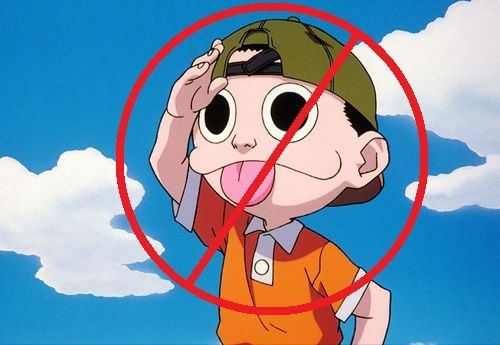

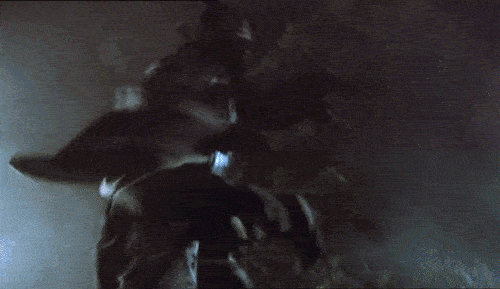
(A very large chunk of late 80s/early 90s Western anime & manga fandom gravitated to the medium on the strength of envelope pushing strictly adult-aimed Seinen titles with a heavy Gekiga visual bent to them, and were typically unmoved by and disinterested in most child-friendly Shonen due to them being seen as largely redundant to a culture that already has long had more than its share of child-aimed animated works for countless years. Certain titles like Ranma, YYH, and DBZ however slipped their way between the cracks of this distinction due to their overt similarities with manically bizarre Hong Kong Wuxia/supernatural martial arts films that were also popular at the time.)
At the same time, while the number of officially licensed Hong Kong films and Japanese anime & manga continued to grow along with bootleg trading of many others that were yet to be licensed, popular Hong Kong Wuxia Manhua publisher Jademan Comics would dive into this growing new North American market during the late 80s and early 90s with officially translated and licensed reprints of many of their own classic Wuxia Manhua, including Ma Wing Shing's seminal Chinese Hero series (published here under the titles of Tales of the Blood Sword and Blood Sword Dynasty), Oriental Heroes, and numerous others, thus further stoking the popularity and visibility of Wuxia among fans at the time.

(An official North American Jademan printing of the 5th chapter of the Wuxia manhua Iron Marshal by Lee Chi Ching, cover dated November 1990.)
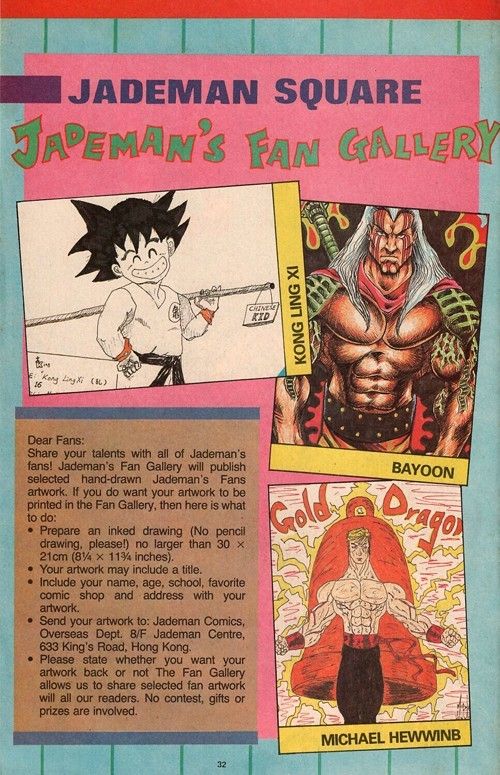
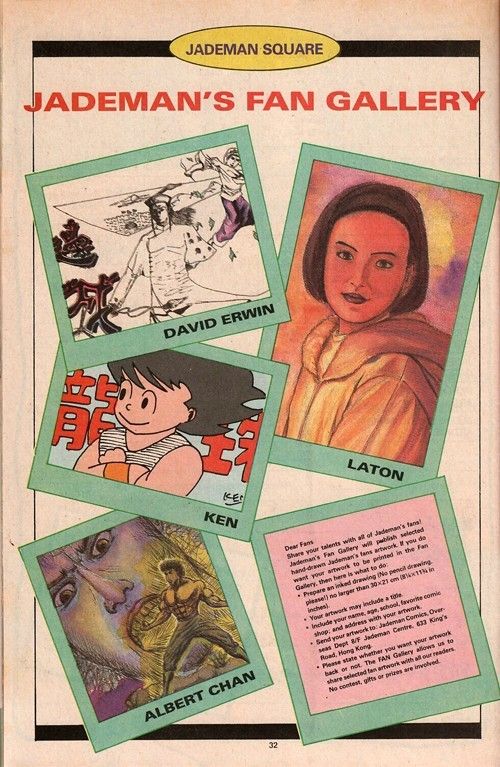
(Some American Jademan issues, as with their Chinese counterparts, also had a section in the back for submitted fan art. You may recognize a certain distinctively hair-styled monkey boy who made frequent appearances in these.)
It cannot possibly be overstated what a VASTLY diametrically different world the Western anime/manga landscape and fandom was in the early-most 90s. While there were definitely still some awkward, super dorky types that one would view as traditionally Otaku, there was also a massive number of flannel and Doc Marten-clad stoners and skater punks that were likewise a huge part of the fanbase as well back then. Their range of interests tended to be a LOT broader than just solely anime and manga, which included all kinds of supremely strange and envelope pushing underground comics and foreign movies... like movies where Chi wielding ancient kung fu mystics go toe to toe with time hopping alien cyborgs from Mars, or what have you.
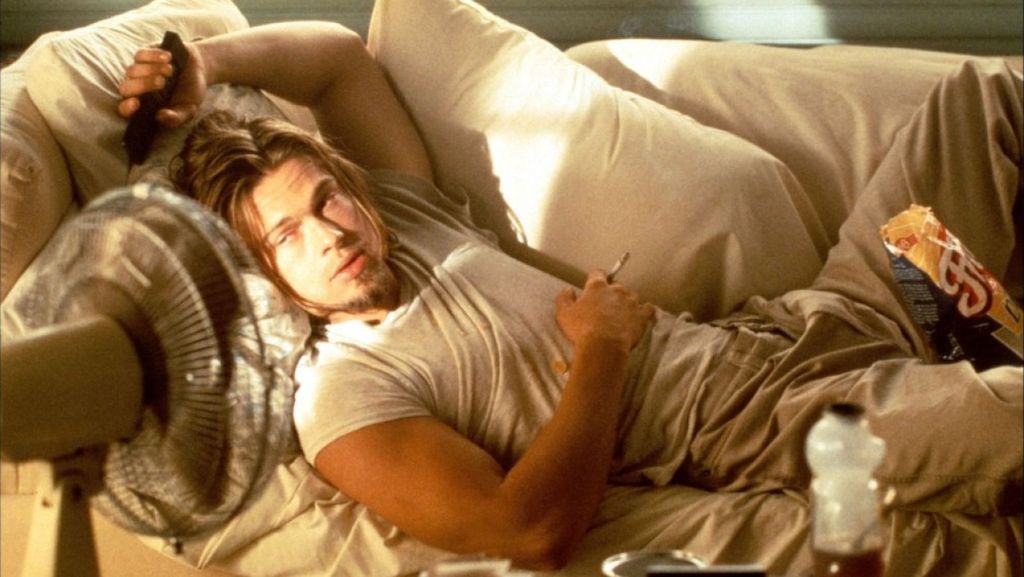
(Portrait of a typical early 90s American Wuxia/anime fan. As represented here by Floyd from True Romance for... reasons.)
This particular cultural stew of cynical, disaffected punk rock teens latching onto hyper violent martial arts films and whimsical Chinese mysticism along with 2D arcade fighting games with similar themes and motifs spurred on yet another massive and iconic early 90s cultural touchstone amongst the youth of the time, one that was not only made for but also made by EXACTLY the sort of Nirvana-era freaks and weirdos mentioned above.
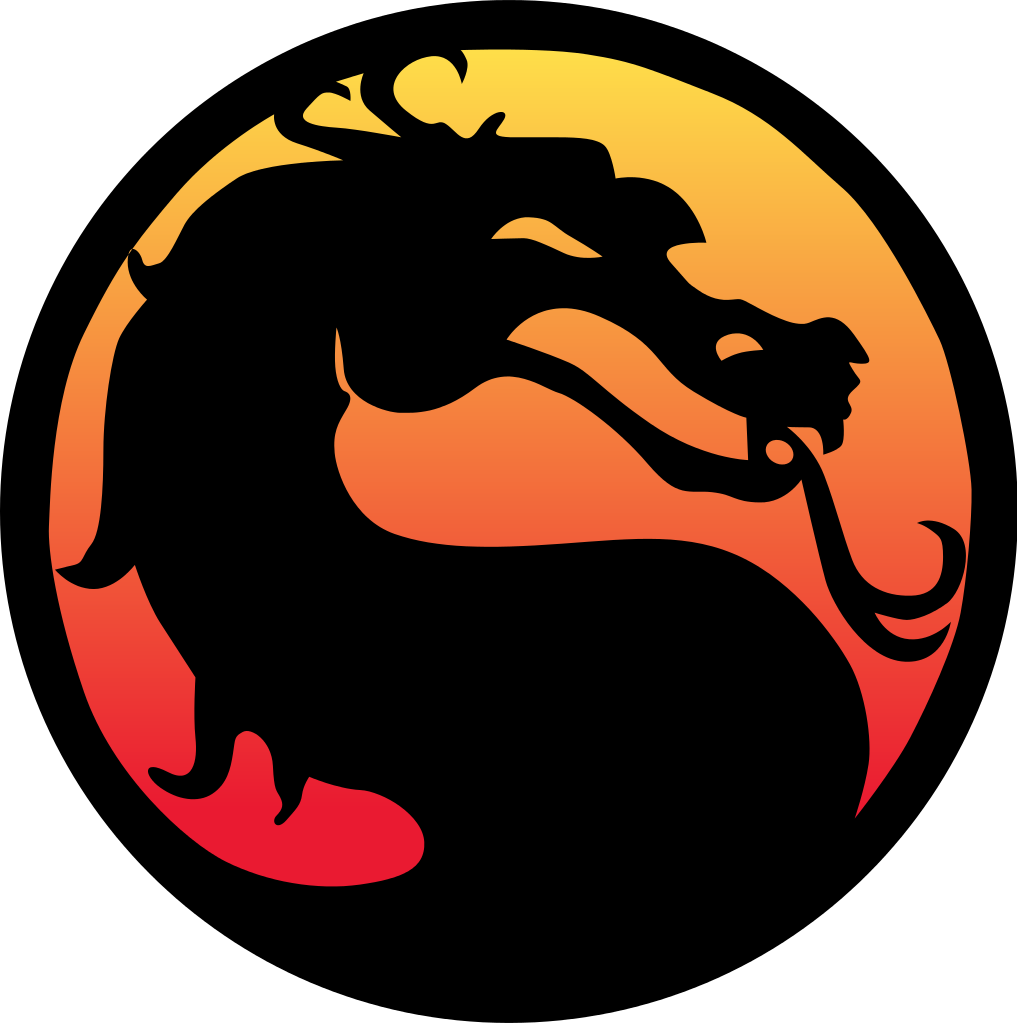
”Test Your Might”
Oh yeah.
Mortal Kombat is the utmost essence of early 90s American Wuxia fandom personified as an arcade fighting game. Created by Ed Boon and John Tobias, who back then were still fresh into their early 20s, where Street Fighter was a 2D fighting arcade game embodiment of the off its meds bugfuck insanity that Wuxia had become at the time made by Japanese people who were a great deal closer in cultural proximity to its root source, Mortal Kombat was very much the same, except made by a couple of over-enthusiastic Chicago natives who were VASTLY further removed from the cultural origin point and who had, like most of us American fans at the time, largely absorbed all this magical kung fu wackiness through shitty degraded VHS tapes with horrendously mangled subtitles or dubbing; side by side along with countless other gore and viscera splattered 80s horror and action movies.
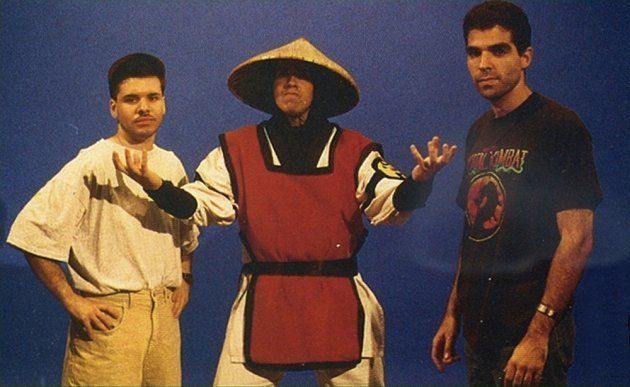
(Left: John Tobias. Right: Ed Boon. Center: Carlos Pesina, the martial artist who modeled for Raiden's digitized sprite in the first two MK games.)
On the artistic/lore/creative end of things, the VAST majority of the credit for MK turning out the way it did really goes to John Tobias, who was also a damned talented comic book illustrator as well. Drawing from an incredibly broad range of global influences, Tobias has made very little secret of Mortal Kombat's Wuxia origins, citing numerous films of the time as major influences on the end product.
The two most obvious ones right off the bat are Enter the Dragon and Big Trouble in Little China. Chinese sorcerer antagonist Shang Tsung is clearly in many ways a dead ringer for Big Trouble's Lo Pan (both cursed Chinese mystics trying to appease angered deities), while Raiden's character design is famously copied and pasted from Lo Pan's “Three Storms” minions.
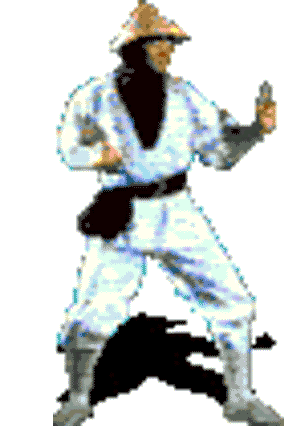
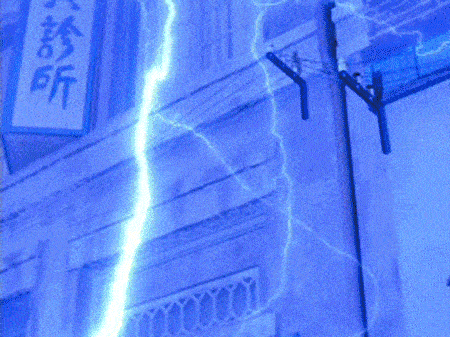
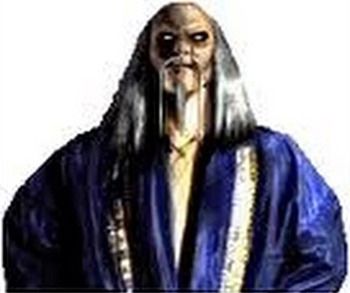

Enter the Dragon feeds into it via the first MK's plot of a Shaolin martial arts tournament held on a small, private island hosted and owned by the main villain who has taken over and corrupted the tournament for his own ends, with a Bruce Lee lookalike (Liu Kang) as the main Shaolin hero who enters in order to take the tournament back from the villain and restore its honor on behalf of his temple.
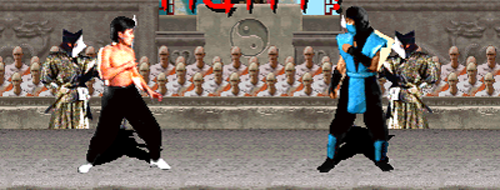
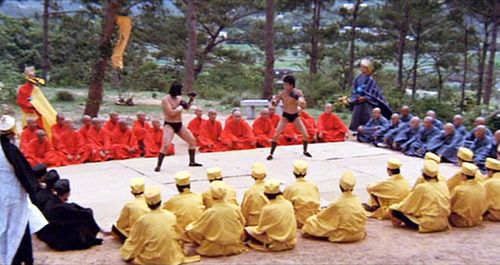
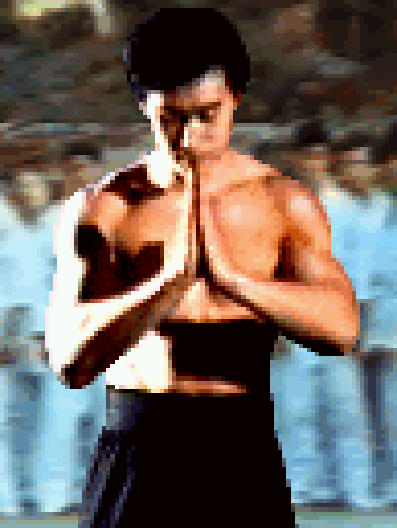
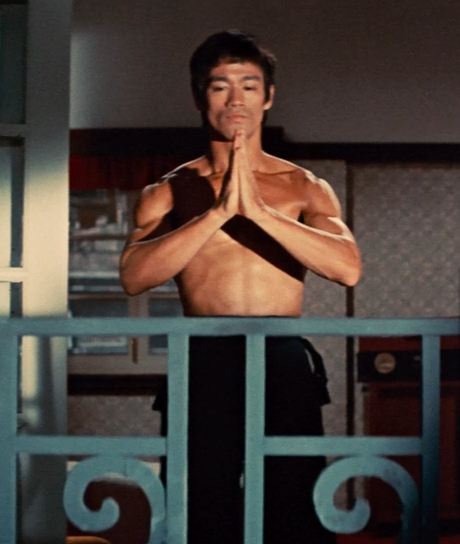
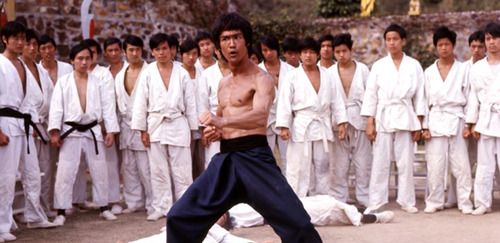
Also playing into it is the 80s Van Damme film Blood Sport, with the tournament there being a “to the death” gore soaked bloodbath where fighters are routinely and graphically maimed and killed in each match, along with the MK character Johnny Cage being a dead ringer for Van Damme's Frank Dux in both his costume and various fighting moves, particularly the famous “split punch”.
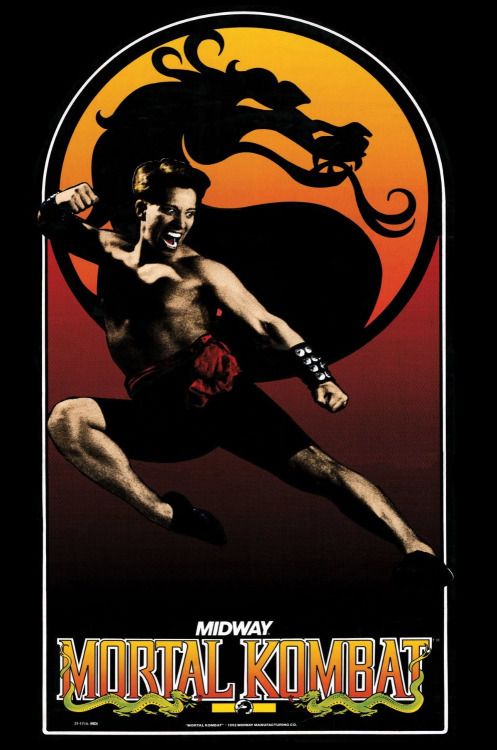

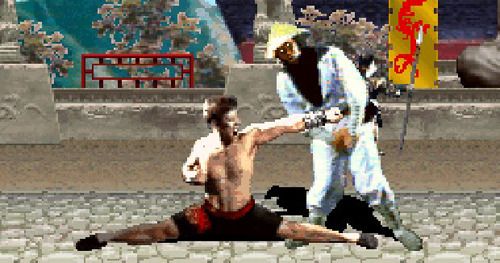
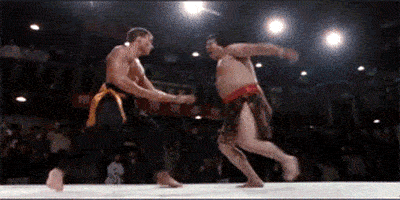
Sonya Blade is also heavily influenced by Cynthia Rothrock, one of the most popular female martial arts action stars of the 80s and early 90s who also starred in a number of Hong Kong martial arts films.
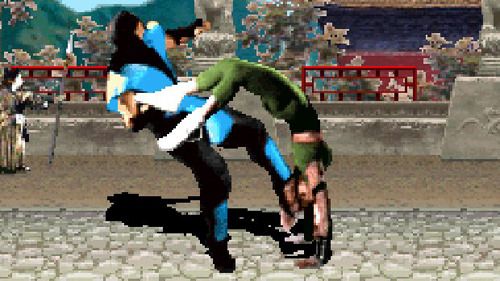

But beyond all that is the ever presence of Wuxia as a whole. Tobias has talked a lot before in interviews about the Wuxia films of Tsui Hark being major influences, and this particularly shows with many of the MKII/Outworld backgrounds which have a very decidedly Zu Warriors-esque flavor to them.
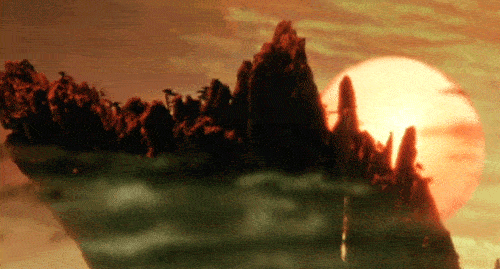
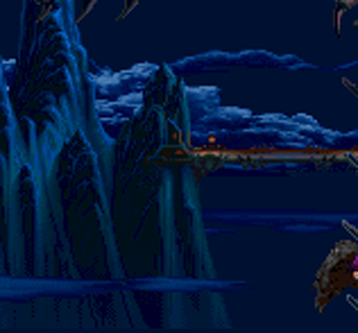
Ki/Chi attacks and various superhuman martial arts techniques are of course also practically mandatory for each character,
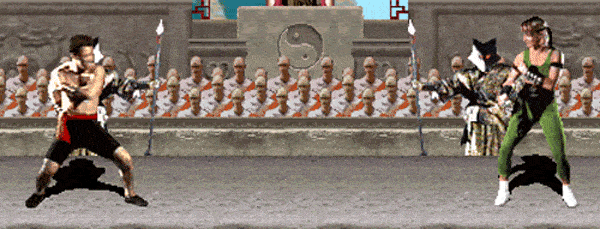
and the entire lore of MK is centered around a series of mystical martial arts tournaments created by deities from Asian religious lore which gives the best martial artists from all over the world a chance to stop hideous demonic creatures from another dimension, including their warlord despot leader, from overrunning our world.

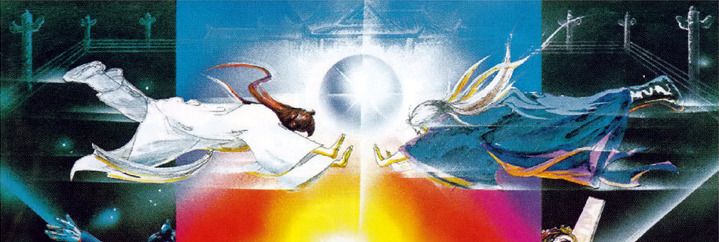
Even the later entries in the series, as they added ever more sci fi and futuristic flourishes (like cyborg ninjas and a post-apocalyptic urban landscape... and its not like Wuxia was any stranger to either of those things well by that point either), would still hang onto the franchise's core Wuxia roots with many newer characters still drawing from popular early 90s New Wave HK Wuxia films.
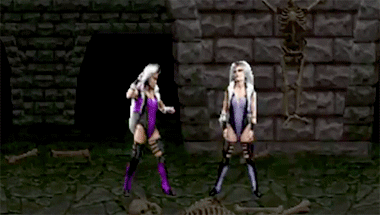
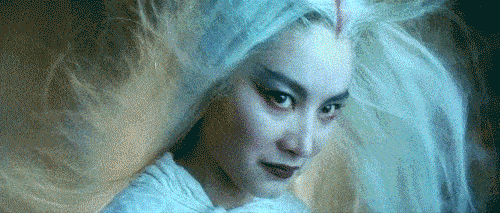
(Mortal Kombat 3's Sindel is largely inspired in her look and fighting techniques by Brigitte Lin's portrayal of Lian Nichang in the classic 1993 Wuxia film The Bride With White Hair, which itself is loosely based on the 1958 Wuxia novel Baifa Monu Zhuan. Lian Nichang has always been a MASSIVELY popular Wuxia character whose unique hair-based fighting techniques have long inspired a great many comic book, manga, and anime characters.)
By the mid-point of the 90s, Wuxia as a whole had achieved a staggering level of widespread popularity, visibility, and recognition on a mass global level it had never achieved in much of its storied long history beforehand. The Japanese were positively devouring it, as were Koreans, Europeans, and even us North Americans.
Not only was the genre spreading its influence across cultural lines like a virus, it had also attained a sort of mystique of “rebellious hipness” among younger people, particularly in its native China due both to the tradition-shirking genre-melding of the post-New Wave stuff as well as the overall themes of the Wulin community as an outsider counter-culture who stand for the power of individual accomplishment over the power of the collective: themes that a Hong Kong still free of its mainland's Communist ideals (for however few remaining dwindling years) was celebrating especially now like never before as the “doomsday clock” countdown to the '97 handover continued unabated.
While that level of deep cultural resonance certainly didn't quite carry over to us clueless Americans, nonetheless a fair deal of the “cool cred” of the New Wave era of Wuxia had managed to rub off on a lot of Western geeks, and the genre (like most of the rest of Hong Kong cinema, and Japanese anime and manga and various underground comics and cult movies, etc.) embedded itself into the early 90s/Gen X grunge American youth culture in its own way.
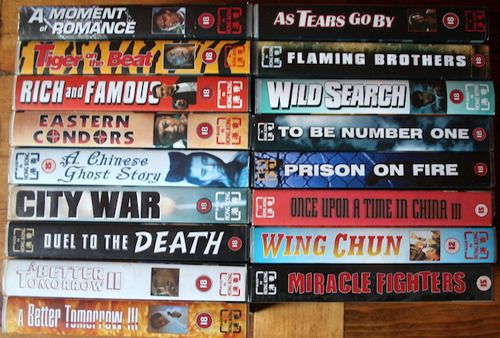
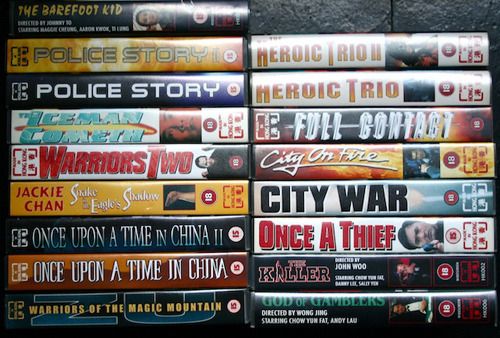
(If you were a hardcore nerd in the early 90s, chances were you had more than a few of these sitting side by side with your anime tapes.)
And for those more globally/culturally “in the know” about what was going on abroad, the entire Hong Kong cinema landscape of those years was also a fascinating window into what was at once a wild, beautifully surreal and yet poignantly touching and wistful moment in time of a culture basically saying a tearful goodbye to a great deal of creative and artistic freedoms that had defined it for generations, and expressing it (in part at least) with the cinematic equivalent of one great big goofy “bucket list” of crazy, stupid shit to do all at once up on screen.
I suppose if your days are (in this case quite literally) numbered, you're gonna go out and you already know it well in advance, this was the way to do it properly: with a gun in each hand blazing, just like Hong Kong's own Chow Yun-Fat.
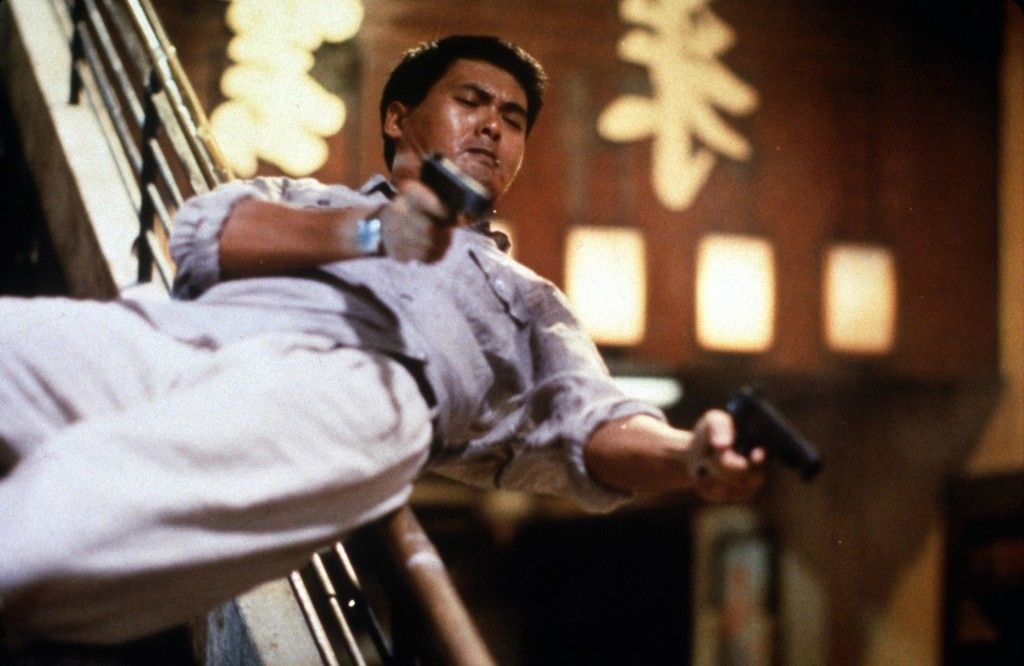
(“Give the guy a gun and he's Superman, give him two and he's God!”)
My apologies, but I think its written into law somewhere that you can't write this much about classic 80s/90s batshit pre-Handover Hong Kong cinema without at some point referencing Hard Boiled at least once.
Believe it or not though, I still to this day actually have no idea what Japan's excuse was for diving as deep into all this contemporary/genre schizo Wuxia stuff as they did during that period: god only knows why they glom onto even half the shit that they glom onto in general. Giant Ki blasts and tattered martial arts dogi were just an “in” thing during those years I suppose. I'm obviously glad they did though: where would we all be without Street Fighter? Plus y'know, we also wouldn't exactly have had another particular manga/anime series that this whole community is singularly dedicated to obsessing over.
I digress. While Wuxia was more ubiquitous and popular than ever by the mid 90s, it was also - on a surface level at least - all but unrecognizable from its more traditional portrayals in decades past. Other foreign genre influences had thoroughly invaded it from every possible angle: creators had the Wulin community of ancient kung fu legends travel to the modern present, to far off sci fi futures, had them fight zombies, robots, cyborgs, space aliens, genetic clones and science experiments... and it was only getting more out of control and more batshit wacky with each passing year.
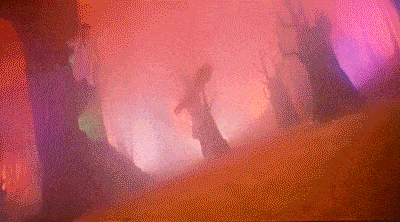
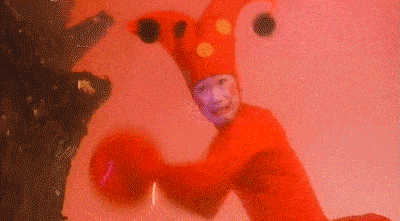
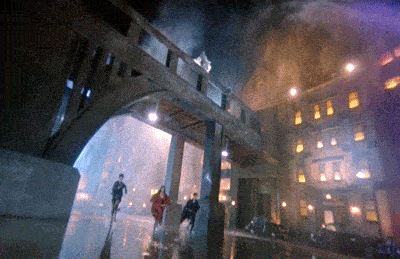


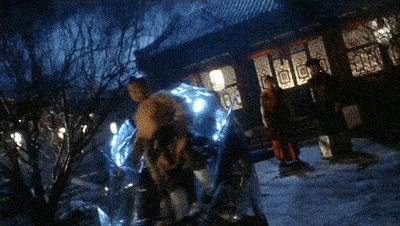
(The early 90s ladies and gentlemen.)
What started out as an incredibly refreshing new take on a cobwebbed ancient genre that was at one point in danger of growing somewhat stale had ballooned and spun wildly out of hand into a fad that some would argue (depending on what kind of Wuxia fan you ask) had well overstayed its welcome and hijacked and overtaken the Wuxia genre well past the point of reason.
At the rate that things were going in the early half of the 90s and as the ever-looming Handover whipped up Hong Kong culture into an increasingly nerve-wracked frenzy, sooner or later the genre itself was bound to cave in on itself under the continually crushing weight of all this complete and total madcap insanity.
Wuxia in Modern Media Section VI: The Breaking Point and the Swinging of the Pendulum (1993 - 2006)
As much as the early 90s was defined by Wuxia finding more and more new ways to modernize and reinvent itself with different genre influences, it wasn't ALL absurdist horror/sci fi bonkers nonsense. Other, vastly more cerebral and abstract ideas were also tried in an attempt to grow and subvert the genre in extensively creative ways.
In 1993, a decade after the original Zu Warriors and still well within the white hot heights of the HK New Wave era's creative output and popularity, the style's own godfather (for Wuxia anyway) Tsui Hark would put out one of his most singularly ambitious, challenging, and thematically rich Wuxia films of his entire career: Green Snake.

The film is based on the ancient Chinese myth of the Madame White Snake, which is one of the single most oldest Wuxia legends in the genre's entire history (pre-dating written works altogether and originally being passed on orally) and has thus accumulated enough adaptations in enough varieties of media (including fuck knows how many Peking Opera/stage productions) over the years to rival Wuxia standards like Journey to the West and Romance of the Three Kingdoms.
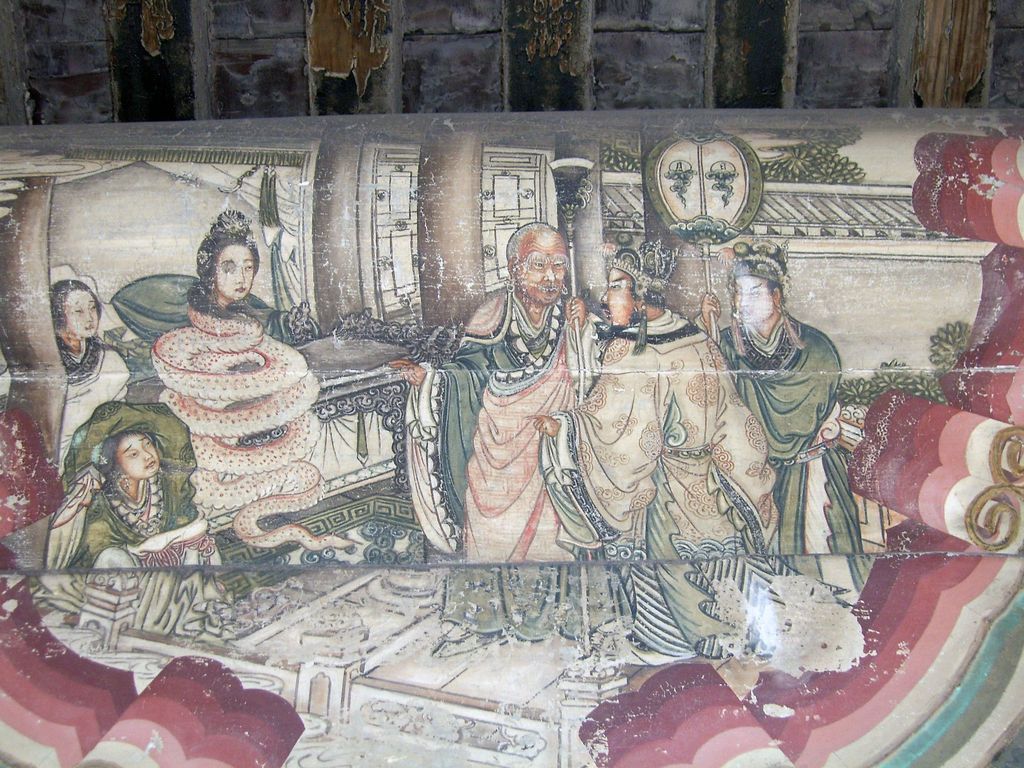
(A 12th century mural depicting a scene from the legend of Madame White Snake.)
In the original legend, a powerful White Snake Demon who has spent many years training in magical Taoist martial arts in order to attain the long lasting life of a Xian lucks into attaining 500 years worth of training within a single day thanks to an unwitting and unseen series of accidents involving an ordinary young boy named Xu Xian and a handful of enchanted immortality pills he had mistaken for rice balls (long story in itself).
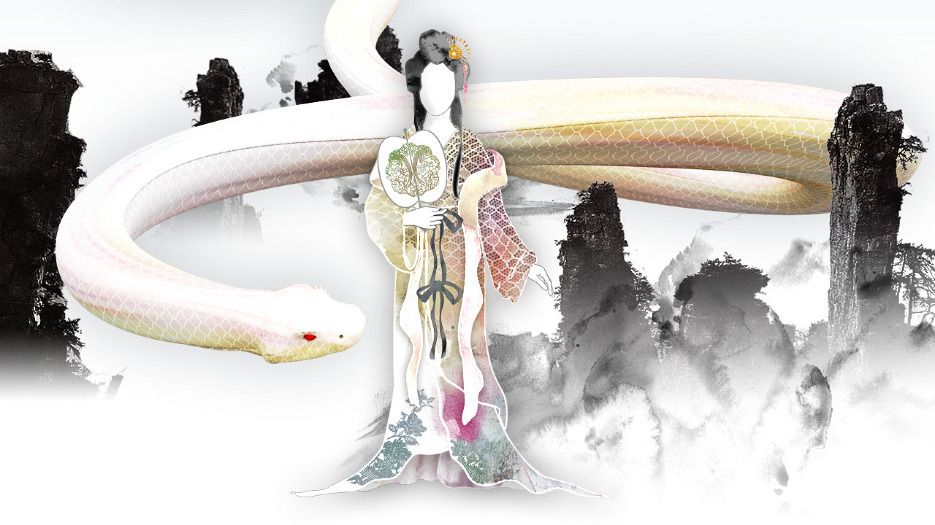
Now vastly more powerful and able to transform herself into a beautiful human female form, the White Snake Demon comes to the rescue of a wounded Green Snake Demon, who in sheer gratitude comes to look up to the White Snake Demon as an older sister and begins to train under her. Many years later, the two Snake Sisters are now both able to take on the appearance of beautiful human maidens and travel Jianghu together under the human names of Bai Suzhen (the White Snake) and Xiaoqing (the Green Snake). One day while the two attend a spring festival, Bai Suzhen once more crosses paths with a now fully grown Xu Xian (who has become a scholar), and the two fall in love and get married (with Xu Xian completely unaware of her true demonic nature).
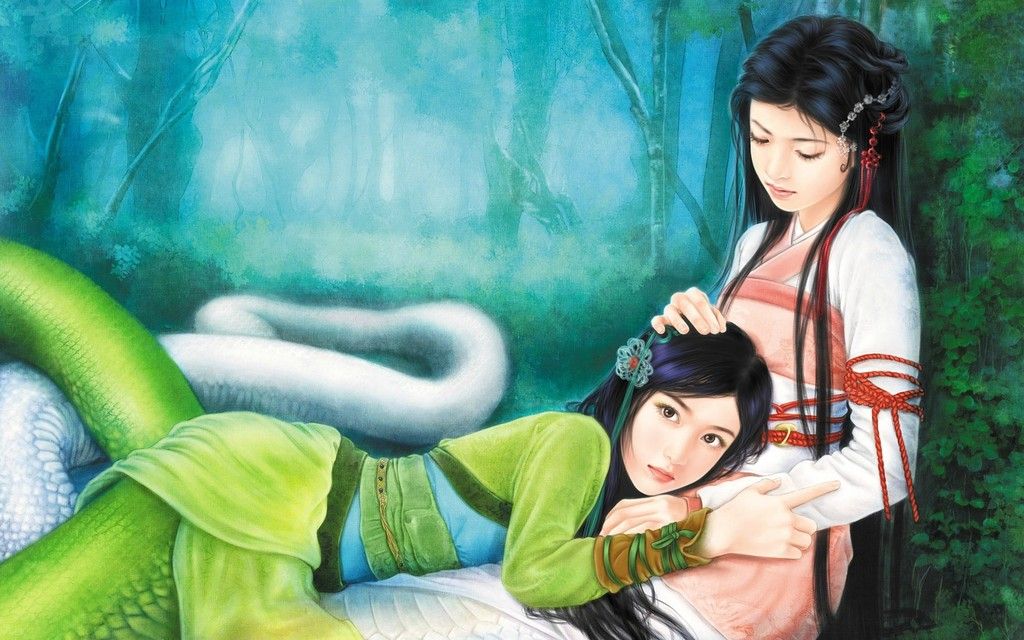
Unbeknownst to Bai Suzhen, a tortoise spirit who had also been training hard to attain Xian-hood and long life had witnessed her fortunate instant power up all those years ago, and grew bitterly jealous. The tortoise spirit eventually grew strong enough to also assume human form and takes on the identity of a Buddhist warrior monk named Fahai. Tracking Bai Suzhen down for revenge, he finds her happily married and running a medicine shop with her new husband.
Fahai vows to destroy her marriage and happiness any way he can and decides to use his sect of Buddhist warrior monks for this goal, knowing that a human and a Snake Demon copulating would be considered a blasphemous offense to the religious fighters. Many intensely supernatural martial arts/Taoist Ki battles break out between the Snake Sisters and Fahai and his monks with poor hapless scholar Xu Xian caught in the middle.
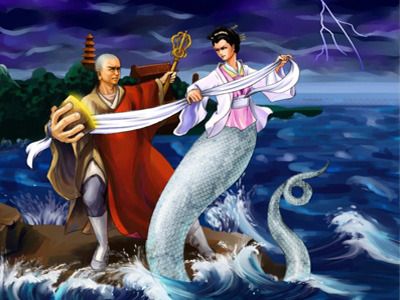
(Fahai vs Bai Suzhen.)
Oh and yes, in case anyone missed it, a key plot point that much of the story's early events hinges on is essentially a magical instant power up for our supernatural martial arts protagonist. From magical food that, apart from granting strength and enhancing a person's Ki, also has the side effect of making the person eating it not feel any hunger for several days afterward.
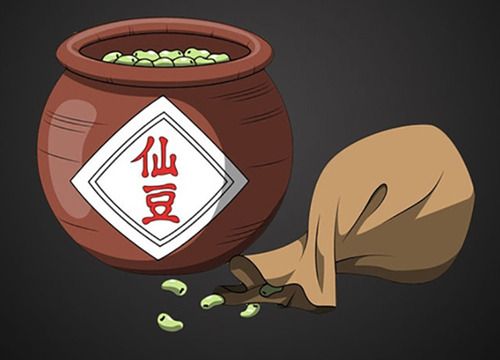
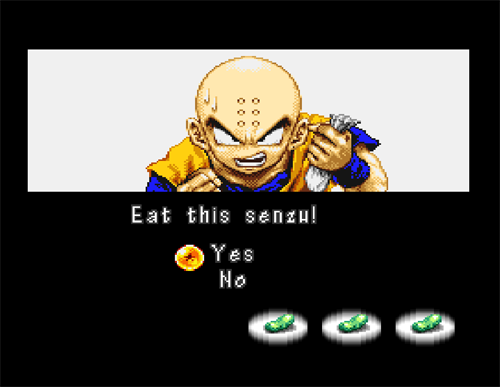
(Stop me if any of these concepts ring at all the least bit familiar.)
-----------
EDIT (1/4/2016): Didn't notice this till recently, but Derek Padula's awesome "The Dao of Dragon Ball" website has a pretty excellent and spot on rundown of the Taoist concept of "Immortality Pills", which have been a cornerstone staple of Wuxia folklore starting with (as was already noted here) the Legend of Madam White Snake and onward and which are, quite obviously, the basis for Senzu in Dragon Ball. By all means give that a read, as the history behind this is something I definitely should've delved a bit more into here myself.
-----------
Originally played for grim horror in its earliest tellings with Bai Suzhen as a more sinister figure and Fahai and his monks painted in a more heroic light attempting to genuinely save Xu Xian's soul from her wicked clutches, the finer details of the story had evolved and deepened substantially over the centuries into a much more subversive love story about tolerance and the evils of prejudice and meddling in the lives of others who may be different but are otherwise doing no harm to anyone.
This classic Wuxia myth was already IMMENSELY fertile ground for the deeply feminist and politically outspoken Tsui Hark to work with, and in '93 he didn't disappoint in the least bit.
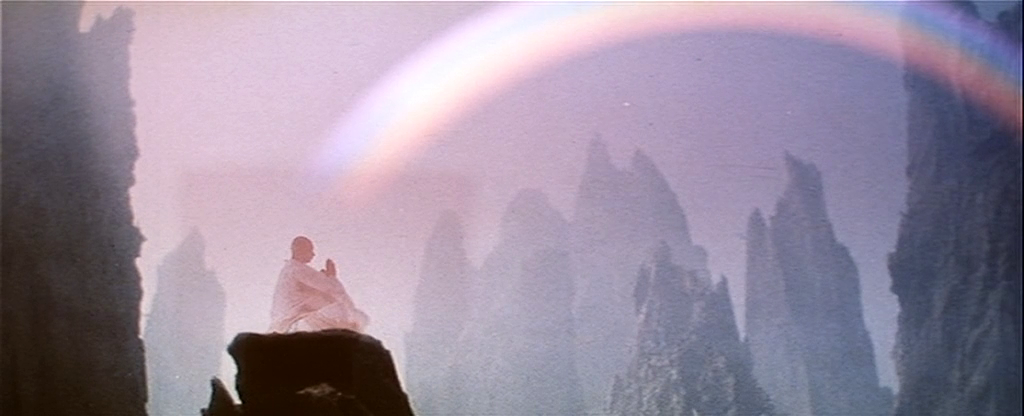
As the title would imply, Green Snake is told more from the perspective of Xiaoqing (the titular Green Snake demon) who in the original legend was a supporting character in the main conflict between Bai Suzhen and Fahai. In Hark's telling, Xiaoqing is put front and center as the POV character and is further fleshed out: always portrayed as the younger, more excitable and impulsive sister next to Bai Suzhen's more mature, collected demeanor, while Bai is getting ready to settle down to a quiet, peaceful existence with Xu Xian, Xiaoqing is torn between living close by her adoptive sister (whom she hero-worships) as a human, or remaining closer to the demon world, unsure of which form she prefers.

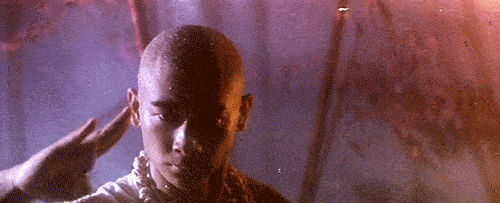
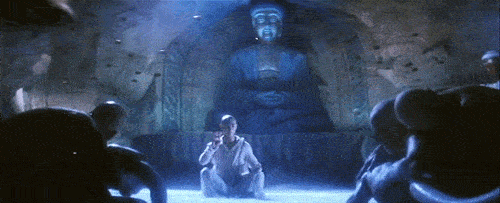
Coupled with the still training Xiaoqing's much greater difficulty in maintaining her human guise (and thus keeping her and her sister's secret from an oblivious Xu Xian), and there's a pretty obvious puberty parable going on here of a young girl growing into womanhood and still trying to figure out who she really is, as well as an intriguing examination of closely knit family drifting apart as their lives move in different directions.
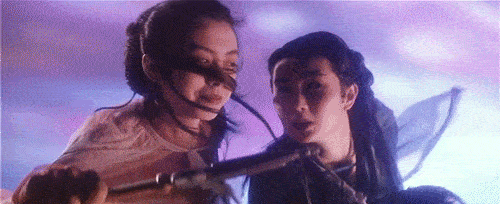
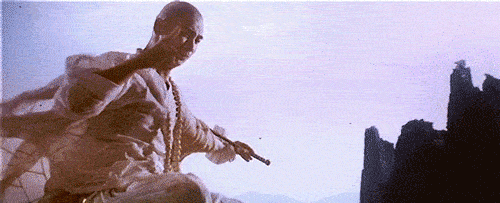
(As with most tellings of the Snake Sisters myth, much of the supernatural displays of martial arts techniques are far less physical and a great deal more heavily axed on the metaphysical and is, as with all of the most fantastical Wuxia martial arts techniques, steeped in Taoist mysticism. On the left: the Snake Sisters are pursued by Fahai in an aerial chase and attempt to lose him by soaring through Jianghu mountain ranges. On the right: Fahai displays his incredible mastery of Kikou by using his purely focused Ki to part the waters of a massive river.)
Also much further fleshed out is Fahai and the motives of the Buddhist warrior monks in general. In this version the monks, with a distinctly deep red motif to much of their robes, clearly are meant to represent Communist China. Yes, Hark managed to add a layer of (at the time) modern day political commentary onto a classic and well worn Wuxia standard, with the plight of the Snake Sisters and Xu Xian clearly intending to represent the artistic, free spirited and individualistically different Hong Kong, and the encroaching monks the looming Handover and the visage of conformist Communist oppression intruding onto innocent lives that didn't ask for any conflict with them. And when they kidnap Xu Xian, their attempts to “cleanse” his spirit of the demon woman's “influence” looks all too suspiciously like the sort of torture found in a reeducation camp.
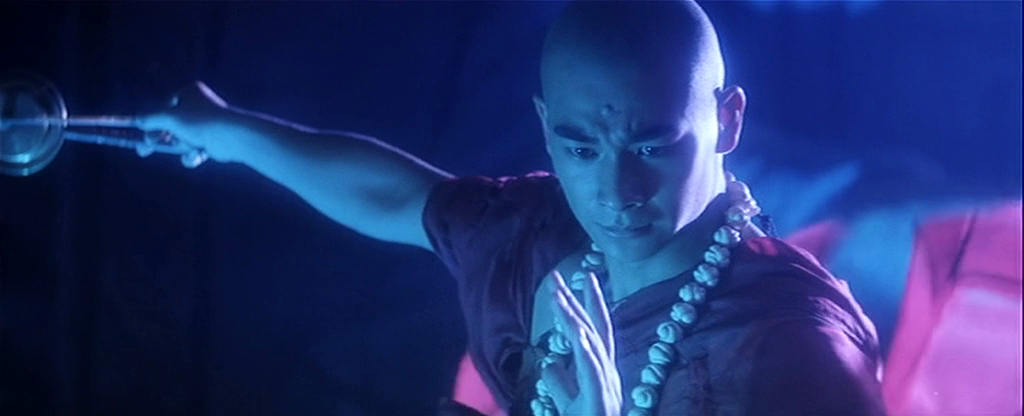
Fahai as a character is also DRASTICALLY overhauled and given a great deal more depth: his backstory as a jealous tortoise spirit rival of Bai Suzhen taking on a human form is discarded, and the main instigator of the conflict is purely the Buddhist temple's bigotry towards the inter-demon/human marriage with Fahai as one of several temple leaders behind the decision to invade the lives of these people and break up the marriage. However Fahai is made tremendously more sympathetic and three dimensional here and is portrayed as at first as fanatical as the other monks, but ever gradually more conflicted as he continues to slowly see the genuine love in Suzhen and Xu Xian's relationship and begins to recognize the temple's actions and vitriol towards their love as misguided and senselessly hateful.

On top of all that, the movie is just pure eye candy and cinematography porn, with one of the single most strikingly gorgeous and storybook beautiful onscreen portrayals of Jianghu ever put to film, period. Its beyond worth a look purely on that merit alone. And while a much greater emphasis is put on the love story and the various layers of political and sexual subtext, when the supernatural martial arts attacks do start flying, its a lovely, breathtaking sight to behold.
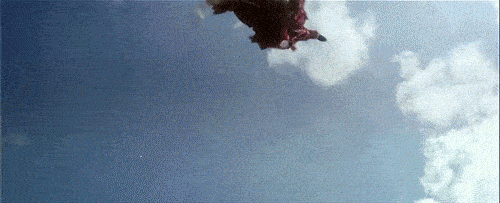

(The Snake Sisters mount an assault on the Buddhist temples by attempting to flood it with their elemental control techniques, as in most tellings of the climax of the Snake Maidens lore. UNLIKE most tellings however, here in Hark's 90s version Fahai attempts to save the temple by singlehandedly hoisting it above the crashing waves with his incredible superhuman strength and ability to fly with his Ki.)
On a similar note, Hong Kong New Wave icon Wong Kar-Wai would also once more return to the genre, this time as both director and as a writer, with the much celebrated 1994 arthouse Wuxia classic, Ashes of Time.
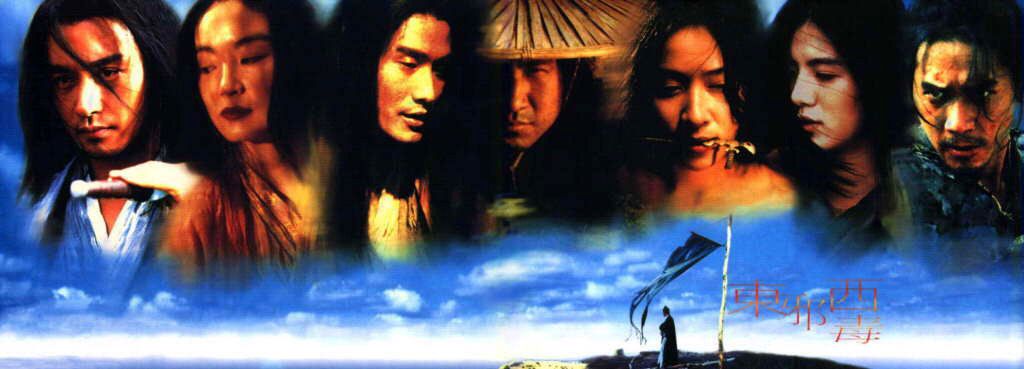
So with YYH we've got a manga/anime series that's set in then-modern 1990s Japan, primarily focusing on Yusuke Urameshi and Kazuma Kuwabara, a pair of rival 14 year old middle school-age rebellious delinquent punks whose very immediate futures seem perfectly poised for a life of petty criminal thuggery and Bosozoku gang membership (and in Yusuke's case, judging by his strongly hinted-at family background in the manga, probably a future even further down the road of life as a Yakuza hood).

The fairly predictable path of youthful ruin for these two boys is completely derailed however when Yusuke is of course run down and killed by a speeding car while uncharacteristically saving the life of a small child within the very first manga chapter/anime episode and is revived as a spirit. Kuwabara not long after has his own latent ESP-like psychic connection with the realm of the dead awakened.
After Yusuke is resurrected by Koenma, son of the mythical Great King Enma (due to him dying before his intended time), he and shortly later Kuwabara are recruited by the Spirit World (afterlife) to be their agents in the Human World (Earth/the living world), investigating and combating incidents involving demons and evil spirits from the Demon World (Hell) running amok.


They're both also joined by Kurama and Hiei, a Fox Demon and Fire Demon respectively, who were both once criminals in the Spirit World and are forced by Koenma (after being apprehended initially by Yusuke) to work alongside Yusuke and Kuwabara as almost a form of spiritual/paranormal “community service”.


Before long however, the series' shifts its focus away from Yusuke's duties as a Spirit World Detective and more towards his, you guessed it, ever growing and evolving supernatural martial arts skills. Upon dying and being resurrected, Yusuke's mind and spirit are awakened to his latent ability to harness and focus his Ki, and he is mandated by Koenma to train this ability in the form of supernatural martial arts by the great master Genkai so as to be a more effective fighter against the demonic hordes he will be facing as a Spirit World Detective.


Among Yusuke's greatest opponents is Toguro, formerly Genkai's martial arts peer and lover, who sold his soul to become a demon so that he will never age or lose his strength as a martial arts master. Toguro becomes obsessed with and fixated on Yusuke's strength and power as a fighter, and his encounters with Yusuke further brings out in the boy his own Youxia-like will and ideals as a fighter to continue to grow and improve for the sake of growing and improving and realizing his own full potential, all the while with Toguro acting as a cautionary tale and tragic reminder of where those warrior's ideals for growth can lead when they completely and utterly consume a fighter to the point of total obsession.


Pretty much most all of Yusuke's major demonic martial arts adversaries throughout the series function in a similar manner to Toguro, acting as dark reflections of Yusuke's own Youxia-like tendencies and showing where they can lead him astray if he doesn't properly apply them and think the ramifications of his actions through clearly.
This is especially apparent in Sensui Shinobu, a once incredibly heroic Spirit World Detective and masterful martial arts warrior who was tragically driven irrevocably and murderously insane by the extreme corruption of the Human World and his own deeply held and unshakable moral and ethical principals as a warrior.


Yu Yu Hakusho is the very essence of early 90s post-modern/post-genre barriers Wuxia personified. You cannot get more specifically dated to that exact moment in time with the genre than this. Coming from Japan as a manga/anime franchise, you've got Bosozoku/delinquent thug elements similar to Osu!! Karate Bu before it, as well as the transplanting of occult/horror and demon/ghost hunting Wuxia elements to modern day Japan ala The Peacock King, all while bringing the afterlife/Bangsian fantasy-centric elements of the genre into the central focus with vast chunks of the series set in the Spirit and Demon Worlds.


(Kuwabara's Rei Ken/Spirit Sword has a dual meaning: being both a Ki-powered sword wielded by a modern day Xia-like character, as well as a Wuxia-ified take on the wooden Bokuto swords often wielded by Bosozoku thugs, whose stereotypical Kamikaze tokko-fuku garb Kuwabara wears as his Xia warrior's dogi/robe of choice. In fact, the first time Kuwabara accidentally created a Spirit Sword from his Ki, it was through using the broken-off piece of an enchanted, mystically powered wooden Bokuto sword.)
Beyond even all that though, Yu Yu Hakusho is a rather intelligent and thoughtful deconstruction of the Youxia archetype by way of transplanting the extremely medieval and archaic nature of its warriors' ideology to a modern day early 1990s setting. Yusuke spends the vast majority of the series working out how to balance his natural, inherent desire to devote his life to growing and blossoming as a supernatural martial arts master with the vastly more liberal and nuanced morality and social responsibilities of modern living, and each of his major rivals and opponents act as generally three dimensional and achingly human examples of where he can go astray in walking the precarious tightrope he spends the series walking.


The incredible success of the post-HK New Wave genre-hybridization and modernizing formula for Wuxia had indeed left its mark on Japanese pop culture through numerous highly popular Seinen and Shonen manga and anime. This would only further continue across ever more mainstream Japanese properties well before the 90s would even reach its back half.
Rumiko Takahashi would dip into the craze a bit with her seminal and hugely influential gender bending martial arts/sex comedy Ranma ½, which sprinkled Wuxia elements of Chinese kung fu mysticism and martial arts rivalries throughout an otherwise farcical “harem” comedy set in modern late 80s/early 90s Tokyo.


 [
[
Another popular children's anime franchise to unexpectedly be influenced by the ever-increasing spread of blending Wuxia with other genres by the early 90s was, of all things, the Gundam franchise.
The... ahem... somewhat controversial series Mobile Fighter G Gundam built itself on the premise of essentially being a Wuxia Gundam series, owing to its creator Yasuhiro Imagawa's love of international films, particularly Hong Kong Wuxia and the films of Tsui Hark. Within the series, ruling power over the universe is decided every few years with a martial arts fighting tournament, each world nation being represented by a Gundam battle mech whose pilot (usually an expert martial artist themselves) controls the robot via their own fighting movements, making the Gundam mimic every punch, kick, and various supernatural martial arts Ki techniques that the pilot performs.




Apart from the obvious parallels, the character of Master Asia's Japanese name Toho Fuhai, is actually the Japanese translation of the previously mentioned Smiling Proud Wanderer character Dongfang Bubai, an intentionally direct homage.

By 1993, even that year's annual Super Sentai series would be Wuxia themed: Gosei Sentai Dairanger, which focused on the main team's growing Chinese kung fu/Ki proficiency and training as well as numerous references to creatures and deities of Chinese folklore with its mecha. The villains they faced, the Gorma Tribe, were an ancient martial arts clan who achieved such powerful mastery of their bodies and their Ki that they grew third eyes: this concept is taken directly from a piece of Taoist lore that pops up in Wuxia from time to time and will be further touched on later.
Even the power by which the Dairanger team transforms stems from their ability to harness and control their own Ki, their costumes designed after Chinese kung fu training clothing, and many of their weapons being based on Chinese medieval martial arts weapons common to Wuxia: their quarter staffs in particular suspiciously and likely intentionally resemble Sun Wukong's magical staff.





The continued virus-like spreading of post-HK New Wave Wuxia's influence (and the influence of the various works it had by the early 90s already influenced) hardly stopped at Japanese comics and TV shows though. It of course had a HUGE impact on video games, and is essentially responsible for creating one of the most defining game genre's of the early 90s.

Once more, I believe this one needs little to no introduction.
But for the benefit of those living under a fucking rock for the past 20/25 years now: debuting in arcades in 1991, Street Fighter II is one of the most important flagship franchises of legendary game development studio Capcom and an absolute icon and benchmark of arcade gaming, radically redefining the arcade landscape for what would essentially be its final decade of existence as a cultural entity. It codified and more or less created from wholecloth the vast lion's share of the fundamentals for the modern 2D fighting game as we know it.

The characters and lore behind the Street Fighter series is of course absolutely the byproduct of an Asian popular culture that had for more than a decade before been inundated throughout every pore with modernized and hybridized takes on classic martial arts fantasy fiction.


(The look and aesthetics of many pieces of 70s and 80s Wuxia manhua, manga, and movies, genre blended and otherwise, fueled the look and feel of Street Fighter II's stew of fantasy martial arts mixed with modern sensibilities, as was the well established trend of the time. Here you can clearly see that Vega/Balrog's masked/braided ponytail look was largely taken from the armless warrior Ghost Servant from Chinese Hero. In Chinese Hero, Ghost Servant wears the mask to hide his gruesomely disfigured face, while Vega/Balrog wears his to shield and protect his delicately beautiful and handsome features, which may have been an intentional reference/subversion.)
The main character Ryu is essentially a modern day classical Youxia (mixed heavily with numerous elements of actual real life Japanese Karate masters, namely Mas Oyama), a pure warrior constantly and restlessly wandering the globe in search of new challenges to push his martial arts skills to and beyond their absolute limits. Ryu embodies and lives for nothing but the purity of the fight while striving to maintain the integrity of his honor as a martial arts master: you cannot possibly distill the crux of the Youxia archetype down to its barest essence more than this.

Ryu of course, like any good Wuxia protagonist, is also just as much defined by his rivals as he is his own skills and code of fighters' ethics. His best friend Ken Masters is every bit his American counterpart: brash, energetic, humorous, high spirited, and a bit arrogant, Ken is very much the more down to earth Yin to Ryu's ever stoic Yang, and the careful balance between the pair's deep friendship as lifelong training partners and students under the same master as well as hot blooded rivals in their mastery of their skills is very much at the heart and soul of the series' mythos.


With an international and multi-ethnic cast of warriors each representing a different culture as well as a different fighting style, Street Fighter has over the course of its dense history covered just about close to every possible martial arts character archetype in existence and each of them make up what is essentially within the series' universe a modern day 1980s and 1990s Wulin community: supernaturally powerful martial arts masters who train and exist quietly and on the far fringes of society, making their presence known primarily to test their skills against one another at large gatherings of great masters at major martial arts tournaments, such as those hosted in the series by Sagat and later the criminal empire Shadaloo.

The character Gen for instance, a semi-retired and terminally ill kung fu hitman, is a tribute to virtually every Xian stereotype there is, as well as embodying numerous aspects of countless martial arts assassin characters made especially popular during Shaw Bros. and Golden Harvest's heyday.

Then of course there's the superpowerful psychic martial arts master and drug lord/dictator Vega (or M. Bison if you'd prefer) who takes as much from Japanese folklore and pop culture (namely Hiroshi Aramata's classic apocalyptic occult/onmyodo historical horror epic Teito Monogatari and its iconic villain Yasunori Kato) as he does every possible stripe of Chinese Wuxia warlord characters. Vega/Bison spends much of the series fascinated with Ryu's potential as a fighter and finding ways of exploiting it for his own goals of conquest.


(On the left: Teito Monogatari's Yasunori Kato. On the right: Street Fighter's Vega/M. Bison)
Also on hand is Chun Li, who lends much more of an overtly Chinese flavor to the proceedings (albeit a fairly modernized one, fittingly enough) as well as a more classical “revenge for a slain loved one” storyline that is so indispensable to the martial arts/Wuxia genre.

Also notable are the characters Sagat and and somewhat later on Gouki aka Akuma, a pair of dark analogues to Ryu (similar in many ways to the relationship between Yusuke and Toguro/Sensui in Yu Yu Hakusho) whose obsession with fighting and pushing their skills to their utmost breaking point takes on deeply twisted and corrupt perversions of the Xia's warrior code: though in Sagat's case, not without the possibility for redemption.

Sagat is driven into a mad fit of obsession over his (literally and figuratively) scarring loss to Ryu, which he perceives as unfair, and sells his soul and his ethics as a warrior to the service of Vega/Bison for the chance to even the score and avenge his crushing defeat (and always with deep pangs of regret for the trade off).

Gouki/Akuma meanwhile is the worst possible tragic outcome of a Youxia gone bad: the brother of Ryu and Ken's master Gouken lead astray into mastering corrupt techniques and martial arts teachings for the sake of fueling his own ego and lust for undisputed dominance in the martial arts world, Akuma like Bison sees in Ryu his incredible potential as a fighter and wishes for Ryu to go down the same dark path of mastery as he did under the belief that it is the only true way for Ryu to fully meet his potential and give him (Akuma) the only true challenge left to his skills as a demonic, twisted Youxia fighter.

Part of what's long made Akuma so fascinating as a character is the fine line he generally walks between a semblance of warriors' ethics and outright martial arts villainy. Within the context of the modern day Wulin-esque martial arts world of Street Fighter, Akuma is absolutely unquestionably evil as his yearning to explore and push past his own limits is driven more by vanity and a ruthless need to dominate his challenges (as shown by his casual attitude towards killing and crippling his defeated foes) than by a more compassionate road of using his fights to help teach and train his defeated opponents as much as they teach and train himself.


However, even with all that said, Akuma still abides by SOME semblance of Xia ethics, and will not use his skills and power to victimize completely innocent civilians who do not strive to be fighters at all (unlike Bison, whose corrupting power is a danger to all). Akuma's major flaw that makes him “evil” within the context of a Wuxia story is his total lack of compassion for fighters whose skill is beneath his own. In some stories he could be finagled to be seen as more of an anti-hero: in a martial arts narrative however, his attitude posits him unquestionably on the negative end of the spectrum, a fighter who has clearly lost his way and whose honor has been tainted by his own ego.

Much of the lore of Street Fighter is centered around the concept of Hadou, which is essentially the series' version of Kikou/Ki mastery, and its dark and light incarnations: essentially based off the real life Taoist concept of positive and negative energies in Ki (thus once again, Yin and Yang) with Satsui no Hadou (Surge of Murderous Intent aka Dark Hadou) being a tempting and corrupting influence on powerful fighters - particularly Ryu who spends much of the series struggling against the temptation of giving into Satsui no Hadou in the heat of combat - tapping deep into the energies of Hadou in order to use them to kill or otherwise horribly maim and cripple their opponent beyond the pale... once again tapping into the Wuxia theme of “excessive force is inherently evil and corrupting”.

Also as with much of Wuxia during this time (late 80s/early 90s) across other media, Street Fighter would also add many elements of straight up science fiction into its martial arts storylines, first with Bison's futuristic crime syndicate Shadaloo, then his plans centering on the creation of his “psycho drive” (a massive doomsday device which can vastly increase his psychic powers and supernatural fighting abilities to godlike levels) and various cloned “dolls” (mindless, obedient female servants created in a lab and culled from his own DNA), and even further later on numerous other warriors who are as much government science experiments gone wrong as they are fighters' of Street Fighter's own little Wulin community (characters such as Twelve, Necro, and Seth).


With its focus on martial arts rivalries and warring interpretations of ancient mystical martial arts teachings about powerful Ki mastery and battles raged against an oppressive dictatorial force by a loosely connected sect of powerful and far fringe Wulin martial arts masters, Street Fighter is indisputably a Wuxia tale brought once more to the modern world, as we've well established to be the running theme of the genre throughout the 80s and early 90s. And as with most Wuxia properties that took that track during that time, it paved the way to incredible success and immense, iconic popularity that endures even to this very day.

During its original heyday however, Street Fighter of course would spawn COUNTLESS imitators of its own within the video game world, thus kickstarting the 90s golden era of arcade fighting games. The vast overwhelming majority of these games likewise took their cues as much from various Chinese and Japanese martial arts and Wuxia fiction media, from movies to manhua, manga, anime, etc. as they did Street Fighter itself.
Without question the most successful of all of Street Fighter's fighting game/modern Wuxia progeny was SNK's King of Fighters universe.

Beginning with the two fighting game franchises Fatal Fury and Art of Fighting, those two series would eventually cross over along with numerous other SNK video game properties to create the King of Fighters fighting game franchise.


As with Street Fighter and the rest of Wuxia media during these years, the whole SNK universe of fighting games is a modernized take on numerous Wuxia storytelling tropes and character types retrofitted into a modern setting and often with futuristic elements mixed in for seasoning.
The main storyline for Fatal Fury, Art of Fighting, and King of Fighters as a whole centers around the fictional American city of South Town and the King of Fighters martial arts tournament that is annually held there by corrupt police commissioner and syndicate head Geese Howard, as well as the utterly massive international cast of superpowerful Wulin-like fighters that it attracts from around the globe, particularly the American brothers Terry and Andy Bogard and their close Japanese friend Joe Higashi: a very, VERY similar dynamic in fact to the Chinese brothers/half Russian best friend trio from Little Rascals/Oriental Heroes, and the gritty, hardboiled, crime ridden Chinese slums they inhabited not a million miles removed itself from the mean streets of South Town.


(Central characters Terry Bogard and Wang Xiao Hu even both share a similar “star” motif on most of their street clothing.)
Characters like Art of Fighting's father/son duo Takuma and Ryo Sakazaki are as much staple martial arts/grindhouse/Wuxia character types as they are “heavily inspired homages” (to put it charitably) of Street Fighter's Ryu and other Ansatsuken (Street Fighter's own assassin fighting style practiced by Ryu, Ken, Akuma, et al) characters.


(You may possibly notice some mild similarities.)
Similar to Ryu's Mas Oyama parallels, the fighting style created by the Sakazaki family in the Art of Fighting/King of Fighters series, Kyokugenryu Karate, is also itself derived from Mas Oyama's real life Kyokushin Karate.




(Left: Ryo Sakazaki. Right: Mas Oyama.)
Ryo's father Takuma Sakazaki meanwhile is heavily inspired by Sonny Chiba's character Takuma Tsurugi from the (coincidentally named) “The Street Fighter” Japanese martial arts film series which was a massive and much beloved staple in American grindhouse theaters in the 70s and 80s. Chiba also studied martial arts under Mas Oyama in real life and played him in a number of films.


(A Tale of Two Takumas: Art of Fighting's Sakazaki on the left, Sonny Chiba's grindhouse icon Tsurugi on the right.)
Geese Howard also similarly owes his persona as much to stock crime villains from pulpy grindhouse films and 80s Hollywood action movies as he does from Wuxia, further blending the past with the present as was the martial arts fantasy genre tradition of the day.


Similar to many comic and manga series, the later merged King of Fighters series would be broken up into several “story arcs”, with earlier arcs focusing more on traditional Wuxia mysticism (the “Orochi saga” which centers on the resurrection of a corrupt warrior deity and the ancient martial arts clans charged with ensuring he is never awoken) and later arcs venturing more into sci fi territory (the “NESTS saga” which focuses on a secret underground syndicate who intend to manipulate the King of Fighters tournament for their own corrupt ends).
Further cementing both the Street Fighter and King of Fighters' positions as pieces of early 90s Wuxia media was their Wuxia Manhua adaptations. Street Fighter would get one in 1992 barely a year into its arcade history by none other than legendary Chinese Wuxia Manhua publisher Jademan Comics.


Written and drawn by Xu Jing Chen, the Street Fighter II manhua is gorgeously illustrated and as absolutely early 90s bonkers as genre-blended Wuxia of the era gets, with massive all out free for alls between the incredibly powerful Wulin warriors of the Street Fighter world amidst batshit science fiction subplots centering on evil clone dopplegangers and other such balls to the wall madness.



King of Fighters meanwhile would get a Wuxia manhua much later on in the 90s with Andy Seto's King of Fighters: Zillion followed by numerous sequel series which all ran up through the early to mid 2000s, including a few crossovers with Street Fighter.

Its not at all an exaggeration to say that literally the entire 90s fighting game boom owes a LOT of its existence to Wuxia, particularly the hyper manic crazed genre-busting incarnation that the genre had taken across much of the 80s and early 90s. Very close to almost every major 2D arcade fighting game title released in that time period can be seen, to one extent or another, as essentially a completely off the wall outrageous Hong Kong Wuxia film or manhua in video game form.
By the end of the 80s and dawn of the 90s, Hong Kong cinema as a whole (and Wuxia along with it) had grown MASSIVELY in popularity all across the world. Including even North America. And this time it wouldn't just be the grindhouses and ghettos getting a taste for it (the grindhouse theater industry indeed was fading fast by the late 80s and would be gone entirely by the very early 90s, largely being made obsolete and replaced by the straight to video/VHS industry).
Spurred on largely by the output of John Woo and Tsui Hark, Hong Kong films - particularly Heroic Bloodshed (operatically melodramatic and excessively violent Chinese mob/Triad epics), drama, comedy, and martial arts/Wuxia films - absolutely EXPLODED amongst the so called “Generation X Grunge/Slacker” culture of the time.
Amongst the major Wuxia titles of the time, A Chinese Ghost Story, Hark's wild remake of the King Hu classic Dragon Gate Inn, and the Swordsman/Smiling Proud Wanderer films were particularly huge amongst teens and 20-somethings of the time, many of whom were also (as noted earlier) into and collected anime and manga as well. Due to the vast use of bootleg VHS tape trading used to gain access to both unlicensed anime as well as HK films, a tremendous degree of overlap formed between the two fandoms, intertwining them closely together for a good number of years throughout much of the 90s.
Particularly due to the prevalence of wacky, dementedly over the top Mo Lei Tau humor, a large number of HK action and Wuxia films were seen by many Western fans at the time as essentially live action anime. Coupled with the popularity of similarly themed 2D fighting games and this also fueled into the popularity of titles like Dragon Ball, Yu Yu Hakusho, Hokuto no Ken, and Ranma ½ at the time.
Being Shonen titles aimed at a much younger audience in their native Japan, they tended to glaringly stick out amongst a largely Seinen/Gekiga dominated Western anime and manga landscape (well, maybe less so Hokuto no Ken) of the late 80s/early 90s that otherwise routinely ignored and cared very little for a great deal of Shonen. But the numerous similarities with over-exaggerated and manic energy violent/comedic Hong Kong martial arts/Wuxia films won them a fairly sizable fanbase amongst an older audience who were also plugged into the weird genre-bending sensibilities of the then-still thriving and ubiquitously popular Hong Kong New Wave.




(A very large chunk of late 80s/early 90s Western anime & manga fandom gravitated to the medium on the strength of envelope pushing strictly adult-aimed Seinen titles with a heavy Gekiga visual bent to them, and were typically unmoved by and disinterested in most child-friendly Shonen due to them being seen as largely redundant to a culture that already has long had more than its share of child-aimed animated works for countless years. Certain titles like Ranma, YYH, and DBZ however slipped their way between the cracks of this distinction due to their overt similarities with manically bizarre Hong Kong Wuxia/supernatural martial arts films that were also popular at the time.)
At the same time, while the number of officially licensed Hong Kong films and Japanese anime & manga continued to grow along with bootleg trading of many others that were yet to be licensed, popular Hong Kong Wuxia Manhua publisher Jademan Comics would dive into this growing new North American market during the late 80s and early 90s with officially translated and licensed reprints of many of their own classic Wuxia Manhua, including Ma Wing Shing's seminal Chinese Hero series (published here under the titles of Tales of the Blood Sword and Blood Sword Dynasty), Oriental Heroes, and numerous others, thus further stoking the popularity and visibility of Wuxia among fans at the time.

(An official North American Jademan printing of the 5th chapter of the Wuxia manhua Iron Marshal by Lee Chi Ching, cover dated November 1990.)


(Some American Jademan issues, as with their Chinese counterparts, also had a section in the back for submitted fan art. You may recognize a certain distinctively hair-styled monkey boy who made frequent appearances in these.)
It cannot possibly be overstated what a VASTLY diametrically different world the Western anime/manga landscape and fandom was in the early-most 90s. While there were definitely still some awkward, super dorky types that one would view as traditionally Otaku, there was also a massive number of flannel and Doc Marten-clad stoners and skater punks that were likewise a huge part of the fanbase as well back then. Their range of interests tended to be a LOT broader than just solely anime and manga, which included all kinds of supremely strange and envelope pushing underground comics and foreign movies... like movies where Chi wielding ancient kung fu mystics go toe to toe with time hopping alien cyborgs from Mars, or what have you.

(Portrait of a typical early 90s American Wuxia/anime fan. As represented here by Floyd from True Romance for... reasons.)
This particular cultural stew of cynical, disaffected punk rock teens latching onto hyper violent martial arts films and whimsical Chinese mysticism along with 2D arcade fighting games with similar themes and motifs spurred on yet another massive and iconic early 90s cultural touchstone amongst the youth of the time, one that was not only made for but also made by EXACTLY the sort of Nirvana-era freaks and weirdos mentioned above.

”Test Your Might”
Oh yeah.
Mortal Kombat is the utmost essence of early 90s American Wuxia fandom personified as an arcade fighting game. Created by Ed Boon and John Tobias, who back then were still fresh into their early 20s, where Street Fighter was a 2D fighting arcade game embodiment of the off its meds bugfuck insanity that Wuxia had become at the time made by Japanese people who were a great deal closer in cultural proximity to its root source, Mortal Kombat was very much the same, except made by a couple of over-enthusiastic Chicago natives who were VASTLY further removed from the cultural origin point and who had, like most of us American fans at the time, largely absorbed all this magical kung fu wackiness through shitty degraded VHS tapes with horrendously mangled subtitles or dubbing; side by side along with countless other gore and viscera splattered 80s horror and action movies.

(Left: John Tobias. Right: Ed Boon. Center: Carlos Pesina, the martial artist who modeled for Raiden's digitized sprite in the first two MK games.)
On the artistic/lore/creative end of things, the VAST majority of the credit for MK turning out the way it did really goes to John Tobias, who was also a damned talented comic book illustrator as well. Drawing from an incredibly broad range of global influences, Tobias has made very little secret of Mortal Kombat's Wuxia origins, citing numerous films of the time as major influences on the end product.
The two most obvious ones right off the bat are Enter the Dragon and Big Trouble in Little China. Chinese sorcerer antagonist Shang Tsung is clearly in many ways a dead ringer for Big Trouble's Lo Pan (both cursed Chinese mystics trying to appease angered deities), while Raiden's character design is famously copied and pasted from Lo Pan's “Three Storms” minions.




Enter the Dragon feeds into it via the first MK's plot of a Shaolin martial arts tournament held on a small, private island hosted and owned by the main villain who has taken over and corrupted the tournament for his own ends, with a Bruce Lee lookalike (Liu Kang) as the main Shaolin hero who enters in order to take the tournament back from the villain and restore its honor on behalf of his temple.





Also playing into it is the 80s Van Damme film Blood Sport, with the tournament there being a “to the death” gore soaked bloodbath where fighters are routinely and graphically maimed and killed in each match, along with the MK character Johnny Cage being a dead ringer for Van Damme's Frank Dux in both his costume and various fighting moves, particularly the famous “split punch”.




Sonya Blade is also heavily influenced by Cynthia Rothrock, one of the most popular female martial arts action stars of the 80s and early 90s who also starred in a number of Hong Kong martial arts films.


But beyond all that is the ever presence of Wuxia as a whole. Tobias has talked a lot before in interviews about the Wuxia films of Tsui Hark being major influences, and this particularly shows with many of the MKII/Outworld backgrounds which have a very decidedly Zu Warriors-esque flavor to them.


Ki/Chi attacks and various superhuman martial arts techniques are of course also practically mandatory for each character,

and the entire lore of MK is centered around a series of mystical martial arts tournaments created by deities from Asian religious lore which gives the best martial artists from all over the world a chance to stop hideous demonic creatures from another dimension, including their warlord despot leader, from overrunning our world.


Even the later entries in the series, as they added ever more sci fi and futuristic flourishes (like cyborg ninjas and a post-apocalyptic urban landscape... and its not like Wuxia was any stranger to either of those things well by that point either), would still hang onto the franchise's core Wuxia roots with many newer characters still drawing from popular early 90s New Wave HK Wuxia films.


(Mortal Kombat 3's Sindel is largely inspired in her look and fighting techniques by Brigitte Lin's portrayal of Lian Nichang in the classic 1993 Wuxia film The Bride With White Hair, which itself is loosely based on the 1958 Wuxia novel Baifa Monu Zhuan. Lian Nichang has always been a MASSIVELY popular Wuxia character whose unique hair-based fighting techniques have long inspired a great many comic book, manga, and anime characters.)
By the mid-point of the 90s, Wuxia as a whole had achieved a staggering level of widespread popularity, visibility, and recognition on a mass global level it had never achieved in much of its storied long history beforehand. The Japanese were positively devouring it, as were Koreans, Europeans, and even us North Americans.
Not only was the genre spreading its influence across cultural lines like a virus, it had also attained a sort of mystique of “rebellious hipness” among younger people, particularly in its native China due both to the tradition-shirking genre-melding of the post-New Wave stuff as well as the overall themes of the Wulin community as an outsider counter-culture who stand for the power of individual accomplishment over the power of the collective: themes that a Hong Kong still free of its mainland's Communist ideals (for however few remaining dwindling years) was celebrating especially now like never before as the “doomsday clock” countdown to the '97 handover continued unabated.
While that level of deep cultural resonance certainly didn't quite carry over to us clueless Americans, nonetheless a fair deal of the “cool cred” of the New Wave era of Wuxia had managed to rub off on a lot of Western geeks, and the genre (like most of the rest of Hong Kong cinema, and Japanese anime and manga and various underground comics and cult movies, etc.) embedded itself into the early 90s/Gen X grunge American youth culture in its own way.


(If you were a hardcore nerd in the early 90s, chances were you had more than a few of these sitting side by side with your anime tapes.)
And for those more globally/culturally “in the know” about what was going on abroad, the entire Hong Kong cinema landscape of those years was also a fascinating window into what was at once a wild, beautifully surreal and yet poignantly touching and wistful moment in time of a culture basically saying a tearful goodbye to a great deal of creative and artistic freedoms that had defined it for generations, and expressing it (in part at least) with the cinematic equivalent of one great big goofy “bucket list” of crazy, stupid shit to do all at once up on screen.
I suppose if your days are (in this case quite literally) numbered, you're gonna go out and you already know it well in advance, this was the way to do it properly: with a gun in each hand blazing, just like Hong Kong's own Chow Yun-Fat.

(“Give the guy a gun and he's Superman, give him two and he's God!”)
My apologies, but I think its written into law somewhere that you can't write this much about classic 80s/90s batshit pre-Handover Hong Kong cinema without at some point referencing Hard Boiled at least once.
Believe it or not though, I still to this day actually have no idea what Japan's excuse was for diving as deep into all this contemporary/genre schizo Wuxia stuff as they did during that period: god only knows why they glom onto even half the shit that they glom onto in general. Giant Ki blasts and tattered martial arts dogi were just an “in” thing during those years I suppose. I'm obviously glad they did though: where would we all be without Street Fighter? Plus y'know, we also wouldn't exactly have had another particular manga/anime series that this whole community is singularly dedicated to obsessing over.
I digress. While Wuxia was more ubiquitous and popular than ever by the mid 90s, it was also - on a surface level at least - all but unrecognizable from its more traditional portrayals in decades past. Other foreign genre influences had thoroughly invaded it from every possible angle: creators had the Wulin community of ancient kung fu legends travel to the modern present, to far off sci fi futures, had them fight zombies, robots, cyborgs, space aliens, genetic clones and science experiments... and it was only getting more out of control and more batshit wacky with each passing year.






(The early 90s ladies and gentlemen.)
What started out as an incredibly refreshing new take on a cobwebbed ancient genre that was at one point in danger of growing somewhat stale had ballooned and spun wildly out of hand into a fad that some would argue (depending on what kind of Wuxia fan you ask) had well overstayed its welcome and hijacked and overtaken the Wuxia genre well past the point of reason.
At the rate that things were going in the early half of the 90s and as the ever-looming Handover whipped up Hong Kong culture into an increasingly nerve-wracked frenzy, sooner or later the genre itself was bound to cave in on itself under the continually crushing weight of all this complete and total madcap insanity.
Wuxia in Modern Media Section VI: The Breaking Point and the Swinging of the Pendulum (1993 - 2006)
As much as the early 90s was defined by Wuxia finding more and more new ways to modernize and reinvent itself with different genre influences, it wasn't ALL absurdist horror/sci fi bonkers nonsense. Other, vastly more cerebral and abstract ideas were also tried in an attempt to grow and subvert the genre in extensively creative ways.
In 1993, a decade after the original Zu Warriors and still well within the white hot heights of the HK New Wave era's creative output and popularity, the style's own godfather (for Wuxia anyway) Tsui Hark would put out one of his most singularly ambitious, challenging, and thematically rich Wuxia films of his entire career: Green Snake.

The film is based on the ancient Chinese myth of the Madame White Snake, which is one of the single most oldest Wuxia legends in the genre's entire history (pre-dating written works altogether and originally being passed on orally) and has thus accumulated enough adaptations in enough varieties of media (including fuck knows how many Peking Opera/stage productions) over the years to rival Wuxia standards like Journey to the West and Romance of the Three Kingdoms.

(A 12th century mural depicting a scene from the legend of Madame White Snake.)
In the original legend, a powerful White Snake Demon who has spent many years training in magical Taoist martial arts in order to attain the long lasting life of a Xian lucks into attaining 500 years worth of training within a single day thanks to an unwitting and unseen series of accidents involving an ordinary young boy named Xu Xian and a handful of enchanted immortality pills he had mistaken for rice balls (long story in itself).

Now vastly more powerful and able to transform herself into a beautiful human female form, the White Snake Demon comes to the rescue of a wounded Green Snake Demon, who in sheer gratitude comes to look up to the White Snake Demon as an older sister and begins to train under her. Many years later, the two Snake Sisters are now both able to take on the appearance of beautiful human maidens and travel Jianghu together under the human names of Bai Suzhen (the White Snake) and Xiaoqing (the Green Snake). One day while the two attend a spring festival, Bai Suzhen once more crosses paths with a now fully grown Xu Xian (who has become a scholar), and the two fall in love and get married (with Xu Xian completely unaware of her true demonic nature).

Unbeknownst to Bai Suzhen, a tortoise spirit who had also been training hard to attain Xian-hood and long life had witnessed her fortunate instant power up all those years ago, and grew bitterly jealous. The tortoise spirit eventually grew strong enough to also assume human form and takes on the identity of a Buddhist warrior monk named Fahai. Tracking Bai Suzhen down for revenge, he finds her happily married and running a medicine shop with her new husband.
Fahai vows to destroy her marriage and happiness any way he can and decides to use his sect of Buddhist warrior monks for this goal, knowing that a human and a Snake Demon copulating would be considered a blasphemous offense to the religious fighters. Many intensely supernatural martial arts/Taoist Ki battles break out between the Snake Sisters and Fahai and his monks with poor hapless scholar Xu Xian caught in the middle.

(Fahai vs Bai Suzhen.)
Oh and yes, in case anyone missed it, a key plot point that much of the story's early events hinges on is essentially a magical instant power up for our supernatural martial arts protagonist. From magical food that, apart from granting strength and enhancing a person's Ki, also has the side effect of making the person eating it not feel any hunger for several days afterward.


(Stop me if any of these concepts ring at all the least bit familiar.)
-----------
EDIT (1/4/2016): Didn't notice this till recently, but Derek Padula's awesome "The Dao of Dragon Ball" website has a pretty excellent and spot on rundown of the Taoist concept of "Immortality Pills", which have been a cornerstone staple of Wuxia folklore starting with (as was already noted here) the Legend of Madam White Snake and onward and which are, quite obviously, the basis for Senzu in Dragon Ball. By all means give that a read, as the history behind this is something I definitely should've delved a bit more into here myself.
-----------
Originally played for grim horror in its earliest tellings with Bai Suzhen as a more sinister figure and Fahai and his monks painted in a more heroic light attempting to genuinely save Xu Xian's soul from her wicked clutches, the finer details of the story had evolved and deepened substantially over the centuries into a much more subversive love story about tolerance and the evils of prejudice and meddling in the lives of others who may be different but are otherwise doing no harm to anyone.
This classic Wuxia myth was already IMMENSELY fertile ground for the deeply feminist and politically outspoken Tsui Hark to work with, and in '93 he didn't disappoint in the least bit.

As the title would imply, Green Snake is told more from the perspective of Xiaoqing (the titular Green Snake demon) who in the original legend was a supporting character in the main conflict between Bai Suzhen and Fahai. In Hark's telling, Xiaoqing is put front and center as the POV character and is further fleshed out: always portrayed as the younger, more excitable and impulsive sister next to Bai Suzhen's more mature, collected demeanor, while Bai is getting ready to settle down to a quiet, peaceful existence with Xu Xian, Xiaoqing is torn between living close by her adoptive sister (whom she hero-worships) as a human, or remaining closer to the demon world, unsure of which form she prefers.



Coupled with the still training Xiaoqing's much greater difficulty in maintaining her human guise (and thus keeping her and her sister's secret from an oblivious Xu Xian), and there's a pretty obvious puberty parable going on here of a young girl growing into womanhood and still trying to figure out who she really is, as well as an intriguing examination of closely knit family drifting apart as their lives move in different directions.


(As with most tellings of the Snake Sisters myth, much of the supernatural displays of martial arts techniques are far less physical and a great deal more heavily axed on the metaphysical and is, as with all of the most fantastical Wuxia martial arts techniques, steeped in Taoist mysticism. On the left: the Snake Sisters are pursued by Fahai in an aerial chase and attempt to lose him by soaring through Jianghu mountain ranges. On the right: Fahai displays his incredible mastery of Kikou by using his purely focused Ki to part the waters of a massive river.)
Also much further fleshed out is Fahai and the motives of the Buddhist warrior monks in general. In this version the monks, with a distinctly deep red motif to much of their robes, clearly are meant to represent Communist China. Yes, Hark managed to add a layer of (at the time) modern day political commentary onto a classic and well worn Wuxia standard, with the plight of the Snake Sisters and Xu Xian clearly intending to represent the artistic, free spirited and individualistically different Hong Kong, and the encroaching monks the looming Handover and the visage of conformist Communist oppression intruding onto innocent lives that didn't ask for any conflict with them. And when they kidnap Xu Xian, their attempts to “cleanse” his spirit of the demon woman's “influence” looks all too suspiciously like the sort of torture found in a reeducation camp.

Fahai as a character is also DRASTICALLY overhauled and given a great deal more depth: his backstory as a jealous tortoise spirit rival of Bai Suzhen taking on a human form is discarded, and the main instigator of the conflict is purely the Buddhist temple's bigotry towards the inter-demon/human marriage with Fahai as one of several temple leaders behind the decision to invade the lives of these people and break up the marriage. However Fahai is made tremendously more sympathetic and three dimensional here and is portrayed as at first as fanatical as the other monks, but ever gradually more conflicted as he continues to slowly see the genuine love in Suzhen and Xu Xian's relationship and begins to recognize the temple's actions and vitriol towards their love as misguided and senselessly hateful.

On top of all that, the movie is just pure eye candy and cinematography porn, with one of the single most strikingly gorgeous and storybook beautiful onscreen portrayals of Jianghu ever put to film, period. Its beyond worth a look purely on that merit alone. And while a much greater emphasis is put on the love story and the various layers of political and sexual subtext, when the supernatural martial arts attacks do start flying, its a lovely, breathtaking sight to behold.


(The Snake Sisters mount an assault on the Buddhist temples by attempting to flood it with their elemental control techniques, as in most tellings of the climax of the Snake Maidens lore. UNLIKE most tellings however, here in Hark's 90s version Fahai attempts to save the temple by singlehandedly hoisting it above the crashing waves with his incredible superhuman strength and ability to fly with his Ki.)
On a similar note, Hong Kong New Wave icon Wong Kar-Wai would also once more return to the genre, this time as both director and as a writer, with the much celebrated 1994 arthouse Wuxia classic, Ashes of Time.

Last edited by Kunzait_83 on Tue Feb 02, 2016 7:20 am, edited 7 times in total.
http://80s90sdragonballart.tumblr.com/
Kunzait's Wuxia Thread
Kunzait's Wuxia Thread
Journey to the West, chapter 26 wrote:The strong man will meet someone stronger still:
Come to naught at last he surely will!
Zephyr wrote:And that's to say nothing of how pretty much impossible it is to capture what made the original run of the series so great. I'm in the generation of fans that started with Toonami, so I totally empathize with the feeling of having "missed the party", experiencing disappointment, and wanting to experience it myself. But I can't, that's how life is. Time is a bitch. The party is over. Kageyama, Kikuchi, and Maeda are off the sauce now; Yanami almost OD'd; Yamamoto got arrested; Toriyama's not going to light trash cans on fire and hang from the chandelier anymore. We can't get the band back together, and even if we could, everyone's either old, in poor health, or calmed way the fuck down. Best we're going to get, and are getting, is a party that's almost entirely devoid of the magic that made the original one so awesome that we even want more.
Kamiccolo9 wrote:It grinds my gears that people get "outraged" over any of this stuff. It's a fucking cartoon. If you are that determined to be angry about something, get off the internet and make a stand for something that actually matters.
Rocketman wrote:"Shonen" basically means "stupid sentimental shit" anyway, so it's ok to be anti-shonen.
- Kunzait_83
- I Live Here
- Posts: 2974
- Joined: Fri Dec 31, 2004 5:19 pm
Re: Dragon Ball's True Genre: We Need to Talk about Wuxia
Undoubtedly Ashes of Time is still very much a product of the early 90s Wuxia landscape's committed pursuit of subverting and deconstructing itself. But rather than seek to subvert expectations with time traveling government mutants fighting it out with ancient Xia of traditional Jianghu or some such silliness (which in itself was starting to lose more and more of its unexpected shock value at this point and becoming sort of predictable in its own way anyhow), Ashes of Time took a decidedly more mature and subtle approach.
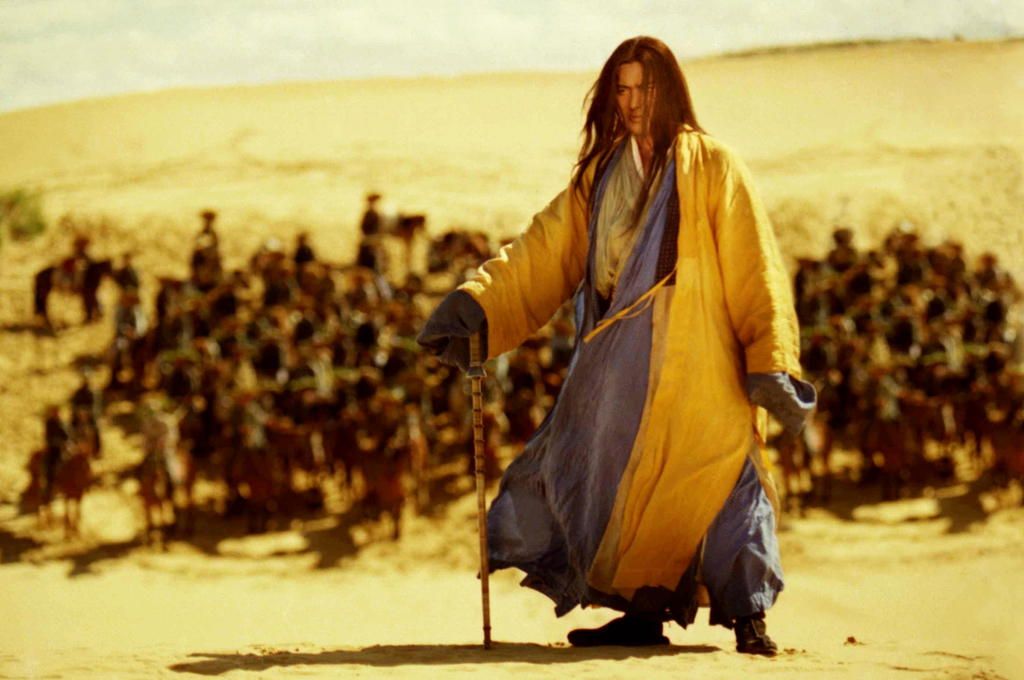
Ashes of Time takes various villains and side characters from Jin Yong's immortal Legend of the Condor Heroes (completely disregarding central protagonists Guo Jing and Huang Rong) and focuses on its own unique original prequel story taking place an undetermined number of years before the start of the original novel, which aims to explore the psychology of Guo Jing's principle adversary and supporting cast of martial arts masters years before he would ever meet most of them.
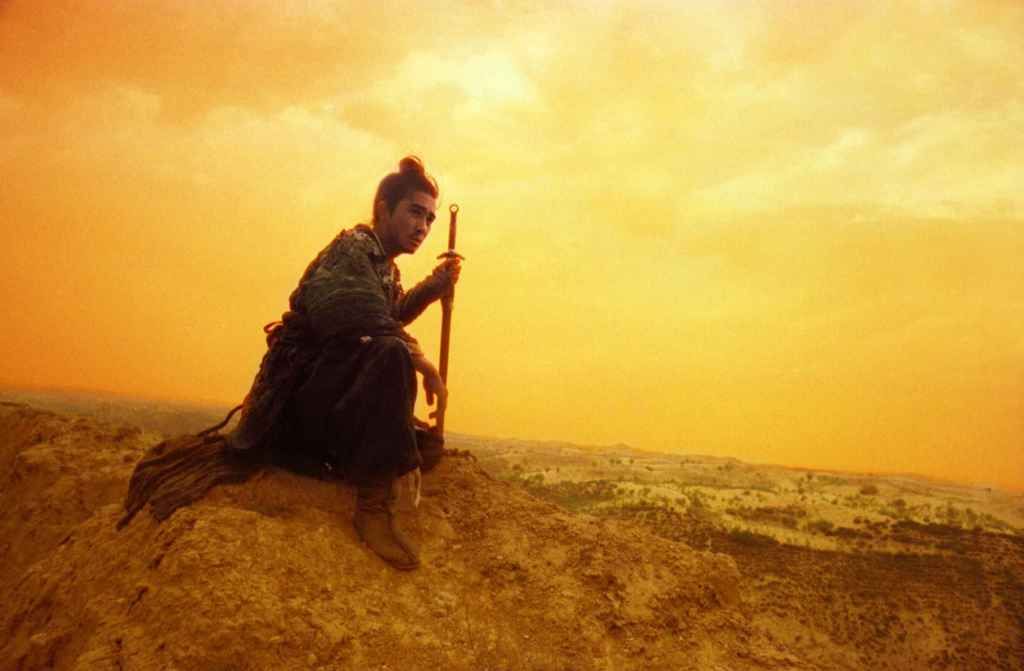
A crass and cynical way of describing this movie would be to essentially write it off as Wong Kar-Wai indulging in big budget, officially produced fan fiction: but the problem with that view is that Ashes of Time is SO well made and so ridiculously intelligent and stands so well on its own apart from any knowledge of or familiarity with the original Condor Heroes story (though having at least some familiarity with said story adds tremendously to it), that it absolutely and without a doubt rises well far above and completely avoids becoming what could've EASILY been, in lesser hands, an insufferable bit of masturbatory fan-retconning of what is (without hyperbole) one of the most singularly beloved Wuxia tales of the 20th century.
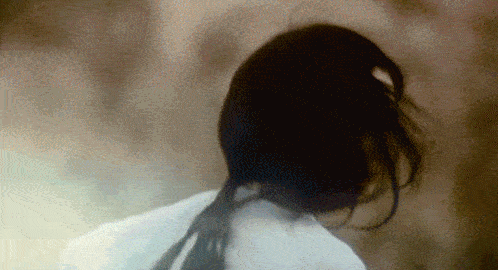
Centering on the mentally broken and dangerously unstable antagonist of the original Condor Heroes story Ouyang Feng (played with incredible nuance and restraint here by Leslie Cheung) as he wanders an arid desert reflecting on his past failures as a martial artist and his lost loves while occasionally fighting off attacks from a band of lethal martial arts assassins hot on his trail, Ashes of Time is less concerned with plot (there really isn't much of one here) than it is characterization and psychological character study.
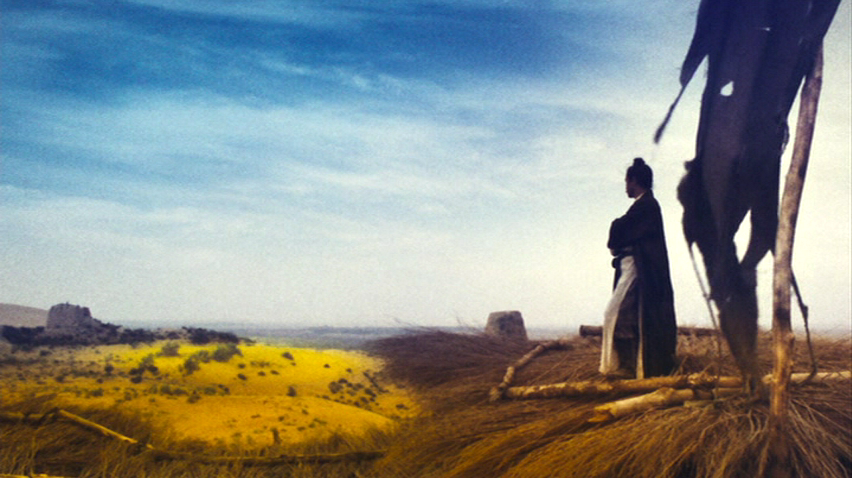
Ouyang Feng, a ruthless and cunning straight up villain in the original Condor Heroes story, is DEEPLY humanized here and presented not so much as a self-centered egomaniac obsessed with his status and standing in the Wulin world so much as man haunted by and suffocating under the weight of numerous irreparable regrets in his life and is finally brought to a critical crossroads by the end that one can easily and organically see how it could eventually some day lead to him becoming the calculating, honorless, ever-present walking knife constantly aiming for the noble Guo Jing's back.
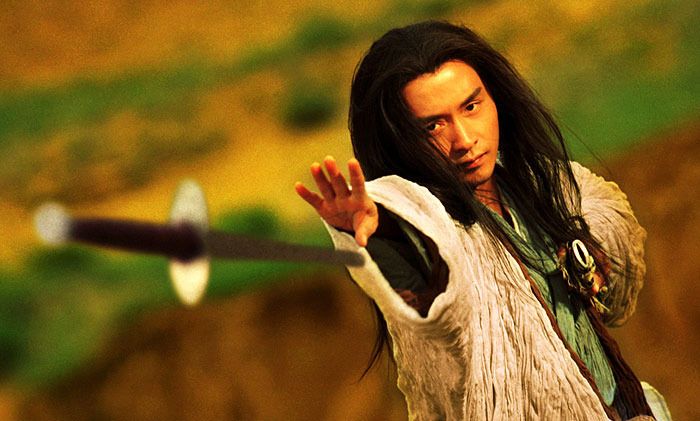
Further fleshed out also is Huang Yaoshi (also brilliantly played by Tony Leung Ka-Fai), an all-wise and virtuous (if highly unusual-to-a-fault) master in the original story, whose flaws and failings and human foibles are further brought to the forefront without in any way tainting or betraying the character's nobility in the original story. Ashes of Time is, generally speaking, not at all in the least bit a story of noble, heroic good guys battling against despicable, rat-bastard bad guys... rather its simply a fly on the wall portrait of psychologically wounded people who are all in various ways at a lost, confused, and emotionally vulnerable point in their lives as martial arts masters within classic ancient Jianghu (gorgeously photographed here with overwhelmingly beautiful cinematography that is absolutely to die for).
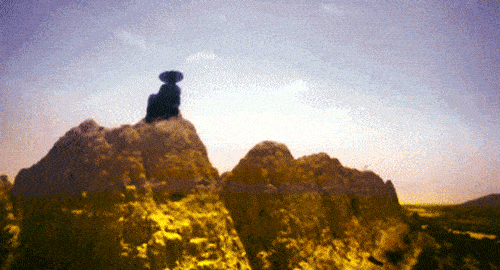
Instead of indulging further is nonsensical genre-bending wackiness for the sake of nonsensical genre-bending wackiness, both Wong Kar-Wai and Tsui Hark took the more classy and subdued approach of taking well known and well loved characters from an ubiquitously classic novel and an ubiquitously classic myth respectively, characters who within their original works were classically broad Wuxia archetypes in their original portrayal, and made them into messy, complicated bundles of all too human weakness and imperfection.
Without question Ashes of Time is easily one of the pinnacle highlights of the 90s post-HK New Wave era of Wuxia and is required viewing for anyone getting into the genre as a whole, while Green Snake is easily one of the most strikingly gorgeous and unique depictions of Jianghu and probably the best ever telling to date of one of Wuxia's oldest and most heavily retold tales.
…aaaaaaaaaand with that quick detour into high brow artful classiness out of the way, we now return to our regularly scheduled programming of early 90s sci fi/post-apocalyptic costumed Xia throwing motorcycles at each other in the middle of a quasi-futuristic Hong Kong.
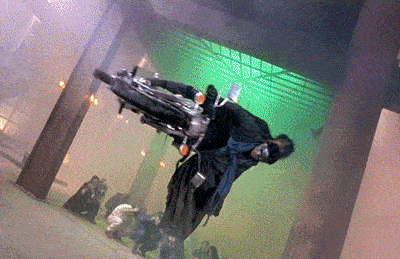
(Oh what, you thought I just randomly made that shit up?)
Lest we get too deeply carried away into artsy intellectualism here, this being the early 90s Wuxia landscape and all, no sophisticated, prestige entry in the genre could be allowed out into the world without at least SOME form of completely and utterly unhinged silliness to go along with it to help counterbalance the scales back in favor of the absolutely bugfuck bonkers. And Ashes of Time was hardly an exception.
Ashes of Time was an immensely troubled production: shot on location in real remote desert regions, the film went MASSIVELY over-budget, to a point where the studio could no longer afford to continue financing it before the film wrapped production. Desperate for further funding and so close to completing the film, Wong Kar-Wai hit upon an interesting solution: under a VERY tight budget and schedule, he used much of the same exact cast and crew (with a few other high profile additions, such as Joey Wong, which combined with Ashes of Time's cast made for a star-studded HK ensemble) to produce a much smaller film that could be quickly released in time for Chinese New Year (a typically busy moviegoing season) of 1993 and hopefully turn enough of a profit to be used to finish shooting Ashes of Time (which obviously of course it did).
This film would also be an adaptation of the Condor Heroes material in its own... uh... thoroughly and aggressively unique fashion.

Oh dear lord. Where to even begin with this one.
The film in question went under the title The Eagle Shooting Heroes (an often used alternate title to The Legend of the Condor Heroes), and like Ashes of Time was not in any way, shape, or form a faithfully accurate translation of the original source novel (seriously, you already even by 1993 had more than your pick of the litter for more faithful Condor Heroes renditions). And that is about where any and ALL similarities between this an Ashes of Time abruptly fucking ends.
The movie is a quasi-retelling of various subplots and side stories from the novel (and by “various” I mean a fucking five hundred car pileup of them: Jin Yong's Wuxia novels tended to be pretty epic in scope) with tertiary character Hong Qi taking up the lead protagonist role and with the added twist of turning the whole thing into one gigantic over the top slash fic/live action harem comedy by having virtually every single character fall in love with one another (Condor Heroes canon and sexual orientation of the characters be damned) in the most stupidly ridiculous combinations.
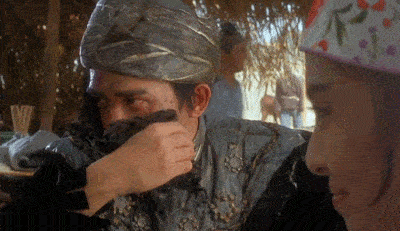

Hong Qi is played by Jacky Cheung (not to be mistaken for Chan) in both this and Ashes of Time, but virtually ALL of the rest of the casting between the two films is reshuffled, musical-chairs style, with much of the same actors across both films playing each others' characters in them (with Tony Leung Chiu Wai's turban-clad, pencil-moustachioed, Snidley Whiplash-esque rendition of Ouyang Feng being an absolute national treasure in this).
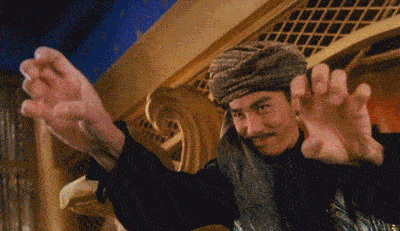

The BIG “hook” however that differentiates the '93 Eagle Shooting Heroes from most other Condor Heroes adaptations is its tone and comedic style: the film acts as basically a straight up spoof or parody of the story, almost in the rough Hong Kong Wuxia equivalent of a classic Zucker Brothers' style comedy.
Let the ramifications of that sink in for a second: early 90s Hong Kong Wuxia, with ALL of the perfectly distilled, nonsensically gonzo warped crazy that that entails as is, with the further addition of being presented as a fucking zany, madcap parody.
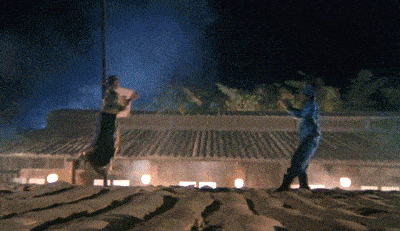

You kids think that early Dragon Ball was silly, whimsical fantasy martial arts? Not a one of you has the slightest CLUE what over the top wacky fantasy kung fu actually looks like until you've sampled this goddamned thing, which is plainly speaking the cinematic equivalent of an ungodly violent fit of psychotic schizophrenia spurred on by magic mushrooms laced with LSD that's been tainted by Joker Venom. I'll let the gifs throughout speak for themselves.
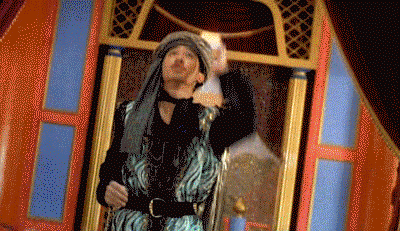
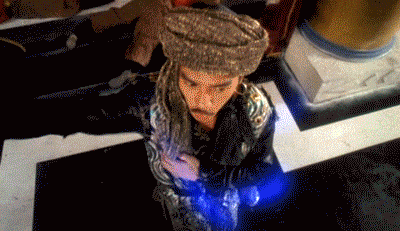
(Best. Ki Power Up. Ever.)
Full disclosure once again: Eagle Shooting Heroes was the single funniest, most mesmerizingly amazing fucking thing on the planet to 10 year old Kunzait.
Of course any discussion of Wuxia's early 90s genre barrier-destroying excess would scarcely be complete without at least a cursory mention of notorious and controversial Hong Kong writer/producer/director Wong Jing.
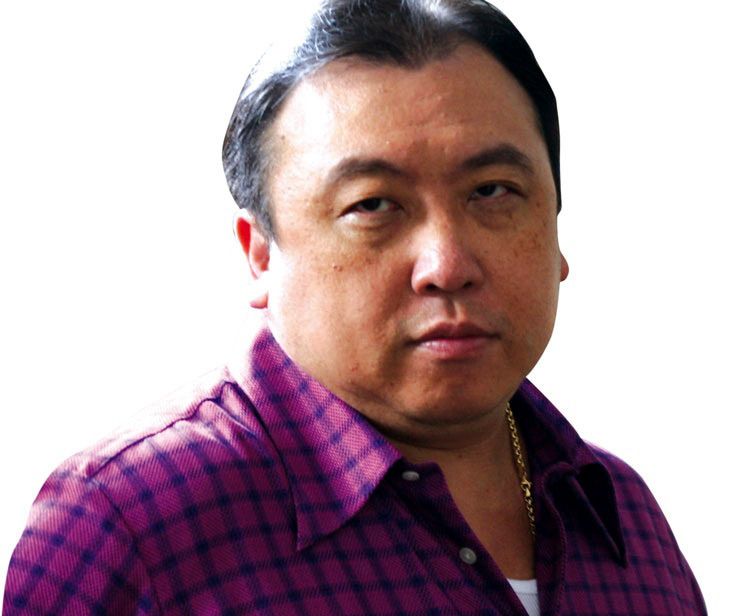
To call Wong Jing a divisive figure in Hong Kong film fandom, Wuxia and otherwise, is sort of like saying that Kanye West only has just a hair bit of an ego problem.
With a MASSIVE career of literally hundreds of films to his credit going back to the late 70s/early 80s where he cut his teeth on a few later-period Shaw Bros. films (and given what most late-period Shaw films were like along with what the rest of Jing's body of work thereafter would entail, this is the farthest thing in the world from surprising), Wong Jing was an almost impossible to avoid fixture of Hong Kong cinema throughout a vast portion of the 90s.
And ooooooh, how well his movies slid ever so comfortably into the absolutely bonkers zeitgeist of HK films during those zany years. If anything, most of Wong Jing's films from the era were a little TOO early 90s for their own good.
His credits cover an impossibly broad and diverse array of genres (even though he didn't direct it, he was one of the mastermind producers behind Naked Killer, one of the most iconic Hong Kong action films from the early 90s and one of my personal most beloved childhood favorites), but obviously we all know which genre's the pertinent one here.
Before we delve into that though, it should also be noted that its also sort of impossible to talk about Wong Jing's films (Wuxia or otherwise) and his overall style without at least mentioning his personal life a bit.
Besides being a bankable and popular writer/producer/director of numerous blockbuster HK films, Jing was also throughout the heyday of his career a bit of a party animal. And by “a bit” I mean he essentially spent the vast overwhelming majority of the 80s and 90s inhaling at least half the cocaine supply of East Asia, bilking the real life Hong Kong Triads (re: Chinese Mafia) out of large piles of cash to help fund his movies (or to gamble away), and - in between ducking brutal beatings from Triad lone sharks – porking pretty much nearly every single one of the most beautiful actresses and starlets in the Hong Kong film industry at the time (most famously 90s HK sex symbol Chingmy Yau, making him as much a fixture of Hong Kong tabloids as movies). Somewhere in the middle of all this good clean wholesome fun and excitement, he somehow found time to maintain an extremely busy and high profile film career.
I bring these personal details about him up if only because the end results of his films are clearly and unquestionably the byproduct of someone on massive, MASSIVE quantities of cocaine and living an ultra fast, death defying lifestyle of unrepentant decadence and excess.
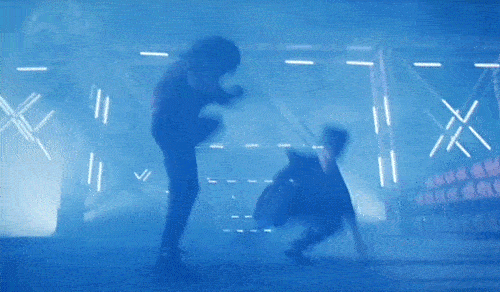
(Rick James was certainly correct.)
Jing's filmmaking style can best be characterized as... somewhat fast paced, showing little to no regard for genre conventions or limitations of any sort, shrugging off “tonal balance” with the utmost abandon even by early 90s Hong Kong standards, and generally being guided or motivated by few other narrative through lines more thought out than “Hmmm, what loopy bit of random nonsense is amusing to me at this particular minute?” And his sense of humor can also be described as a wee bit juvenile and fixated on crass sexual humor.
Throw this sensibility in with Wuxia, and it should be pretty apparent which particular Japanese manga artist a lot of his films more than passingly resemble in style and tone (and no the obscene irony in how DRASTICALLY opposingly different the two men otherwise are on a personal level is far from lost on me).
So how batshit early 90s are Wong Jing's Wuxia films? Well...
He somehow figured out a way to include a GoLion/Voltron-esque “mecha combine” martial arts technique in a film that otherwise takes place entirely in classic Jianghu.
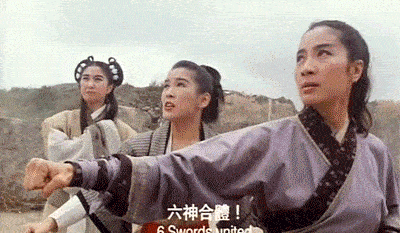
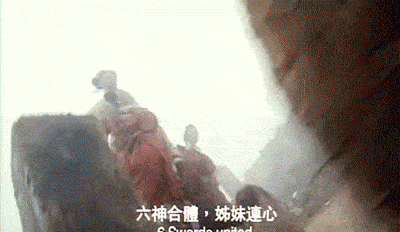
(Believe it or not, by Jing's standards this is almost normal.)
He's staged a full blown, highly destructive Chi/Ki slinging Wuxia battle... in a convenience store.
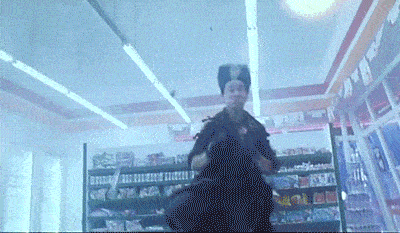

(Strange things are afoot at the Circle K.)
And of course, he's given the world – I shit you not – Wuxia Jesus Christ.
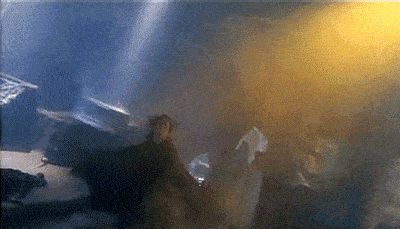
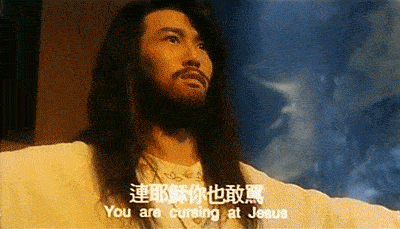
(I really, REALLY couldn't possibly make this shit up if I tried. I'd need at least a gram or two of the same coke that Jing's snorted.)
Right. So in essence, Jing is about as emblematic of the over the top crude silliness inherent to so much of late 80s/early 90s Wuxia as Donald Trump is to tragic comb-overs and hating Mexicans.
As I noted before, as the 90s went on and the tone and presentation of Wuxia was getting ever increasingly loopier and more ridiculous across virtually all forms of media, there was the beginnings of a backlash starting to form against this in some corners of fandom. Some critics were beginning to opine for more of the high brow drama and artfulness characterized by the glory days of King Hu and Lau Kar-Leung (welcoming the occasional return to such prestige like Ashes of Time with open arms), and there were certainly a contingent of fans starting to feel a bit burnt out on and exhausted with all the sugar-rushed zaniness (I, still being an over-energetic and sugar-rushed middle school kid at the time, wasn't one of them, though that still didn't stop me from also digging the hell out of Ashes of Time, Green Snake, and their ilk).
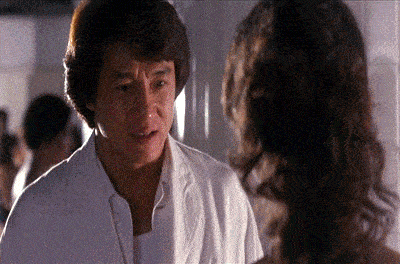
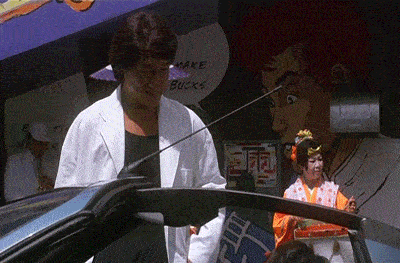
In no small part helped by his real life (and highly publicized) drug and sex-fueled antics, as well as his rotten reputation amongst some of the most well liked and beloved Hong Kong film stars of the day - Jackie Chan starred in a profoundly deranged and demented live action adaptation of the classic 80s manga/anime City Hunter under Jing's direction in 1994 and afterward vowed to never work with him again, with Chan having nothing but the utmost contempt and vitriolic dislike for Jing even to this day...

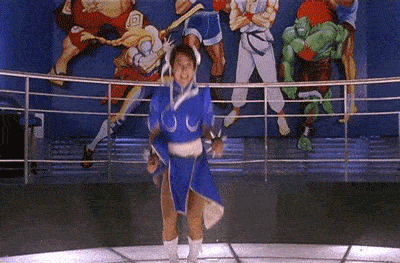
(Whatever went on between the two, its entirely possible that Chan could also be bitter that Jing made him perform one of the most hilariously ridiculous fight scenes ever whilst cosplaying in drag as Chun-Li.)
...Jing has in many Wuxia and HK film circles become - fairly or not - a bit of a scapegoat and critical target for everything that was seen as too much, too weird, and too far out there about the late 80s/early 90s post-HK New Wave Wuxia landscape: particularly that much more so amongst Wuxia fans who were generally more predisposed towards disliking any of the silly genre-mashup stew of the time period in general and instead favoring more classically traditional Wuxia.
That being said though, for all the controversy, his movies were still incredibly popular (particularly at the time) and many of them still had their share of fans (I uh... was and mostly remain one of them) who view them as ridiculously extreme and completely off their meds guilty pleasures.
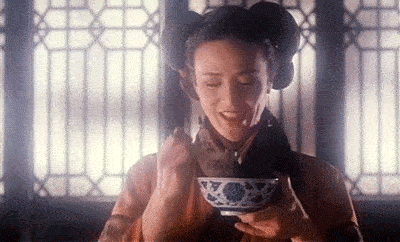
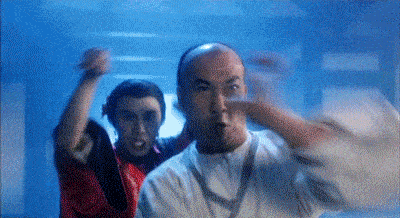
And to once again draw another parallel between Jing and Toriyama: while obviously our beloved shut-in introvert of a mangaka has probably (one can assume at least) never in his life come within a hundred million miles of Jing's breakneck hedonistic lifestyle, nor is he looked upon by his peers in the manga/anime industry as some sort of a sleaze, the incredible tonal and energetic similarities in the end results of many of their work along with their strikingly similar sense of sophomoric humor (and mixing said humor with kung fu/Wuxia tropes) did also result in a similar divide among anime and manga fans in the early to mid 90s regarding Toriayma and Dragon Ball.
While a great many Millennial and post-Toonami anime and manga fans hold up Dragon Ball today with a great deal of nostalgic reverence and look upon it as a fondly remembered classic, the anime & manga fanbase of circa 1991-1996-ish or so (the bulk of the years in which much of it's later half was still contemporary) had a much starker degree of a divisive attitude towards it. While obviously Dragon Ball has always been ridiculously popular and has always had its devoted legions of mega-fans, there were still a fairly large contingent of anime and manga buffs of the time who overall had a much, much stricter “arthouse” standard for anime and manga as a whole, and wrote off Dragon Ball and many other things like it as dumbfuck juvenile garbage.
This divide in many ways directly mirrors the split in Hong Kong film and wider Wuxia fandom towards many of Wong Jing's films: in BOTH cases you had an output of broad, crowd pleasing, lightning speed, farcical Wuxia/supernatural martial arts action comedies that were filled to the gills with fighting, violence, and dumb boobie and pee pee gags, and took themselves in no way, shape, or form seriously most of the time, that were devoured and loved by large audiences while being held in contempt by a vocal critical segment that felt the genre was over-indulging WAY too much on excessive non-sequitur humor and needed to pump the brakes back towards something a bit more lucid and thoughtful.
Honestly, the biggest thing separating Wong Jing from Toriyama as creators (besides their general target demographics) is the aforementioned comically contrasting personal lives of the two. You'd certainly never guess there was such a stark divide in personality/lifestyle between them going solely off their respective early 90s style of Wuxia storytelling.
Hell, Jing even featured this fun little cameo appearance in one of his most notoriously gonzo sci fi-Wuxia films (and quasi-but-not-really-adaptation of Street Fighter II: that game crops up a lot in Jing's early 90s oeuvre) Future Cops:
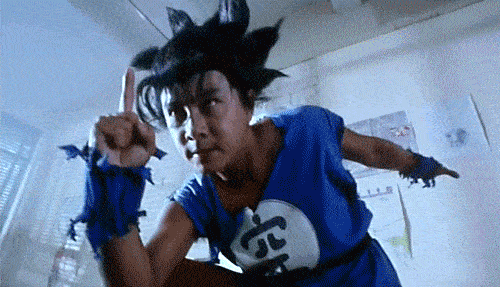
(His entrance is even immediately punctuated by a few quick unmistakable notes of Makafushigi Adventure.)
With critics starting to lose patience with all this nonsense and a schism in opinion on the continued direction Wuxia should take rapidly growing within Wuxia fandom, the wheels were starting to come off the hyper-ridiculous genre-mashup Wuxia fad even just a couple more years before the Handover.
December of 1993 would see the release of a suitably bombastic Wong Jing-directed adaptation of Jin Yong's Heaven Sword and Dragon Sabre starring Jet Li (still in his superstar prime) as Zhang Wuji and Sammo Hung as Zhang Sanfeng: by all measures of the time, this film had “box office slam dunk” written all over it, yet nonetheless it tanked pretty massively in its homeland (though scored a pretty sizable fanbase among Wuxia fans in the U.S.) ensuring that its cliffhanger ending would go forever unresolved.
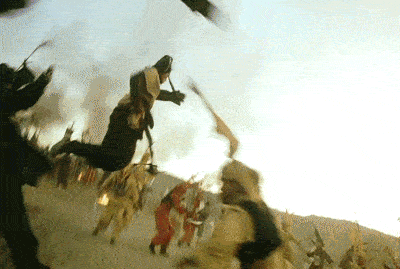
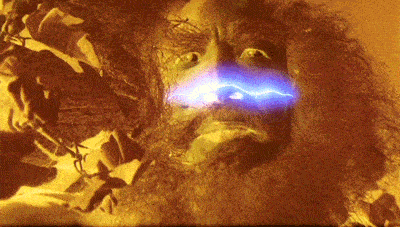
(Jet Li as Zhang Wuji in Wong Jing's off-kilter, over the top interpretation of Heaven Sword and Dragon Sabre.)
1994 and 1995 would see two more really big New Wave Wuxia box office bombs: an expanded and drastically reworked adaptation of a side story within Demi-Gods and Semi-Devils (titled Dragon Chronicles: The Maidens of Heavenly Mountain), and Tsui Hark's The Blade respectively. The former being a longtime personal favorite of mine, and the latter being retroactively hailed now as an outright masterpiece and one of Hark's most under-appreciated and misunderstood films (which as a massive Hark fanboy I'm inclined to agree).
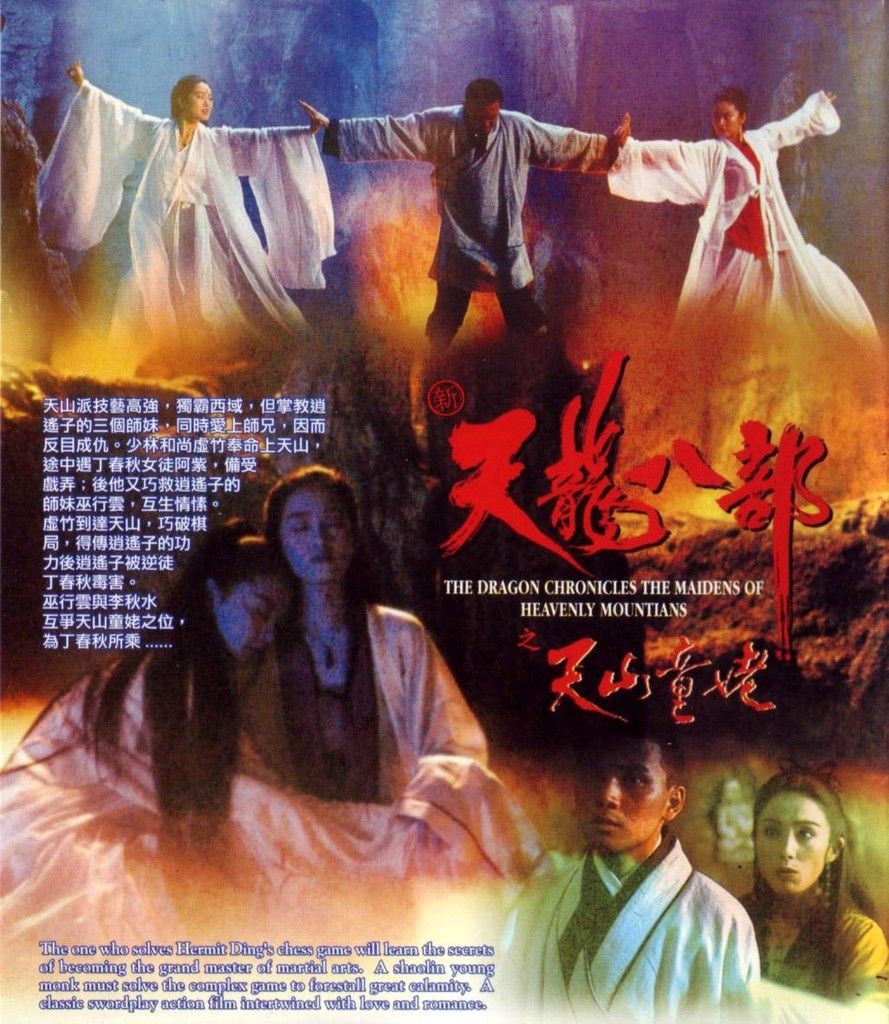
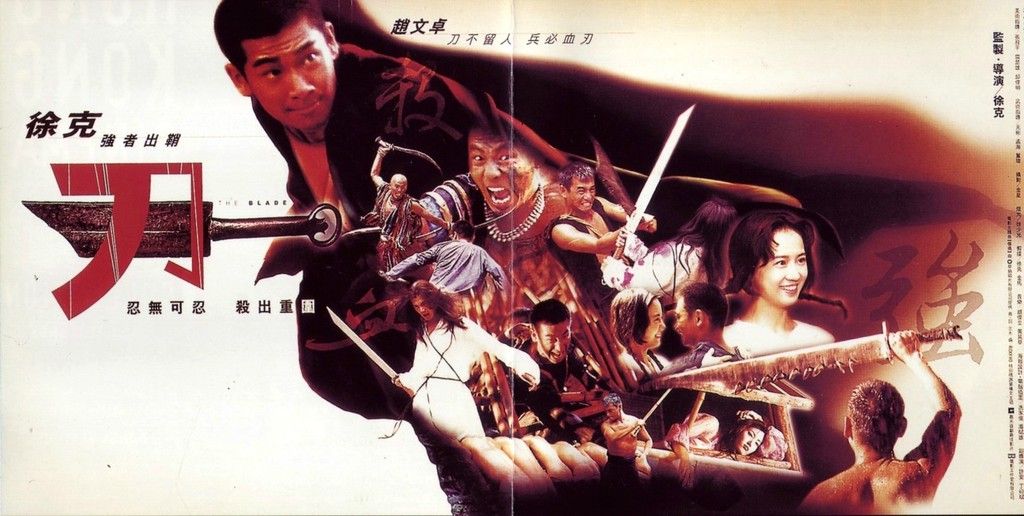
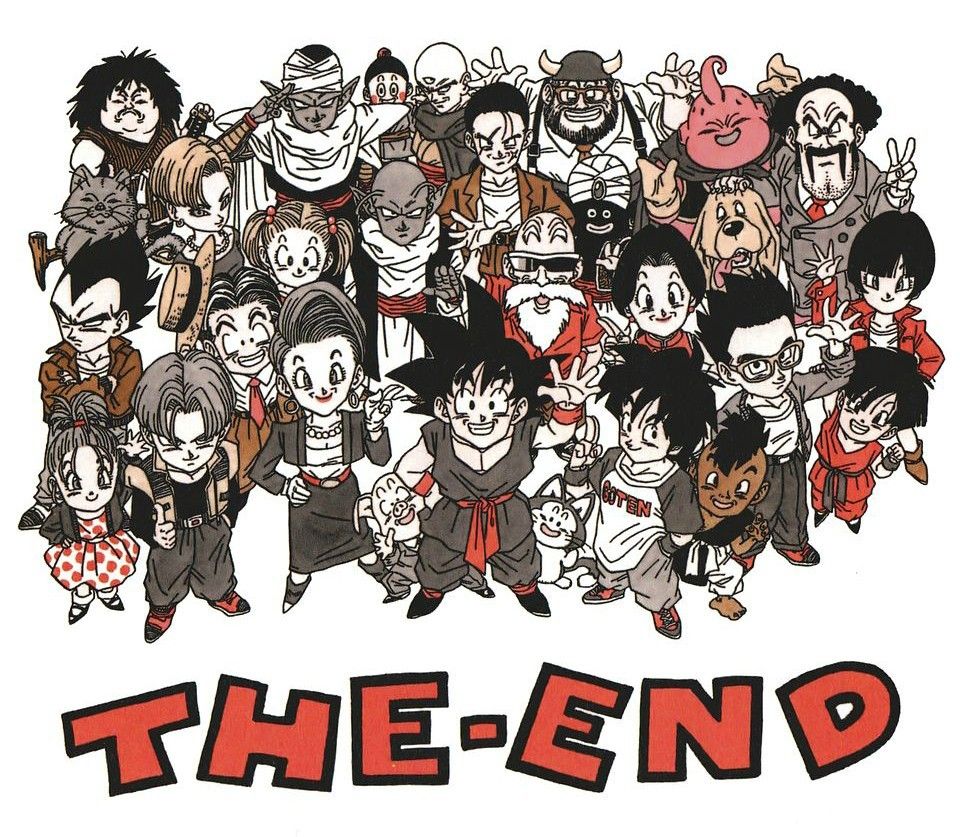
(The mid-90s marked the beginning of the end for New Wave Wuxia in its native Hong Kong: sadly a few pretty rock solid films, one of them a tragically underestimated classic, were among the first box office casualties of a growing fatigue for the style. Also interestingly enough, 1995 also marked the same year that a certain Japanese Wuxia manga, which had by this point ran almost the full gamut of then-trendy late 80s/early 90s Wuxia cliches, came to a close and bid its decade long readership a fond farewell.)
At the time however with the backlash against the New Wave style of Wuxia intensifying, Hark – as the poster boy for the whole craze within this particular genre – took a HUGE brunt of the criticism for a little while, after almost 15 years of being a critical darling and hailed as a visionary. Even well long after the furor over all this has long since passed and Hark generally being accepted by most once more as an all time important landmark filmmaker, his name is still to this day a four letter word among mega-hardcore Wuxia traditionalists.
1997 of course would see the Handover finally realized, with Hong Kong being officially re-assimilated back into mainland China and no longer a part of the British colonies. Now governed under strict Communist laws, a tremendous number of creative restrictions heretofore non-existent in Hong Kong were now in effect across their media and artistic output.
Many of the most prolific New Wave-era filmmakers left the country in droves, largely for Hollywood (Hark among them), spurred on by the large amount of enthusiastic goodwill and popularity their films had accumulated abroad among us Westerners throughout the latter 80s and early 90s. Sadly Hollywood producers and executives famously couldn't really figure out what the fuck to do with any of them (with some fans and critics even crying racism), and with the sole exception of John Woo (who defected to Hollywood much earlier in 1993 and had a lot of help early on from Sam Raimi, who was a big fan of his), they were largely relegated to making embarrassing D-list action movies.
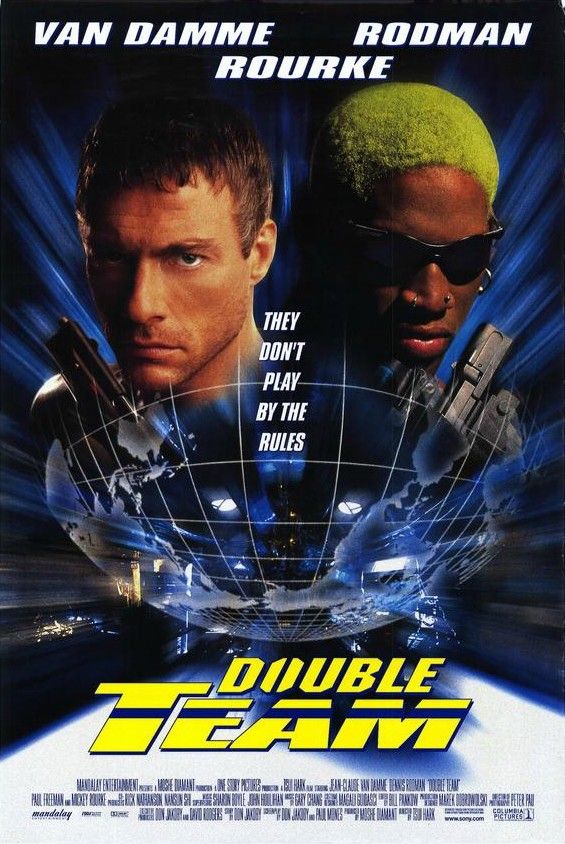
(Brought to you by the visionary director of Zu: Warriors From the Magic Mountain.)
Despite the new change in government and stricter content guidelines, Hong Kong would still of course act as China's own Hollywood equivalent, continuously pumping out countless movies every year up through to this very day. During the late 90s immediately post-Handover however, many Wuxia films drastically underperformed.
Director Andrew Lau would briefly prove to be an exception however, scoring a sizable blockbuster hit in 1998 with the first live action adaptation of Ma Wing-Shing's obscenely popular Wuxia manhua Fung Wan aka Storm Riders (and which would also make history as the first ever Wuxia film to make extensive use of CGI: so long rotoscoped Ki effects, it was a helluva run while it lasted).
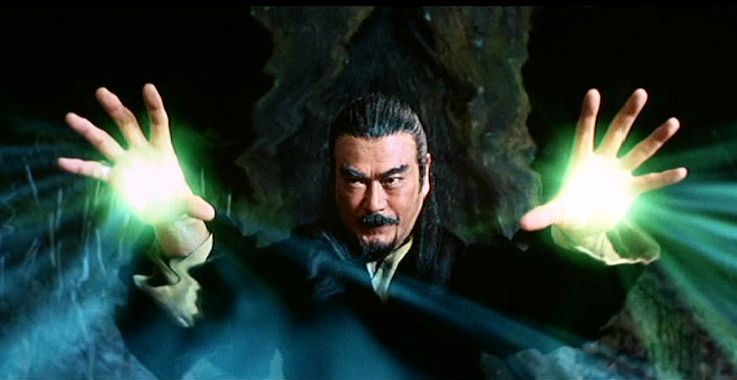
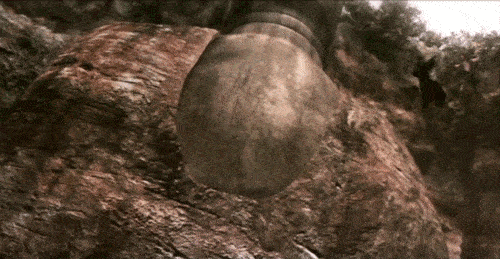
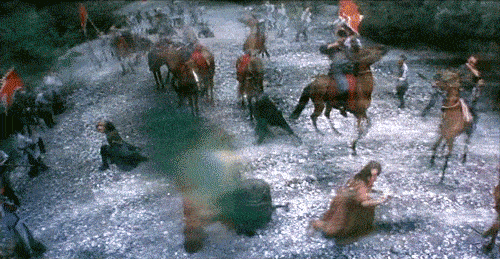
(Storm Riders wowed not just Chinese but also international/Western audiences in 1998 by being the first ever live action Wuxia film to extensively use then-state of the art CGI effects for its supernatural Ki-powered martial arts fight scenes. Practical effects will henceforth from here take a HUGE backseat, while hand drawn rotoscoping will largely be extinct entirely.)
However with the initial novelty and excitement of CG use in Wuxia wearing off rather quickly, none of Lau's follow up Wuxia films really matched up to Storm Riders in terms of box office success: not even a return to the well of adapting a classic Ma Wing-Shing manhua, this time Chinese Hero in 1999.
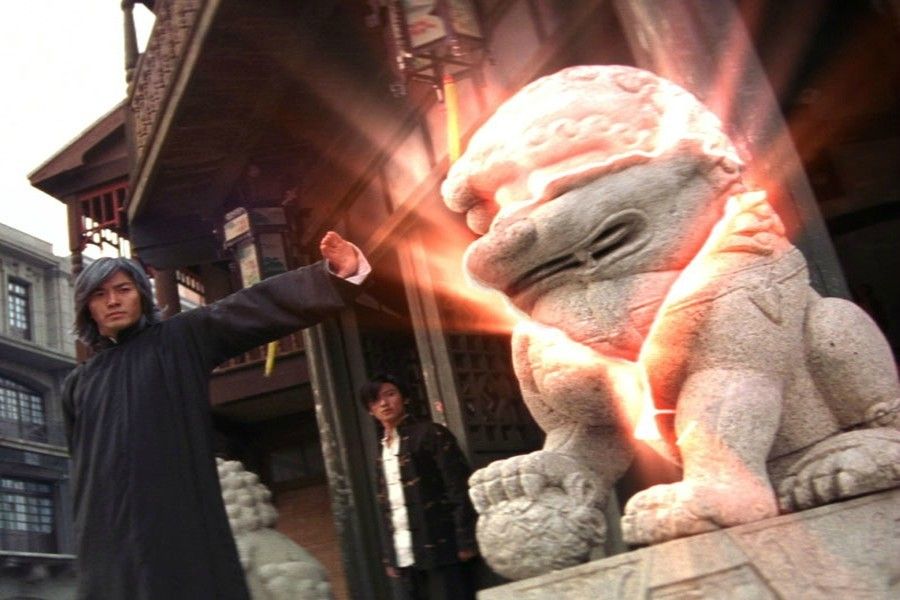
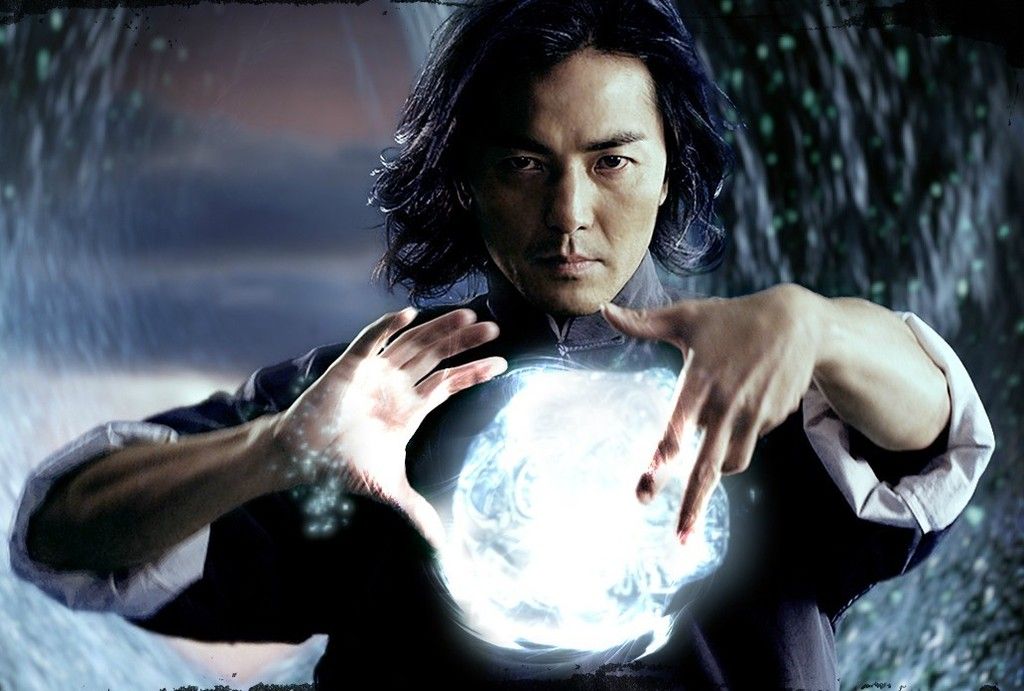
(Even a well made, big budget live action adaptation of a manhua as monumentally influential and classic as Chinese Hero – complete with a rousing recreation of the famed “atop the Statue of Liberty” duel for the climax - couldn't drum up too much excitement for Wuxia among Hong Kong audiences still in a depressed funk over the Handover by the tail-end of the 90s.)
During these last few years of the 90s while Hong Kong was in the midst of its “bad hangover” comedown from the giant cultural sendoff party post-Handover, the mark of the HK New Wave's output was still fresh in the minds of many foreigners and reverberating fairly strongly across cultural lines in other territories and wouldn't quite disappear entirely just yet.
Over in Japan, a few more stray manga and anime OVAs were still coming about that were clearly a byproduct of 90s Wuxia's influence (albeit generally on a more flowery/sappy/romantic “Shojo”-ish end of things), including Saiyuki and the latter output of Fushigi Yuugi.
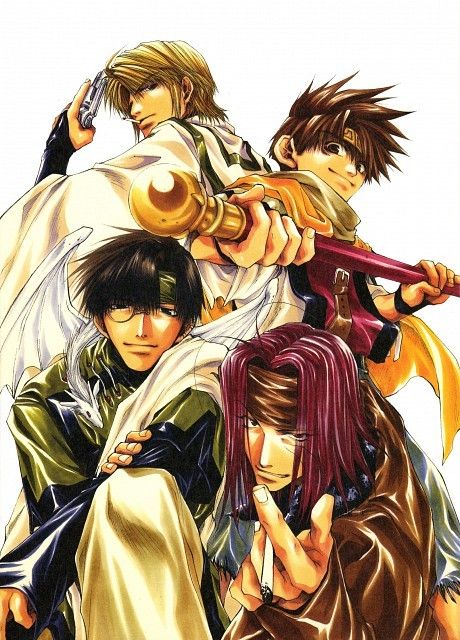

Moreover, the arcade fighting game scene wasn't quite done yet, and would still have a few more years of geek cultural vitality left in it, with more Capcom & SNK titles and similar derivatives still drawing heavily from the early 90s Wuxia zeitgeist and still garnering (mostly) favorable attention.

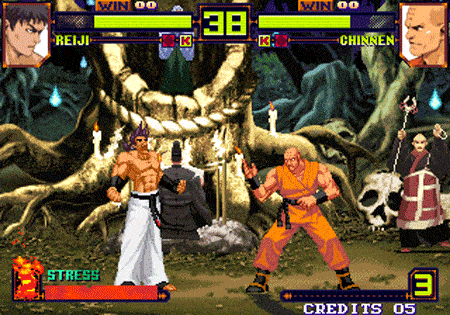
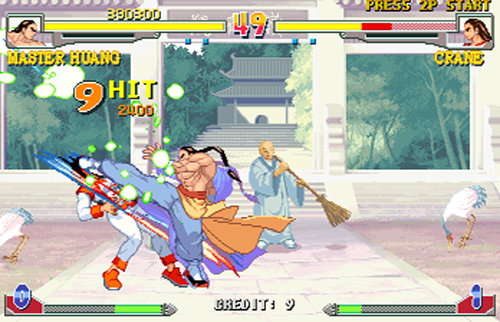
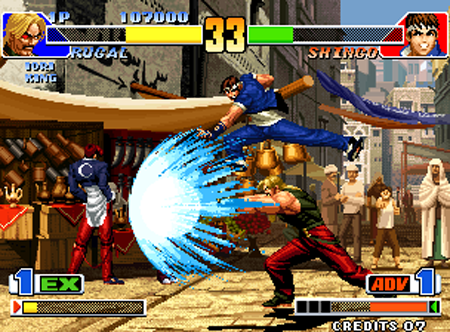
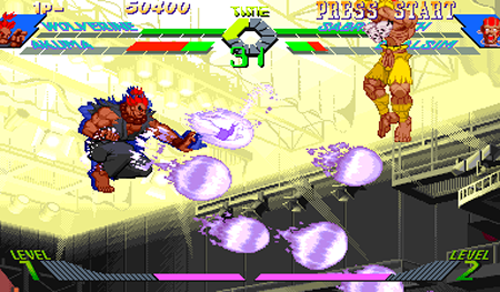
Over on America's end of it, the late 80s/early 90s youth culture who spent their late teens and 20s absorbing the output of Hong Kong Wuxia at the very height of the New Wave era were starting to get older and hitting their 30s by the late 90s/early 2000s. In a lot of ways the tail-end of the 90s and beginning of the 2000s were the swan song years of the Grunge Generation's predominance over pop culture.
Their zeitgeist was just starting to fade out and give way to the next crop of young folks. But of course, the geeks of this era weren't going to disappear without at least one final HUGE pop cultural footprint to leave in their wake, one that was the sum total of everything embodied by the era's collective fixation on Hong Kong New Wave Wuxia, Heroic Bloodshed, Japanese (Seinen) anime, and William Gibson-ish cyberpunk in general.
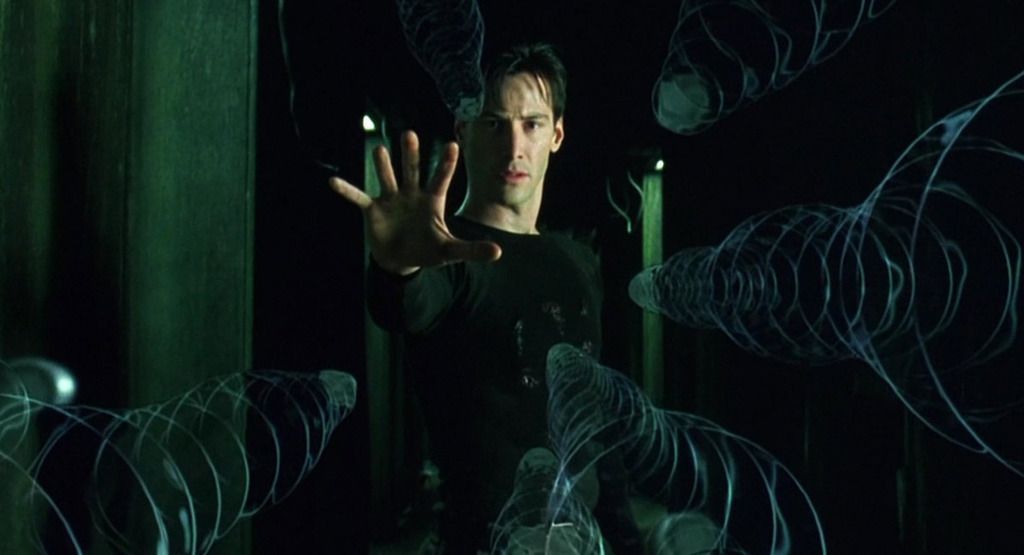
”Whoa.”
Yep. Do I even need to namedrop this one?
Make no mistake, while the vast majority of The Matrix's creative makeup is STEEPED in cyberpunk...
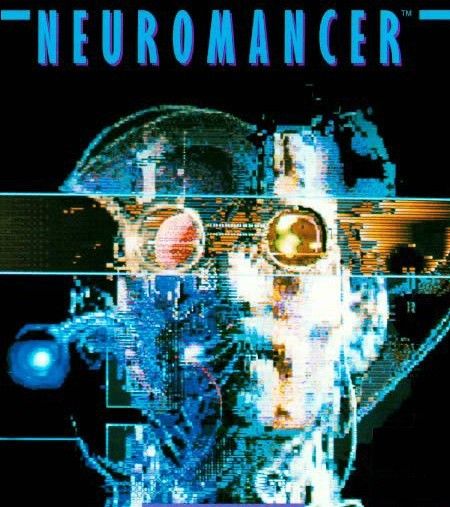
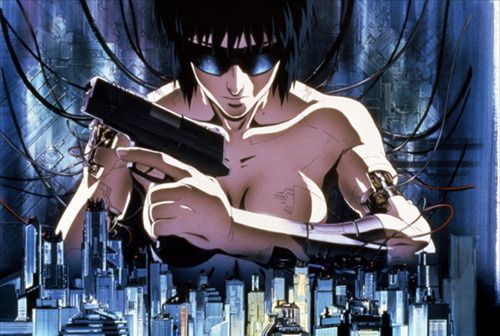
(The unmistakable fingerprints of William Gibson's Neuromancer - an absolutely important, iconic sci fi book to most late 80s/early 90s nerds and which singlehandedly invented modern cyberpunk as we know it - is ALL over the film, down to borrowing the name “The Matrix” for a cyberspace/virtual reality world. Its also commonly known that the Wachowski siblings showed the film's prospective producers the 1995 anime film version of Ghost in the Shell and said to them flat out “We want to make basically this in live action.”)
…its also been reiterated by the Wachowskis a great numerous times (and is frankly more than readily apparent) that the influence Hong Kong Wuxia played a HUGE vital role as well in creating the style of superpowered martial arts seen in the film (to the point of the Wachowskis drafting legendary and much earlier aforementioned Hong Kong martial arts/Wuxia director Yuen Woo-Ping to handle the fight choreography, which also had the side benefit of getting the Hong Kong legend's foot in the door in doing fight/stunt work for other mainstream Hollywood blockbusters).
While the core of the Matrix's story is centered on a virtual reality world so realistic that most of its populace is none the wiser of its artificial nature while allowing hackers to “bend” its rules of reality, this has the effect of allowing said hackers (and our protagonists, as well as interestingly enough, fighters from outside mainstream society on the far fringes) as well as sentient computer programs within the Matrix (our villains, and also interestingly, fighters for a corrupt power structure) to fight and move basically like Wulin warriors within the Matrix (almost making it, at least in part, a cyberpunk Jianghu in a weird way).

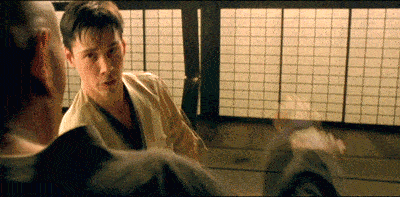
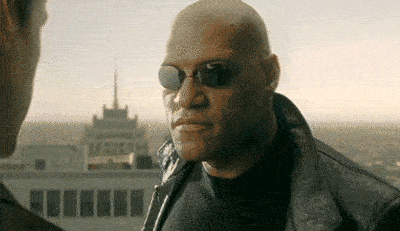
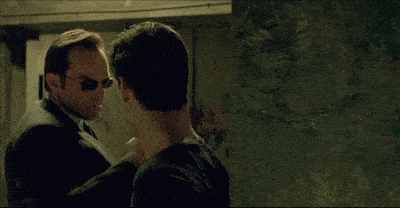
”Free your mind.”
And while being largely sci fi/cyberpunk, a deep element of spirituality also runs very deep through the film. A lot of this comes from various philosophy writings that the Wachowskis were also fascinated by, but some of it also stems from the influence of Taoist mysticism that runs through Wuxia as a whole, relating to martial arts mastery almost as being like that of a person unlocking their inner godhood.
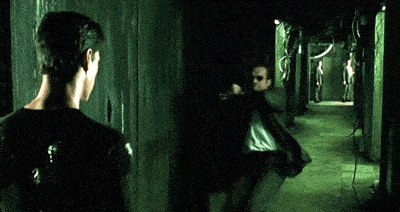
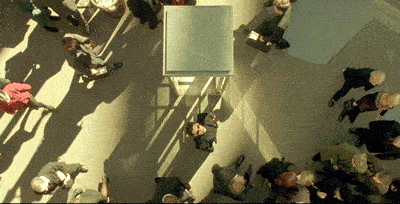
While clearly The Matrix is FAR more cyberpunk than overtly Wuxia, that there's enough of a noticeable strand of Wuxia's DNA in there amidst the modern/futuristic sci fi story makes it, in many ways, the ultimate expression of what Wuxia largely was throughout the vast bulk of the 90s.
That it came out within the final year of the decade as well as just a year before one of the single most landscape altering (or rather, re-altering) Wuxia films of the last 15 years, seems rather fitting in hindsight.

Yet another one that I'd hope and pray most people here are at least passingly familiar with.
Crouching Tiger Hidden Dragon: for a certain age group of people in the U.S., this movie's essentially synonymous with Wuxia. Whereas the genre broke through in America among mostly black audiences as well as the more sleazy and disreputable audiences of the grindhouse circuit throughout the 70s and early 80s, then broke through on a larger scale among hardcore nerds and punk rock outcasts of the grunge era in the late 80s and early 90s, Crouching Tiger finally brought the genre properly to the Mom & Pop middle American mainstream in the year 2000.
I mean fuck, there was even a damned Geico commercial where they flat out namedrop the genre.
Even beyond this though, Crouching Tiger was the final nail in the coffin of the New Wave era and marked the beginning of a wildly different new era and direction for Wuxia: one that largely looked backwards to the past instead of within the modern present (or ahead to the future) as the New Wave stuff often did.

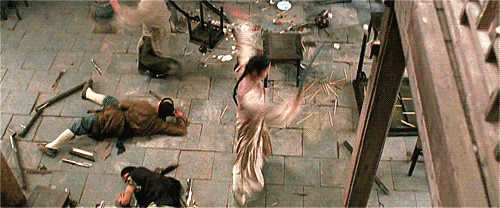
Based on the fourth installment (out of five) of the Crane Iron novel series by Wuxia author Wang Dulu, in a great many ways Crouching Tiger Hidden Dragon is among the most generic and painfully unremarkable (if gorgeously well made and lovingly crafted) Wuxia films one can think of. And yet, for the then-initiated, that was in part kind of the point and the appeal (and for the uninitiated, well it was all news to them anyway). Crouching Tiger yanked the genre viciously by the neck back to basics and back to its roots after a more than 15 solid years long violently wild acid trip through total feverish lunacy.
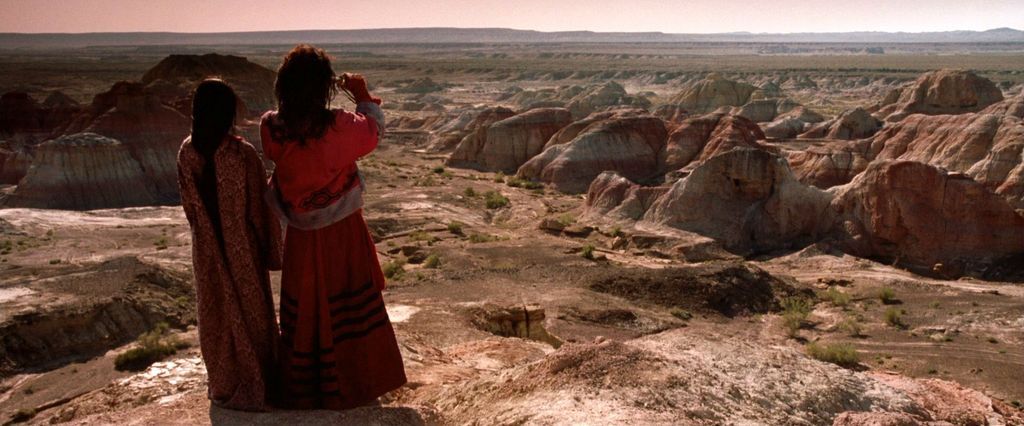
If the Wuxia landscape of the 80s and early 90s were a massive college dorm party filled to the brim with booze, drugs, hookers, and blasting rock music (hosted probably by Wong Jing), and the late 90s the godawful terrible hangover the next morning, then Crouching Tiger marked the fresh cup of morning coffee and Aspirin to wash away the skull-pounding headache and fragmented memories of the night prior.
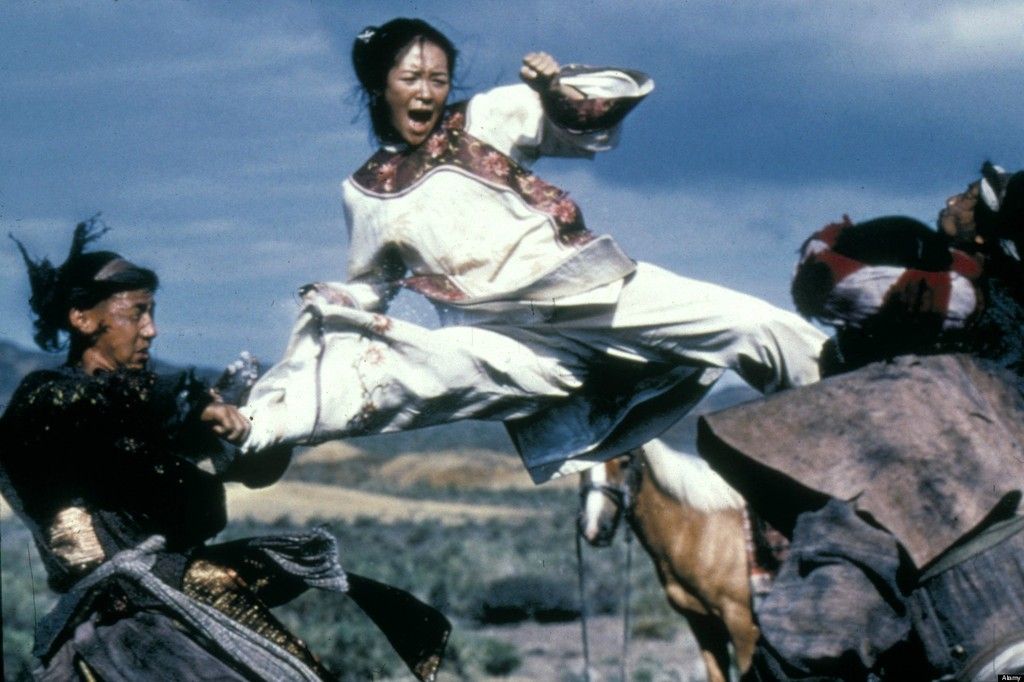
It should also be added that the film was also more than likely further helped in the American mainstream by the gargantuan popularity of The Matrix, which introduced a lot of non-geeks/normals to the basic idea of Wuxia-like martial arts fighting, and also by constant interviews with the Wachowskis and assorted promotional material which further hammered upon the massive influence of Wuxia upon The Matrix's martial arts fights and even some of its core themes. The Matrix, to some extent certainly, helped grease the wheels that allowed for Crouching Tiger to be a massive mainstream multiplex hit, despite being a subtitled foreign drama in a Chinese genre that up till then was primarily the domain (here in America that is) of super nerds/grunge kids and grindhouse theater patrons/bootleg VHS collectors living in shitty, low income slum areas.
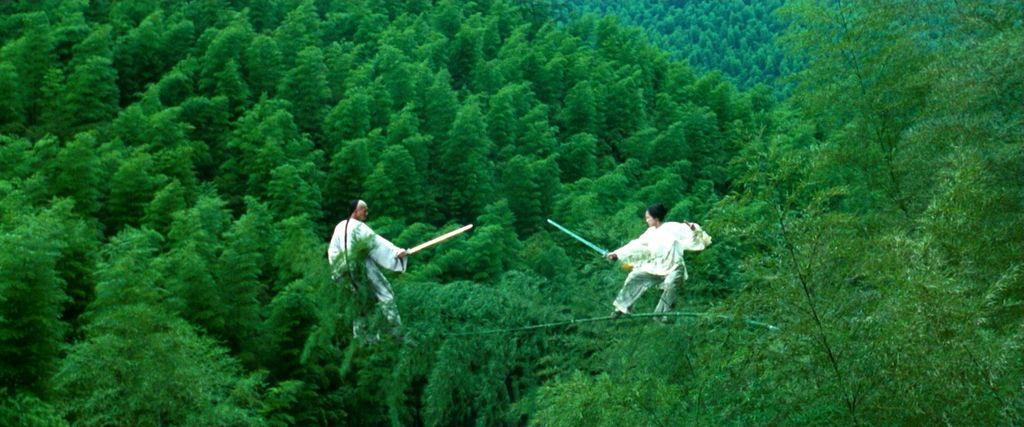
Nonetheless, both The Matrix and Crouching Tiger, for an all-too-brief period in the early 2000s, hugely popularized Wuxia-esque fighting and Hong Kong-style fight staging and choreography in American mainstream summer action blockbusters.
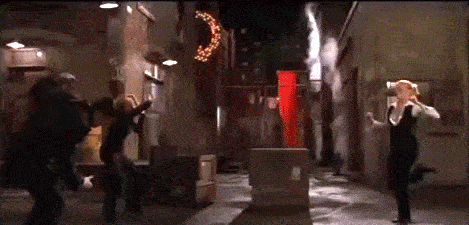
(Regardless of how much logical sense it might or might not have made in the given movie.)
While Crouching Tiger was a modest enough success in its native China, its Western success abroad was not only substantially larger (it is still to date the highest grossing foreign language film in America by a pretty wide margin), it also lead to it being the first ever Wuxia film to have a massive presence at the American Academy Awards in 2001, being nominated for ten (Best Picture among them) and winning four of them including Best Foreign Language Film.
In spite of its fairly benign, lukewarm reception in its native country (the movie IS really good unquestionably, but again it's the farthest thing ever from unique within its genre) the incredibly receptive response the film would have in the U.S. mainstream (who were, outside of certain circles, completely ignorant of and largely unexposed to the genre, in spite of its absolutely staggeringly massive history) would go onto dramatically transform the Wuxia landscape and redefine it for the vast majority of the 2000s.
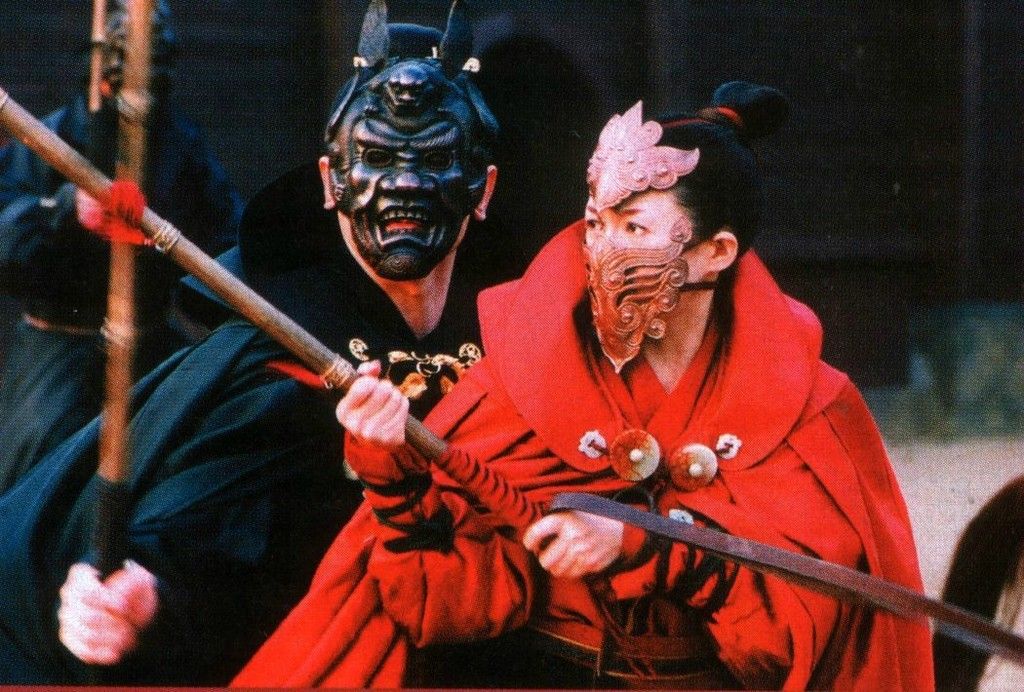
(The Legend of the Black Scorpion, 2006)
With the cultural mania of the Hong Kong Handover now well over with and Crouching Tiger proving that Wuxia could achieve tremendous 200 million+ box office success and prestige award glory in the Western world, the 2000s would see the over-caffeinated, wonky crazed genre merging, modernizations, and starker tonal schizophrenia dissipate a HUGE deal across Wuxia. In its place, the genre would by and large settle back a great, great deal into more rigid traditionalism.

(The Promise, 2005)
No more time travel, no more robots and cyborgs and mutants, no more deeply introspective deconstructions, and no more setting the story outside of classical Jianghu and in the modern world or sci fi futures. Instead most of the genre would attempt to recapture the lushness and elegance of King Hu and reconstruct the genre in its most purest, classic form.
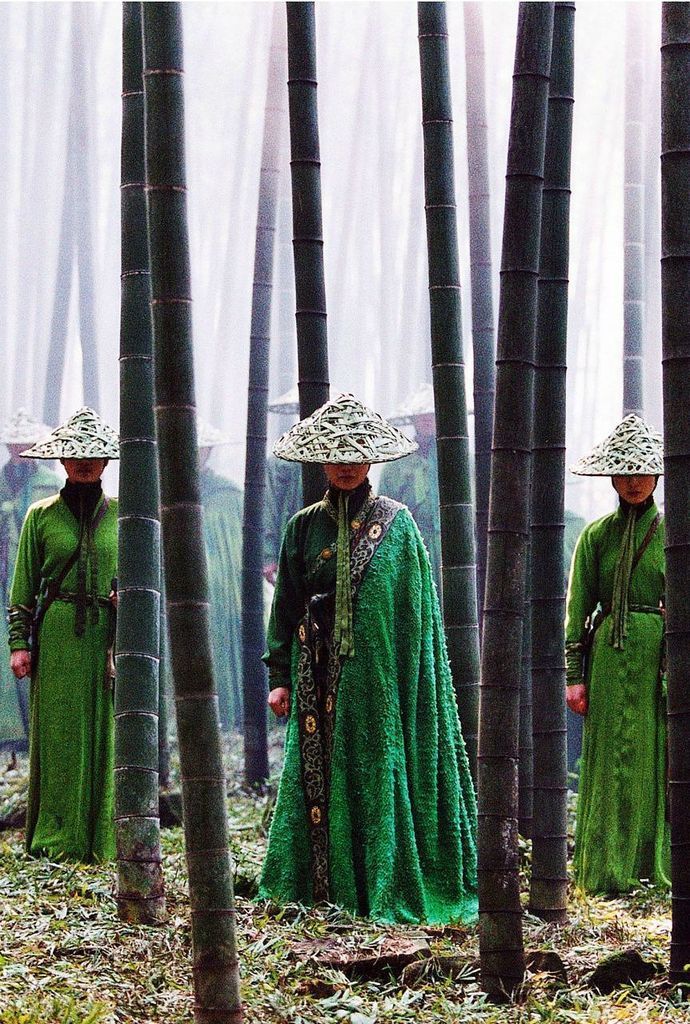
(House of Flying Daggers, 2004)
To further ram home the point that the New Wave era was done and over with, Tsui Hark (having generally been shuffled around Hollywood like an unwanted stepchild for much of the late 90s) would return back home to China and in 2001 attempted to follow up his (and really the whole New Wave era's) defining Wuxia classic Zu: Warriors From the Magic Mountain with a sequel (titled The Legend of Zu, or more confusingly in foreign releases just Zu Warriors)... a sequel which would flop HARD (in spite of pretty massive hype) and send Hark's career into director's jail in his homeland for a good number of years after. The current Wuxia climate was just NOT having it.
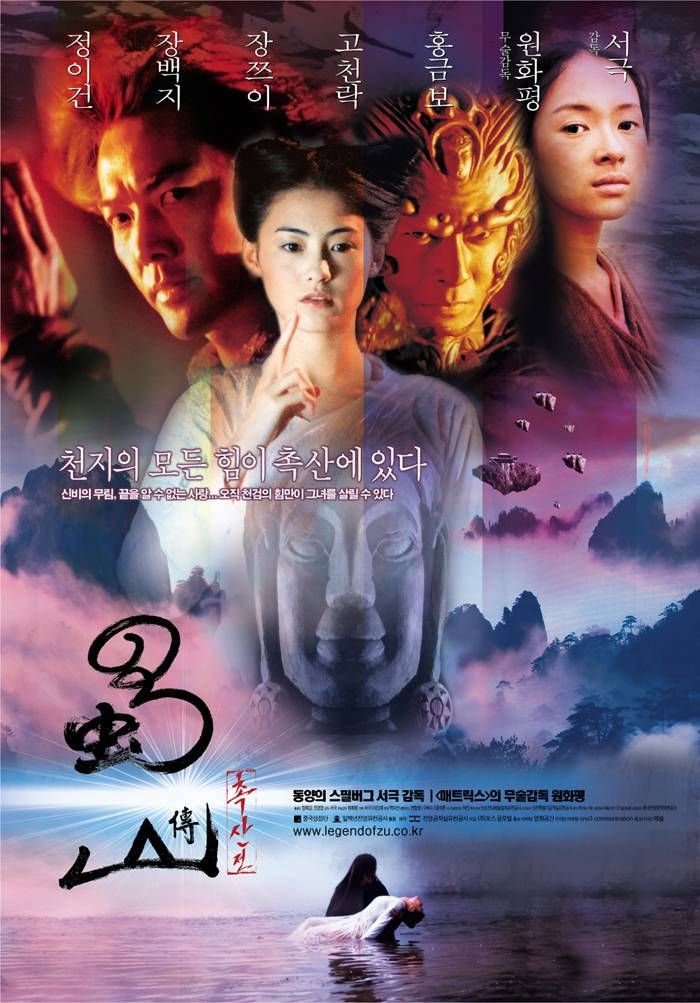
(Poster for The Legend of Zu, 2001)
As much as this swerve back to tradition was organically inspired by shaking off more than a decade and a half's worth of lunatic nuttiness, a BIG part of the incentive also was the North American Oscar success of Crouching Tiger. A VAST portion of Wuxia made throughout the 2000s can be defined not only by its return to the genre's basics, but also by a tendency to err exceedingly heavily on the deeply dramatic and poetically cerebral.
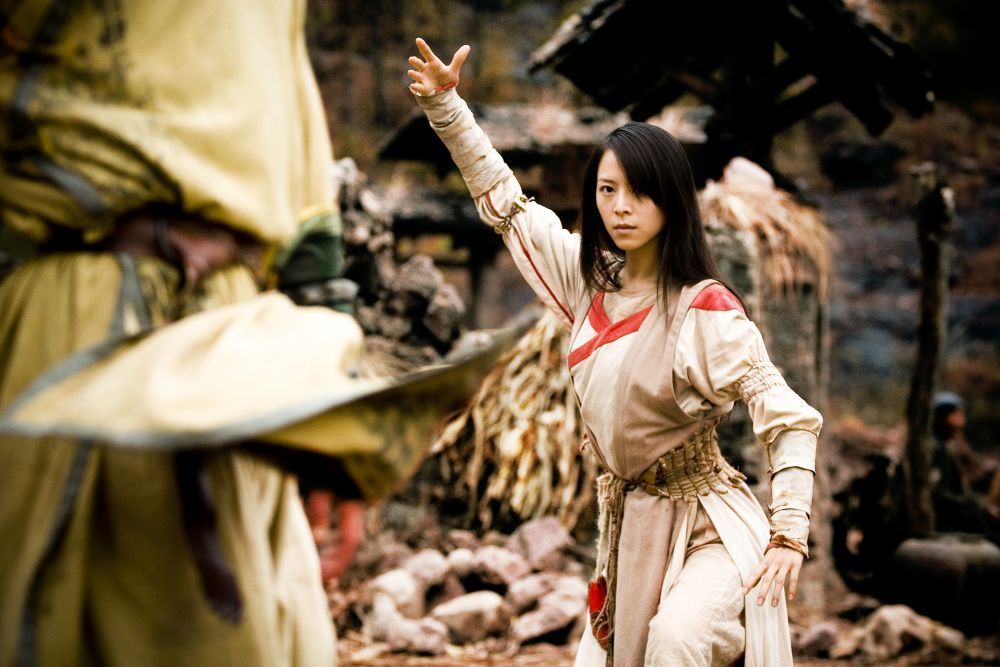
(Jade Warrior, 2006)
Even well long before the days of Hark, Tung, and Jing's manic silliness and insanity, some amount of slapstick comedy and whimsical farce has ALWAYS had its place in even some of the oldest and most traditional of Wuxia tales. A lot of the 2000s output though was strikingly humorless and melancholy, with some people referring to the aughts as the “awards-bait” era of Wuxia. Ironic, as “stuffy costume drama” was what the genre had spent the vast overwhelming amount of the 80s and 90s running far, far, FAR the hell away from being seen as. The cultural pendulum had clearly swung hard the other way now.
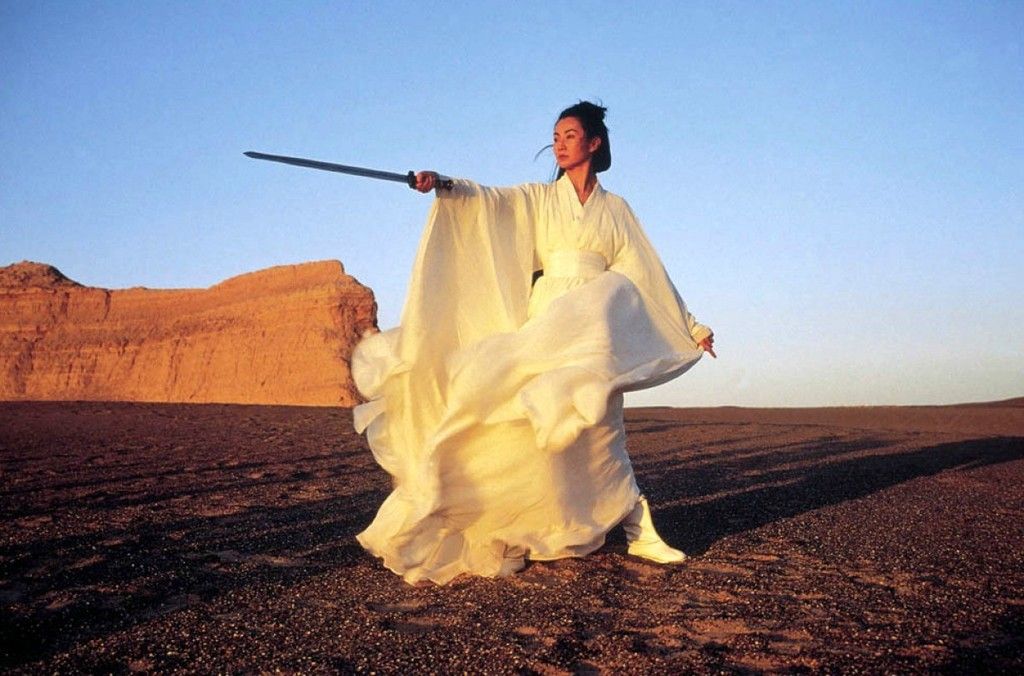
(Hero, 2002)
While critical darlings and art house successes (and pretty stellar movies all in all), none of these movies were really ever able to recapture the incredible foreign success of Crouching Tiger, as mainstream American cinema-goers, now well into the throes of post-9/11 and War on Terror jitters, were instead shying away from the high mindedly intellectual and retreating ever deeper and further into Marvel and DC Superheroes and infantile, child-oriented escapism.
Still, for as much and as heavily as the genre was now retreating back into its old school fundamentals and as deathly serious as so much of it was now taking itself, SOME stray bits of the old early 90s genre-blending absurdity and silliness didn't entirely go away, as these things are so rarely ever completely cut and dry.
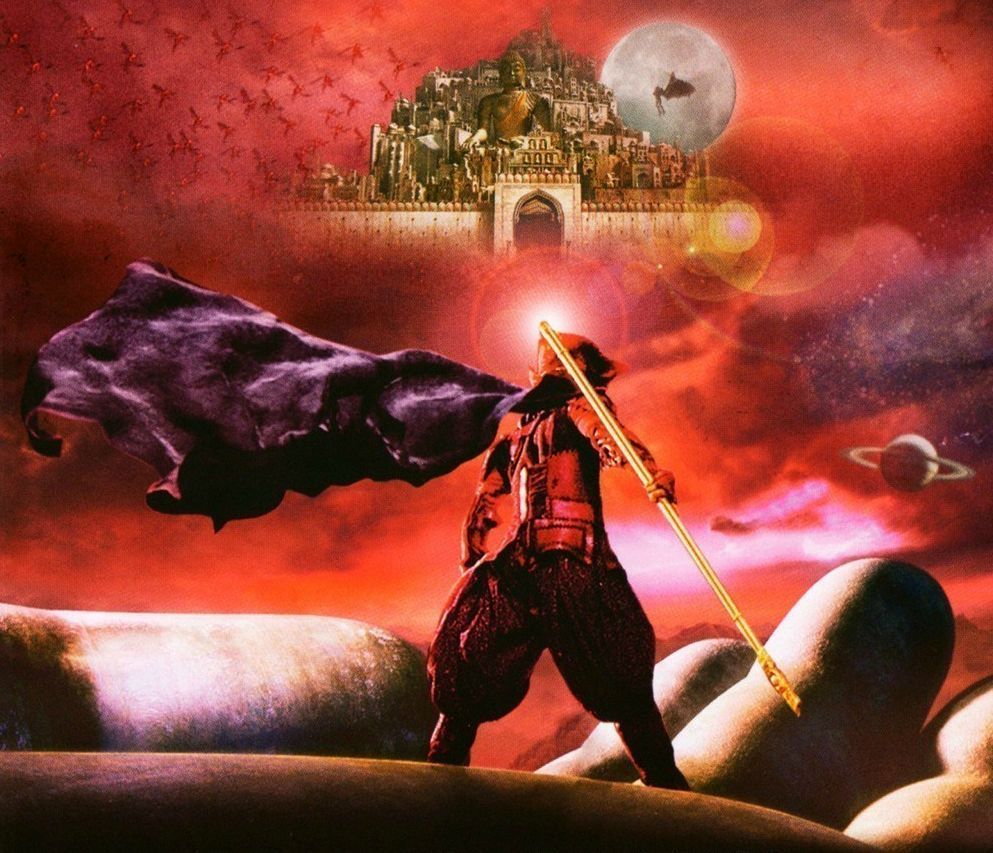
(A Chinese Tall Story, 2004)
2004 would see the release of A Chinese Tall Story (directed by bugfuck-off-its-rocker-Wuxia veteran Jeffrey Lau, a longtime Stephen Chow collaborator as well as the filmmaker tapped by Wong Kar-Wai to direct the earlier discussed Eagle Shooting Heroes back in the day), an absolutely dizzyingly warped and unhinged take on Journey to the West that's as much of an early 90s post-New Wave throwback as you're ever going to find in the mid-2000s Wuxia-sphere. Starting out as a high octane action spectacle with Sun Wukong taking on an invading army of demonic tree spirits, he's soon captured (along with fellow Journey to the West stalwarts Zu Wuneng and Sha Wujing) and the story switches much of its focus onto the monk Triptaka, armed with Wukong's iconic magical staff, who must go on a perilous quest to find and rescue his three companions from the tree demons, while along the way dealing with an awkward romance with a grotesque lizard imp named Meiyan.

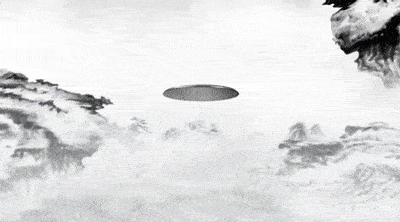
Lots and lots and loooooots of old school late 80s/early 90s Mo Lei Tau silliness ensues, culminating in (I kid you not) a full blown outer space alien invasion. Yes the cast of Journey to the West, including Wukong, must deal with hordes of invading militant spacemen besieging Jianghu. Hmmm... something about that concept somehow rings oddly familiar.
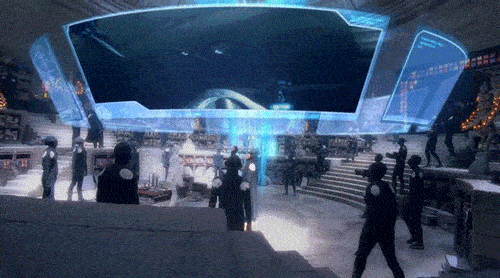
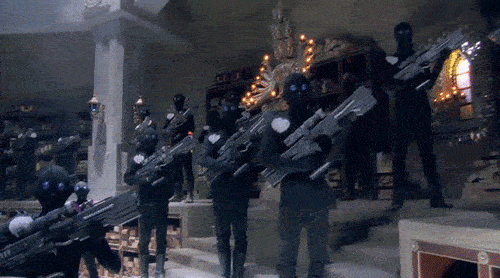
(Yep, these gifs are indeed from a Wuxia movie. And yep, they're from a Wuxia movie made in 2004, not 1992.)
2006 would see the release of a looooooong overdue live action adaptation of Oriental Heroes (released under its Dragon Tiger Gate title).
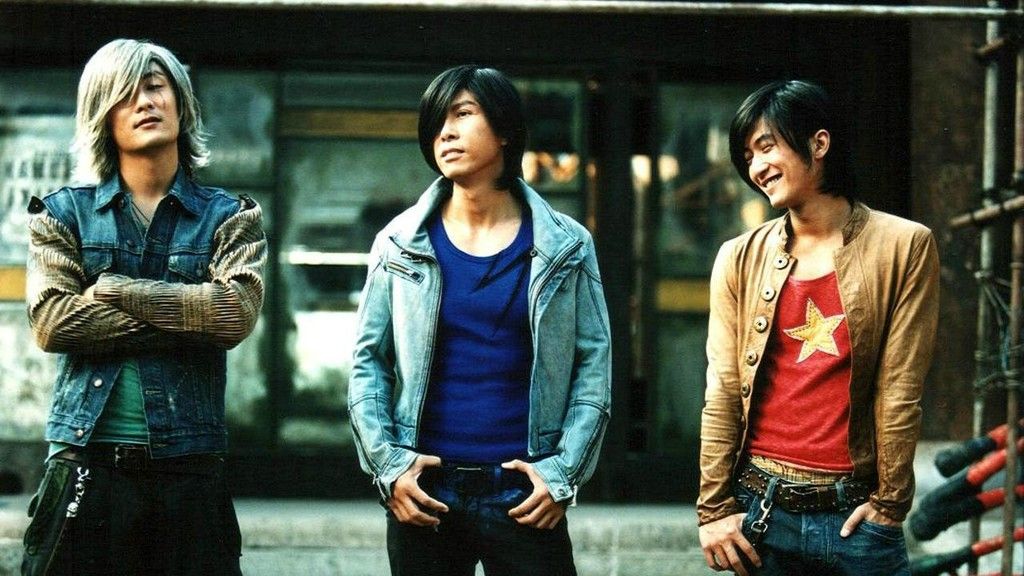
(Dragon Tiger Gate, 2006.)
Of course the REALLY big throwback silly Wuxia hit and audience darling of the 2000s came from the still-vital megastar Stephen Chow, who not only survived the Hong Kong film industry's late 90s post-Handover implosion, he was positively thriving.
The big film in question of course is 2004's Kung Fu Hustle.
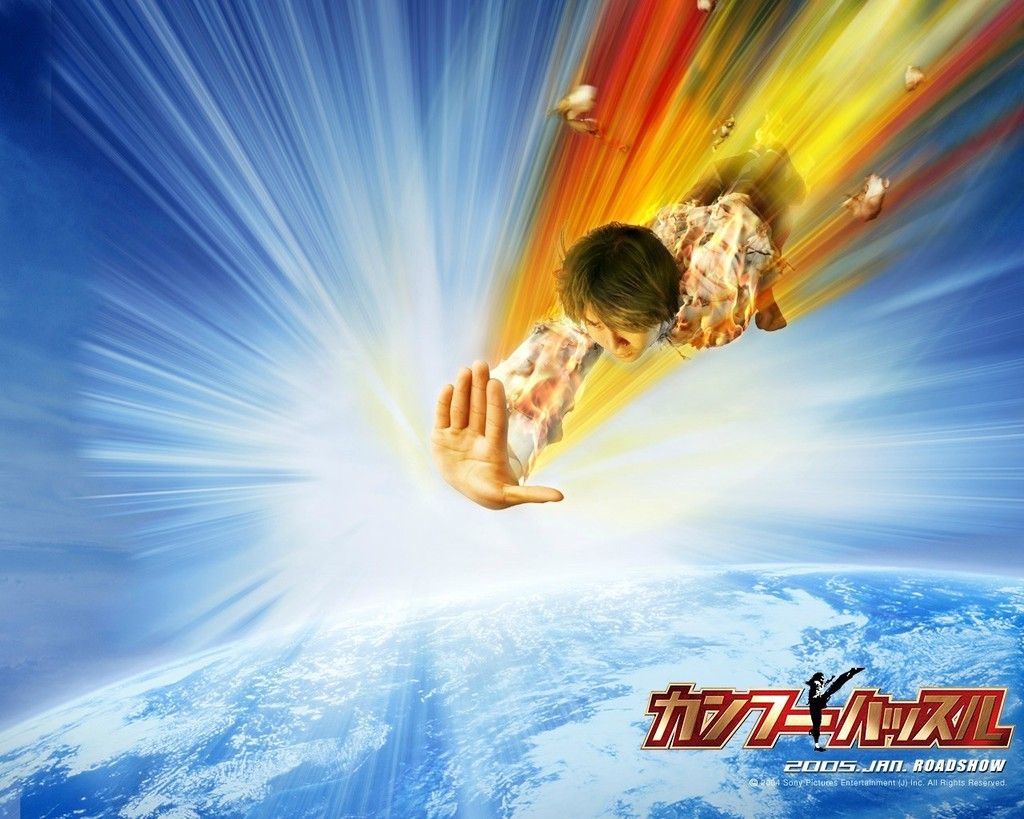
While the heyday of Mo Lei Tau humor was the 80s and 90s, Stephen Chow became so synonymous with it and was still so beloved throughout Hong Kong as a film and media personality that he managed to be almost “grandfathered in” during the otherwise stoically serious 2000s Wuxia landscape.
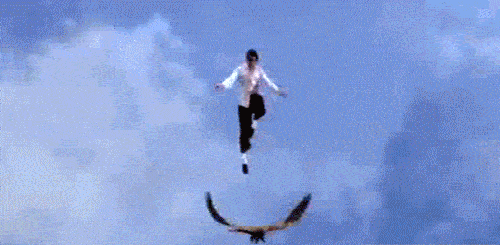
Chow originally broke through to mainstream U.S. audiences in 2001 with Shaolin Soccer, a martial arts/Wuxia/Sports comedy about a group of Shaolin monks forming a soccer team: that such an insane stew of a mixture managed to be as much of a crossover hit at that point in time as it was helped grease the wheels and pave the way for Kung Fu Hustle, Chow's own Looney Toons-esque take on the Buddha's Palm mythos (as well as a giant reference-laden love letter to the whole history of Hong Kong martial arts films, Wuxia and otherwise, up to that point) and which in many ways is one of the only true 80s/90s-style zany whimsical Wuxia films to really penetrate the uber-mainstream North American market, and solidified Chow as a recognizable name over here.
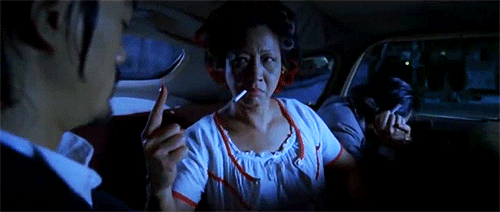
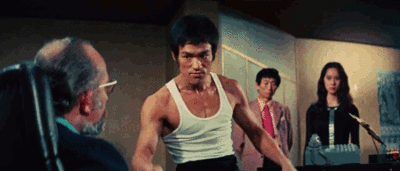

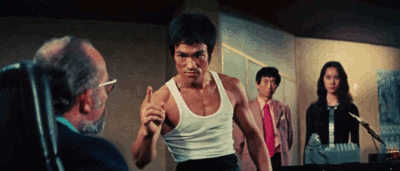
(Left: Kung Fu Hustle. Right: Way of the Dragon.)
Films from guys like Chow and Lau though were generally speaking the exception at the time: they were lone, but noticable, dots of weirdness and silliness sprinkled throughout an otherwise fairly dour, gravely dramatic, and otherwise straightforwardly traditional 2000s Wuxia scene.
Speaking of America, over on our end of things, due in large part to the death of the arcade industry in the early 2000s, the traditional 2D fighter (for a time at least) died out substantially, and the still lingering 90s genre-mixed style of Wuxia as a theme along with it. In its wake, with consoles completely taking over the gaming market at the time, games like Soul Calibur, Dynasty Warriors, and Jade Empire became the big representatives of the genre for Western gamers: once more adding to how much more scaled back to basics the genre's overall pop cultural representation had become since the 90s.

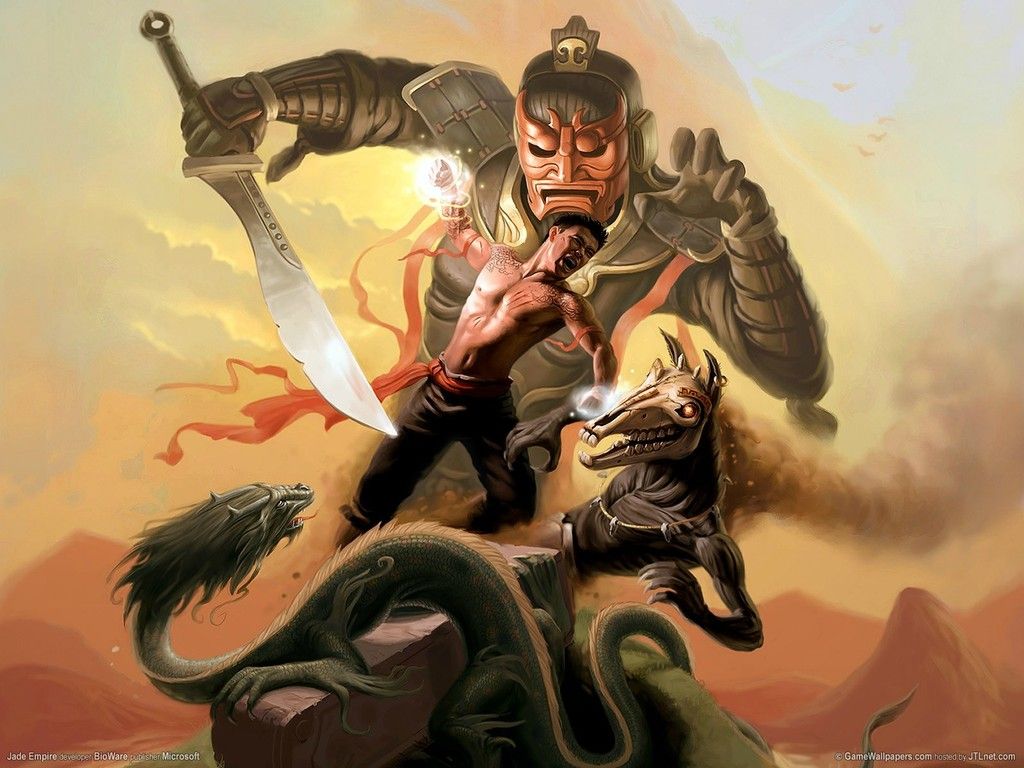
Also on the mainstream American end of things, by the late 90s and early 2000s a whole new generation of oblivious middle school children were given their first whiff of early 90s-style shonen Wuxia anime (a decade well after their time granted) via a kids' action cartoon block by the name of Toonami. Said kids will have absolutely no idea whatsoever of what the fuck Wuxia is or that that's what they're watching: all they know is, explosionz r kool.
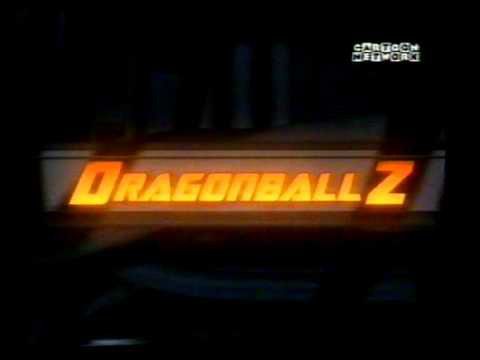
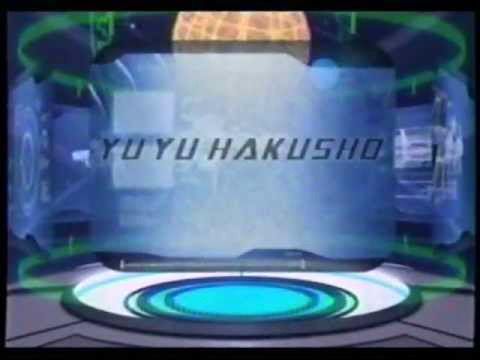
A bit later on in 2005, another kids' Wuxia cartoon would be made, this time by and for the American market, airing on Nickelodeon: a show by the name of Avatar: The Last Airbender. The show of course would go on to be a MASSIVE hit with much of the same kind of audience that watched Toonami... and yet somehow will still do little to nothing to educate them on the mere existence of the genre, let alone its basic ideas.

Wuxia in Modern Media Section VII: Finally, the Here and Now (2007 - Present)
Up to this point I'd been a bit conspicuously mum about live action Wuxia TV shows. A lot of that's because many older ones before the 2000s (barring a few notably major ones from the 80s and 90s, like a lot of the old Condor Heroes shows) are fairly hard to come by and despite my having watched a good number of them every afternoon on International Channel during the 10 years and change that I had the channel (mid 90s to mid 2000s or so) I still consider TV Wuxia to remain a bit of a weak point in my knowledge of the genre (also didn't help that a LOT of what was shown on IC was raw and unsubbed).
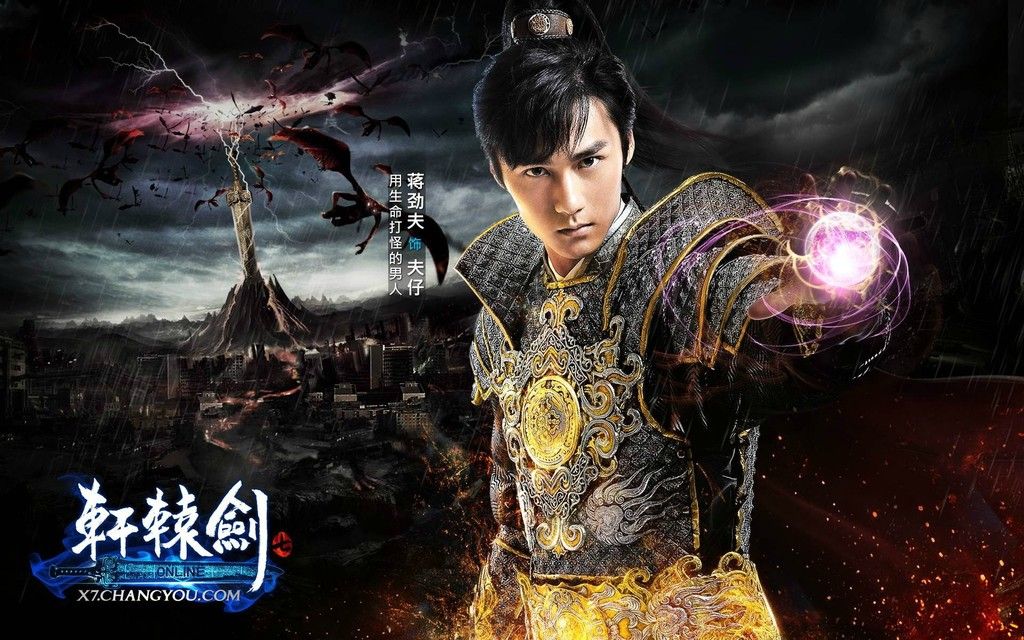
That said I should note that the 2000s were a pretty big decade for live action TV Wuxia thanks to the advent of CGI, which made achieving the needed effects for the fighting VASTLY simpler and cheaper on a TV budget than it was in prior decades. The popularity of Wuxia TV series have increased significantly during the 2000s as a result of many shows (sort of) catching up with films in terms of action and cinematography, and numerous serialized Wuxia TV shows are launched every year still throughout China.
In many ways also, TV has been a consistent outlet for more wild, genre-bending ideas and concepts to shine through and still be used every now and again (thought certainly to nowhere NEAR the same extent as the heights of the 80s and 90s) during and throughout the more art housey phase the genre had been largely going through in film during the bulk of the 2000s.
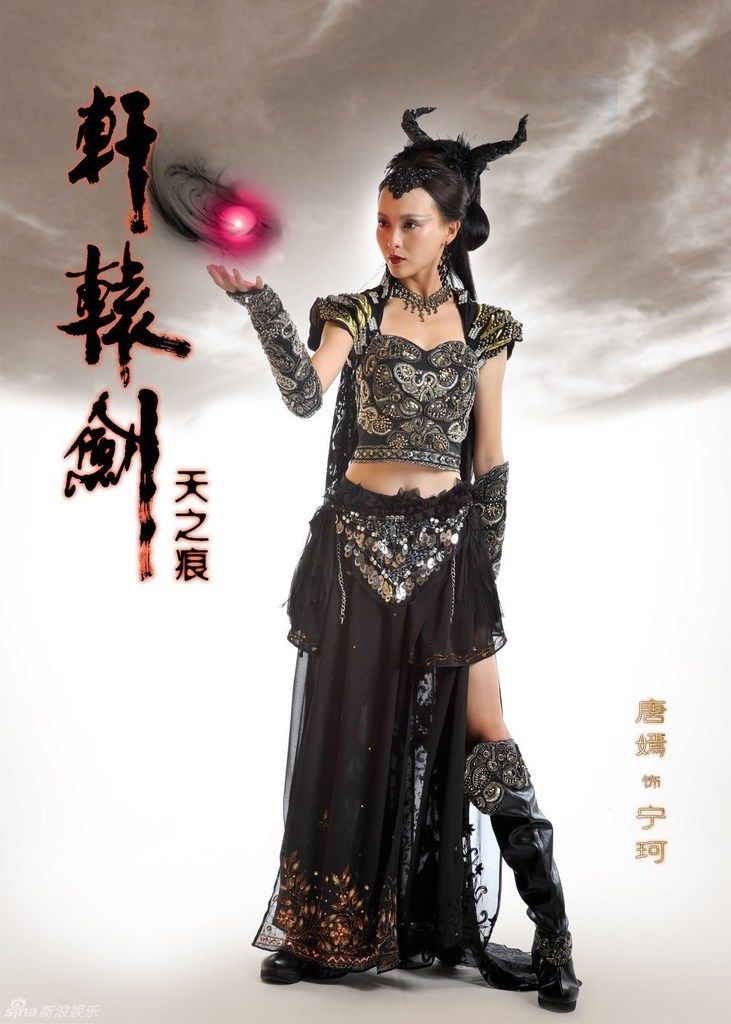
As I noted WAY far back at the very beginnings of all this, Wuxia is basically the direct Chinese/martial arts equivalent in many ways of European medieval high fantasy. As with that genre, one of the single most popular game genres used by Wuxia (since WELL before fighting games, whose ubiquity in Wuxia is drastically unlike European fantasy and stemming purely from the genre's martial arts core) has always been RPGs (hence why it comes as little surprise that Dragon Ball's video game franchise largely started out with RPGs before fighting games as a genre really took off post-Street Fighter II).
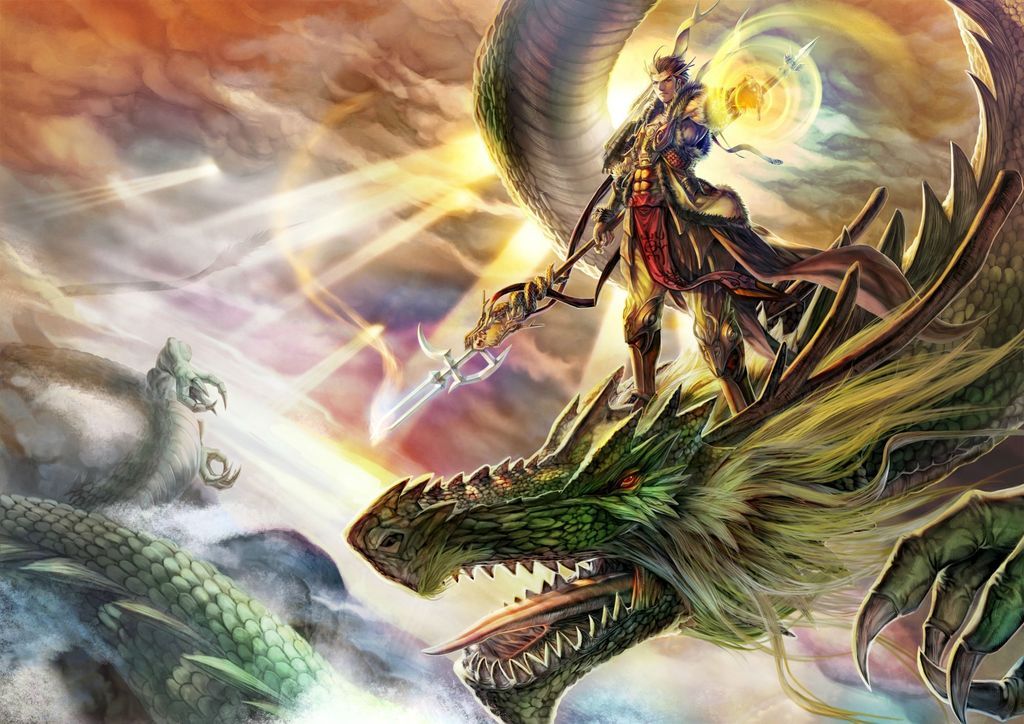
(Promotional art for Xuan Yuan Kingdom.)
Also as with Western high fantasy, in the 2000s MMOs started to become a MASSIVELY dominating genre for Wuxia to occupy. Countless Wuxia MMOs have been produced. By the 2000s and 2010s a great many of the biggest hit Wuxia TV series have been adaptations of classic Wuxia RPGs and MMOs such as Chinese Paladin and Xuan Yuan Sword.
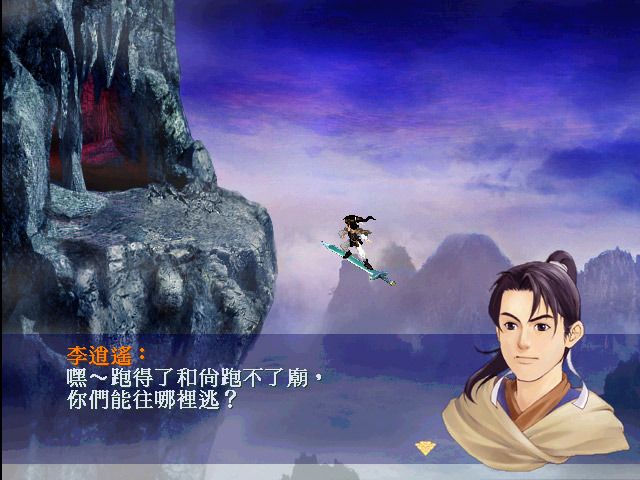
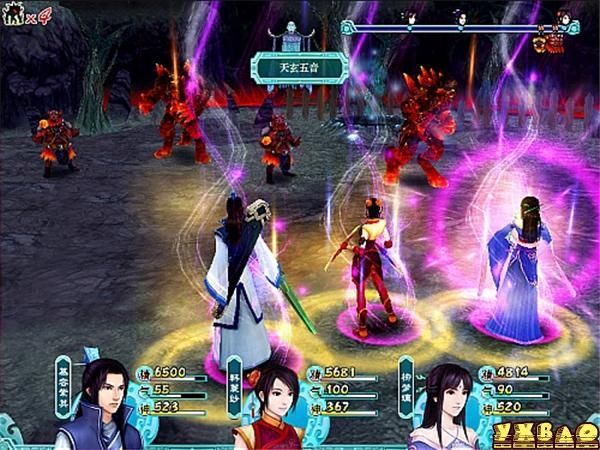
(Top: Chinese Paladin – The Legend of Sword and Fairy for PC. Bottom: Chinese Paladin IV also for PC.)
The present state of the genre in recent years has been... strange and uncertain. As the 2000s neared their endpoint, little by little the stodginess of the more awards/prestige chasing art house Wuxia films began to lax down a bit and the genre started slowly getting wilder and weirder again: CERTAINLY not to anywhere within a zillion lightyears of the same excess as the 80s and 90s, but particularly by the dawn of the 2010s some amount of nostalgia for those uninhibited days began to creep its way back in among some audiences... and with that some attempts at recapturing them.
2010 would see the grand comeback of Tsui Hark to the genre with Detective Dee and the Mystery of the Phantom Flame.
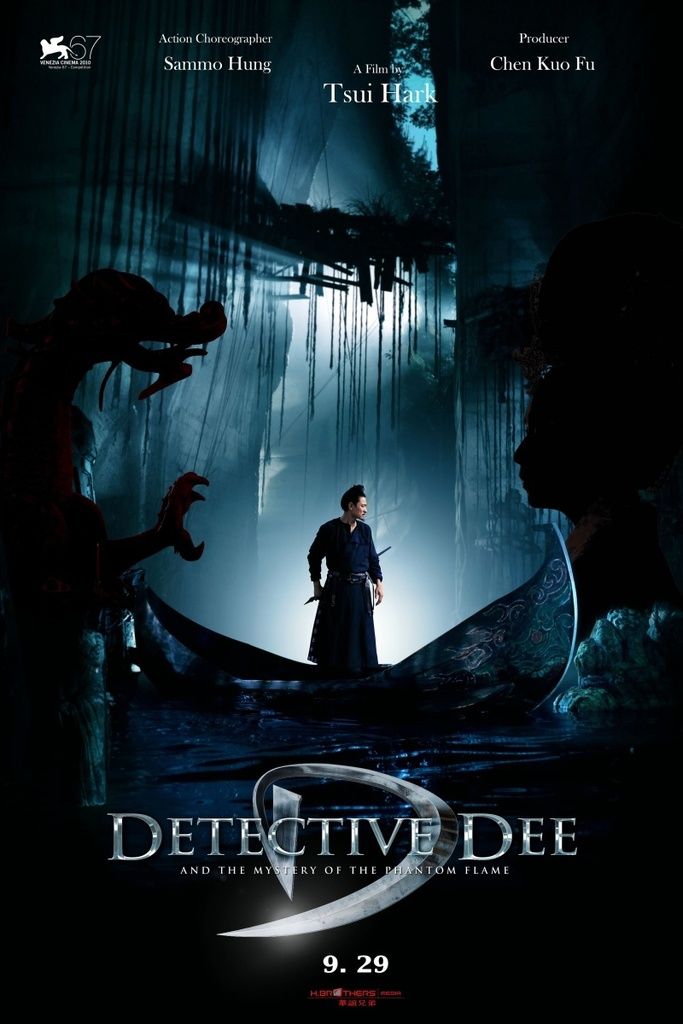
Once more a creative hybrid of genres, Detective Dee, as the title would denote, is a Wuxia murder mystery in the classical sense that takes place in Jianghu. The main protagonist Dee (aka Di Renjie) is essentially Wuxia Sherlock Holmes. Seriously.
A brilliant analytical mind and a master martial artist, Dee is enlisted by the Empress of the Tang Dynasty to solve a series of murders of various court officials who have all inexplicably exploded into flames ala spontaneous combustion (hence the "Mystery of the Phantom Flame" title).
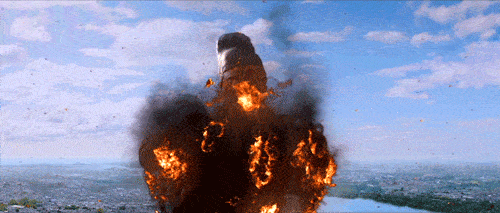
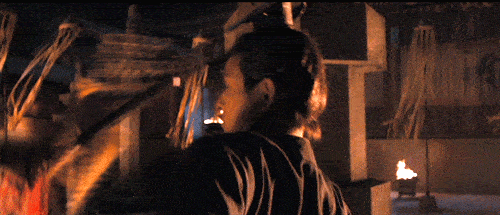
Supernatural foul play is immediately suspected and Dee must use both his cunning intellect as well as his supernatural kung fu mastery to narrow down the killer's identity and defeat them.
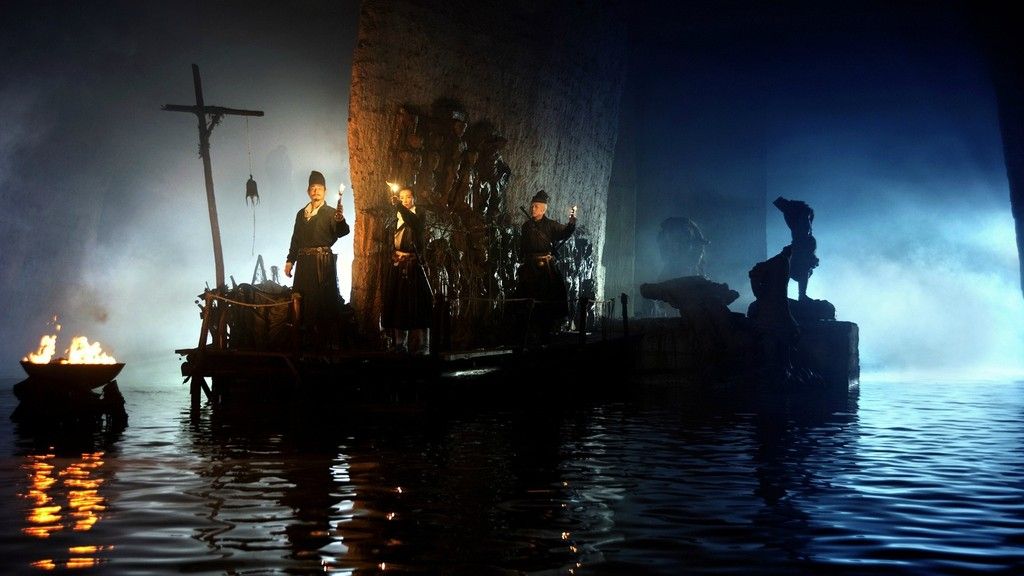
With an amazingly well realized main character and a legitimately clever whodunnit mixed with fantastic Wuxia action that's intense without also afraid of getting silly (a highlight setpiece has Dee facing off against a herd of magical fighting Deer. Yes, kung fu Deer). The film is in many ways a genuinely fantastic return to the high energy, unpredictable New Wave days and was both a critical and box office smash, one that's rejuvenated Hark's standing in the present day Hong Kong film industry in a big way.
Other recent attempts at injecting some of that old unpredictable 80s and 90s spark into the genre have been... less successful.
2012 put forth one of the most blatant attempts at reviving the more outrageously brazen genre-blending style of Wuxia with a film called Tai Chi Zero (or Tai Chi 0).
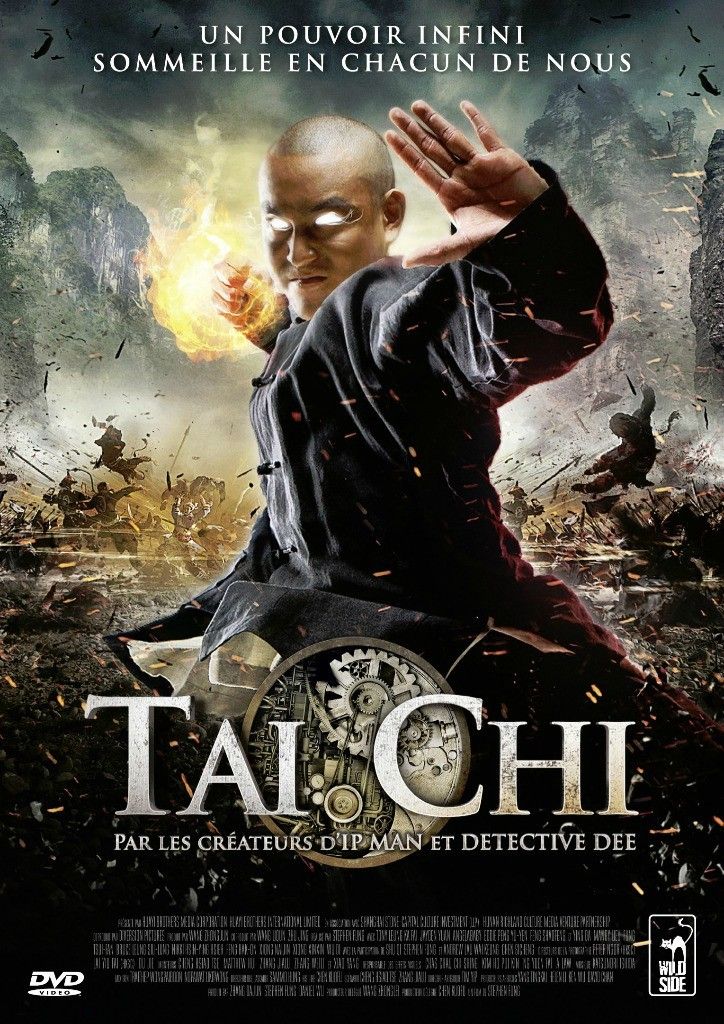
A hybrid of Wuxia and Steampunk, it tells a very fictionalized account of how the fighting style of Tai Chi Chuan was taught to the first outsiders of the family who created it. Set in the 1800s, Yang Lu Chan is a traveling martial artist who journeys to a remote village in order to visit the Chen family in hopes of being taught Tai Chi, despite the family refusing to train outsiders.
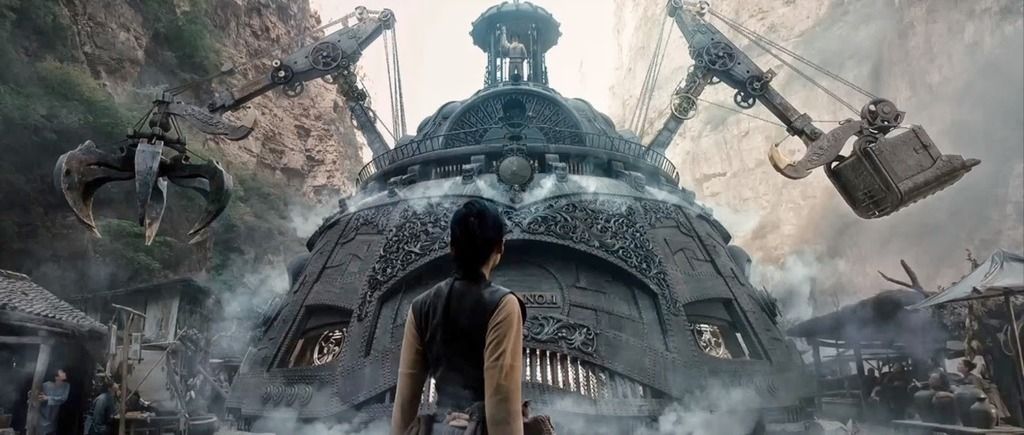
But when a corrupt businessman plans to build a railroad running through the village (and thus attempting to evacuate/destroy it with an army of soldiers against the residents' objections) Yang, who was born with a strange tumor-like growth in his skull that gives him an innate inner power, is trained in the hopes of defeating the high tech thugs and destroying the souped up train that is planned to be sent through the village.
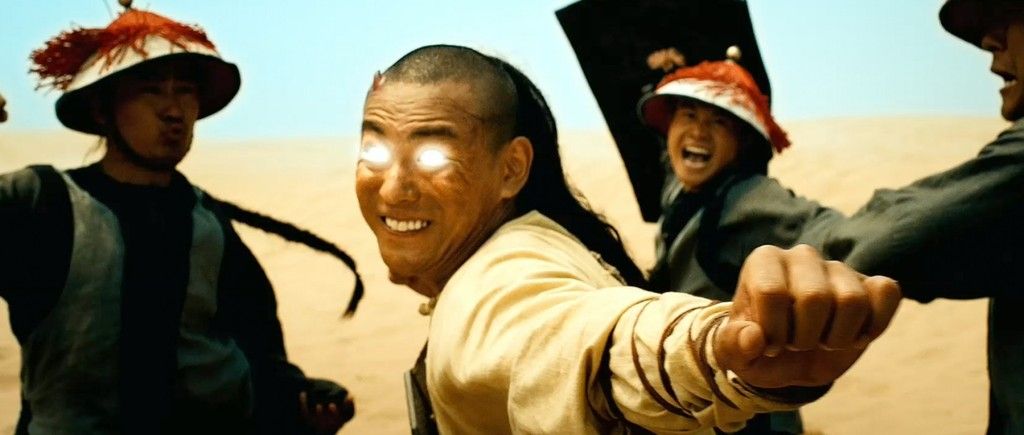
The film attempts VERY eagerly to be a return to the most brazenly whacked out Wuxia films of 20/25 years ago, but was only received with a so-so reception by most fans and critics. Despite the lukewarm reception, its gotten a sequel and has a third currently in the works.
Another attempt made at recapturing the zeitgeist of the genre's earlier decades has been to straight up remake many of the best remembered classics of the New Wave era, including Iceman Cometh and... *sigh*... A Chinese Ghost Story.
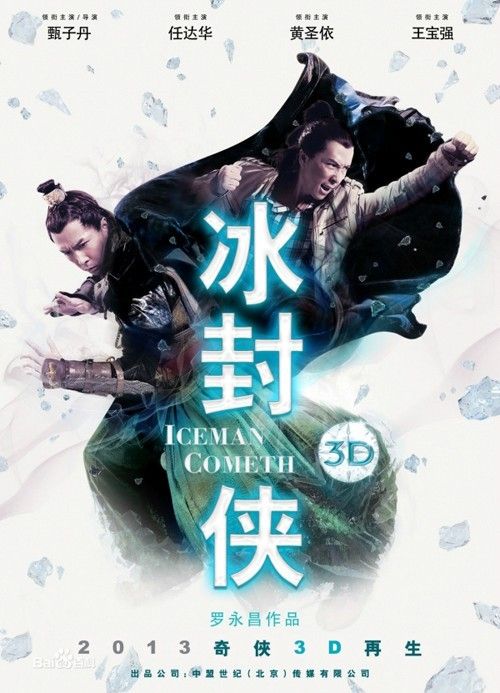
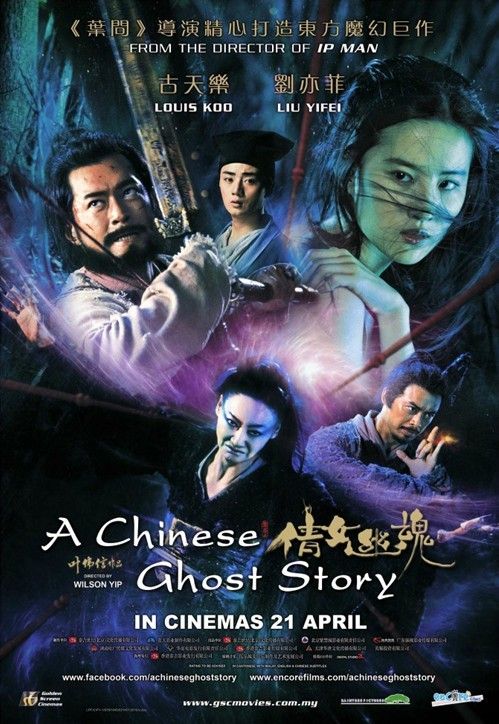
Over-relying on CGI even by modern Wuxia standards, generally casting non-martial artist canto-pop stars in most of the roles in the hopes of luring teens (a tactic usually reserved for Wuxia TV shows rather than film) with maybe one or two major roles filled out by a real martial arts performer like Donnie Yen or Jet Li, and of course GREATLY watering down the storylines of the originals, generally speaking the vast majority of these New Wave Remakes are almost universally despised and are in all honesty best avoided in favor of their 80s and early 90s originals.

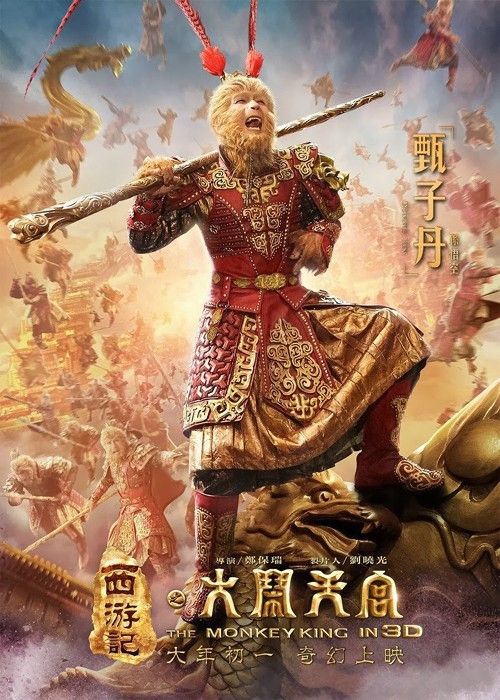
2013 and 2014 gave us two dueling big screen Journey to the West adaptations: the first by Stephen Chow (titled Journey to the West: Conquering the Demons) his second go-round with the classic tale after starring in the two-part A Chinese Odyssey back in 1995, and the other being The Monkey King which was notable for casting Donnie Yen as Wukong. By most accounts, the Chow film is generally seen as the superior film with the latter being seen as a tone-deaf misfire notable only for Yen's performance.
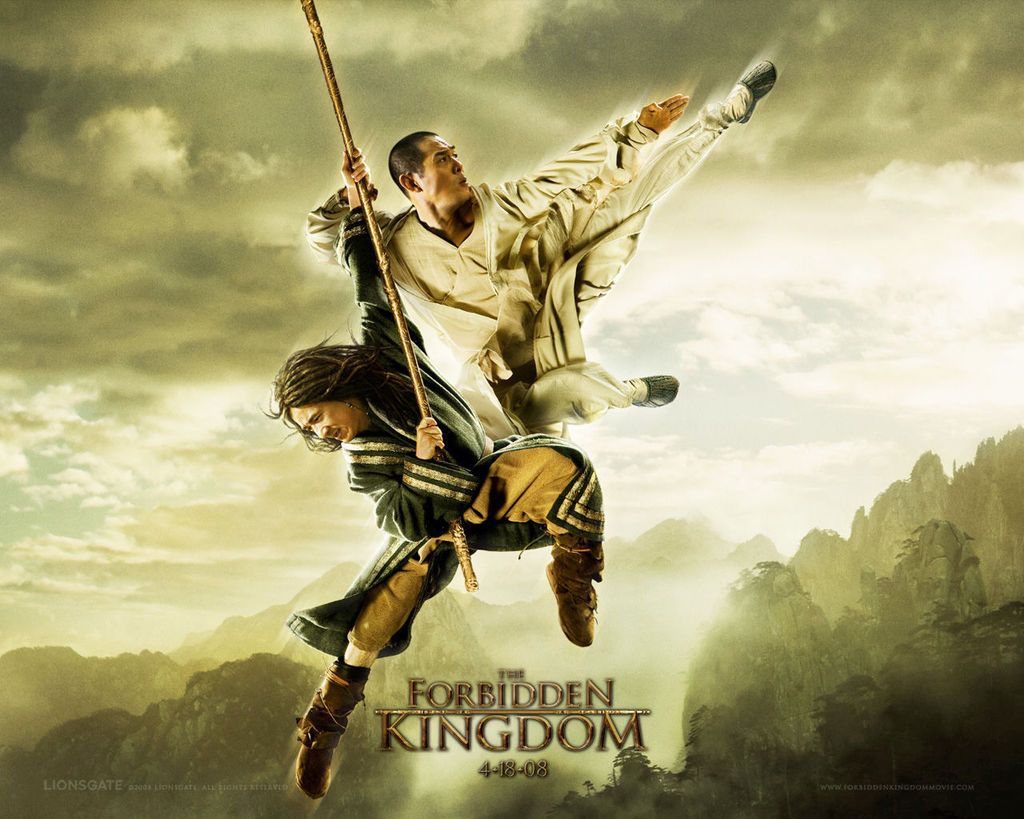
And speaking of Journey to the West, over here in the States the last truly big Wuxia film to break into mainstream discussions was the long-awaited onscreen battle between Jackie Chan and Jet Li that was Forbidden Kingdom in 2008, itself a take on the Journey to the West mythos with Li playing (in a limited capacity) the role of Wukong fairly to the hilt. Sadly the film was also saddled of course with a completely needless “geeky American Wuxia fanboy gets sucked into Jianghu” storyline that essentially sunk the film from being taken seriously by anybody, which was a real shame considering all the Chan and Li stuff is pretty top shelf and feels wasted on a film that doesn't deserve either of them.
Ah but of course 2009 also gave us Westerners the single greatest, capital G GREATEST Wuxia masterpiece in all of the genre's entire thousands of years long history, the defining monumental masterwork that ALL of it up till now had been steadily building towards, the culmination of all the greatest Wuxia writers and creators from Wu Cheng'en to Li Bai to Louis Cha and Gu Long on down... a Wuxia tale so massive and so perfect in its storytelling and craft that it would blow the doors off of and rock the very foundations of the genre as we've known it over the past few generations:
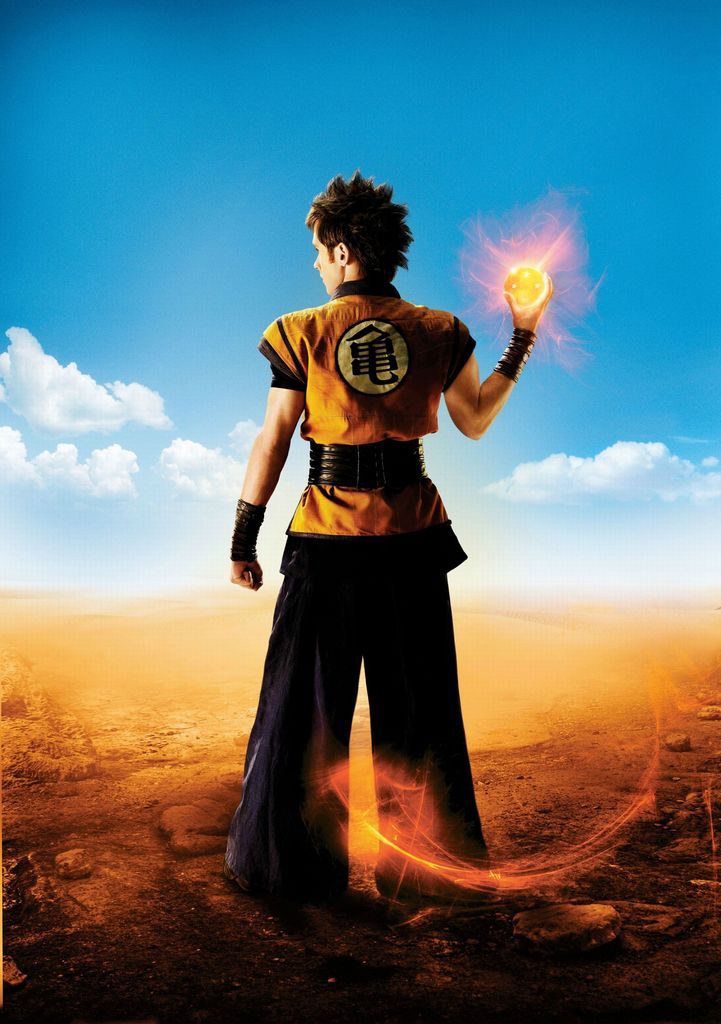
….
Righto. I think now's as good a moment as any to finally (FINALLY) move on to....

Ashes of Time takes various villains and side characters from Jin Yong's immortal Legend of the Condor Heroes (completely disregarding central protagonists Guo Jing and Huang Rong) and focuses on its own unique original prequel story taking place an undetermined number of years before the start of the original novel, which aims to explore the psychology of Guo Jing's principle adversary and supporting cast of martial arts masters years before he would ever meet most of them.

A crass and cynical way of describing this movie would be to essentially write it off as Wong Kar-Wai indulging in big budget, officially produced fan fiction: but the problem with that view is that Ashes of Time is SO well made and so ridiculously intelligent and stands so well on its own apart from any knowledge of or familiarity with the original Condor Heroes story (though having at least some familiarity with said story adds tremendously to it), that it absolutely and without a doubt rises well far above and completely avoids becoming what could've EASILY been, in lesser hands, an insufferable bit of masturbatory fan-retconning of what is (without hyperbole) one of the most singularly beloved Wuxia tales of the 20th century.

Centering on the mentally broken and dangerously unstable antagonist of the original Condor Heroes story Ouyang Feng (played with incredible nuance and restraint here by Leslie Cheung) as he wanders an arid desert reflecting on his past failures as a martial artist and his lost loves while occasionally fighting off attacks from a band of lethal martial arts assassins hot on his trail, Ashes of Time is less concerned with plot (there really isn't much of one here) than it is characterization and psychological character study.

Ouyang Feng, a ruthless and cunning straight up villain in the original Condor Heroes story, is DEEPLY humanized here and presented not so much as a self-centered egomaniac obsessed with his status and standing in the Wulin world so much as man haunted by and suffocating under the weight of numerous irreparable regrets in his life and is finally brought to a critical crossroads by the end that one can easily and organically see how it could eventually some day lead to him becoming the calculating, honorless, ever-present walking knife constantly aiming for the noble Guo Jing's back.

Further fleshed out also is Huang Yaoshi (also brilliantly played by Tony Leung Ka-Fai), an all-wise and virtuous (if highly unusual-to-a-fault) master in the original story, whose flaws and failings and human foibles are further brought to the forefront without in any way tainting or betraying the character's nobility in the original story. Ashes of Time is, generally speaking, not at all in the least bit a story of noble, heroic good guys battling against despicable, rat-bastard bad guys... rather its simply a fly on the wall portrait of psychologically wounded people who are all in various ways at a lost, confused, and emotionally vulnerable point in their lives as martial arts masters within classic ancient Jianghu (gorgeously photographed here with overwhelmingly beautiful cinematography that is absolutely to die for).

Instead of indulging further is nonsensical genre-bending wackiness for the sake of nonsensical genre-bending wackiness, both Wong Kar-Wai and Tsui Hark took the more classy and subdued approach of taking well known and well loved characters from an ubiquitously classic novel and an ubiquitously classic myth respectively, characters who within their original works were classically broad Wuxia archetypes in their original portrayal, and made them into messy, complicated bundles of all too human weakness and imperfection.
Without question Ashes of Time is easily one of the pinnacle highlights of the 90s post-HK New Wave era of Wuxia and is required viewing for anyone getting into the genre as a whole, while Green Snake is easily one of the most strikingly gorgeous and unique depictions of Jianghu and probably the best ever telling to date of one of Wuxia's oldest and most heavily retold tales.
…aaaaaaaaaand with that quick detour into high brow artful classiness out of the way, we now return to our regularly scheduled programming of early 90s sci fi/post-apocalyptic costumed Xia throwing motorcycles at each other in the middle of a quasi-futuristic Hong Kong.

(Oh what, you thought I just randomly made that shit up?)
Lest we get too deeply carried away into artsy intellectualism here, this being the early 90s Wuxia landscape and all, no sophisticated, prestige entry in the genre could be allowed out into the world without at least SOME form of completely and utterly unhinged silliness to go along with it to help counterbalance the scales back in favor of the absolutely bugfuck bonkers. And Ashes of Time was hardly an exception.
Ashes of Time was an immensely troubled production: shot on location in real remote desert regions, the film went MASSIVELY over-budget, to a point where the studio could no longer afford to continue financing it before the film wrapped production. Desperate for further funding and so close to completing the film, Wong Kar-Wai hit upon an interesting solution: under a VERY tight budget and schedule, he used much of the same exact cast and crew (with a few other high profile additions, such as Joey Wong, which combined with Ashes of Time's cast made for a star-studded HK ensemble) to produce a much smaller film that could be quickly released in time for Chinese New Year (a typically busy moviegoing season) of 1993 and hopefully turn enough of a profit to be used to finish shooting Ashes of Time (which obviously of course it did).
This film would also be an adaptation of the Condor Heroes material in its own... uh... thoroughly and aggressively unique fashion.

Oh dear lord. Where to even begin with this one.
The film in question went under the title The Eagle Shooting Heroes (an often used alternate title to The Legend of the Condor Heroes), and like Ashes of Time was not in any way, shape, or form a faithfully accurate translation of the original source novel (seriously, you already even by 1993 had more than your pick of the litter for more faithful Condor Heroes renditions). And that is about where any and ALL similarities between this an Ashes of Time abruptly fucking ends.
The movie is a quasi-retelling of various subplots and side stories from the novel (and by “various” I mean a fucking five hundred car pileup of them: Jin Yong's Wuxia novels tended to be pretty epic in scope) with tertiary character Hong Qi taking up the lead protagonist role and with the added twist of turning the whole thing into one gigantic over the top slash fic/live action harem comedy by having virtually every single character fall in love with one another (Condor Heroes canon and sexual orientation of the characters be damned) in the most stupidly ridiculous combinations.


Hong Qi is played by Jacky Cheung (not to be mistaken for Chan) in both this and Ashes of Time, but virtually ALL of the rest of the casting between the two films is reshuffled, musical-chairs style, with much of the same actors across both films playing each others' characters in them (with Tony Leung Chiu Wai's turban-clad, pencil-moustachioed, Snidley Whiplash-esque rendition of Ouyang Feng being an absolute national treasure in this).


The BIG “hook” however that differentiates the '93 Eagle Shooting Heroes from most other Condor Heroes adaptations is its tone and comedic style: the film acts as basically a straight up spoof or parody of the story, almost in the rough Hong Kong Wuxia equivalent of a classic Zucker Brothers' style comedy.
Let the ramifications of that sink in for a second: early 90s Hong Kong Wuxia, with ALL of the perfectly distilled, nonsensically gonzo warped crazy that that entails as is, with the further addition of being presented as a fucking zany, madcap parody.


You kids think that early Dragon Ball was silly, whimsical fantasy martial arts? Not a one of you has the slightest CLUE what over the top wacky fantasy kung fu actually looks like until you've sampled this goddamned thing, which is plainly speaking the cinematic equivalent of an ungodly violent fit of psychotic schizophrenia spurred on by magic mushrooms laced with LSD that's been tainted by Joker Venom. I'll let the gifs throughout speak for themselves.


(Best. Ki Power Up. Ever.)
Full disclosure once again: Eagle Shooting Heroes was the single funniest, most mesmerizingly amazing fucking thing on the planet to 10 year old Kunzait.
Of course any discussion of Wuxia's early 90s genre barrier-destroying excess would scarcely be complete without at least a cursory mention of notorious and controversial Hong Kong writer/producer/director Wong Jing.

To call Wong Jing a divisive figure in Hong Kong film fandom, Wuxia and otherwise, is sort of like saying that Kanye West only has just a hair bit of an ego problem.
With a MASSIVE career of literally hundreds of films to his credit going back to the late 70s/early 80s where he cut his teeth on a few later-period Shaw Bros. films (and given what most late-period Shaw films were like along with what the rest of Jing's body of work thereafter would entail, this is the farthest thing in the world from surprising), Wong Jing was an almost impossible to avoid fixture of Hong Kong cinema throughout a vast portion of the 90s.
And ooooooh, how well his movies slid ever so comfortably into the absolutely bonkers zeitgeist of HK films during those zany years. If anything, most of Wong Jing's films from the era were a little TOO early 90s for their own good.
His credits cover an impossibly broad and diverse array of genres (even though he didn't direct it, he was one of the mastermind producers behind Naked Killer, one of the most iconic Hong Kong action films from the early 90s and one of my personal most beloved childhood favorites), but obviously we all know which genre's the pertinent one here.
Before we delve into that though, it should also be noted that its also sort of impossible to talk about Wong Jing's films (Wuxia or otherwise) and his overall style without at least mentioning his personal life a bit.
Besides being a bankable and popular writer/producer/director of numerous blockbuster HK films, Jing was also throughout the heyday of his career a bit of a party animal. And by “a bit” I mean he essentially spent the vast overwhelming majority of the 80s and 90s inhaling at least half the cocaine supply of East Asia, bilking the real life Hong Kong Triads (re: Chinese Mafia) out of large piles of cash to help fund his movies (or to gamble away), and - in between ducking brutal beatings from Triad lone sharks – porking pretty much nearly every single one of the most beautiful actresses and starlets in the Hong Kong film industry at the time (most famously 90s HK sex symbol Chingmy Yau, making him as much a fixture of Hong Kong tabloids as movies). Somewhere in the middle of all this good clean wholesome fun and excitement, he somehow found time to maintain an extremely busy and high profile film career.
I bring these personal details about him up if only because the end results of his films are clearly and unquestionably the byproduct of someone on massive, MASSIVE quantities of cocaine and living an ultra fast, death defying lifestyle of unrepentant decadence and excess.

(Rick James was certainly correct.)
Jing's filmmaking style can best be characterized as... somewhat fast paced, showing little to no regard for genre conventions or limitations of any sort, shrugging off “tonal balance” with the utmost abandon even by early 90s Hong Kong standards, and generally being guided or motivated by few other narrative through lines more thought out than “Hmmm, what loopy bit of random nonsense is amusing to me at this particular minute?” And his sense of humor can also be described as a wee bit juvenile and fixated on crass sexual humor.
Throw this sensibility in with Wuxia, and it should be pretty apparent which particular Japanese manga artist a lot of his films more than passingly resemble in style and tone (and no the obscene irony in how DRASTICALLY opposingly different the two men otherwise are on a personal level is far from lost on me).
So how batshit early 90s are Wong Jing's Wuxia films? Well...
He somehow figured out a way to include a GoLion/Voltron-esque “mecha combine” martial arts technique in a film that otherwise takes place entirely in classic Jianghu.


(Believe it or not, by Jing's standards this is almost normal.)
He's staged a full blown, highly destructive Chi/Ki slinging Wuxia battle... in a convenience store.


(Strange things are afoot at the Circle K.)
And of course, he's given the world – I shit you not – Wuxia Jesus Christ.


(I really, REALLY couldn't possibly make this shit up if I tried. I'd need at least a gram or two of the same coke that Jing's snorted.)
Right. So in essence, Jing is about as emblematic of the over the top crude silliness inherent to so much of late 80s/early 90s Wuxia as Donald Trump is to tragic comb-overs and hating Mexicans.
As I noted before, as the 90s went on and the tone and presentation of Wuxia was getting ever increasingly loopier and more ridiculous across virtually all forms of media, there was the beginnings of a backlash starting to form against this in some corners of fandom. Some critics were beginning to opine for more of the high brow drama and artfulness characterized by the glory days of King Hu and Lau Kar-Leung (welcoming the occasional return to such prestige like Ashes of Time with open arms), and there were certainly a contingent of fans starting to feel a bit burnt out on and exhausted with all the sugar-rushed zaniness (I, still being an over-energetic and sugar-rushed middle school kid at the time, wasn't one of them, though that still didn't stop me from also digging the hell out of Ashes of Time, Green Snake, and their ilk).


In no small part helped by his real life (and highly publicized) drug and sex-fueled antics, as well as his rotten reputation amongst some of the most well liked and beloved Hong Kong film stars of the day - Jackie Chan starred in a profoundly deranged and demented live action adaptation of the classic 80s manga/anime City Hunter under Jing's direction in 1994 and afterward vowed to never work with him again, with Chan having nothing but the utmost contempt and vitriolic dislike for Jing even to this day...


(Whatever went on between the two, its entirely possible that Chan could also be bitter that Jing made him perform one of the most hilariously ridiculous fight scenes ever whilst cosplaying in drag as Chun-Li.)
...Jing has in many Wuxia and HK film circles become - fairly or not - a bit of a scapegoat and critical target for everything that was seen as too much, too weird, and too far out there about the late 80s/early 90s post-HK New Wave Wuxia landscape: particularly that much more so amongst Wuxia fans who were generally more predisposed towards disliking any of the silly genre-mashup stew of the time period in general and instead favoring more classically traditional Wuxia.
That being said though, for all the controversy, his movies were still incredibly popular (particularly at the time) and many of them still had their share of fans (I uh... was and mostly remain one of them) who view them as ridiculously extreme and completely off their meds guilty pleasures.


And to once again draw another parallel between Jing and Toriyama: while obviously our beloved shut-in introvert of a mangaka has probably (one can assume at least) never in his life come within a hundred million miles of Jing's breakneck hedonistic lifestyle, nor is he looked upon by his peers in the manga/anime industry as some sort of a sleaze, the incredible tonal and energetic similarities in the end results of many of their work along with their strikingly similar sense of sophomoric humor (and mixing said humor with kung fu/Wuxia tropes) did also result in a similar divide among anime and manga fans in the early to mid 90s regarding Toriayma and Dragon Ball.
While a great many Millennial and post-Toonami anime and manga fans hold up Dragon Ball today with a great deal of nostalgic reverence and look upon it as a fondly remembered classic, the anime & manga fanbase of circa 1991-1996-ish or so (the bulk of the years in which much of it's later half was still contemporary) had a much starker degree of a divisive attitude towards it. While obviously Dragon Ball has always been ridiculously popular and has always had its devoted legions of mega-fans, there were still a fairly large contingent of anime and manga buffs of the time who overall had a much, much stricter “arthouse” standard for anime and manga as a whole, and wrote off Dragon Ball and many other things like it as dumbfuck juvenile garbage.
This divide in many ways directly mirrors the split in Hong Kong film and wider Wuxia fandom towards many of Wong Jing's films: in BOTH cases you had an output of broad, crowd pleasing, lightning speed, farcical Wuxia/supernatural martial arts action comedies that were filled to the gills with fighting, violence, and dumb boobie and pee pee gags, and took themselves in no way, shape, or form seriously most of the time, that were devoured and loved by large audiences while being held in contempt by a vocal critical segment that felt the genre was over-indulging WAY too much on excessive non-sequitur humor and needed to pump the brakes back towards something a bit more lucid and thoughtful.
Honestly, the biggest thing separating Wong Jing from Toriyama as creators (besides their general target demographics) is the aforementioned comically contrasting personal lives of the two. You'd certainly never guess there was such a stark divide in personality/lifestyle between them going solely off their respective early 90s style of Wuxia storytelling.
Hell, Jing even featured this fun little cameo appearance in one of his most notoriously gonzo sci fi-Wuxia films (and quasi-but-not-really-adaptation of Street Fighter II: that game crops up a lot in Jing's early 90s oeuvre) Future Cops:

(His entrance is even immediately punctuated by a few quick unmistakable notes of Makafushigi Adventure.)
With critics starting to lose patience with all this nonsense and a schism in opinion on the continued direction Wuxia should take rapidly growing within Wuxia fandom, the wheels were starting to come off the hyper-ridiculous genre-mashup Wuxia fad even just a couple more years before the Handover.
December of 1993 would see the release of a suitably bombastic Wong Jing-directed adaptation of Jin Yong's Heaven Sword and Dragon Sabre starring Jet Li (still in his superstar prime) as Zhang Wuji and Sammo Hung as Zhang Sanfeng: by all measures of the time, this film had “box office slam dunk” written all over it, yet nonetheless it tanked pretty massively in its homeland (though scored a pretty sizable fanbase among Wuxia fans in the U.S.) ensuring that its cliffhanger ending would go forever unresolved.


(Jet Li as Zhang Wuji in Wong Jing's off-kilter, over the top interpretation of Heaven Sword and Dragon Sabre.)
1994 and 1995 would see two more really big New Wave Wuxia box office bombs: an expanded and drastically reworked adaptation of a side story within Demi-Gods and Semi-Devils (titled Dragon Chronicles: The Maidens of Heavenly Mountain), and Tsui Hark's The Blade respectively. The former being a longtime personal favorite of mine, and the latter being retroactively hailed now as an outright masterpiece and one of Hark's most under-appreciated and misunderstood films (which as a massive Hark fanboy I'm inclined to agree).



(The mid-90s marked the beginning of the end for New Wave Wuxia in its native Hong Kong: sadly a few pretty rock solid films, one of them a tragically underestimated classic, were among the first box office casualties of a growing fatigue for the style. Also interestingly enough, 1995 also marked the same year that a certain Japanese Wuxia manga, which had by this point ran almost the full gamut of then-trendy late 80s/early 90s Wuxia cliches, came to a close and bid its decade long readership a fond farewell.)
At the time however with the backlash against the New Wave style of Wuxia intensifying, Hark – as the poster boy for the whole craze within this particular genre – took a HUGE brunt of the criticism for a little while, after almost 15 years of being a critical darling and hailed as a visionary. Even well long after the furor over all this has long since passed and Hark generally being accepted by most once more as an all time important landmark filmmaker, his name is still to this day a four letter word among mega-hardcore Wuxia traditionalists.
1997 of course would see the Handover finally realized, with Hong Kong being officially re-assimilated back into mainland China and no longer a part of the British colonies. Now governed under strict Communist laws, a tremendous number of creative restrictions heretofore non-existent in Hong Kong were now in effect across their media and artistic output.
Many of the most prolific New Wave-era filmmakers left the country in droves, largely for Hollywood (Hark among them), spurred on by the large amount of enthusiastic goodwill and popularity their films had accumulated abroad among us Westerners throughout the latter 80s and early 90s. Sadly Hollywood producers and executives famously couldn't really figure out what the fuck to do with any of them (with some fans and critics even crying racism), and with the sole exception of John Woo (who defected to Hollywood much earlier in 1993 and had a lot of help early on from Sam Raimi, who was a big fan of his), they were largely relegated to making embarrassing D-list action movies.

(Brought to you by the visionary director of Zu: Warriors From the Magic Mountain.)
Despite the new change in government and stricter content guidelines, Hong Kong would still of course act as China's own Hollywood equivalent, continuously pumping out countless movies every year up through to this very day. During the late 90s immediately post-Handover however, many Wuxia films drastically underperformed.
Director Andrew Lau would briefly prove to be an exception however, scoring a sizable blockbuster hit in 1998 with the first live action adaptation of Ma Wing-Shing's obscenely popular Wuxia manhua Fung Wan aka Storm Riders (and which would also make history as the first ever Wuxia film to make extensive use of CGI: so long rotoscoped Ki effects, it was a helluva run while it lasted).



(Storm Riders wowed not just Chinese but also international/Western audiences in 1998 by being the first ever live action Wuxia film to extensively use then-state of the art CGI effects for its supernatural Ki-powered martial arts fight scenes. Practical effects will henceforth from here take a HUGE backseat, while hand drawn rotoscoping will largely be extinct entirely.)
However with the initial novelty and excitement of CG use in Wuxia wearing off rather quickly, none of Lau's follow up Wuxia films really matched up to Storm Riders in terms of box office success: not even a return to the well of adapting a classic Ma Wing-Shing manhua, this time Chinese Hero in 1999.


(Even a well made, big budget live action adaptation of a manhua as monumentally influential and classic as Chinese Hero – complete with a rousing recreation of the famed “atop the Statue of Liberty” duel for the climax - couldn't drum up too much excitement for Wuxia among Hong Kong audiences still in a depressed funk over the Handover by the tail-end of the 90s.)
During these last few years of the 90s while Hong Kong was in the midst of its “bad hangover” comedown from the giant cultural sendoff party post-Handover, the mark of the HK New Wave's output was still fresh in the minds of many foreigners and reverberating fairly strongly across cultural lines in other territories and wouldn't quite disappear entirely just yet.
Over in Japan, a few more stray manga and anime OVAs were still coming about that were clearly a byproduct of 90s Wuxia's influence (albeit generally on a more flowery/sappy/romantic “Shojo”-ish end of things), including Saiyuki and the latter output of Fushigi Yuugi.


Moreover, the arcade fighting game scene wasn't quite done yet, and would still have a few more years of geek cultural vitality left in it, with more Capcom & SNK titles and similar derivatives still drawing heavily from the early 90s Wuxia zeitgeist and still garnering (mostly) favorable attention.





Over on America's end of it, the late 80s/early 90s youth culture who spent their late teens and 20s absorbing the output of Hong Kong Wuxia at the very height of the New Wave era were starting to get older and hitting their 30s by the late 90s/early 2000s. In a lot of ways the tail-end of the 90s and beginning of the 2000s were the swan song years of the Grunge Generation's predominance over pop culture.
Their zeitgeist was just starting to fade out and give way to the next crop of young folks. But of course, the geeks of this era weren't going to disappear without at least one final HUGE pop cultural footprint to leave in their wake, one that was the sum total of everything embodied by the era's collective fixation on Hong Kong New Wave Wuxia, Heroic Bloodshed, Japanese (Seinen) anime, and William Gibson-ish cyberpunk in general.

”Whoa.”
Yep. Do I even need to namedrop this one?
Make no mistake, while the vast majority of The Matrix's creative makeup is STEEPED in cyberpunk...


(The unmistakable fingerprints of William Gibson's Neuromancer - an absolutely important, iconic sci fi book to most late 80s/early 90s nerds and which singlehandedly invented modern cyberpunk as we know it - is ALL over the film, down to borrowing the name “The Matrix” for a cyberspace/virtual reality world. Its also commonly known that the Wachowski siblings showed the film's prospective producers the 1995 anime film version of Ghost in the Shell and said to them flat out “We want to make basically this in live action.”)
…its also been reiterated by the Wachowskis a great numerous times (and is frankly more than readily apparent) that the influence Hong Kong Wuxia played a HUGE vital role as well in creating the style of superpowered martial arts seen in the film (to the point of the Wachowskis drafting legendary and much earlier aforementioned Hong Kong martial arts/Wuxia director Yuen Woo-Ping to handle the fight choreography, which also had the side benefit of getting the Hong Kong legend's foot in the door in doing fight/stunt work for other mainstream Hollywood blockbusters).
While the core of the Matrix's story is centered on a virtual reality world so realistic that most of its populace is none the wiser of its artificial nature while allowing hackers to “bend” its rules of reality, this has the effect of allowing said hackers (and our protagonists, as well as interestingly enough, fighters from outside mainstream society on the far fringes) as well as sentient computer programs within the Matrix (our villains, and also interestingly, fighters for a corrupt power structure) to fight and move basically like Wulin warriors within the Matrix (almost making it, at least in part, a cyberpunk Jianghu in a weird way).




”Free your mind.”
And while being largely sci fi/cyberpunk, a deep element of spirituality also runs very deep through the film. A lot of this comes from various philosophy writings that the Wachowskis were also fascinated by, but some of it also stems from the influence of Taoist mysticism that runs through Wuxia as a whole, relating to martial arts mastery almost as being like that of a person unlocking their inner godhood.


While clearly The Matrix is FAR more cyberpunk than overtly Wuxia, that there's enough of a noticeable strand of Wuxia's DNA in there amidst the modern/futuristic sci fi story makes it, in many ways, the ultimate expression of what Wuxia largely was throughout the vast bulk of the 90s.
That it came out within the final year of the decade as well as just a year before one of the single most landscape altering (or rather, re-altering) Wuxia films of the last 15 years, seems rather fitting in hindsight.

Yet another one that I'd hope and pray most people here are at least passingly familiar with.
Crouching Tiger Hidden Dragon: for a certain age group of people in the U.S., this movie's essentially synonymous with Wuxia. Whereas the genre broke through in America among mostly black audiences as well as the more sleazy and disreputable audiences of the grindhouse circuit throughout the 70s and early 80s, then broke through on a larger scale among hardcore nerds and punk rock outcasts of the grunge era in the late 80s and early 90s, Crouching Tiger finally brought the genre properly to the Mom & Pop middle American mainstream in the year 2000.
I mean fuck, there was even a damned Geico commercial where they flat out namedrop the genre.
Even beyond this though, Crouching Tiger was the final nail in the coffin of the New Wave era and marked the beginning of a wildly different new era and direction for Wuxia: one that largely looked backwards to the past instead of within the modern present (or ahead to the future) as the New Wave stuff often did.


Based on the fourth installment (out of five) of the Crane Iron novel series by Wuxia author Wang Dulu, in a great many ways Crouching Tiger Hidden Dragon is among the most generic and painfully unremarkable (if gorgeously well made and lovingly crafted) Wuxia films one can think of. And yet, for the then-initiated, that was in part kind of the point and the appeal (and for the uninitiated, well it was all news to them anyway). Crouching Tiger yanked the genre viciously by the neck back to basics and back to its roots after a more than 15 solid years long violently wild acid trip through total feverish lunacy.

If the Wuxia landscape of the 80s and early 90s were a massive college dorm party filled to the brim with booze, drugs, hookers, and blasting rock music (hosted probably by Wong Jing), and the late 90s the godawful terrible hangover the next morning, then Crouching Tiger marked the fresh cup of morning coffee and Aspirin to wash away the skull-pounding headache and fragmented memories of the night prior.

It should also be added that the film was also more than likely further helped in the American mainstream by the gargantuan popularity of The Matrix, which introduced a lot of non-geeks/normals to the basic idea of Wuxia-like martial arts fighting, and also by constant interviews with the Wachowskis and assorted promotional material which further hammered upon the massive influence of Wuxia upon The Matrix's martial arts fights and even some of its core themes. The Matrix, to some extent certainly, helped grease the wheels that allowed for Crouching Tiger to be a massive mainstream multiplex hit, despite being a subtitled foreign drama in a Chinese genre that up till then was primarily the domain (here in America that is) of super nerds/grunge kids and grindhouse theater patrons/bootleg VHS collectors living in shitty, low income slum areas.

Nonetheless, both The Matrix and Crouching Tiger, for an all-too-brief period in the early 2000s, hugely popularized Wuxia-esque fighting and Hong Kong-style fight staging and choreography in American mainstream summer action blockbusters.

(Regardless of how much logical sense it might or might not have made in the given movie.)
While Crouching Tiger was a modest enough success in its native China, its Western success abroad was not only substantially larger (it is still to date the highest grossing foreign language film in America by a pretty wide margin), it also lead to it being the first ever Wuxia film to have a massive presence at the American Academy Awards in 2001, being nominated for ten (Best Picture among them) and winning four of them including Best Foreign Language Film.
In spite of its fairly benign, lukewarm reception in its native country (the movie IS really good unquestionably, but again it's the farthest thing ever from unique within its genre) the incredibly receptive response the film would have in the U.S. mainstream (who were, outside of certain circles, completely ignorant of and largely unexposed to the genre, in spite of its absolutely staggeringly massive history) would go onto dramatically transform the Wuxia landscape and redefine it for the vast majority of the 2000s.

(The Legend of the Black Scorpion, 2006)
With the cultural mania of the Hong Kong Handover now well over with and Crouching Tiger proving that Wuxia could achieve tremendous 200 million+ box office success and prestige award glory in the Western world, the 2000s would see the over-caffeinated, wonky crazed genre merging, modernizations, and starker tonal schizophrenia dissipate a HUGE deal across Wuxia. In its place, the genre would by and large settle back a great, great deal into more rigid traditionalism.

(The Promise, 2005)
No more time travel, no more robots and cyborgs and mutants, no more deeply introspective deconstructions, and no more setting the story outside of classical Jianghu and in the modern world or sci fi futures. Instead most of the genre would attempt to recapture the lushness and elegance of King Hu and reconstruct the genre in its most purest, classic form.

(House of Flying Daggers, 2004)
To further ram home the point that the New Wave era was done and over with, Tsui Hark (having generally been shuffled around Hollywood like an unwanted stepchild for much of the late 90s) would return back home to China and in 2001 attempted to follow up his (and really the whole New Wave era's) defining Wuxia classic Zu: Warriors From the Magic Mountain with a sequel (titled The Legend of Zu, or more confusingly in foreign releases just Zu Warriors)... a sequel which would flop HARD (in spite of pretty massive hype) and send Hark's career into director's jail in his homeland for a good number of years after. The current Wuxia climate was just NOT having it.

(Poster for The Legend of Zu, 2001)
As much as this swerve back to tradition was organically inspired by shaking off more than a decade and a half's worth of lunatic nuttiness, a BIG part of the incentive also was the North American Oscar success of Crouching Tiger. A VAST portion of Wuxia made throughout the 2000s can be defined not only by its return to the genre's basics, but also by a tendency to err exceedingly heavily on the deeply dramatic and poetically cerebral.

(Jade Warrior, 2006)
Even well long before the days of Hark, Tung, and Jing's manic silliness and insanity, some amount of slapstick comedy and whimsical farce has ALWAYS had its place in even some of the oldest and most traditional of Wuxia tales. A lot of the 2000s output though was strikingly humorless and melancholy, with some people referring to the aughts as the “awards-bait” era of Wuxia. Ironic, as “stuffy costume drama” was what the genre had spent the vast overwhelming amount of the 80s and 90s running far, far, FAR the hell away from being seen as. The cultural pendulum had clearly swung hard the other way now.

(Hero, 2002)
While critical darlings and art house successes (and pretty stellar movies all in all), none of these movies were really ever able to recapture the incredible foreign success of Crouching Tiger, as mainstream American cinema-goers, now well into the throes of post-9/11 and War on Terror jitters, were instead shying away from the high mindedly intellectual and retreating ever deeper and further into Marvel and DC Superheroes and infantile, child-oriented escapism.
Still, for as much and as heavily as the genre was now retreating back into its old school fundamentals and as deathly serious as so much of it was now taking itself, SOME stray bits of the old early 90s genre-blending absurdity and silliness didn't entirely go away, as these things are so rarely ever completely cut and dry.

(A Chinese Tall Story, 2004)
2004 would see the release of A Chinese Tall Story (directed by bugfuck-off-its-rocker-Wuxia veteran Jeffrey Lau, a longtime Stephen Chow collaborator as well as the filmmaker tapped by Wong Kar-Wai to direct the earlier discussed Eagle Shooting Heroes back in the day), an absolutely dizzyingly warped and unhinged take on Journey to the West that's as much of an early 90s post-New Wave throwback as you're ever going to find in the mid-2000s Wuxia-sphere. Starting out as a high octane action spectacle with Sun Wukong taking on an invading army of demonic tree spirits, he's soon captured (along with fellow Journey to the West stalwarts Zu Wuneng and Sha Wujing) and the story switches much of its focus onto the monk Triptaka, armed with Wukong's iconic magical staff, who must go on a perilous quest to find and rescue his three companions from the tree demons, while along the way dealing with an awkward romance with a grotesque lizard imp named Meiyan.


Lots and lots and loooooots of old school late 80s/early 90s Mo Lei Tau silliness ensues, culminating in (I kid you not) a full blown outer space alien invasion. Yes the cast of Journey to the West, including Wukong, must deal with hordes of invading militant spacemen besieging Jianghu. Hmmm... something about that concept somehow rings oddly familiar.


(Yep, these gifs are indeed from a Wuxia movie. And yep, they're from a Wuxia movie made in 2004, not 1992.)
2006 would see the release of a looooooong overdue live action adaptation of Oriental Heroes (released under its Dragon Tiger Gate title).

(Dragon Tiger Gate, 2006.)
Of course the REALLY big throwback silly Wuxia hit and audience darling of the 2000s came from the still-vital megastar Stephen Chow, who not only survived the Hong Kong film industry's late 90s post-Handover implosion, he was positively thriving.
The big film in question of course is 2004's Kung Fu Hustle.

While the heyday of Mo Lei Tau humor was the 80s and 90s, Stephen Chow became so synonymous with it and was still so beloved throughout Hong Kong as a film and media personality that he managed to be almost “grandfathered in” during the otherwise stoically serious 2000s Wuxia landscape.

Chow originally broke through to mainstream U.S. audiences in 2001 with Shaolin Soccer, a martial arts/Wuxia/Sports comedy about a group of Shaolin monks forming a soccer team: that such an insane stew of a mixture managed to be as much of a crossover hit at that point in time as it was helped grease the wheels and pave the way for Kung Fu Hustle, Chow's own Looney Toons-esque take on the Buddha's Palm mythos (as well as a giant reference-laden love letter to the whole history of Hong Kong martial arts films, Wuxia and otherwise, up to that point) and which in many ways is one of the only true 80s/90s-style zany whimsical Wuxia films to really penetrate the uber-mainstream North American market, and solidified Chow as a recognizable name over here.




(Left: Kung Fu Hustle. Right: Way of the Dragon.)
Films from guys like Chow and Lau though were generally speaking the exception at the time: they were lone, but noticable, dots of weirdness and silliness sprinkled throughout an otherwise fairly dour, gravely dramatic, and otherwise straightforwardly traditional 2000s Wuxia scene.
Speaking of America, over on our end of things, due in large part to the death of the arcade industry in the early 2000s, the traditional 2D fighter (for a time at least) died out substantially, and the still lingering 90s genre-mixed style of Wuxia as a theme along with it. In its wake, with consoles completely taking over the gaming market at the time, games like Soul Calibur, Dynasty Warriors, and Jade Empire became the big representatives of the genre for Western gamers: once more adding to how much more scaled back to basics the genre's overall pop cultural representation had become since the 90s.


Also on the mainstream American end of things, by the late 90s and early 2000s a whole new generation of oblivious middle school children were given their first whiff of early 90s-style shonen Wuxia anime (a decade well after their time granted) via a kids' action cartoon block by the name of Toonami. Said kids will have absolutely no idea whatsoever of what the fuck Wuxia is or that that's what they're watching: all they know is, explosionz r kool.


A bit later on in 2005, another kids' Wuxia cartoon would be made, this time by and for the American market, airing on Nickelodeon: a show by the name of Avatar: The Last Airbender. The show of course would go on to be a MASSIVE hit with much of the same kind of audience that watched Toonami... and yet somehow will still do little to nothing to educate them on the mere existence of the genre, let alone its basic ideas.

Wuxia in Modern Media Section VII: Finally, the Here and Now (2007 - Present)
Up to this point I'd been a bit conspicuously mum about live action Wuxia TV shows. A lot of that's because many older ones before the 2000s (barring a few notably major ones from the 80s and 90s, like a lot of the old Condor Heroes shows) are fairly hard to come by and despite my having watched a good number of them every afternoon on International Channel during the 10 years and change that I had the channel (mid 90s to mid 2000s or so) I still consider TV Wuxia to remain a bit of a weak point in my knowledge of the genre (also didn't help that a LOT of what was shown on IC was raw and unsubbed).

That said I should note that the 2000s were a pretty big decade for live action TV Wuxia thanks to the advent of CGI, which made achieving the needed effects for the fighting VASTLY simpler and cheaper on a TV budget than it was in prior decades. The popularity of Wuxia TV series have increased significantly during the 2000s as a result of many shows (sort of) catching up with films in terms of action and cinematography, and numerous serialized Wuxia TV shows are launched every year still throughout China.
In many ways also, TV has been a consistent outlet for more wild, genre-bending ideas and concepts to shine through and still be used every now and again (thought certainly to nowhere NEAR the same extent as the heights of the 80s and 90s) during and throughout the more art housey phase the genre had been largely going through in film during the bulk of the 2000s.

As I noted WAY far back at the very beginnings of all this, Wuxia is basically the direct Chinese/martial arts equivalent in many ways of European medieval high fantasy. As with that genre, one of the single most popular game genres used by Wuxia (since WELL before fighting games, whose ubiquity in Wuxia is drastically unlike European fantasy and stemming purely from the genre's martial arts core) has always been RPGs (hence why it comes as little surprise that Dragon Ball's video game franchise largely started out with RPGs before fighting games as a genre really took off post-Street Fighter II).

(Promotional art for Xuan Yuan Kingdom.)
Also as with Western high fantasy, in the 2000s MMOs started to become a MASSIVELY dominating genre for Wuxia to occupy. Countless Wuxia MMOs have been produced. By the 2000s and 2010s a great many of the biggest hit Wuxia TV series have been adaptations of classic Wuxia RPGs and MMOs such as Chinese Paladin and Xuan Yuan Sword.


(Top: Chinese Paladin – The Legend of Sword and Fairy for PC. Bottom: Chinese Paladin IV also for PC.)
The present state of the genre in recent years has been... strange and uncertain. As the 2000s neared their endpoint, little by little the stodginess of the more awards/prestige chasing art house Wuxia films began to lax down a bit and the genre started slowly getting wilder and weirder again: CERTAINLY not to anywhere within a zillion lightyears of the same excess as the 80s and 90s, but particularly by the dawn of the 2010s some amount of nostalgia for those uninhibited days began to creep its way back in among some audiences... and with that some attempts at recapturing them.
2010 would see the grand comeback of Tsui Hark to the genre with Detective Dee and the Mystery of the Phantom Flame.

Once more a creative hybrid of genres, Detective Dee, as the title would denote, is a Wuxia murder mystery in the classical sense that takes place in Jianghu. The main protagonist Dee (aka Di Renjie) is essentially Wuxia Sherlock Holmes. Seriously.
A brilliant analytical mind and a master martial artist, Dee is enlisted by the Empress of the Tang Dynasty to solve a series of murders of various court officials who have all inexplicably exploded into flames ala spontaneous combustion (hence the "Mystery of the Phantom Flame" title).


Supernatural foul play is immediately suspected and Dee must use both his cunning intellect as well as his supernatural kung fu mastery to narrow down the killer's identity and defeat them.

With an amazingly well realized main character and a legitimately clever whodunnit mixed with fantastic Wuxia action that's intense without also afraid of getting silly (a highlight setpiece has Dee facing off against a herd of magical fighting Deer. Yes, kung fu Deer). The film is in many ways a genuinely fantastic return to the high energy, unpredictable New Wave days and was both a critical and box office smash, one that's rejuvenated Hark's standing in the present day Hong Kong film industry in a big way.
Other recent attempts at injecting some of that old unpredictable 80s and 90s spark into the genre have been... less successful.
2012 put forth one of the most blatant attempts at reviving the more outrageously brazen genre-blending style of Wuxia with a film called Tai Chi Zero (or Tai Chi 0).

A hybrid of Wuxia and Steampunk, it tells a very fictionalized account of how the fighting style of Tai Chi Chuan was taught to the first outsiders of the family who created it. Set in the 1800s, Yang Lu Chan is a traveling martial artist who journeys to a remote village in order to visit the Chen family in hopes of being taught Tai Chi, despite the family refusing to train outsiders.

But when a corrupt businessman plans to build a railroad running through the village (and thus attempting to evacuate/destroy it with an army of soldiers against the residents' objections) Yang, who was born with a strange tumor-like growth in his skull that gives him an innate inner power, is trained in the hopes of defeating the high tech thugs and destroying the souped up train that is planned to be sent through the village.

The film attempts VERY eagerly to be a return to the most brazenly whacked out Wuxia films of 20/25 years ago, but was only received with a so-so reception by most fans and critics. Despite the lukewarm reception, its gotten a sequel and has a third currently in the works.
Another attempt made at recapturing the zeitgeist of the genre's earlier decades has been to straight up remake many of the best remembered classics of the New Wave era, including Iceman Cometh and... *sigh*... A Chinese Ghost Story.


Over-relying on CGI even by modern Wuxia standards, generally casting non-martial artist canto-pop stars in most of the roles in the hopes of luring teens (a tactic usually reserved for Wuxia TV shows rather than film) with maybe one or two major roles filled out by a real martial arts performer like Donnie Yen or Jet Li, and of course GREATLY watering down the storylines of the originals, generally speaking the vast majority of these New Wave Remakes are almost universally despised and are in all honesty best avoided in favor of their 80s and early 90s originals.


2013 and 2014 gave us two dueling big screen Journey to the West adaptations: the first by Stephen Chow (titled Journey to the West: Conquering the Demons) his second go-round with the classic tale after starring in the two-part A Chinese Odyssey back in 1995, and the other being The Monkey King which was notable for casting Donnie Yen as Wukong. By most accounts, the Chow film is generally seen as the superior film with the latter being seen as a tone-deaf misfire notable only for Yen's performance.

And speaking of Journey to the West, over here in the States the last truly big Wuxia film to break into mainstream discussions was the long-awaited onscreen battle between Jackie Chan and Jet Li that was Forbidden Kingdom in 2008, itself a take on the Journey to the West mythos with Li playing (in a limited capacity) the role of Wukong fairly to the hilt. Sadly the film was also saddled of course with a completely needless “geeky American Wuxia fanboy gets sucked into Jianghu” storyline that essentially sunk the film from being taken seriously by anybody, which was a real shame considering all the Chan and Li stuff is pretty top shelf and feels wasted on a film that doesn't deserve either of them.
Ah but of course 2009 also gave us Westerners the single greatest, capital G GREATEST Wuxia masterpiece in all of the genre's entire thousands of years long history, the defining monumental masterwork that ALL of it up till now had been steadily building towards, the culmination of all the greatest Wuxia writers and creators from Wu Cheng'en to Li Bai to Louis Cha and Gu Long on down... a Wuxia tale so massive and so perfect in its storytelling and craft that it would blow the doors off of and rock the very foundations of the genre as we've known it over the past few generations:

….
Righto. I think now's as good a moment as any to finally (FINALLY) move on to....
Last edited by Kunzait_83 on Tue Feb 02, 2016 7:20 am, edited 1 time in total.
http://80s90sdragonballart.tumblr.com/
Kunzait's Wuxia Thread
Kunzait's Wuxia Thread
Journey to the West, chapter 26 wrote:The strong man will meet someone stronger still:
Come to naught at last he surely will!
Zephyr wrote:And that's to say nothing of how pretty much impossible it is to capture what made the original run of the series so great. I'm in the generation of fans that started with Toonami, so I totally empathize with the feeling of having "missed the party", experiencing disappointment, and wanting to experience it myself. But I can't, that's how life is. Time is a bitch. The party is over. Kageyama, Kikuchi, and Maeda are off the sauce now; Yanami almost OD'd; Yamamoto got arrested; Toriyama's not going to light trash cans on fire and hang from the chandelier anymore. We can't get the band back together, and even if we could, everyone's either old, in poor health, or calmed way the fuck down. Best we're going to get, and are getting, is a party that's almost entirely devoid of the magic that made the original one so awesome that we even want more.
Kamiccolo9 wrote:It grinds my gears that people get "outraged" over any of this stuff. It's a fucking cartoon. If you are that determined to be angry about something, get off the internet and make a stand for something that actually matters.
Rocketman wrote:"Shonen" basically means "stupid sentimental shit" anyway, so it's ok to be anti-shonen.
- Kunzait_83
- I Live Here
- Posts: 2974
- Joined: Fri Dec 31, 2004 5:19 pm
Re: Dragon Ball's True Genre: We Need to Talk about Wuxia
Part 5: Dragon Ball
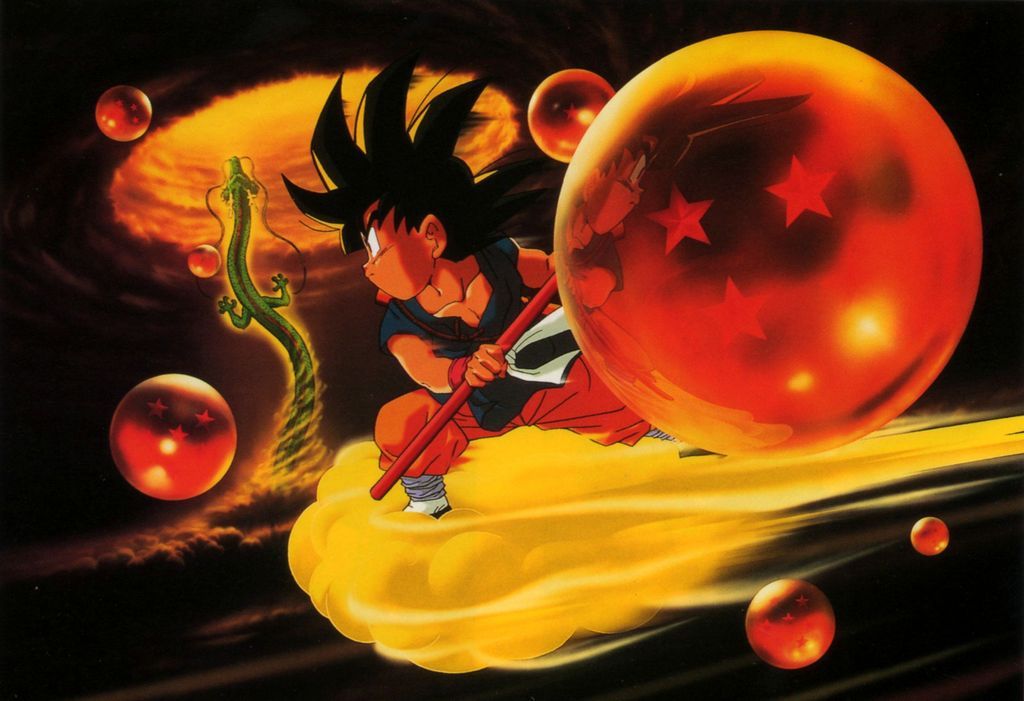
Whew. Helluva road getting here finally, huh?
My apologies for subjecting you all to what basically amounts to more than 25 years worth of hardcore kung fu fantasy fiction nerdery on my end. The whole original basis for me creating a babbling diatribe of a post(s) like this stems from what I've only in the last several years found to be the present day Dragon Ball community's stunning lack of familiarity with pretty much even the most basic fundamentals of Wuxia as a genre... right down to its very existence in the first place.
And as is no doubt apparent by now, this is a big, big, BIIIIIIIIIG and HUGELY fucking important topic. What I've written about in here is hardly anything but the merest tip of the iceberg and represents merely a summarized, abridged skimming over of my own lifetime's worth of experience with the genre growing up. There's a metric FUCKTON more that I've no doubt glossed over, both due to keeping this at least somewhat relatively concise, connected to Dragon Ball and its general style of Wuxia, as well as the simple fact that even a guy who's spent his entire life eyeball deep in following a genre this overwhelmingly old and gargantuan is still not gonna be exposed to or know about every-everything. Believe me when I say that Wuxia's as vast, broad, and as dense a genre of fiction and media as they possibly come.
Doing this whole info-dump was a MASSIVE undertaking on my end: it began with me deciding one particularly shitty day “eh, fuck it” and attempting to just run through a few basics about the genre for someone who had never even so much as heard of it before... only for it to have ballooned into a whole month's long project. Even with all my life's worth of experience and knowledge, it took a LOT of time and effort to compile everything all together and arrange it all into some semblance of coherence.
As I'm hoping is apparent by this point, a whoooooole lot of context needed to be delved into first in order for us to get to this point and be able to properly examine Dragon Ball not only as just another piece of Wuxia, but more specifically as a piece of Wuxia from one of the most odd and transformative periods in the genre's modern history.
In spite of Dragon Ball being a Japanese manga/anime series, due to its genre there are STRONG Chinese connections (haha) rooted to the very foundations of its storytelling and that plainly overwhelm its Japanese flourishes (especially when compared to other Japanese manga/anime attempts at Wuxia such as The Peacock King and Yu Yu Hakusho which bring their Japanese cultural elements that much further to bear).
This for me functioned as the primary impetus and motivation for wanting to dive into this subject: when it comes to fiction, particularly fantasy fiction like this, genre matters. Genre matters a great, great deal. Genre can often function as vastly useful and needed shorthand for the wider historical and cultural context around which a great many generations' worth of storytelling and narrative styles can be much more easily grasped and understood more clearly.
My favored go-to example for this has always been Westerns. Right off the bat just as soon as you say the word Western: “What kind of story are you writing?” “Well, its a Western.” Boom. Your mind is INSTANTLY filled in with all sorts of information that's become culturally built-in. You already know the costumes people will be wearing, the setting, you know all sorts of stock cliches: a nameless drifter riding into town on horseback, a two-fisted brawl in a rowdy saloon, a tense quick-draw showdown with pistols at high noon, etc.
Horror's a bit more broad than that, but it still gets the job done. Someone says they're working on a horror thing, your mind can instantly be drawn to werewolves, vampires, ghosts, Hockey masked killers, haunted houses, beautiful screaming girls, etc. Your mind immediately fills in a ton of blanks as soon as it hears just the single word.
Genres not only act as classifications for the subject matter, they also set the tone of the discussions surrounding them. I've been a geek my whole life, and for my entire life I've been around all kinds of various fandoms and fan cultures: they're hardly all of the same personality makeup and the same dispositions. Your fandom for something like say... Hellraiser for instance is going to attract a SIGNIFICANTLY different type of audience than something like, I dunno... classic 40s Disney shorts. That's just the nature of these things.
And geek culture loves nothing if not its genre fiction. Traditionally defined by sci fi/fantasy of the Star Trek/Lord of the Rings-ish variety, its over the decades and generations encompassed a tremendously great deal more than that. And clearly with its bevy of sci fi/fantasy elements, Dragon Ball is obviously SOME piece of some distinctive genre, one which has garnered it significant attention in broader and ever broader geek circles as time marches on.
So lets beg the question here and now once and for all: what is Dragon Ball's genre? Over the last 15 years of its latter-day Western fandom its been often defined as an “action cartoon”, which is pretty vague and non-descript. There's a LOT of cartoons that have action in them. Its been described also as “Shonen” which isn't a genre at all, but a target demographic (middle school age boys). Nonetheless that hasn't stopped a LOT of people in this community over the years from talking about and treating Shonen as if it were somehow a genre of its very own complete with its own set of tropes and cliches and what have you and that Dragon Ball is a part of it.
DB's been often compared with and treated as if it were a rough Japanese equivalent of a superhero franchise. From a certain vantage point you can almost sort of see how one comes to that conclusion: you've got a bunch of outlandishly dressed, brightly colored characters with superpowers flying around and smashing monsters and one another through mountains and buildings with their bare hands. There's also been a hugely popular and widely seen official North American dub that at various times has gone out of its way to further muddy the distinction and play the series up as if it were some kind of exotic cape and tights story about saving the world and good vs evil and what have you.
The spate of imitators and would-be successors that have come within the Shonen Manga-sphere in DB's wake (Naruto, Bleach, One Piece, etc.) have helped a lot of latter day fans to further posit the series down as a “Shonen Fighting Manga”. On first glance this SEEMS a bit more specified: it is indeed a manga centered on fighting and that's aimed at small boys. But at the end of the day, its still a pretty broad, sloppy classification. One that doesn't really hold up very well when one compares Dragon Ball's myriad of “successors” directly to it.
So... if Dragon Ball isn't a “Shonen Fighting Manga” or “Shonen Action Cartoon” (none of which are even real genres in the first place) then what is it? Well... lets pick the whole damn thing apart as best we can and get to the heart of it in light of everything that we've gone through.
The core roots of the series' storyline is made up of a hodgepodge of Wuxia tropes, themes, and stock cliches: tropes, themes, and cliches that have, in the many years since the series ended have been retrofitted through the prism of (largely unintentional) revisionist history into being seen as representative of the so-called “Shonen Action” genre. The problems with that logic however are numerous.
Firstly and most obviously it ignores that a VAST overwhelming majority of Shonen manga and anime made before DB doesn't in any way, shape or form resemble its now-famed “fighting” formula through which the so-called “Shonen Fighting Genre” is defined. One of the only ones that does to ANY degree at all is Fist of the North Star: which itself A) is also a Wuxia series and B) in a GREAT many other respects (largely regarding its tone and some of its other deeper themes) it stakes a position exceedingly far away from Dragon Ball's sense of oddball whimsy.
Most modern fans of DB today (the ones whose perceptions aren't wholly submerged in the FUNimation dub's “reversioning” that is) are self-professed fans of this so-called “Shonen fighting genre” that Dragon Ball supposedly belongs to. This has become over the last decade in particular a HUGE part of interacting with Dragon Ball fandom as it exists today and is now completely unavoidable.
What so many modern fans (of DB and Shonen in general) fail to do it seems is take into account the whole of Shonen manga history preceding DB's time and and try to trace some kind of a basis and origin-point for their beloved genre and styling of said-genre from which they've gotten Dragon Ball, Naruto, One Piece, etc. And there's a pretty good reason why you won't see that: because for the most part by and large, one doesn't exist.
That's not to say that Dragon Ball was somehow created in a vacuum. Quite the contrary, as we'll continue to explore here, Dragon Ball is the byproduct of COUNTLESS influences great and small... its just that, like so many other manga and anime franchises of its day (1980s and 1990s) its influences were largely from well outside the realm of its own mediums (manga and anime).
So yes, lets state the stupidly obvious: Dragon Ball is Wuxia. I've hammered home that much I would hope. But more specifically, HOW is it Wuxia? Well lets take it from the top, same as we did at the outset of all this and start with a look at...
Dragon Ball's Setting
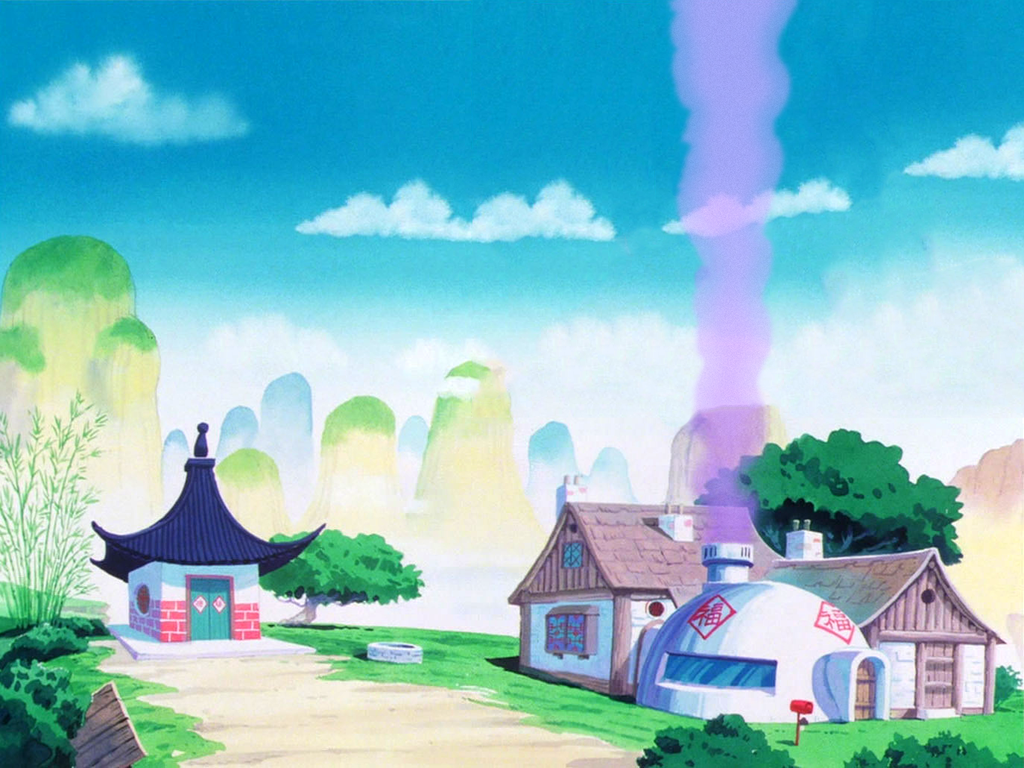
Dragon Ball is set in Akira Toriyama's Jianghu. There really isn't a plainer, more direct way of saying it than that: Dragon Ball from start to finish is in LARGE part defined by its idiosyncratically distinctive setting that most fans over the years have come to call the Dragon World but which can honestly be even better and more accurately described as “Jianghu as filtered through the same warped brain that spawned Dr. Slump.” or “Toriyama-ified Jianghu.”
In the Dragon World we have a mystical fairytale land that's positively STEEPED to its utmost core in classically ancient Chinese dress, architecture, and culture.
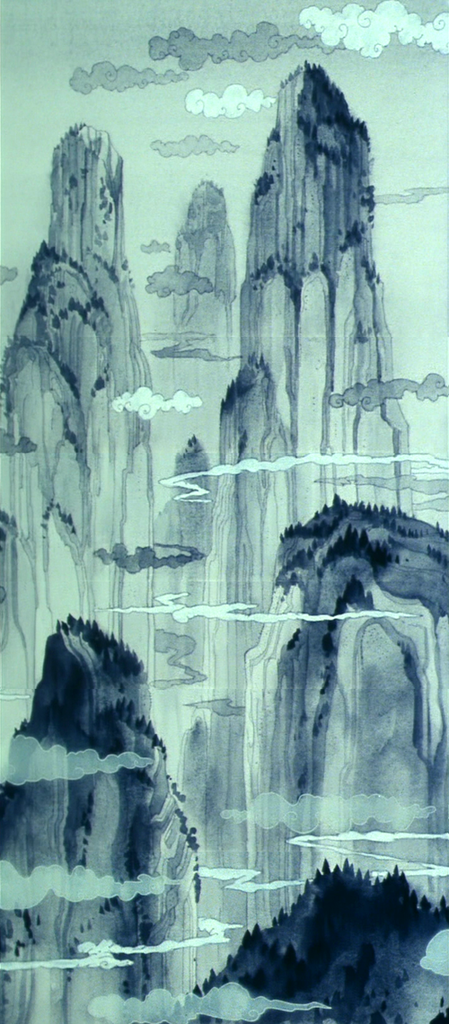

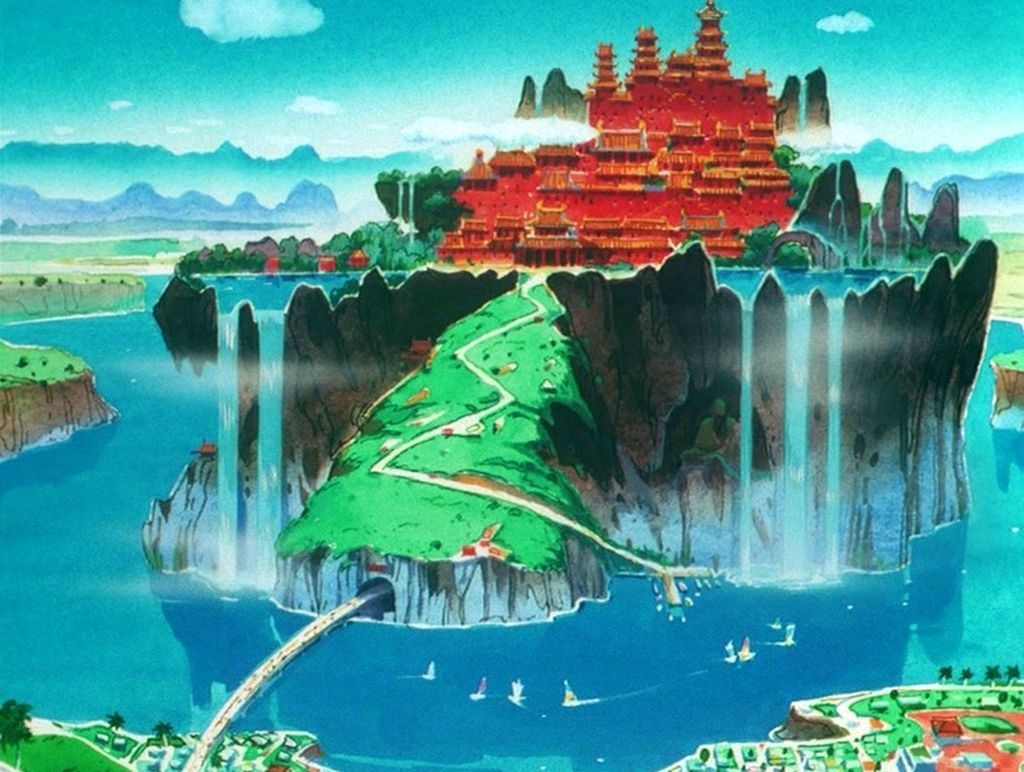
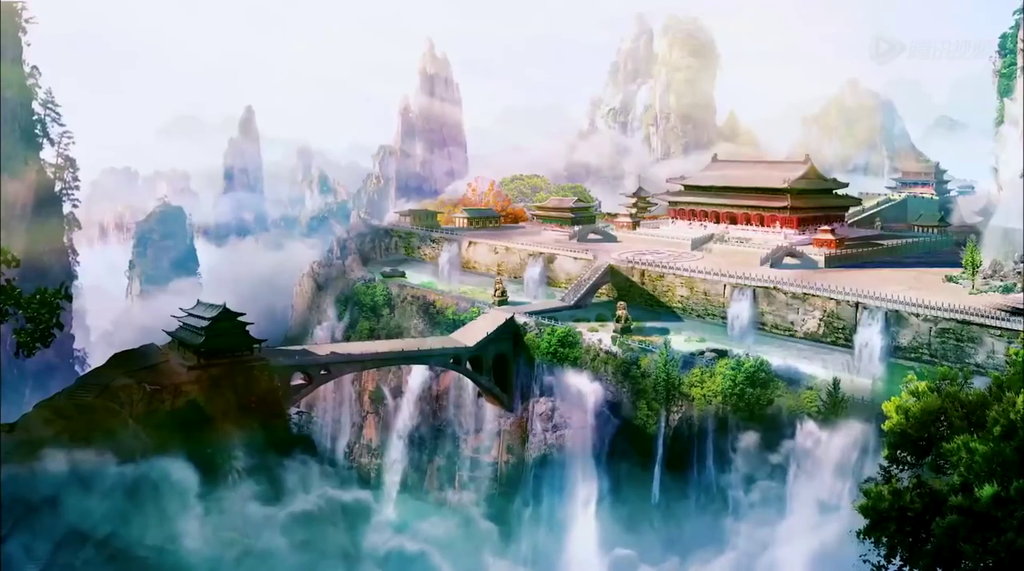
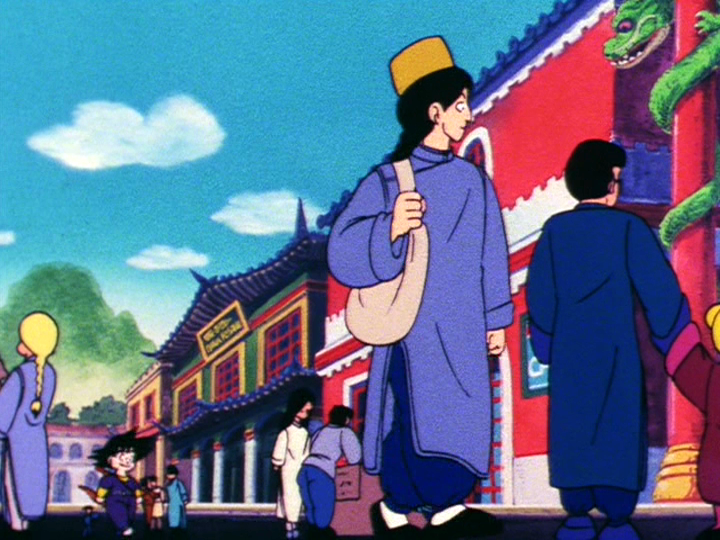


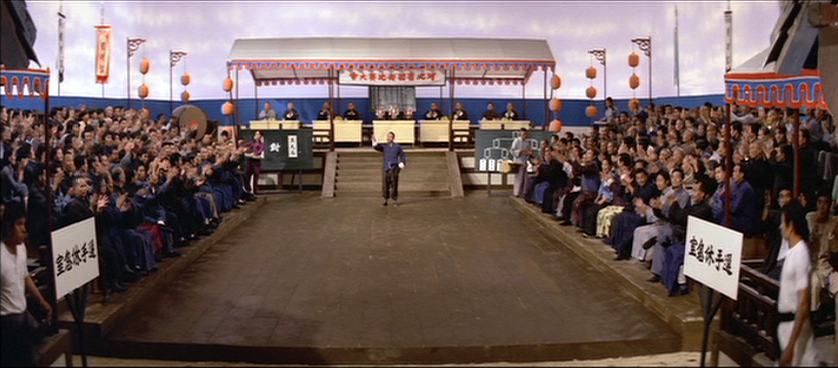
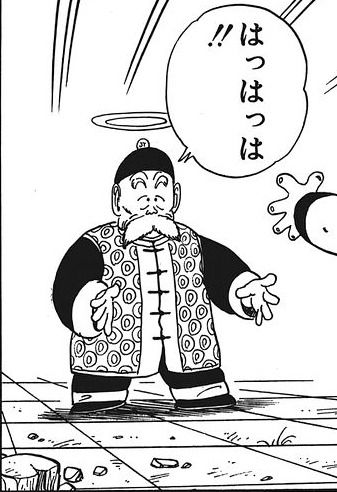
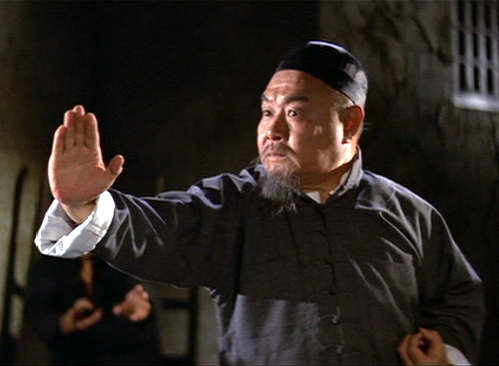
Beyond even the surface-most visuals though, there are strange wild monsters who roam the lands,
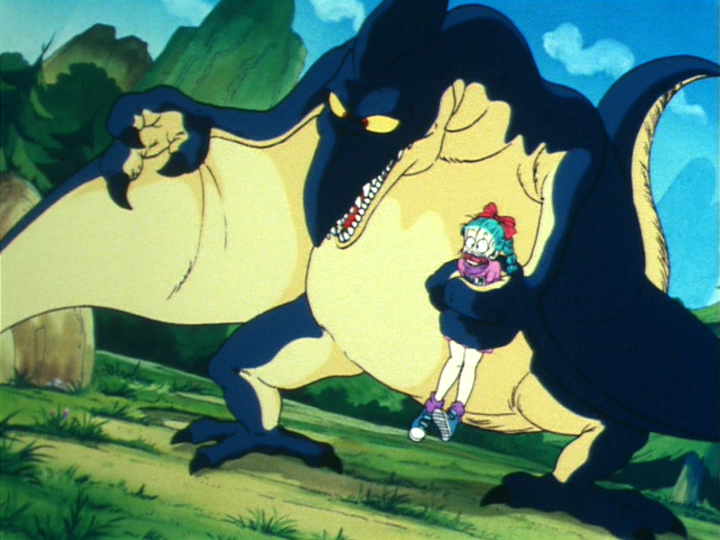
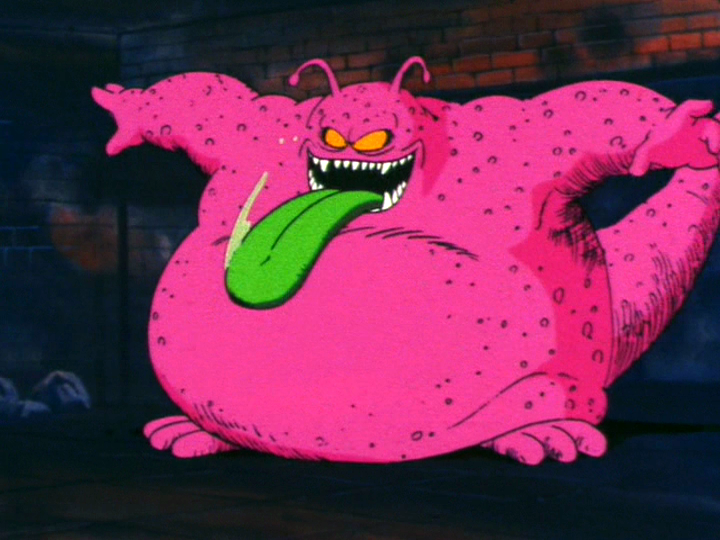
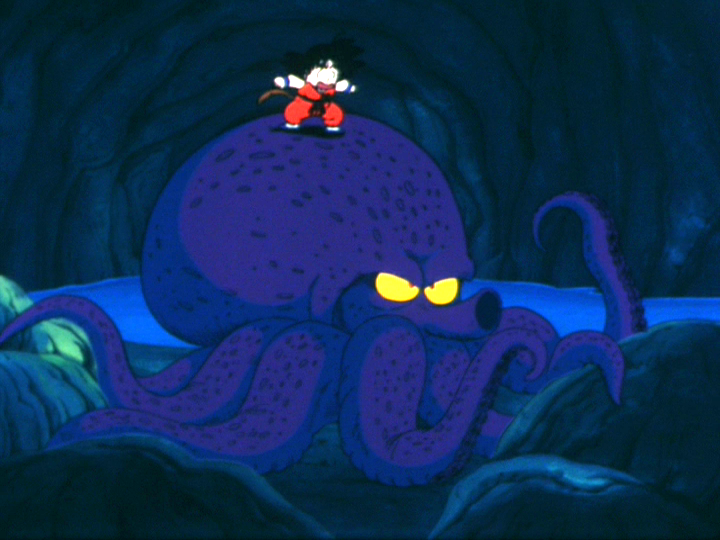


as well as the occasionally tamable friendly ones,
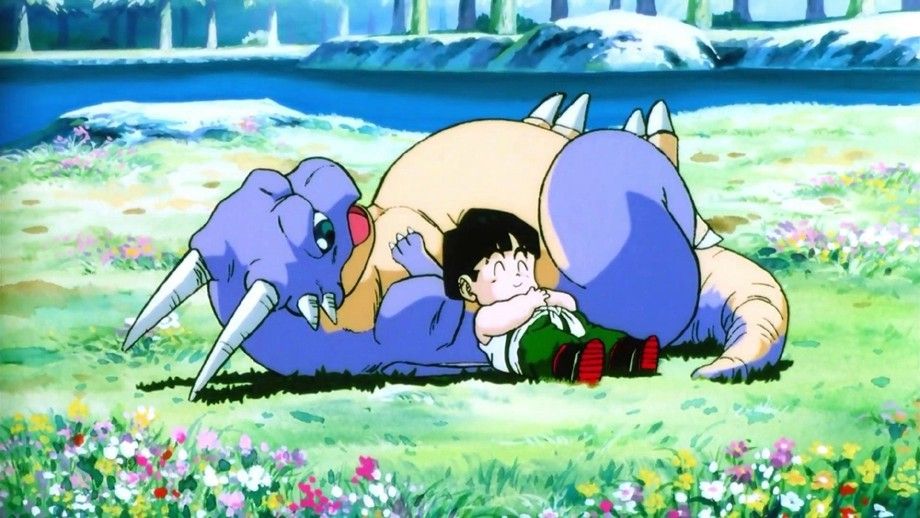
there are demons and ghosts and evil spirits,
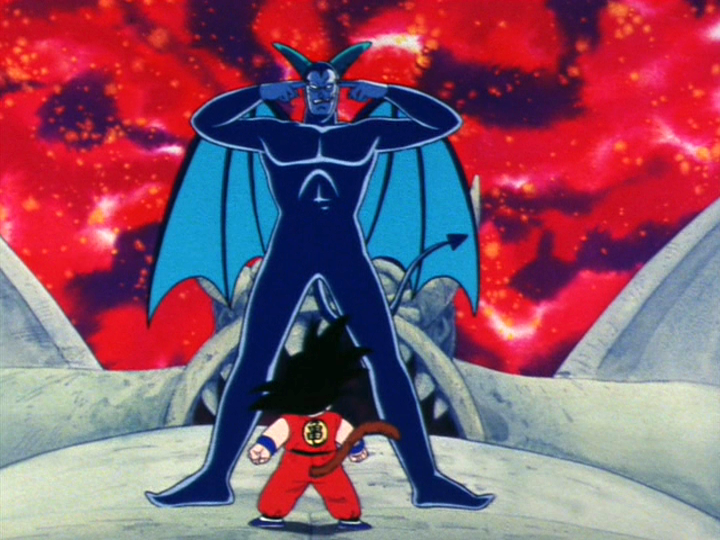

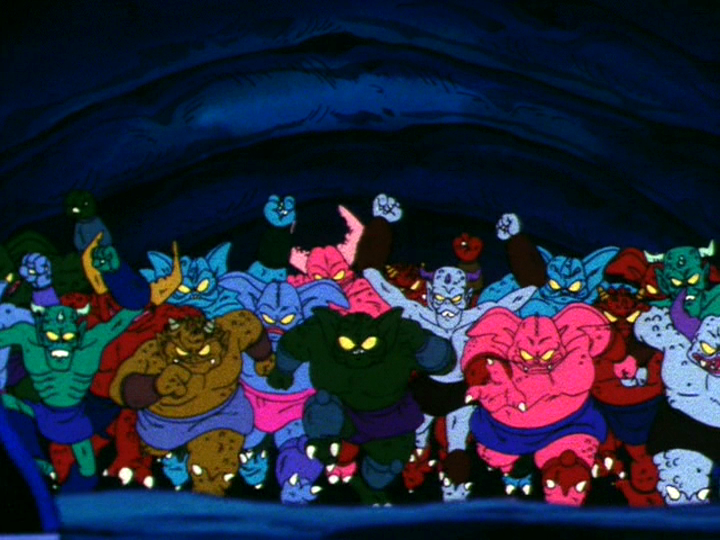

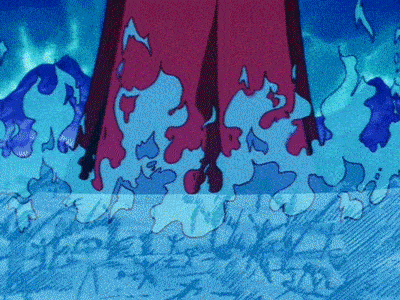
there are scenic villages great and small,

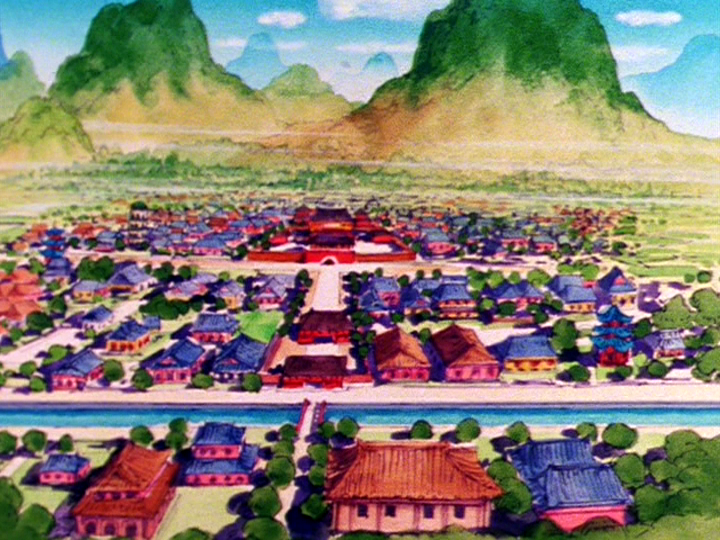
there are bandits, outlaws, and thugs waiting to prey upon unsuspecting travelers,
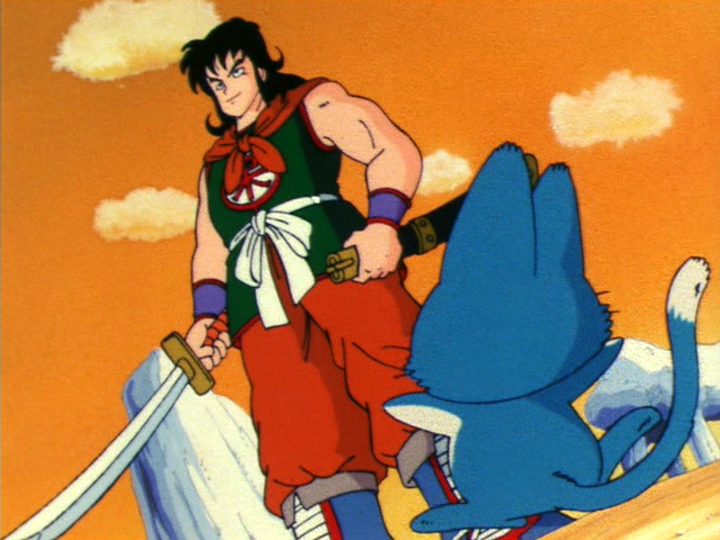
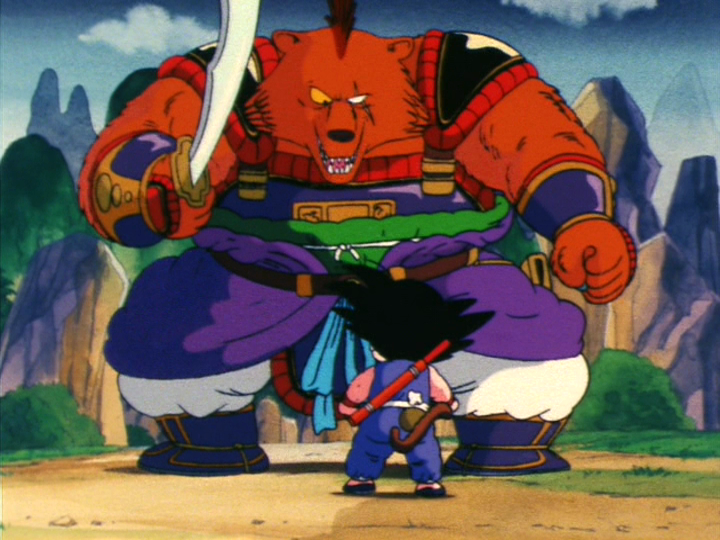
there are hidden magical weapons and artifacts,

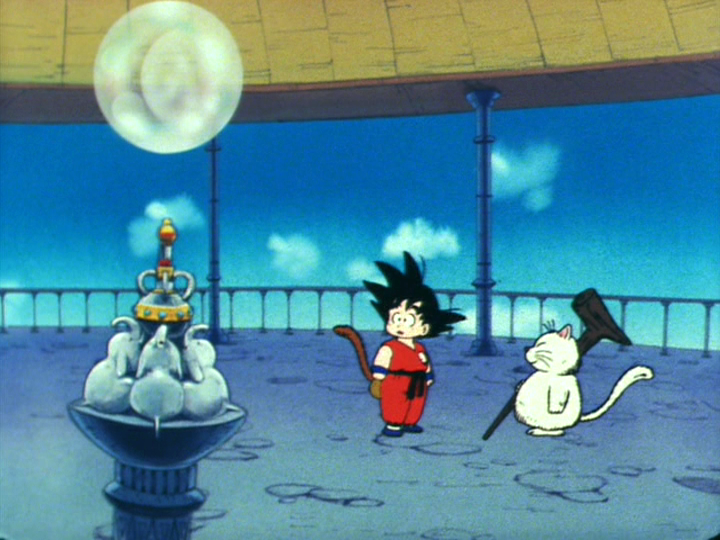
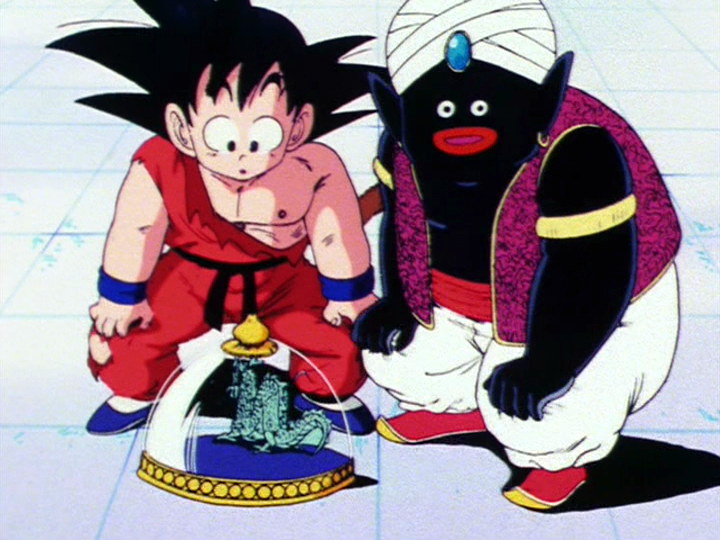


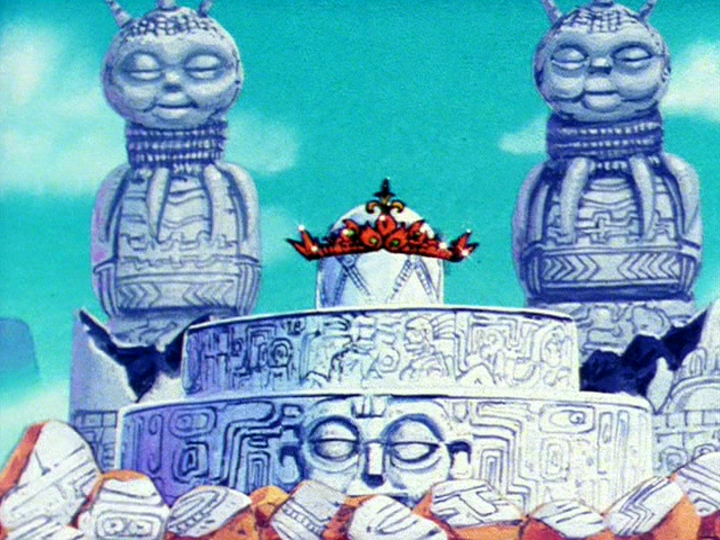
gods and ancient mystics live among us mere mortals watching over us,
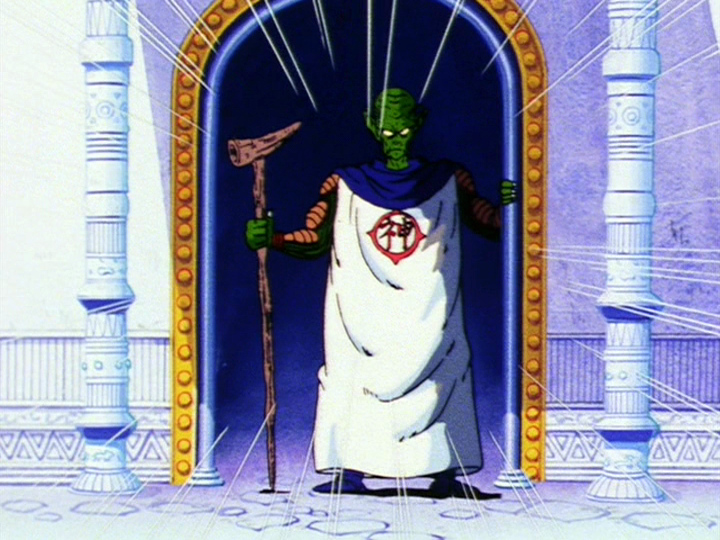
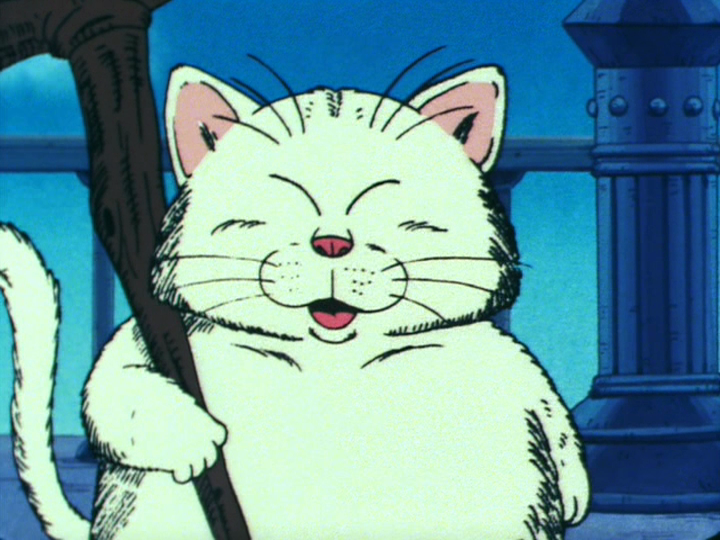
and of course there are numerous martial arts fighting schools, masters, and tournaments.
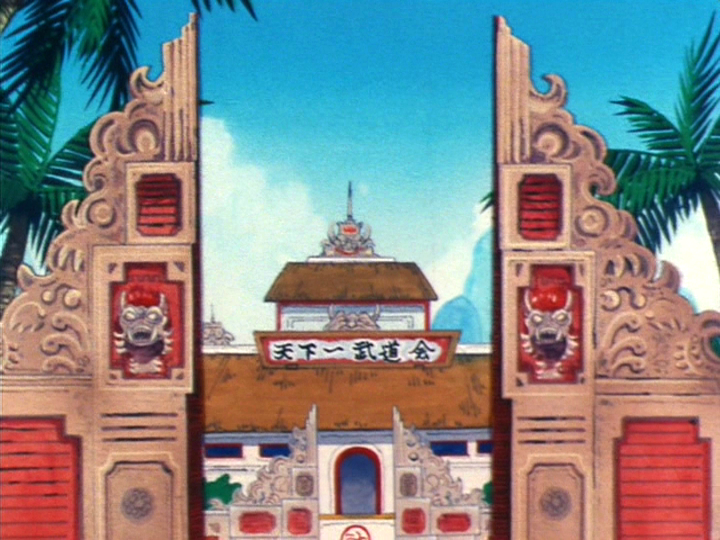
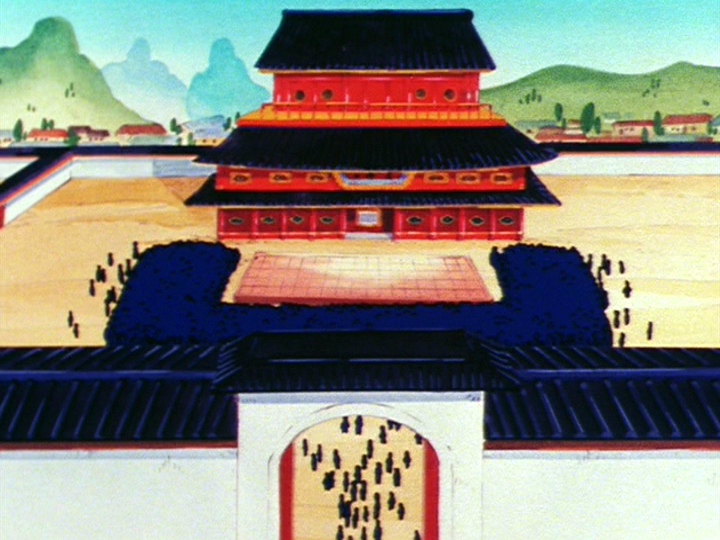

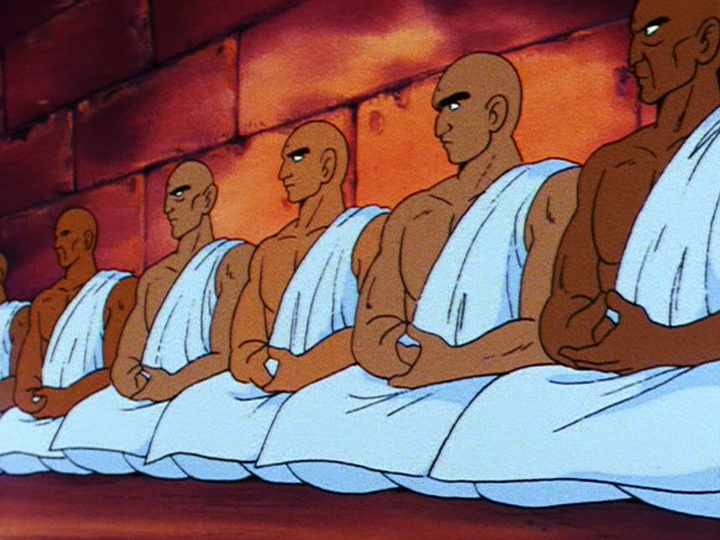
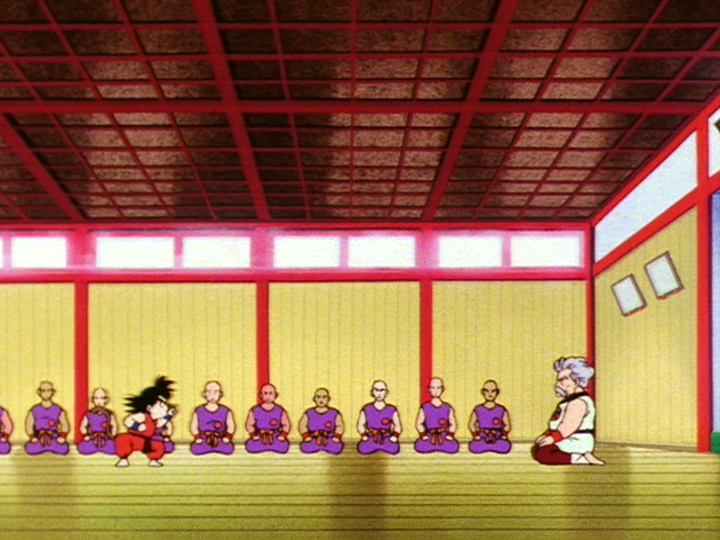
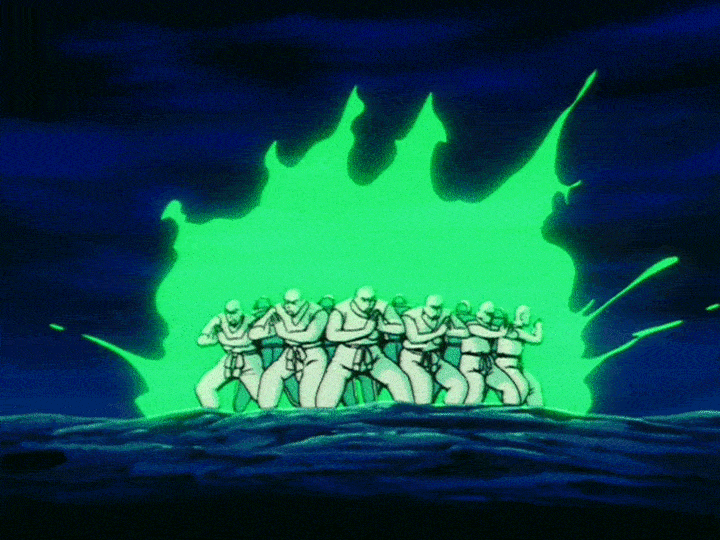
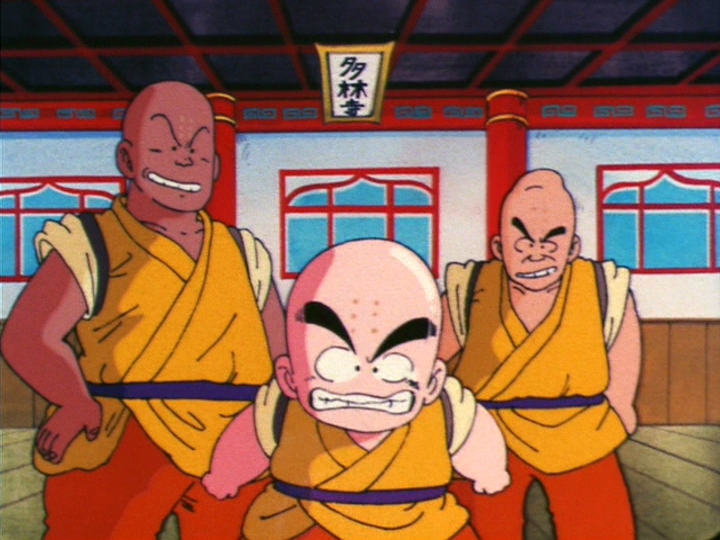
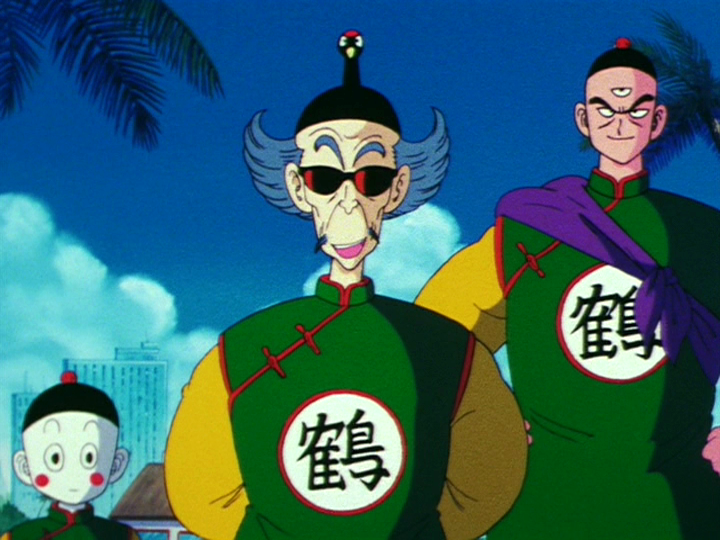
The biggest factor that differentiates the Dragon World from other interpretations of Jianghu are Toriyama's distinctive touches: his particular sense of ironic whimsy, his uniquely visualized technology and creatures, his overall unmistakable aesthetic. Again, this is unmistakably Jianghu as run through a Dr. Slump-ification filter of some kind.
The combination of the mythical ancient Chinese world along with modernized high tech technology is probably the most singularly unique element that Toriyama throws into the mix here. While most then-modern post-New Wave Wuxia works of the 1980s and 1990s were generally content to either choose between a straight traditional Jianghu setting or the modern present/far off sci fi future, the Dragon World actually remains unique among Wuxia works for being an even mixture of both simultaneously. In this way, Toriyama actually gets to have his cake and eat it too and allows Dragon Ball's interpretation of Jianghu to uniquely stand out among the countless zillions of others, making Dragon Ball truly in the New Wave spirit of merging the traditionalism of the past with the new ideas and fresh concepts of the contemporary present.
But of course Dragon Ball's Wuxia elements hardly stops at its setting.
Dragon Ball's Wulin Community
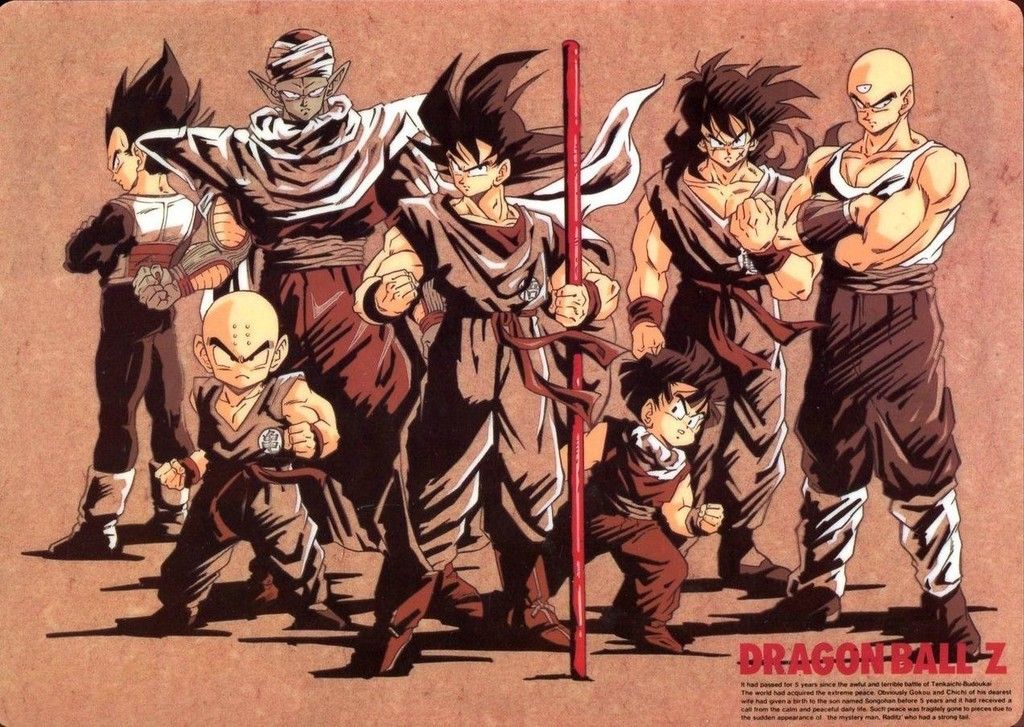
One of the single most important factors that defines the entire Dragon World and the Dragon Ball franchise as we've always known it is its Wulin Community of powerful martial arts experts. Dragon Ball begins right from the jump with an already long ago established Wulin community active throughout its lands: the first hints of it we get are from Son Goku's adopted grandpa Son Gohan, who we immediately learn was trained by the famed Muten Roshi alongside the feared and infamous Gyumaou, wielded a powerful magically-extending Nyoi-Bo as a weapon that also became famous and recognized throughout the lands, and that the reputations of these men is such that it extends to even lowly thieves and bandits like Yamucha, who himself has also had some form of training beforehand and is clearly a part of this world's martial arts community to some extent.
Over the course of the series, the Dragon Ball World's Wulin community grows steadily: we learn it has a Shaolin Temple equivalent with the Orinji and Kuririn who defects from it to learn under Muten Roshi alongside Goku. The Tenkaichi Budokai martial arts tournament is a pretty famed event across the lands that attracts tremendous crowds and spreads word of its fights and victors far and fast. Roving, marauding criminal empire militias like the Red Ribbon Army attract powerful and unique fighting experts from around the globe into its ranks, and freelance martial arts hitmen such as Tao Pai Pai stalk the lands offering their services to the highest bidder. There are other rival schools and teachers such as Tsuru Sennin and his Crane students/assassins Tenshinhan and Chaozu. Rivalries and vendettas quickly form between students, and the thrust of the series quickly cements itself as being largely behind following the progression of these characters as they train and grow steadily as martial artists.
The first “serious” threat of a villain in the series is a Demon King of ancient myth who returns in part for revenge against the students of the old master who sealed him away originally with a special finishing technique of his own creation: a special finishing technique which requires dangerous training on the part of our heroes to prepare themselves sufficiently to defeat him and that's as much of a threat to their lives as their actual enemy here is. And upon defeat, our ancient Demon King finds a way to return to haunt our heroes once more through the means of reincarnation.
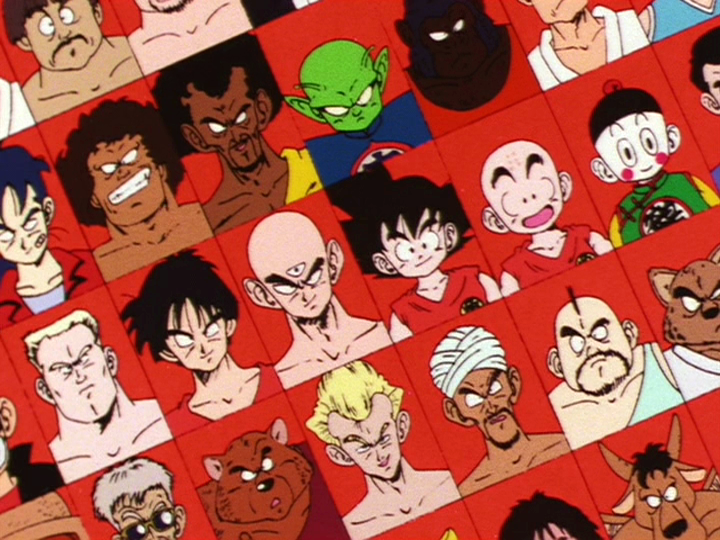
Training. Growth. Rivalries. Revenge. Special finishing techniques. Martial arts tournaments. Shaolin-like fighting temples and monks. Magical Chinese melee weapons. Martial arts assassins. Bandits. Ancient Sennin masters as mentors. Corrupt kingdom-like militias. Adversarial martial arts schools. Legendary Demon Kings. Reincarnation. We're as eyeball-deep in classic Wuxia/martial arts fantasy fiction tropes as we can possibly be with this series, and that's from just a cursory skimming of its basics.
Virtually all the notable warriors we meet throughout this series make up Dragon Ball's Wulin Community. And as the scale of the series grows, Dragon Ball's Wulin Community comes to encompass first the entire world, then the entire galaxy, then finally all of the known universe and planes of existence. This also matches with the experimental nature that Wuxia as a genre was largely going through during these same years, as Toriyama took his Wulin fighters away from their little Jianghu home and out into space to explore the cosmos and fight alien warriors for a time.

Our central protagonist obviously is Son Goku, as he's the central focal point that we follow from beginning to end, and his training and progression as a martial artist is what the series primarily concerns itself with and revolves around. The supporting cast of characters rotates to accommodate his list of teachers, rivalries, and allies: on one hand we go from Yamucha to Kuririn to Tenshinhan to Piccolo to Vegeta. Each of them at one point, as the stakes and levels of fighting grow, go from being Goku's biggest rival as a fighter to being a powerful friend and sometimes to being just completely left in the dust entirely. And on the other hand we go from Grandpa Son Gohan to Muten Roshi to Karin to God/Kami to Kaio-sama. Through these characters we follow as Goku goes from being taught by the best in the world to the best in the universe. But either way, these characters make up the section of Dragon Ball's Wulin World that we principally follow through the eyes of Goku as he navigates his way through it.
Dragon Ball's Wulin community manages to encompass pretty much just about every Wuxia archetype I recounted earlier in this whole schpiel.
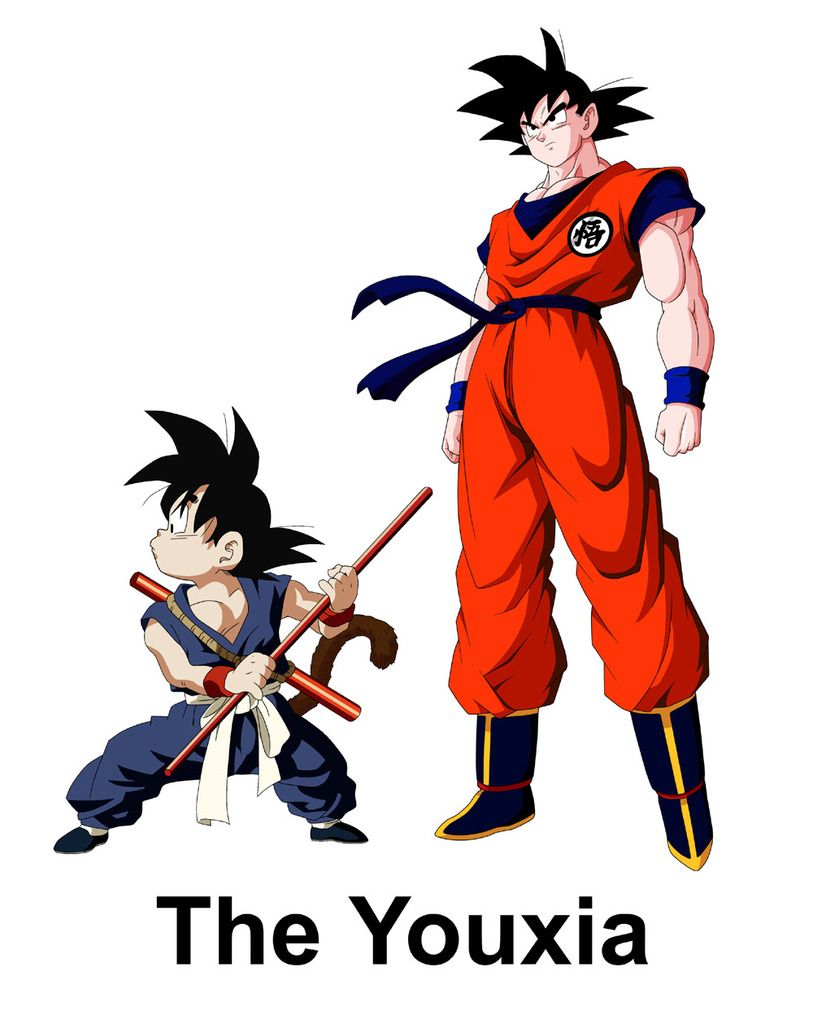
You've got your classic. A wanderer at heart. A restless spirit of a fighter always seeking the next new challenge, never satisfied with being on top or being the best, always looking to defeat himself and overcome his limits. This is the literally-ancient mold for an unfathomably countless number of heroes throughout a zillion Wuxia tales spanning back to the genre's very beginnings.
And as Dragon Ball's a later, more modernized Wuxia tale, this Youxia's got a lot more in common with later incarnations of the character type: this Youxia does not come from nobility or riches and is the farthest thing in the world from poised, stoic, and aloof. Rather our hero in this incarnation was brought up in the sticks and grew up with splotches of mud and dirt ever-present upon his face, is as book-dumb as book-dumb can be, knows absolutely less than nothing about proper manners and how to carry oneself in the presence of people of importance, is jovial, upbeat, friendly, and incredibly naïve. This is the “Folkhero, local-boy-made-good” incarnation of the Youxia archetype of the common peasants and farmers rather than the older, more traditional regal picture of elegance of Youxia poetry passed in between elite scholars and noblemen.
Most of Goku's “development” over the course of the series changes very little from that from a broad, obvious standpoint. Rather Goku is a character of much subtler changes and alterations as the series progresses. Goku very gradually grows subtly more wiser and more perceptive as he gets older and experiences more treachery of a sort that would harden most men a great deal more than he ever does. He also has to learn to wrestle and cope with his barbaric, murderous roots among the Saiya-jin and accept the innocent blood on their hands as a part of who he is rather than continually try to deny it.
But overall, Goku is a simple character of a simple mold whose changes in fighting style and ability are FAR more drastic than those of his personality traits and characteristics.

(The personification of the Xia's martial spirit.)
Some of Goku's most useful and distinctive supernatural martial arts techniques throughout the series are to varying degrees ripped directly from various other Wuxia stories verbatim.
The Zanzoken (Afterimage) technique is taken straight from Guo Jing in Legend of the Condor Heroes who learns an identical technique, the “Holy Turtle Steps”, from Huang Yaoshi. While the name of the technique is obviously changed, that its primarily used by and taught to Goku by Kame Sennin (the Turtle Hermit) is very possibly an intentional reference.
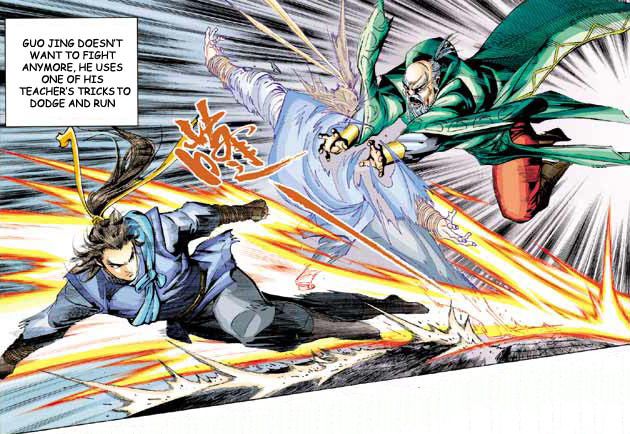

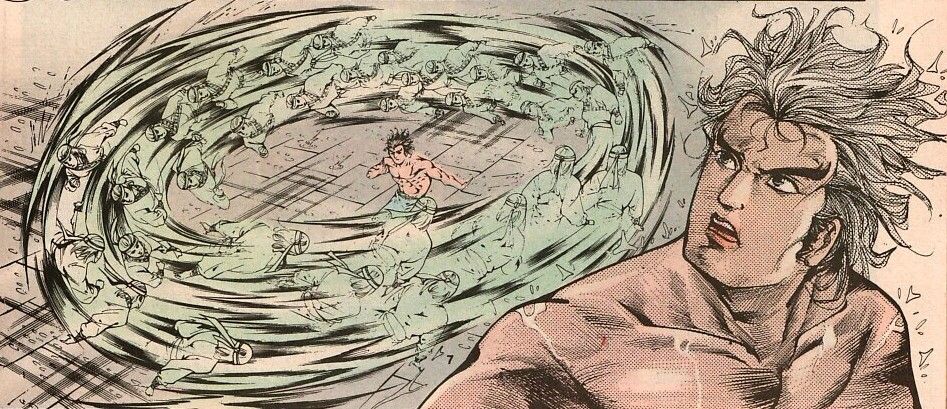
Another of Goku's techniques directly lifted from the Wuxia writings of Jin Yong is the Shunkan Idou (Instantaneous Movement) which is ripped directly from the “Shifting Stance” from Demi-Gods and Semi-Devils. Everything from the “index and middle fingers to the temple” hand gesture to the specifics in how the technique works via “locking onto” a specific Ki source and being able to transport others along with you by touch is copied verbatim from Demi-Gods' Shifting Stance, which is among its more well known and notable supernatural martial arts techniques.
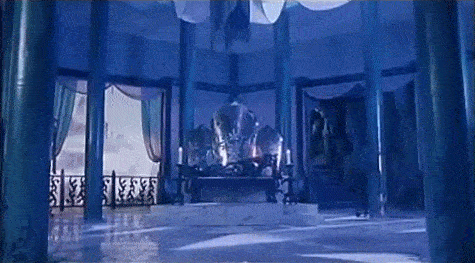

Far from being originally anything to do with Shonen, Goku's naïve rural bumpkin kung fu prodigy character mold was originally first and foremost a cliched staple across classic martial arts fiction: even far beyond just that of Wuxia and Youxia. Probably due in part to the ubiquitousness of the character-type across a great many and fairly old Wuxia tales that have long penetrated into the Chinese/East Asian collective consciousness, this cliché had also spread itself across to and embeded itself deep within even grounded, non-fantasy-fied martial arts films and stories.
The Wuxia-averse Bruce Lee himself portrayed this very exact character-type almost to the letter (minus the supernatural Ki techniques of course) in one of his most famous roles as Tang Lung in the iconic and timelessly cool Way of the Dragon (yes, the one where he fights Chuck Norris).
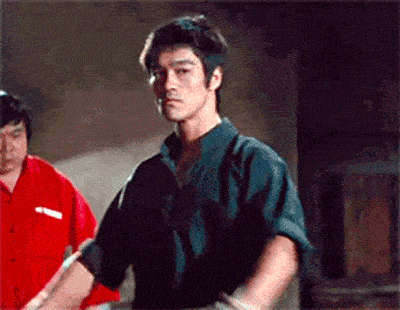
(Ain't from around here. Never left the farm. Never been to no great big city before. Never used too many fancy words. Never seen a car. Never used a telephone. Never watched TV. Never seen a naked girl. Has killed Chuck Norris.)
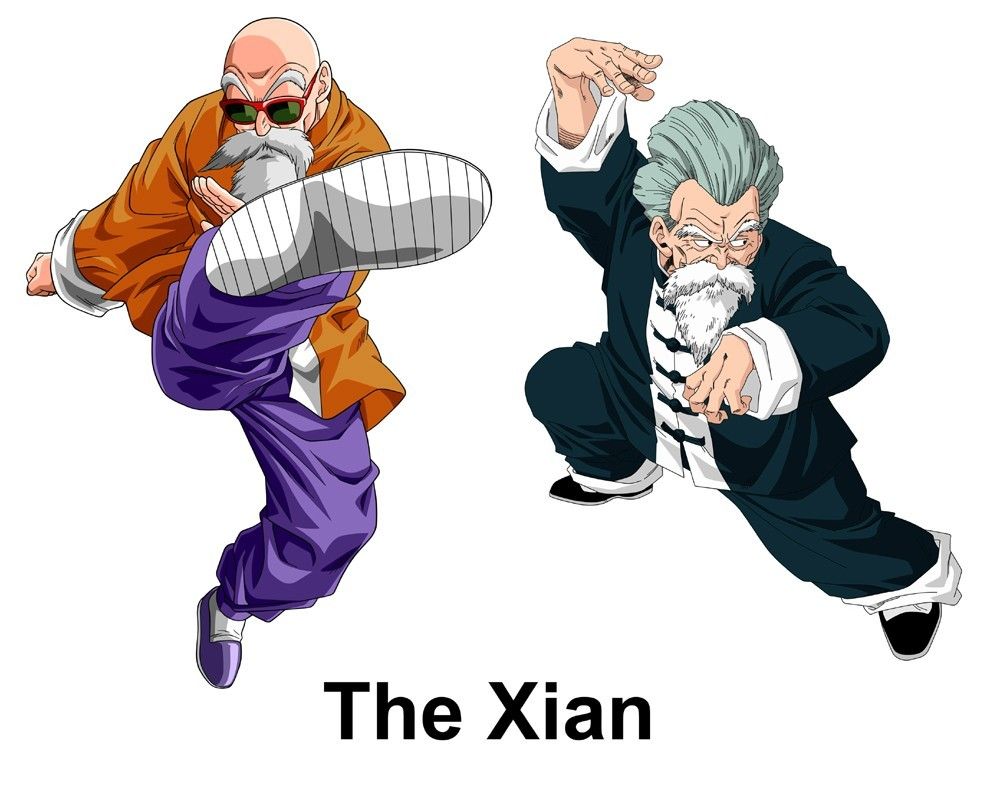
Again, another easy one to instantly peg. For fuck's sake, he comes self-labeled with the direct Japanese equivalent of the name for his archetype is right smack in one of the character's own two names (Kame Sennin).
Good 'ol Roshi fits and embodies the seasoned teacher/mentor figure of the classic Kung Fu fiction narrative to an absolute science. From nearly the very first moment he enters the picture, whether he even intends to or not (and this being the ever-irreverent Toriyama, often times not), he's teaching Goku invaluable martial arts skills that will serve him the entire rest of the series (namely the Kamehameha, possibly the single most versatile tool in his kit).
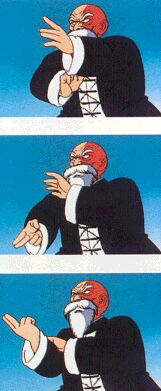
Ancient and long-lived far beyond a normal lifespan, Muten's Sifu/Sensei cliches runs the gamut from standard training montages of varying stripes, being a sometimes literal father figure to the boys, having an old vendetta from his arrogantly youthful shady past come back to haunt both him and his young charges, having an arrogantly youthful shady past at all in the first place, having once been the strongest fighter of his generation now getting on the decline in his advancing years, and of course dying in combat against his old arch foe (a certain Great Demon King) so that his student can avenge him (more on this later).
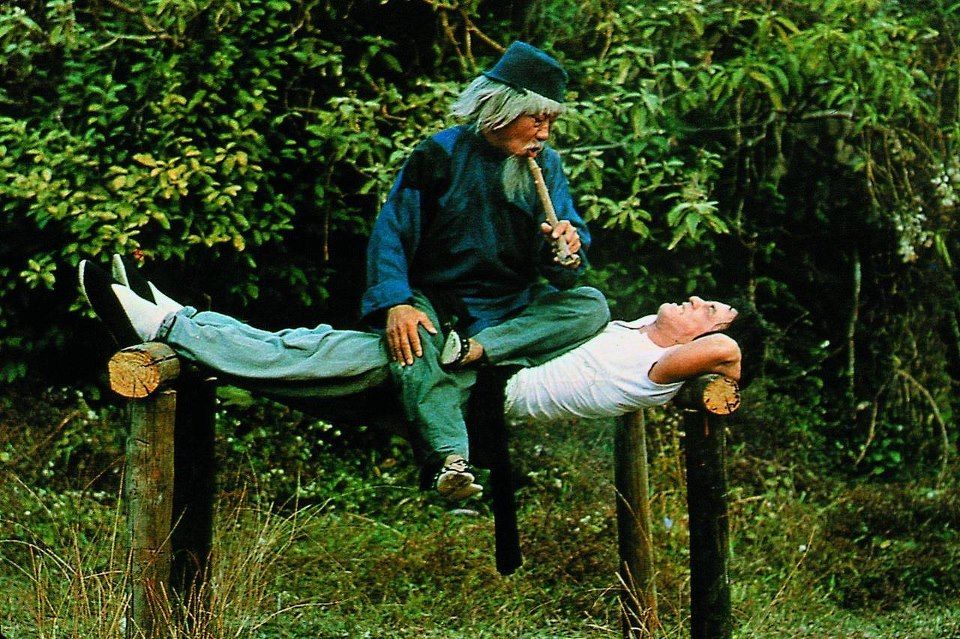
(Obviously this is a training scene from the original, classic Drunken Master with Simon Yuen and young Jackie Chan. But if you didn't know better and I told you this was from an old, lost live action Dragon Ball movie, how much trouble would you REALLY have buying that?)
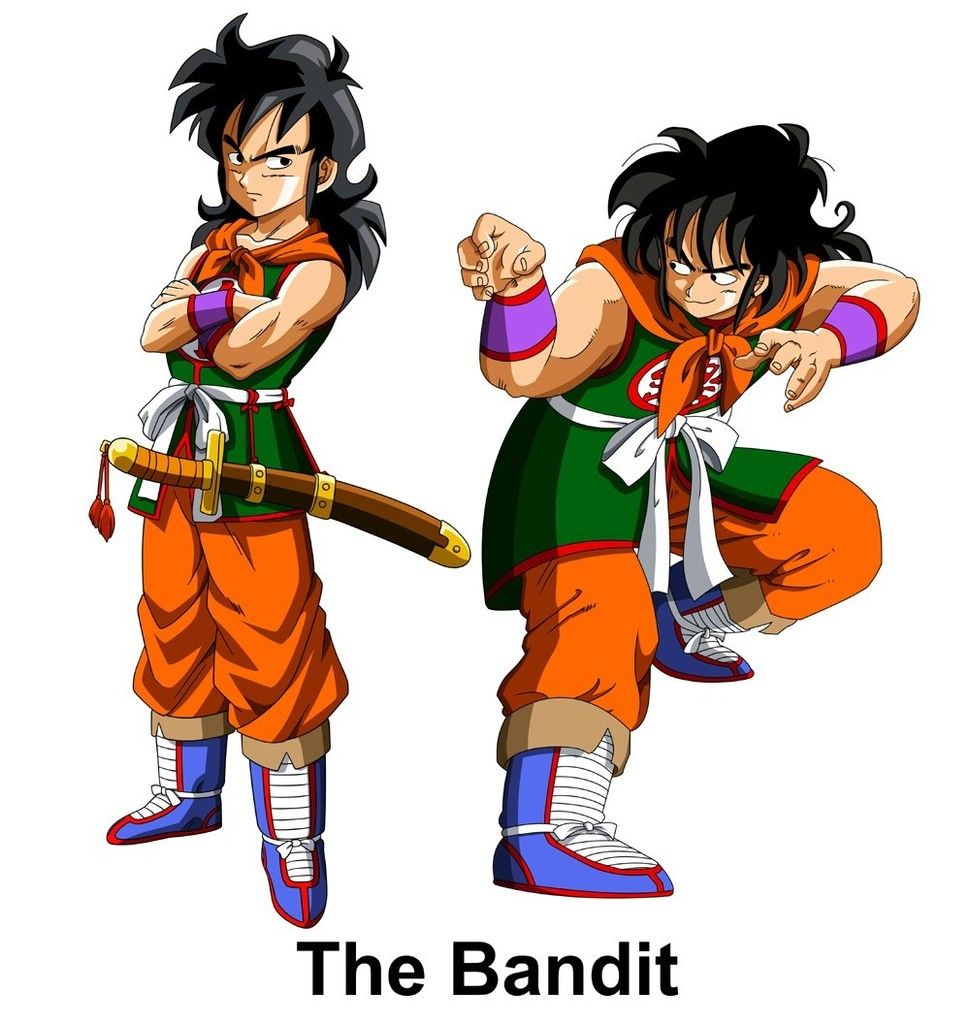
Some might say this one's a bit misleading: after all, Yamucha gives up his life of crime fairly early into the series. But honestly, isn't this how most of us ultimately remember the guy? Does he REALLY ever FULLY live down this first appearance? Yamucha sorta settles into a kind of unfortunate role of lesser-Youxia after this anyway. We've all heard pretty much every Yamucha joke a billion times over at this point anyway, so far be it from me to go through the motions of mindlessly parroting them like a hack.
It is kinda cool how Yamucha as a bandit manages to almost simultaneously be both antagonistic fist-fodder for Goku as well as kind of a noble/heroic thief. The running theme of Dragon Ball, and really almost any given Toriyama-work, is an almost gleeful exuberance at getting to break out as many toys from the toy chest to play with on the page all at once.
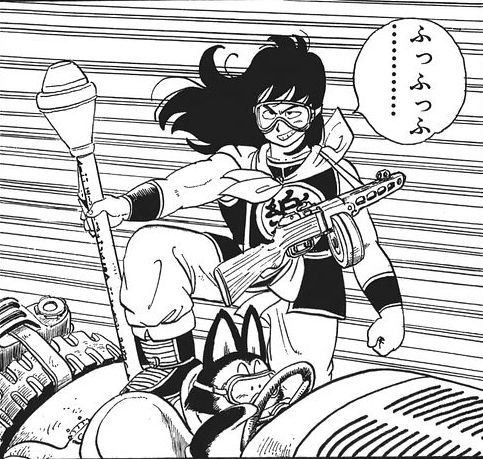
(And 'sides who doesn't welcome an excuse, any old flimsy excuse, to gawk at Toriyama-drawn retro-military hardware?)
Also gotta say, ever since I can remember I have ALWAYS wanted to see Yamucha pit his Sokidan up against Ting Yin.
…
…
...Ting Yin would probably still win though (okay fine I lied, just the one Yamucha joke).
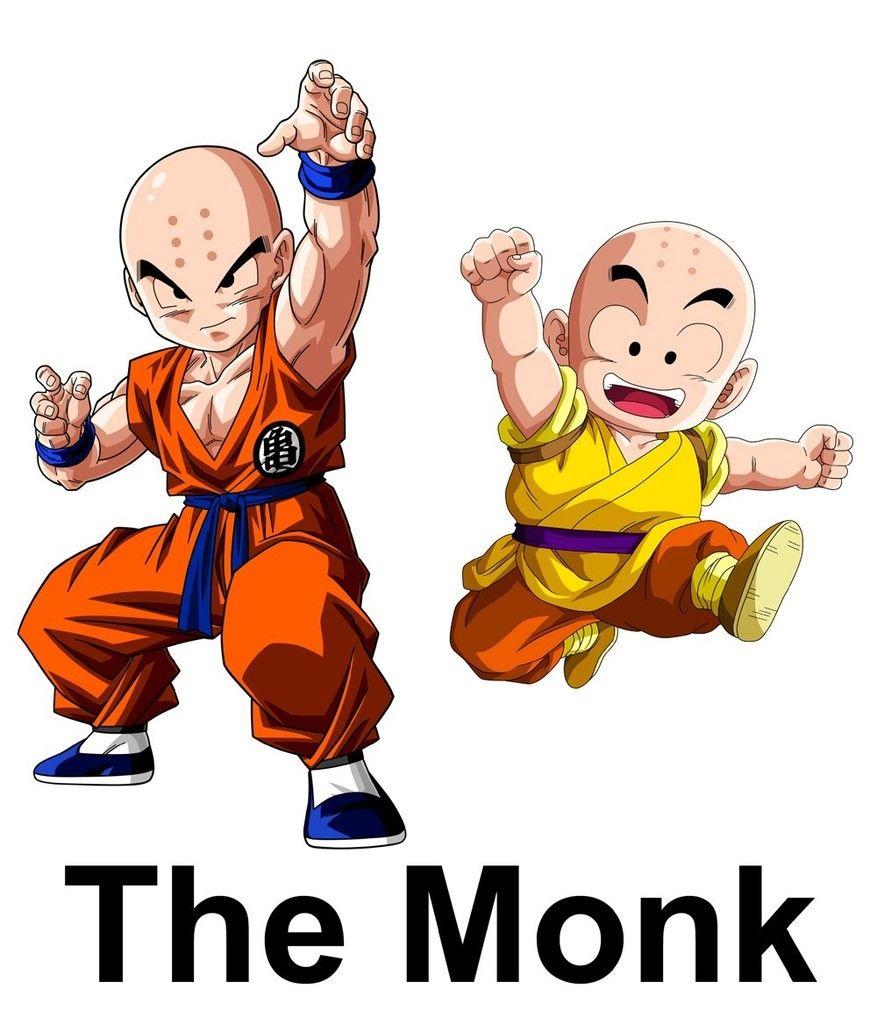
Again: self-explanatory.
The thing about Kuririn's portrayal throughout much of Dragon Ball is that his fitting the Monk archetype actually does go a bit beyond someone like Yamucha where it mostly acts as the main excuse to introduce them into the series' world. Aside from a few “Toei moments” in some of the movies (they were really rather inexplicably keen on playing up his jitteriness) Kuririn being a monk in a Wuxia story does at times seem to inform his characterization.
Oftentimes he is usually in many cases the voice of reason amongst the other Z Warriors. Most of the time if Piccolo isn't the one coming up with a plan of action, its probably then Kuririn. Next to Piccolo he takes charge of the group the most when Goku's not around, and also next to Piccolo comes up with some of the most creative uses of his Ki (a buzzsaw and a scatterbomb? How sick is that?). One of my favorite ever examples of his clear perceptiveness during a rough spot is during the fight with Reacoom: not even Vegeta thought to just slam the big lug's trap shut in the middle of his Eraser Gun technique and make him eat the damn thing.
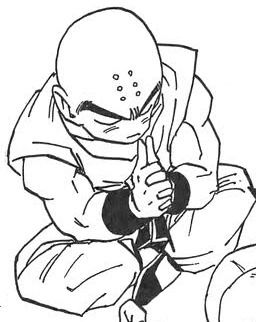
Wisdom and levelheadedness in a tight spot along with a penchant for improvising unique and useful techniques on the fly seemingly from nowhere when a fight starts going south: yeah that's a Wuxia Monk alright.
And plus c'mon, how much of a Toriyama-esque move is it to make the incense-burned Buddhist the team-horndog?

Unsurprisingly in a sort of similar boat as Yamucha. Tenshinhan leaves his disreputable underworld origins behind him by the end of his debut story arc and goes on to be probably in many ways one of the most dedicated and committed Youxia in the whole series next to Goku, and a much more old school-stoic type of Youxia than Goku at that.
Still, its worth bringing up and attaching to him for a few reasons. Namely that its Tenshinhan's regrettable past that functions' as a great deal of his motivation going forward (redemption) and probably has a lot to do with his sullen, dead-serious demeanor. Ten's a guy who's probably rarely stopped torturing himself for his past wrongdoings.
I've always found it pretty telling that it isn't until Goku dies against Cell and chooses not to return that Ten picks as the point to part ways “permanently” with the rest of the group. Going back to the 22nd Budokai, Goku's the whole main reason Tenshinhan ever had before to better himself from his time as an aspiring martial arts assassin. Their rivalry as martial artists/Youxia is what principally spurred on Ten to stick around with the others throughout so much lunatic craziness (revived demon kings, alien invasions, chasing monkeys around the afterlife, cyborgs, time traveling Cicada-people and so forth).
That his fight against Tao Pai Pai in the 23rd Budokai ends the way it does, with Ten winning but getting permanently scarred in the process, has also felt pretty fitting: Tao Pai Pai represents the ugly person he almost once became, and while Ten overcomes it, it'll always permanently mark and define him to a degree going forward as everything Ten does in trying to measure up to Goku is likely to at least SOME degree partially informed by his constantly attempting to distance himself from who he once was. Dimestore symbolism to be sure.
Either way Goku always needed a “serious, straight” Youxia counterpart to act as a foil for his bumpkin dippiness, and long before Vegeta came calling Tenshinhan fit that particular bill nicely.
Oh! Plus how can we forget the third eye?
Well before some Daizenshuu staffer flunky threw in some nonsense about “Descending from alien Three Eyed Clans” or what have you, there's always been a pretty straightforward Wuxia/Taoism explanation for the third eye. I'm sure its been discussed in various threads here many times before ad nauseam (and probably on the podcast too) but in the interest of being comprehensive, I'll quickly review:
In the upper Dantian (you remember those?) of the body there rests the set of meridians that funnel Ki flow through the mind. Upon reaching advanced stages of meditation and meditative focus, a third eye or “the mind's eye” can be opened. A holy symbol of Taoist beliefs and an icon of wannabe-New Age Gurus the 1980s-over, the third eye signifies one who is an enlightened mind, capable of fully tapping into their mind's full potential and is thus able to see beyond the limits of what most normal people see before them in the physical world.
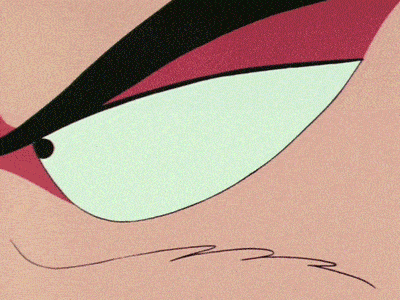
(A handy trick for when some persistent, moralizing old fool starts moving a wee bit too fast for most folks to pick up.)
Some “alternative” pseudo-scientific theories posit the “third eye” as being an awakened state of the brain's pineal gland which activates when the supposed remaining inactive 90% of the human brain becomes active.
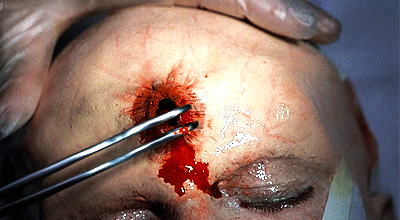
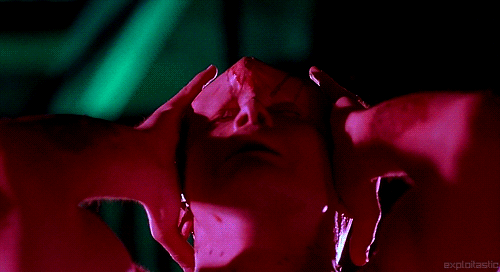
(No word on if its quite as gross and icky as it is in From Beyond.)
Being of Taoist origins, the third eye has popped up in other various random bits of Wuxia media from time to time outside of just DB and Tenshinhan. The early 70s horror-tinged Shaw Bros. wuxia flick The Devil's Mirror features a demonic and seductive witch with a Taoist third eye who spends much of the film attempting to toy with the leaders of two martial arts clans in order to get her grubby hands on a pair of magical, enchanted mirrors.
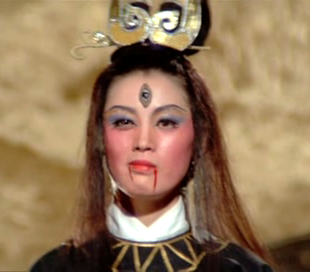
Also of course there's Erlang Shen, a Journey to the West character with a Taoist third eye who is most likely Toriyama's principal inspiration for Tenshinhan's sporting one.
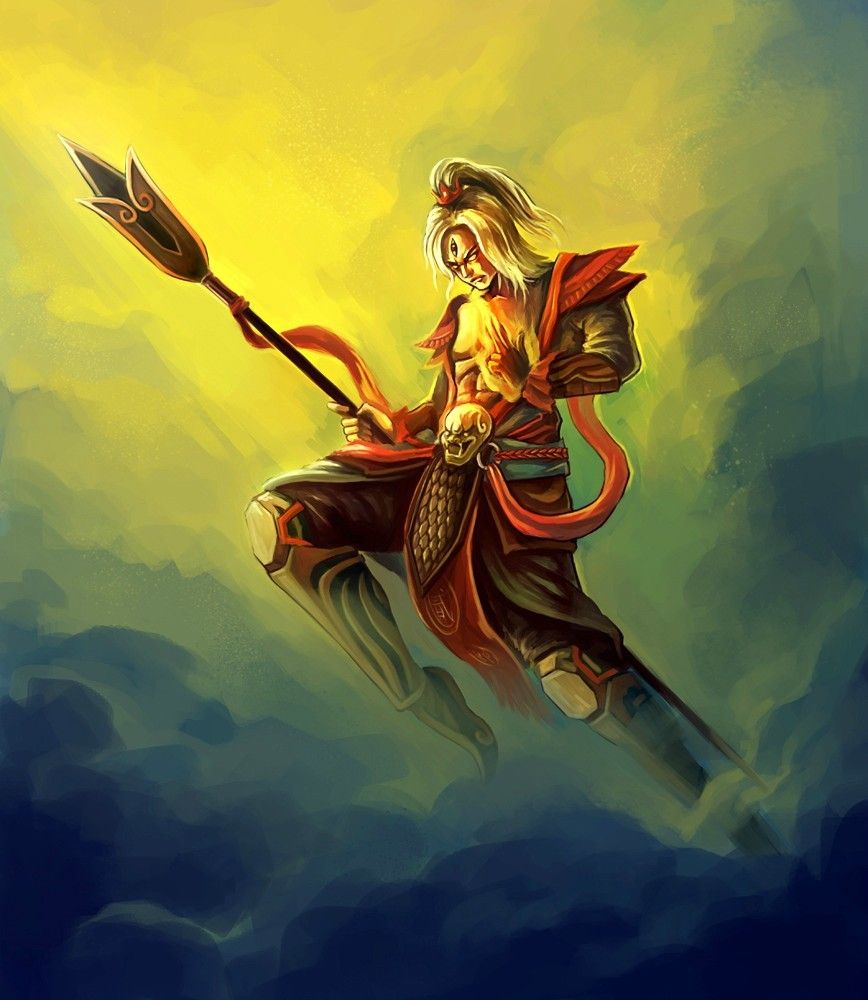
Furthermore is Tenshinhan's body-dividing shenanigans, also with a Shaw Bros. Wuxia antecedent: in Descendant of the Sun, not only does Derek Yee counter the lead villain's body-splitting with further body-splitting of his own, he even makes a point of surrounding the badguy(s) from all four corners of their fighting arena and Ki-zapping him from all sides as soon as he attempts to take flight for an aerial escape. Tenshinhan probably saw the movie before his match with Goku in the 23rd Budokai.
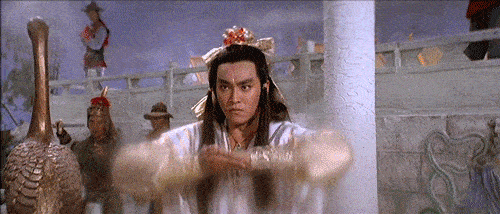
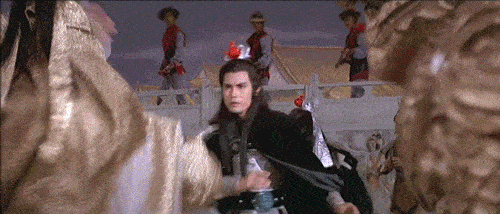

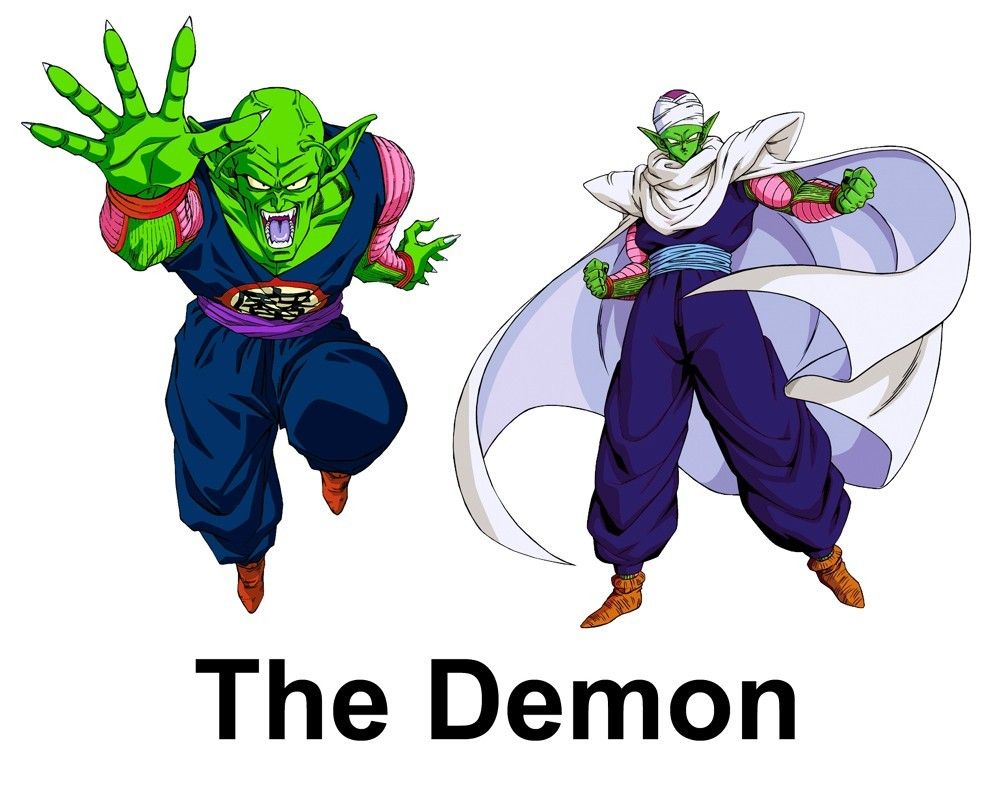
Yes obviously Piccolo is eventually revealed to be of Namekian origins. Yes that technically makes him an alien. No that doesn't really do much to impact his character-type: as with many demonic characters across Wuxia, Piccolo is primarily used as the team's mystic. From conjuring material matter from nothingness:

to magically enchanting objects to be able to grant wishes and bend reality:
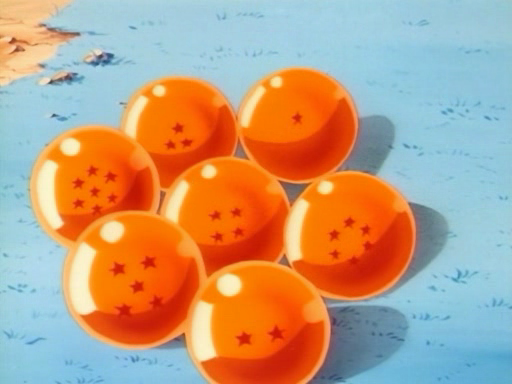
(Duh.)
and once or twice even deriving divine insight and knowledge from part of his consciousness' time as Kami/God (such as instantly knowing who Kaioshin was), Piccolo is in large part defined by his status as the group's “other”. That he was originally born on another planet almost seems a needlessly extraneous detail for all the impact it ultimately has (or rather doesn't have) on his dynamics with the other characters.
Piccolo's (and the other Namekians') ability to stretch his limbs to great rubbery lengths is itself also a technique occasionally found possessed by certain characters across Wuxia, often characters with an element of the “bizarrely foreign” to them.


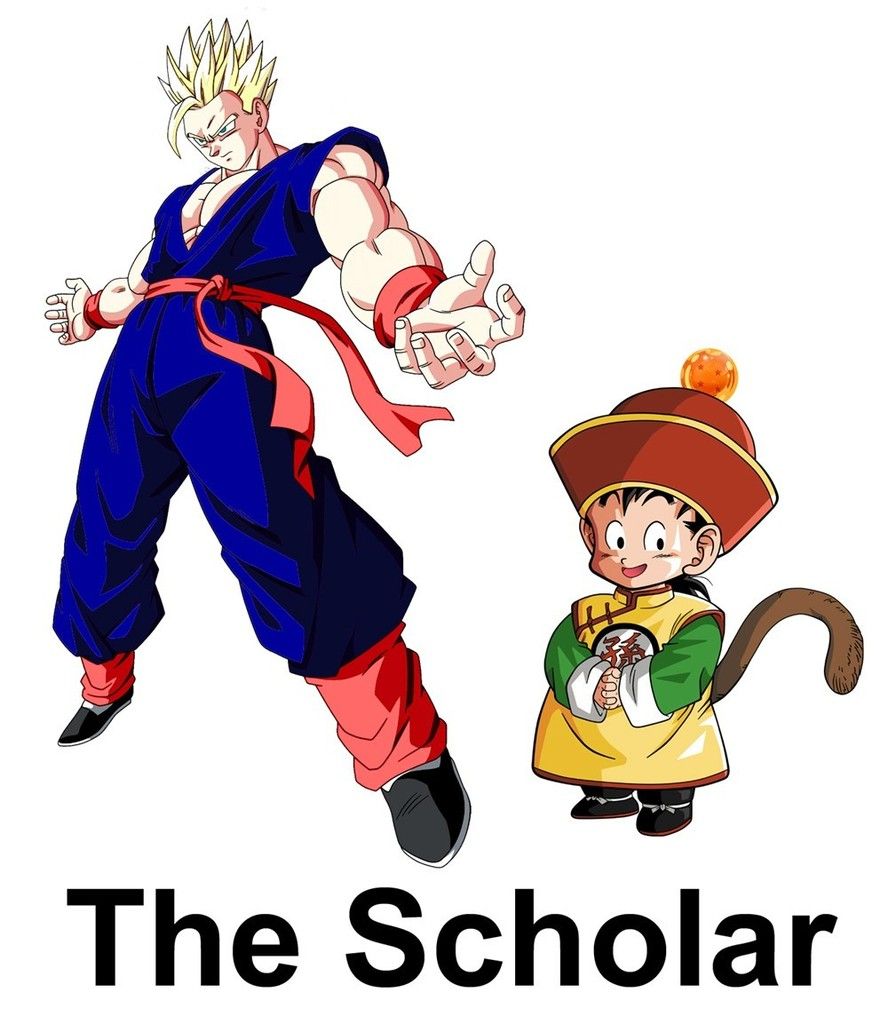
Another easy one. For heaven's sake, Gohan is first introduced wearing a Mandarin scholar's hat with a Dragon Ball mounted upon it.
While Gohan does learn to fight and learns pretty damn well, I'll always maintain that Gohan remains a scholar at heart for pretty much his entire duration as a Z Warrior throughout the entire series. The character is defined largely by his pacifism and reluctance to fight: in no way, shape, or form is he anywhere close to a Youxia like his dad. His non-dogi (or superhero) clothing is entirely made up of a series of school uniforms and nerd attire.
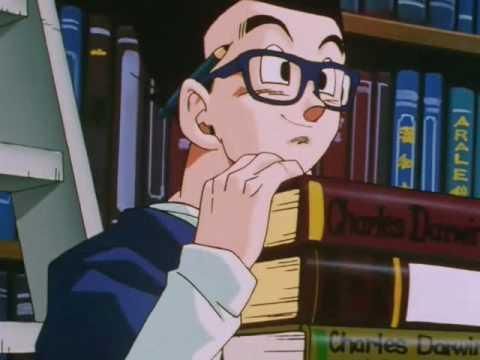
(Exhibit A.)
While Gohan does go through that brief superhero-phase and he's able to carry himself in a serious fight if need be, in Wuxia-terms this character's face is glued inside a book.

This one's bit tricky. While Vegeta betrays and essentially leaves Freeza's army fairly early on, what does he first become immediately after that? He's not really much of a Youxia: not for quite awhile at least. His big “epiphany” at the end of the Boo arc is where I would maintain that Vegeta finally “gets it” about what it means to be a real martial artist and becomes essentially a true counterpart to Goku at that point.
Prior to that though he still insists on wearing some variation of his old battle armor. He still often fights more like a brawling thug than an elegant kung fu warrior. And he's in it for all the wrong reasons (vanity and ego rather than testing and overcoming his own limits). Vegeta spends a majority of his time in the series behaving like a classic bully rather than a “proper” warrior. He may have left Freeza's gang of thugs, but Freeza's gang of thugs never left him.
And speaking of which...
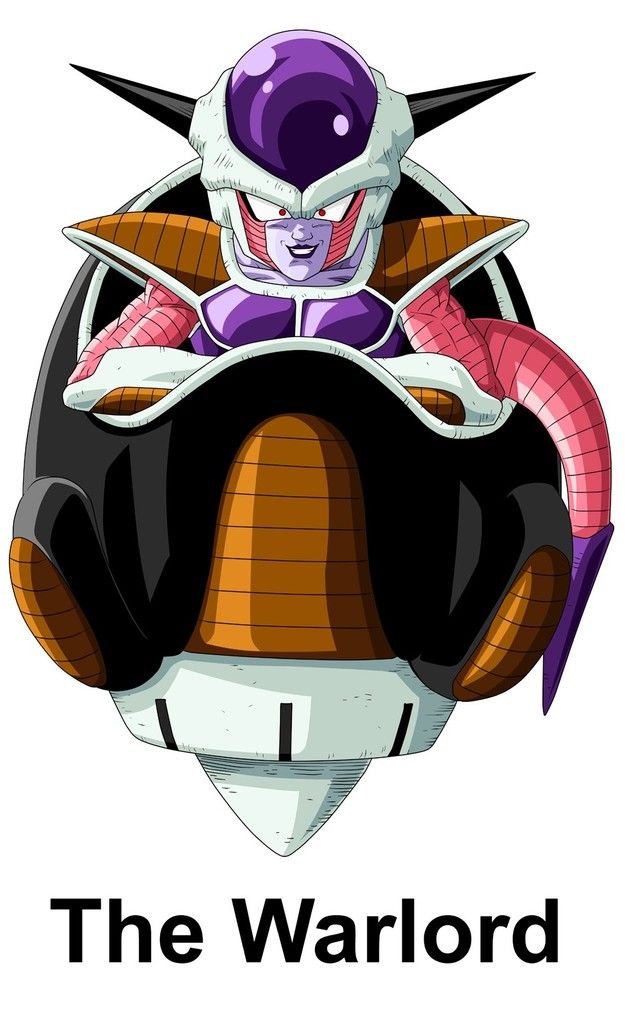
Yeah. Pretty easy.
Freeza fits every classic Wuxia tyrant/despot stereotype... in spaaaaaaaaaaaace! Doesn't get more early 90s for Wuxia than that now does it?
Well... actually it sorta does.
There is one more major DBZ character who's introduced fairly later on who's... not really as much of a martial artsy-type of character in comparison to most of everyone else around him. I mean he is SOMEWHAT: he's got a slain master in his backstory and he went through some pretty rough training. But he isn't defined by revenge or by a burning need to prove his skills as superior. This character's principal motivation is actually to straight up “save the world” making him FAR more in line with a traditional Western “action/adventure hero”.
A little of the past, a little of the present. A little of the East, a little of the West. A little Wuxia, a little sci fi. Hell, he's even one of the RARE fighters in this series to actually use a blade rather than rely solely on pugilism. But he also drags in with him time machines, cyborgs, and a mutant insect man. This character is a perfect stew of mixed elements from all over the damn place: making him pretty much the early 90s-incarnate. So in terms of Wuxia character-types he can only be...
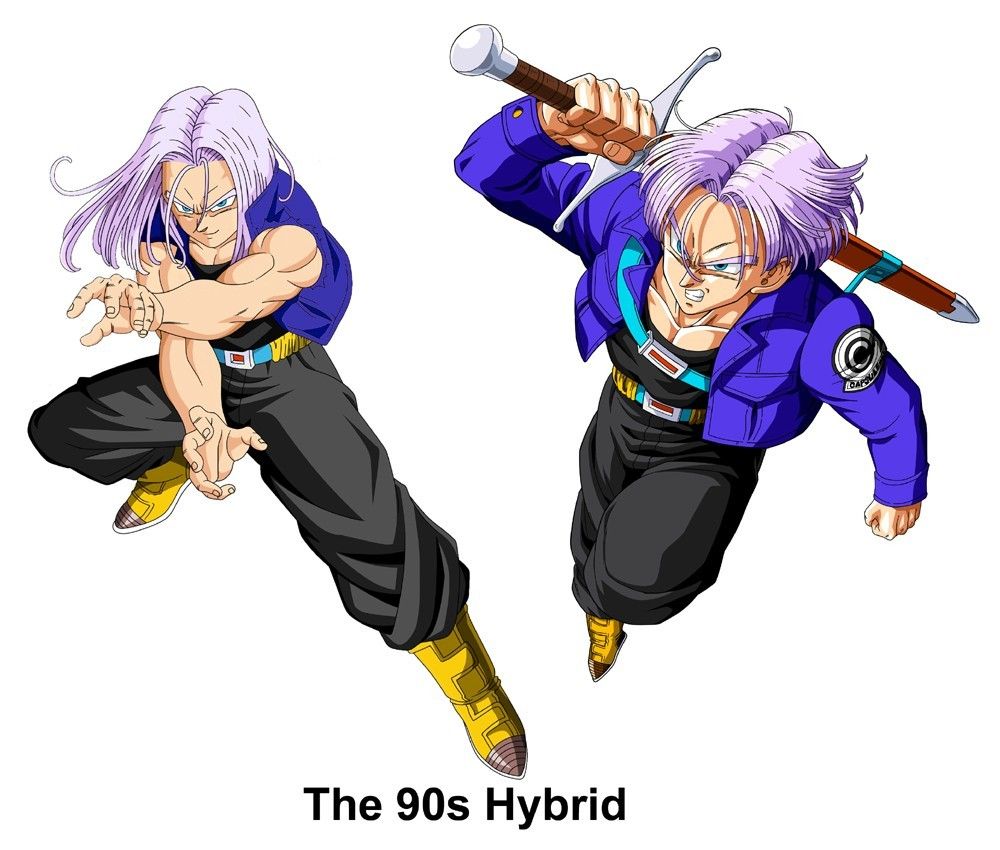
And last but not least, what would a cast of warriors this vast and powerful be without SOME higher authority in the cosmos to answer to? Dragon Ball joins the ranks of more Bangsian Wuxia reasonably early on, and thus finally also gives us...

Dragon Ball's Storytelling
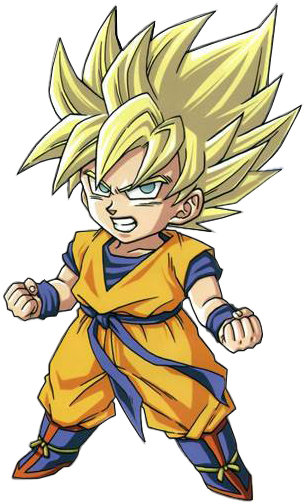

Finally we're gonna look at all the myriad of ways, story arc by story arc, that DB draws from its native genre.
One of the most obvious is through its original medium: comics. As we established much earlier, Wuxia has quite a vast history within Chinese comics (aka manhua). What do you think the odds were that when making his own Japanese Wuxia manga, Toriyama didn't draw a more than fair amount of artistic influence and inspiration from any number of Wuxia manhua before?
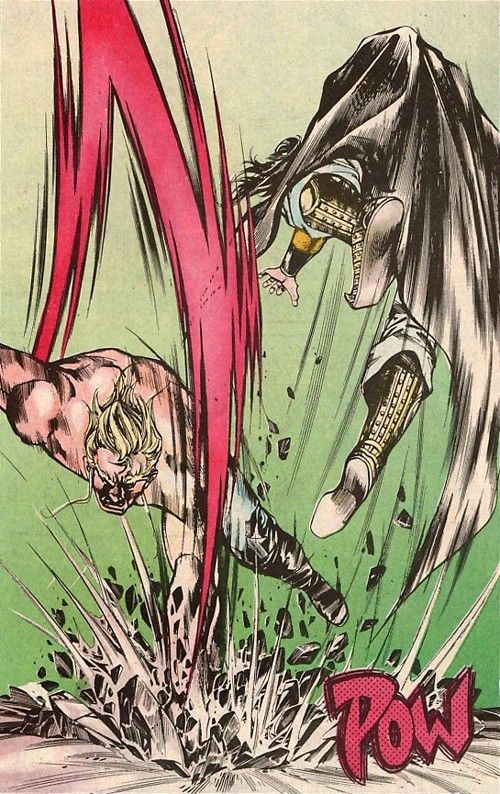
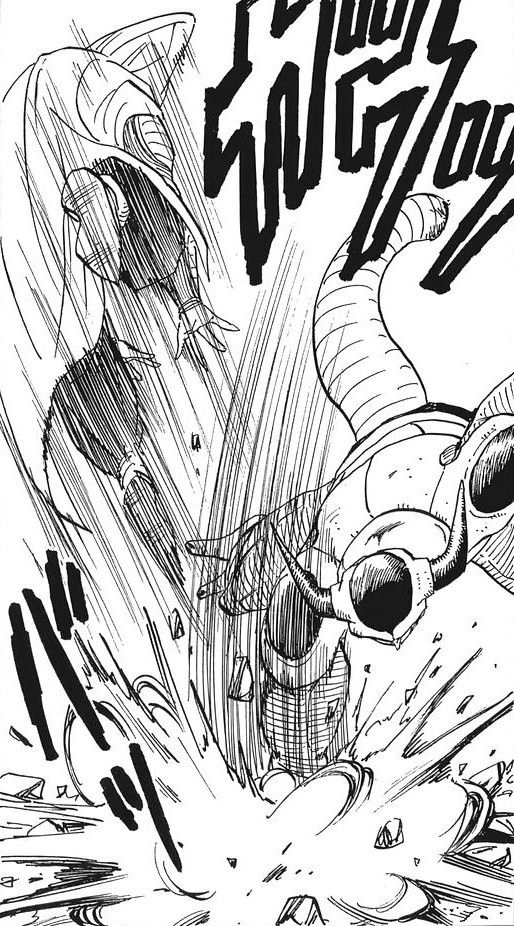
(Be it for in-panel fight staging/choreography...)
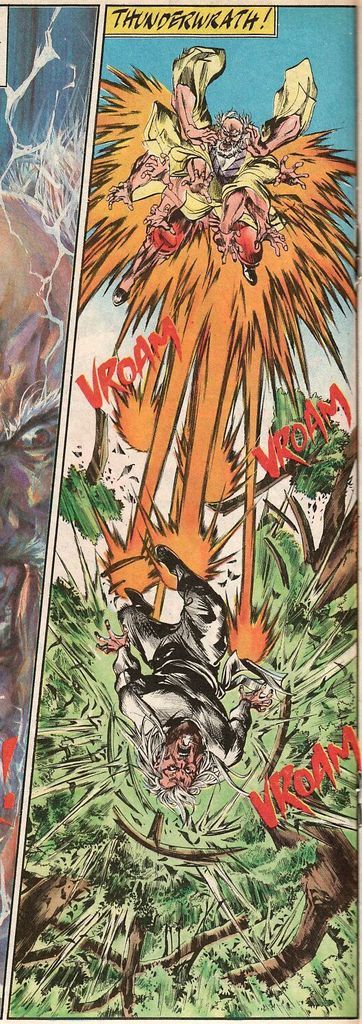
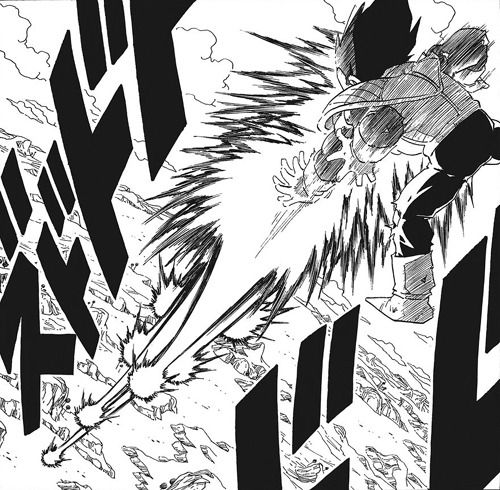
(...or the look of how various Ki blasts and attacks appeared on-panel.)
The anime-filler too would often draw upon imagery and designs from famous Wuxia films and media.
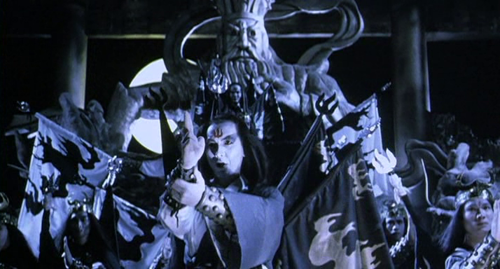
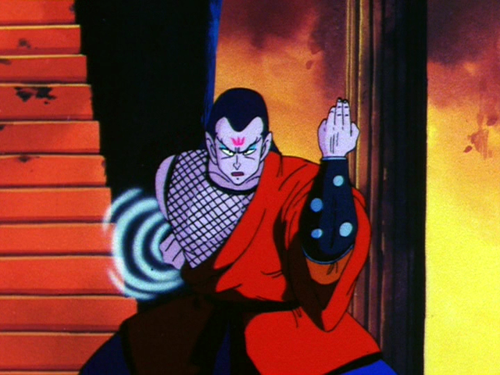
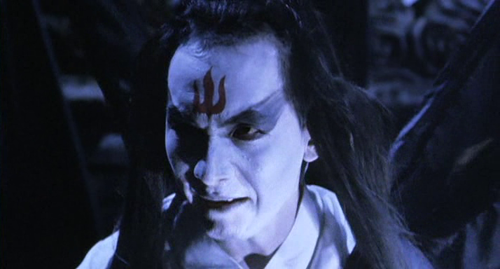
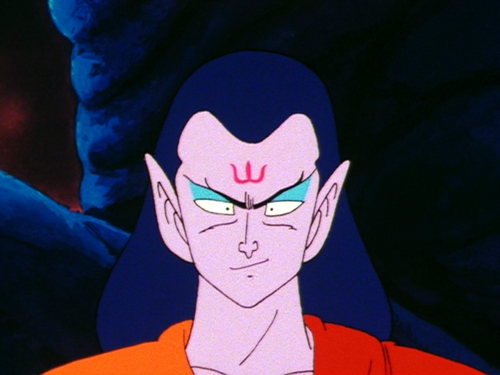
(This filler demon Shura is copied almost verbatim from the look of one of the Blood Demon's minions in Zu: Warriors From the Magic Mountain.)
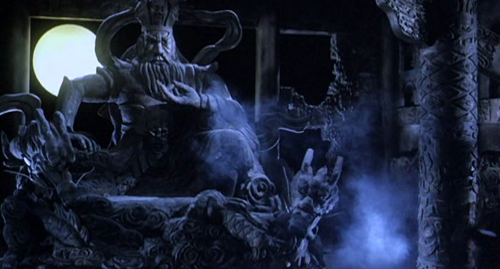

(As is his demonic arena.)
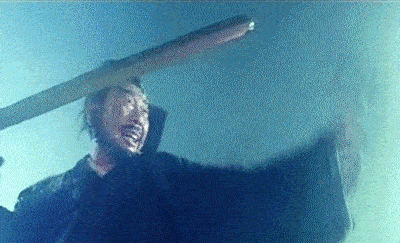
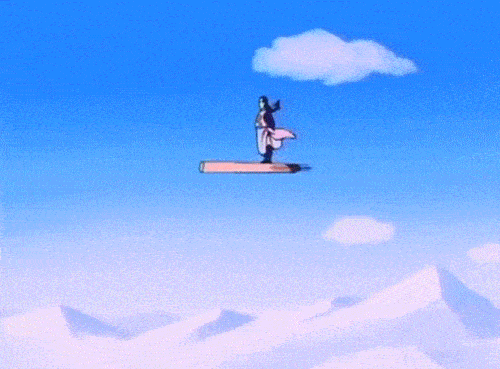
(And of course obviously some of the more outrageous feats of strength are often times classic Wuxia action tropes in and of themselves, such as riding around balanced atop one's own thrown projectile across vast distances.)
Its hardly only superficial surface-level elements. Even the core-basic plotting of several arcs takes sometimes wholesale from the fundamentals of kung fu cinema.
The entire Muscle Tower segment of the Red Ribbon arc is essentially a Dragon Ball-ified retelling of Bruce Lee's original intended plot for Game of Death, his final film forever uncompleted due to his untimely death.
Lee's original concept for the film and the whole Muscle Tower episode in DB are strikingly similar in numerous ways.
According to Lee's original story, he was to play a retired undefeated martial arts champion named Hai T i e n who would be approached by a Korean crime syndicate to lead a raid on an ancient, heavily guarded five story pagoda at the top of which is housed a valuable treasure. The pagoda would be located in a small southeast Asian territory with strictly enforced anti-gun laws making arranging for an armed assault fairly complicated. Instead the syndicate thugs decide to hire a group of well trained professional martial artists and street fighters to take on the pagoda's 5 great masters and defeat them for the treasure. In order to be coerced, Hai T i e n's sister and brother are kidnapped, making him the only member of the raiding-party there against his will (the others, 4 in total, being paid).
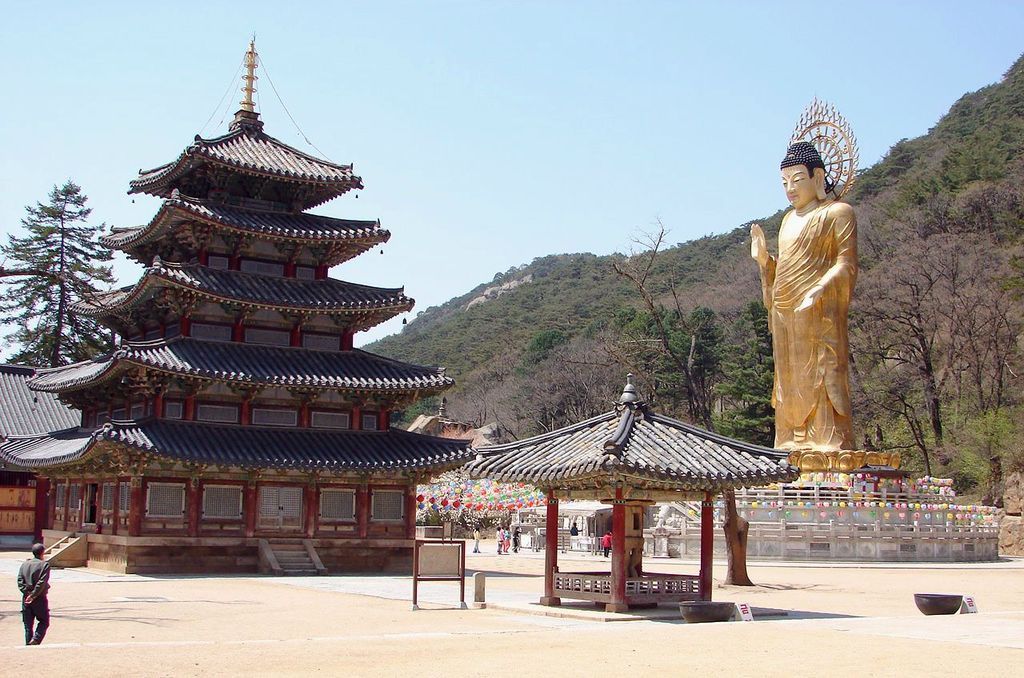
(The Beopju temple in Songnisan, South Korea, the actual Buddhist temple where the only completed footage of Game of Death was filmed.)
After some setup, the bulk of the film would be set in and around the pagoda and chronicle the group's battles against each floor's guardian. Each fighter on each floor was to be a great master of a specific fighting style and the raiding party would be whittled down a little at a time at each master. The idea behind the film was to also be a showcase for Lee's philosophical ideas about fighting: specifically adaptability.
Always an innovator and progressive, Lee greatly disliked the rigidity, predictability, and “rehearsed routine” behind set-fighting styles: his own fighting style Jeet Kun Do was as much a philosophical ideal rejecting the very notion of fighting styles as much as it was paradoxically somewhat of a style unto itself (albeit a very malleable one). Within the framework of Game of Death's plot, Lee would explore the nature of adaptability in martial arts: each of the pagoda's 5 masters (as well as Lee's allies within the raiding-party) would ultimately be undone by their own rigid adherence to the canned nature of their fighting styles while Lee's character would in turn overcome them by always being able to fluidly change his approach against each opponent, adapting to their style and finding ways of using their own strengths against them.
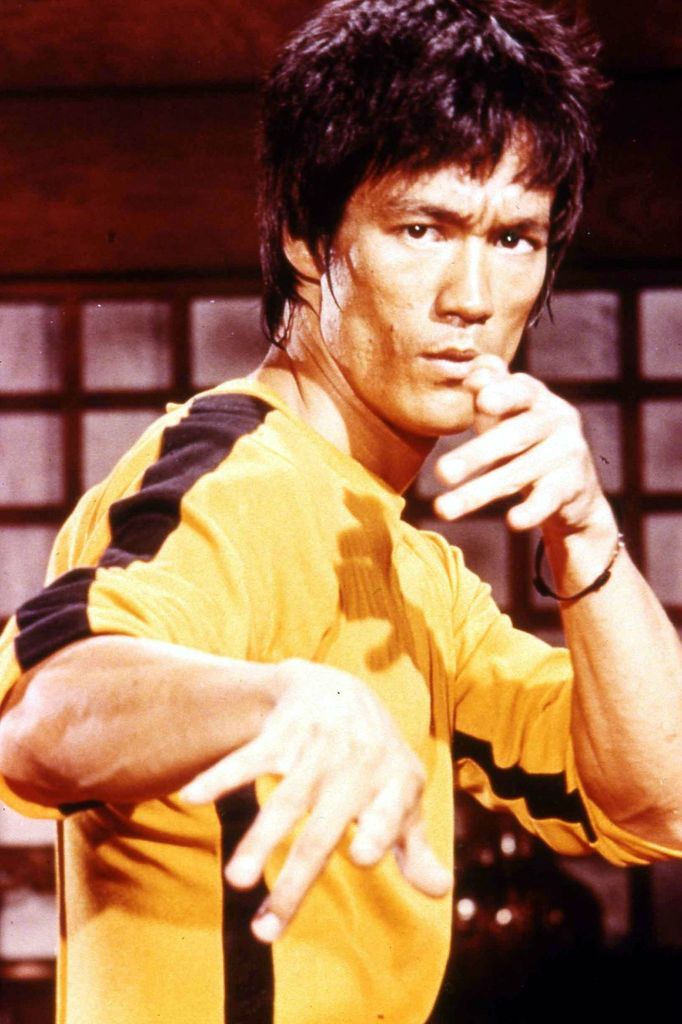
(Lee as Hai T i e n. The now-iconic yellow track suit actually had philosophical/symbolic significance in the film's broader meta-narrative: unlike some of his dogi-clad compatriots, the track suit was to denote that he was not affiliated with any particular school or fighting style. And furthermore, the simplicity of its practicality – comfortable, uncombersome, unobtrusive to movement – along with its eye-catching visual look was to denote “imagination rising above tradition”. A succinct summation of the film's message in general.)
The similarities between Lee's Game of Death and Dragon Ball's Muscle Tower mini-arc range from the obviously broad to the freakishly small and detailed.
Obviously both share the broad framework of being set in and around a multilevel tower guarded at each floor by a specialized fighter. But the similarities get much more nuanced than that, such as both protagonists being spurred on and motivated by a criminal organization's kidnapping, as well as the specifics of how the battles themselves are structured.

(Lee's original handwritten outline for GoD's pagoda fights.)
In Lee's original outline for the pagoda raid, before even entering the temple, Hai T i e n and his allies would be met outside on the surrounding temple grounds and on the bottom-most floor by a small army of poorly trained thugs and cannon fodder to warm them up. This directly mirrors Goku's initial penetration into the tower through a dragnet of generic Red Ribbon goons and thugs before he begins facing each floor's specialized fighter proper (though 4 as opposed to 5).
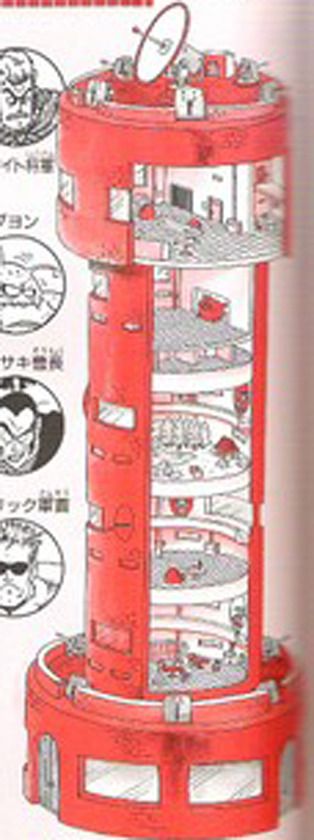
And as with Game of Death Goku must find each opponent's unique weakness and work out for himself how best to exploit it. Unlike Game of Death though, Goku is largely flying solo: no group of allies to get slowly whittled down the further up they go.
Still though, as with Game of Death's pagoda, each floor of Muscle Tower is uniquely suited to the strengths of its fighter. As Dan Inosanto's Escrima master for instance fights within a weapons' hall and Kareem Abdul Jabbar's light-sensitive giant fights within a darkened chamber, so too does ninjitsu master Murasaki fight within a traditional Japanese Atrium and the cold-adverse mutant Buyan in a warm, hidden dungeon.
Game of Death was never completed: only a scant 30 minutes of the ending Pagoda battles were filmed before Lee tragically died. A “completed” version of the film exists (with stuntment and lookalikes in bad disguises filling in for Lee), but it bears no remote similarity to what Lee had planned whatsoever and doesn't even fully utilize the full 30 minutes of completed pagoda footage.
Regardless, the original intended version of Lee's Game of Death has long been a well known piece of knowledge to hardcore martial arts film nerds and word of the original version of the film before Lee's passing had managed to spread even back in the pre-internet days.
Funnily enough, Toriyama's own small Bruce Lee cameo in DB is actually a seemingly innocuous gateway into a MUUUUUUCH larger martial arts film reference. One that's possibly Toriyama's most blatant bit of outright theft.
In volume 6, chapter 68 of the manga (episode 43 of the anime) during the Red Ribbon arc, Goku wanders about West Capital in search of Bulma and comes across a blatant Bruce Lee knockoff offering a 100,000 Zenni prize to anyone who can defeat him in a public street fight. To which our hero of course obliges. Goku of course finds that beating the fighter and winning his prize money only attracts more unwanted attention his way.
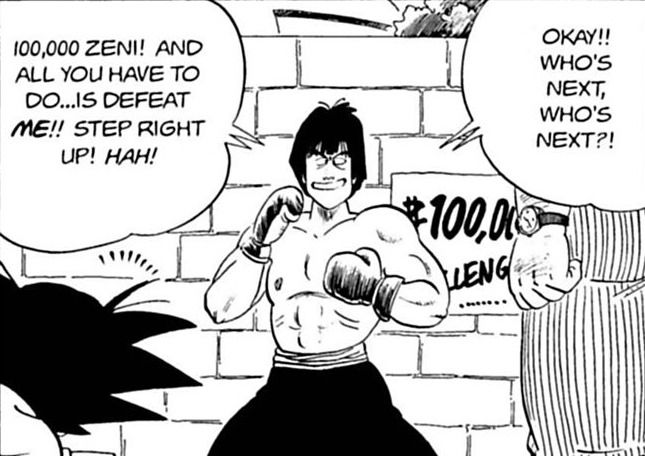
If this scene feels like its so classically off the shelf stock of a cliched kung fu movie scenario that it could've quite easily been blatantly stolen from one... that's because it is and was.

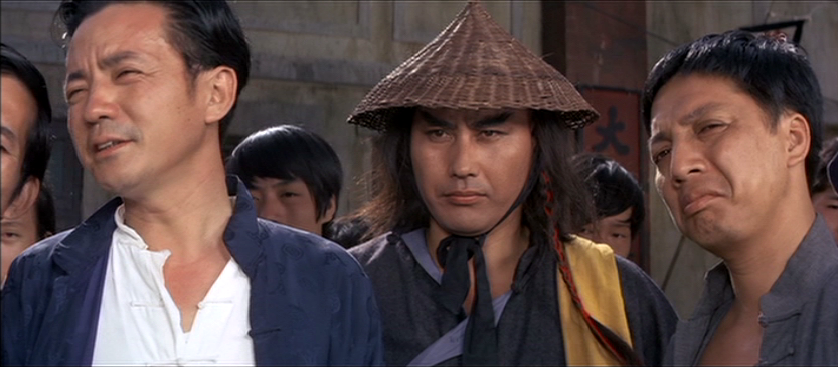
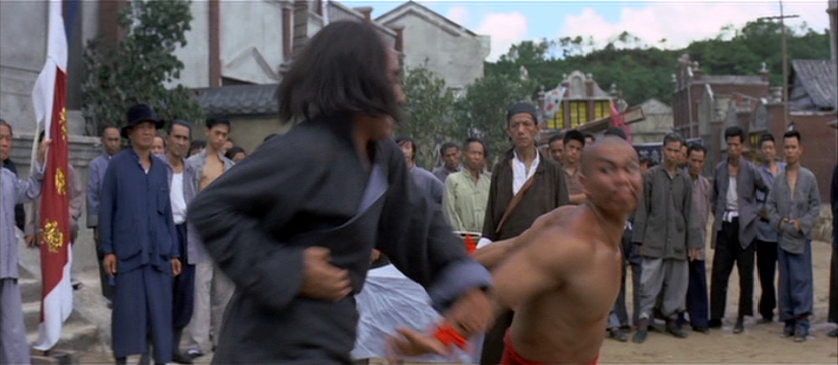
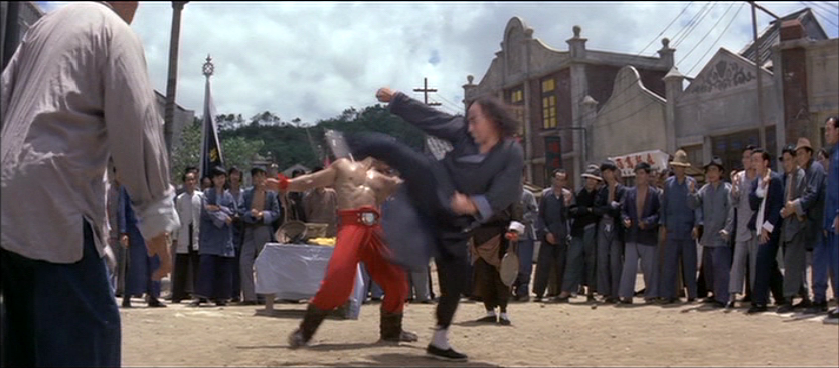
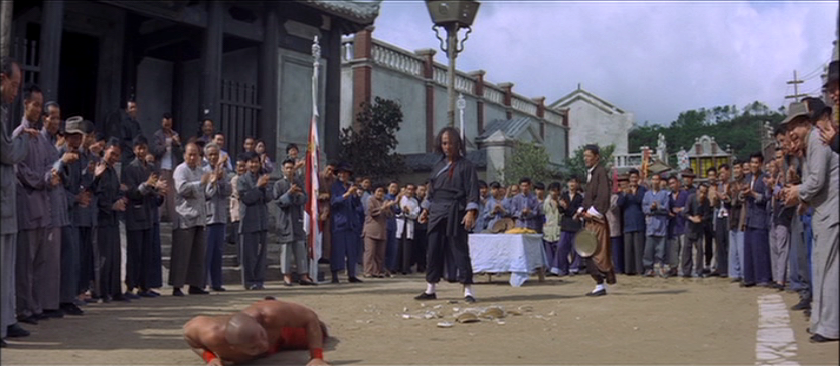
Toriyama swiped this scene almost verbatim straight from King Boxer aka Five Fingers of Death, the original classic that set the stage for Kung Fu cinema in North American grindhouse theaters. In the original film, as with Dragon Ball, there's a fascinated crowd gathered around a lone martial artist (here in Five Fingers accompanied by a barker) on a street corner.
The martial artist is offering a cash prize to anyone brave enough to challenge his skills and defeat him in a public bout. So far, none who've dared take his challenge have succeeded in besting him... that is until a lone traveling stranger who's just arrived into town steps forward and bravely accepts. After a quick fight, the stranger proves he is no ordinary loner and defeats the street challenger, winning his cash prize... and of course attracting more unscrupulous attention his way in the process.
In Five Fingers, the street fighter offering the prize money is of course played by Bolo Yeung, a martial arts performer in countless 70s and 80s kung fu films famous for his frighteningly massive size... and who also starred alongside Bruce Lee in his iconic breakthrough American film Enter the Dragon.
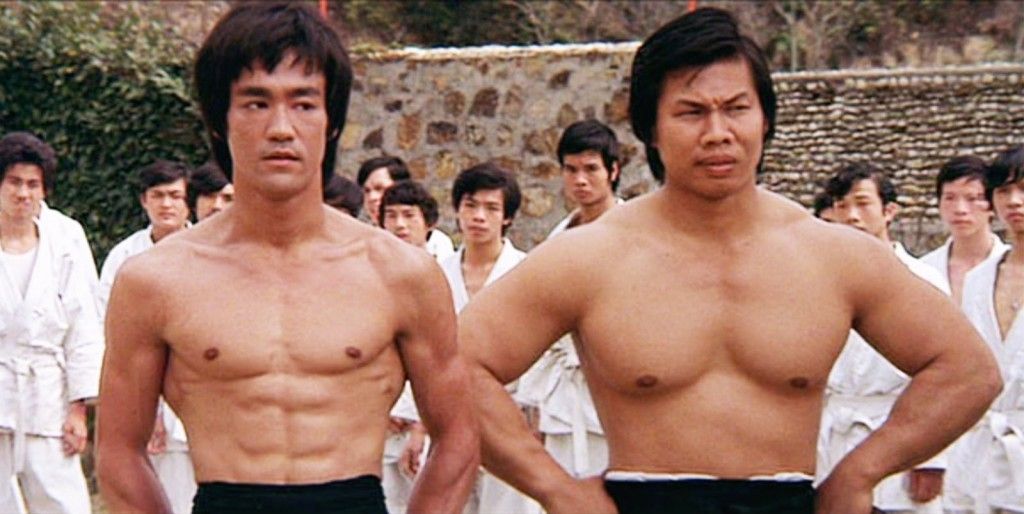
This would hardly be the last or the most blatant of Toriyama's cribbing from Five Fingers of Death. Just about the entire 22nd Tenkaichi Budokai story arc's plot structure is lifted wholesale from a descent chunk of Five Fingers' somewhat more sprawling, larger storyline.
While there are numerous sub-stories sprinkled throughout the film, the main plotline of Five Fingers of Death concerns a pair of rival martial arts schools: the Shang Wu school and Pak Sing school. Both schools are planning to enter their finest students as representatives in a major martial arts tournament. The school with the tournament championship will hold a tremendous degree of power and authority amongst the other martial arts schools throughout the area.
The Shang Wu school are peaceful and honorable and is headed by Master Chin-Pei Suen, who's greatest student (albeit not without a great deal of jealous rivalry from his peers) is Chao Chi-Hao. The Pak Sing school however are corrupt, thuggish, and bullying and have every intention of using the influence provided by the tournament championship to unfairly squash any competition from a competing school like Shang Wu. Pak Sing are headed by Master Tung-Shan Meng, his beloved son, and their greatest student Chen Lang... who also happens to be the very same mysterious stranger that wandered into town and handily defeated Bolo Yeung's prize fighter.
Many of the characters in the film and their roles in the story are direct mirrors of those in Dragon Ball's 22nd Budokai arc. The tournament backdrops are directly comparable obviously, but also so are the two rival martial arts schools: Muten Roshi and his Kame School pupils are clearly stand-ins for the Shang Wu School and its benevolent master Chin-Pei Suen, while Tsuru Sennin and his Crane School disciples fill the roles of the Pak Sing school and its Master Tung-Shan Meng. Goku fills the role of Chao Chi-Hao as the Kame/Shang Wu school's star pupil, while Tenshinhan is clearly meant to stand in for Pak Sing school's Chen Lang (despite Toriyama giving Chen Lang's introductory sequence over to Goku a whole story arc earlier).
As with Tenshinhan, Chen Lang is deep down an honorable warrior who has found himself fighting for the wrong school and is plagued further and further by a guilty conscience the more despicable and cheating their tactics to win the tournament become and by the end of the film Lang will find his sympathies more aligned with the Shang Wu school and his respect more for Chao Chi-Hao just as Tenshinhan's ultimately are for the Kame school and Son Goku respectively.
Tung-Shan Meng's relationship with his son meanwhile is in many ways similar to that of Tsuru Sennin and his younger brother Tao Pai Pai: both are ultimately spurred to madness by the latter's accidental death.
While most other story arcs in Dragon Ball aren't anywhere near as copied and pasted on as 1 to 1 of a basis from a martial arts film source like the 22nd Budokai is from King Boxer, one of the most consistently frustrating things about modern Dragon Ball discourse is the idea passed around that the series gets further and further away from being about martial arts or pulling from martial arts narratives for influence.
This is patently false and it stems from most people who are unfamiliar with the trends across Wuxia media throughout all of Asia during the late 80s/early 90s being distracted by the sci fi window dressing of the Saiya-jin, Freeza, and Cell arcs, mistaking said window dressing for the real meat of the narratives and missing all the many other numerous ways that DB still maintains being ultimately a Wuxia series at its fundamental core.
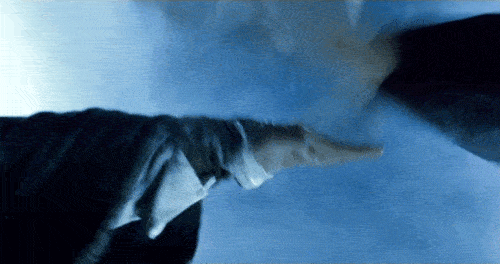
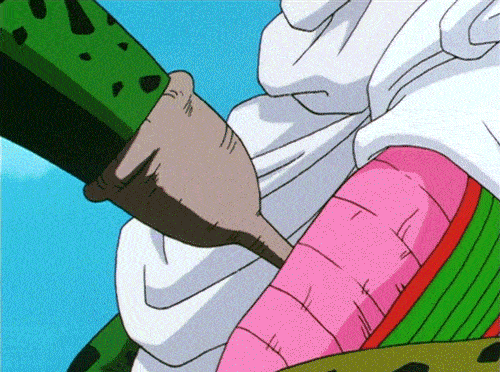
(Even all throughout some of the most seemingly sci fi-heavy chunks of the series, Dragon Ball never loses touch with its Wuxia heart and soul and still derives many of its suspenseful setpieces and outrageous techniques from a wide array of Wuxia influences. Even some of the most seemingly blatantly on-their-face-sci-fi concepts such as Cell's Ki drain and its body horror-esque withering effects have their ultimate basis in traditional Wuxia writings: in the case of Cell's Ki drain, it comes from the character Ren Woxing in the Smiling Proud Wanderer series, who had the similar ability to suck the lifeforce from his opponents by touch, leaving behind a shriveled, wilting husk of flesh.

Whew. Helluva road getting here finally, huh?
My apologies for subjecting you all to what basically amounts to more than 25 years worth of hardcore kung fu fantasy fiction nerdery on my end. The whole original basis for me creating a babbling diatribe of a post(s) like this stems from what I've only in the last several years found to be the present day Dragon Ball community's stunning lack of familiarity with pretty much even the most basic fundamentals of Wuxia as a genre... right down to its very existence in the first place.
And as is no doubt apparent by now, this is a big, big, BIIIIIIIIIG and HUGELY fucking important topic. What I've written about in here is hardly anything but the merest tip of the iceberg and represents merely a summarized, abridged skimming over of my own lifetime's worth of experience with the genre growing up. There's a metric FUCKTON more that I've no doubt glossed over, both due to keeping this at least somewhat relatively concise, connected to Dragon Ball and its general style of Wuxia, as well as the simple fact that even a guy who's spent his entire life eyeball deep in following a genre this overwhelmingly old and gargantuan is still not gonna be exposed to or know about every-everything. Believe me when I say that Wuxia's as vast, broad, and as dense a genre of fiction and media as they possibly come.
Doing this whole info-dump was a MASSIVE undertaking on my end: it began with me deciding one particularly shitty day “eh, fuck it” and attempting to just run through a few basics about the genre for someone who had never even so much as heard of it before... only for it to have ballooned into a whole month's long project. Even with all my life's worth of experience and knowledge, it took a LOT of time and effort to compile everything all together and arrange it all into some semblance of coherence.
As I'm hoping is apparent by this point, a whoooooole lot of context needed to be delved into first in order for us to get to this point and be able to properly examine Dragon Ball not only as just another piece of Wuxia, but more specifically as a piece of Wuxia from one of the most odd and transformative periods in the genre's modern history.
In spite of Dragon Ball being a Japanese manga/anime series, due to its genre there are STRONG Chinese connections (haha) rooted to the very foundations of its storytelling and that plainly overwhelm its Japanese flourishes (especially when compared to other Japanese manga/anime attempts at Wuxia such as The Peacock King and Yu Yu Hakusho which bring their Japanese cultural elements that much further to bear).
This for me functioned as the primary impetus and motivation for wanting to dive into this subject: when it comes to fiction, particularly fantasy fiction like this, genre matters. Genre matters a great, great deal. Genre can often function as vastly useful and needed shorthand for the wider historical and cultural context around which a great many generations' worth of storytelling and narrative styles can be much more easily grasped and understood more clearly.
My favored go-to example for this has always been Westerns. Right off the bat just as soon as you say the word Western: “What kind of story are you writing?” “Well, its a Western.” Boom. Your mind is INSTANTLY filled in with all sorts of information that's become culturally built-in. You already know the costumes people will be wearing, the setting, you know all sorts of stock cliches: a nameless drifter riding into town on horseback, a two-fisted brawl in a rowdy saloon, a tense quick-draw showdown with pistols at high noon, etc.
Horror's a bit more broad than that, but it still gets the job done. Someone says they're working on a horror thing, your mind can instantly be drawn to werewolves, vampires, ghosts, Hockey masked killers, haunted houses, beautiful screaming girls, etc. Your mind immediately fills in a ton of blanks as soon as it hears just the single word.
Genres not only act as classifications for the subject matter, they also set the tone of the discussions surrounding them. I've been a geek my whole life, and for my entire life I've been around all kinds of various fandoms and fan cultures: they're hardly all of the same personality makeup and the same dispositions. Your fandom for something like say... Hellraiser for instance is going to attract a SIGNIFICANTLY different type of audience than something like, I dunno... classic 40s Disney shorts. That's just the nature of these things.
And geek culture loves nothing if not its genre fiction. Traditionally defined by sci fi/fantasy of the Star Trek/Lord of the Rings-ish variety, its over the decades and generations encompassed a tremendously great deal more than that. And clearly with its bevy of sci fi/fantasy elements, Dragon Ball is obviously SOME piece of some distinctive genre, one which has garnered it significant attention in broader and ever broader geek circles as time marches on.
So lets beg the question here and now once and for all: what is Dragon Ball's genre? Over the last 15 years of its latter-day Western fandom its been often defined as an “action cartoon”, which is pretty vague and non-descript. There's a LOT of cartoons that have action in them. Its been described also as “Shonen” which isn't a genre at all, but a target demographic (middle school age boys). Nonetheless that hasn't stopped a LOT of people in this community over the years from talking about and treating Shonen as if it were somehow a genre of its very own complete with its own set of tropes and cliches and what have you and that Dragon Ball is a part of it.
DB's been often compared with and treated as if it were a rough Japanese equivalent of a superhero franchise. From a certain vantage point you can almost sort of see how one comes to that conclusion: you've got a bunch of outlandishly dressed, brightly colored characters with superpowers flying around and smashing monsters and one another through mountains and buildings with their bare hands. There's also been a hugely popular and widely seen official North American dub that at various times has gone out of its way to further muddy the distinction and play the series up as if it were some kind of exotic cape and tights story about saving the world and good vs evil and what have you.
The spate of imitators and would-be successors that have come within the Shonen Manga-sphere in DB's wake (Naruto, Bleach, One Piece, etc.) have helped a lot of latter day fans to further posit the series down as a “Shonen Fighting Manga”. On first glance this SEEMS a bit more specified: it is indeed a manga centered on fighting and that's aimed at small boys. But at the end of the day, its still a pretty broad, sloppy classification. One that doesn't really hold up very well when one compares Dragon Ball's myriad of “successors” directly to it.
So... if Dragon Ball isn't a “Shonen Fighting Manga” or “Shonen Action Cartoon” (none of which are even real genres in the first place) then what is it? Well... lets pick the whole damn thing apart as best we can and get to the heart of it in light of everything that we've gone through.
The core roots of the series' storyline is made up of a hodgepodge of Wuxia tropes, themes, and stock cliches: tropes, themes, and cliches that have, in the many years since the series ended have been retrofitted through the prism of (largely unintentional) revisionist history into being seen as representative of the so-called “Shonen Action” genre. The problems with that logic however are numerous.
Firstly and most obviously it ignores that a VAST overwhelming majority of Shonen manga and anime made before DB doesn't in any way, shape or form resemble its now-famed “fighting” formula through which the so-called “Shonen Fighting Genre” is defined. One of the only ones that does to ANY degree at all is Fist of the North Star: which itself A) is also a Wuxia series and B) in a GREAT many other respects (largely regarding its tone and some of its other deeper themes) it stakes a position exceedingly far away from Dragon Ball's sense of oddball whimsy.
Most modern fans of DB today (the ones whose perceptions aren't wholly submerged in the FUNimation dub's “reversioning” that is) are self-professed fans of this so-called “Shonen fighting genre” that Dragon Ball supposedly belongs to. This has become over the last decade in particular a HUGE part of interacting with Dragon Ball fandom as it exists today and is now completely unavoidable.
What so many modern fans (of DB and Shonen in general) fail to do it seems is take into account the whole of Shonen manga history preceding DB's time and and try to trace some kind of a basis and origin-point for their beloved genre and styling of said-genre from which they've gotten Dragon Ball, Naruto, One Piece, etc. And there's a pretty good reason why you won't see that: because for the most part by and large, one doesn't exist.
That's not to say that Dragon Ball was somehow created in a vacuum. Quite the contrary, as we'll continue to explore here, Dragon Ball is the byproduct of COUNTLESS influences great and small... its just that, like so many other manga and anime franchises of its day (1980s and 1990s) its influences were largely from well outside the realm of its own mediums (manga and anime).
So yes, lets state the stupidly obvious: Dragon Ball is Wuxia. I've hammered home that much I would hope. But more specifically, HOW is it Wuxia? Well lets take it from the top, same as we did at the outset of all this and start with a look at...
Dragon Ball's Setting

Dragon Ball is set in Akira Toriyama's Jianghu. There really isn't a plainer, more direct way of saying it than that: Dragon Ball from start to finish is in LARGE part defined by its idiosyncratically distinctive setting that most fans over the years have come to call the Dragon World but which can honestly be even better and more accurately described as “Jianghu as filtered through the same warped brain that spawned Dr. Slump.” or “Toriyama-ified Jianghu.”
In the Dragon World we have a mystical fairytale land that's positively STEEPED to its utmost core in classically ancient Chinese dress, architecture, and culture.










Beyond even the surface-most visuals though, there are strange wild monsters who roam the lands,





as well as the occasionally tamable friendly ones,

there are demons and ghosts and evil spirits,





there are scenic villages great and small,


there are bandits, outlaws, and thugs waiting to prey upon unsuspecting travelers,


there are hidden magical weapons and artifacts,






gods and ancient mystics live among us mere mortals watching over us,


and of course there are numerous martial arts fighting schools, masters, and tournaments.








The biggest factor that differentiates the Dragon World from other interpretations of Jianghu are Toriyama's distinctive touches: his particular sense of ironic whimsy, his uniquely visualized technology and creatures, his overall unmistakable aesthetic. Again, this is unmistakably Jianghu as run through a Dr. Slump-ification filter of some kind.
The combination of the mythical ancient Chinese world along with modernized high tech technology is probably the most singularly unique element that Toriyama throws into the mix here. While most then-modern post-New Wave Wuxia works of the 1980s and 1990s were generally content to either choose between a straight traditional Jianghu setting or the modern present/far off sci fi future, the Dragon World actually remains unique among Wuxia works for being an even mixture of both simultaneously. In this way, Toriyama actually gets to have his cake and eat it too and allows Dragon Ball's interpretation of Jianghu to uniquely stand out among the countless zillions of others, making Dragon Ball truly in the New Wave spirit of merging the traditionalism of the past with the new ideas and fresh concepts of the contemporary present.
But of course Dragon Ball's Wuxia elements hardly stops at its setting.
Dragon Ball's Wulin Community

One of the single most important factors that defines the entire Dragon World and the Dragon Ball franchise as we've always known it is its Wulin Community of powerful martial arts experts. Dragon Ball begins right from the jump with an already long ago established Wulin community active throughout its lands: the first hints of it we get are from Son Goku's adopted grandpa Son Gohan, who we immediately learn was trained by the famed Muten Roshi alongside the feared and infamous Gyumaou, wielded a powerful magically-extending Nyoi-Bo as a weapon that also became famous and recognized throughout the lands, and that the reputations of these men is such that it extends to even lowly thieves and bandits like Yamucha, who himself has also had some form of training beforehand and is clearly a part of this world's martial arts community to some extent.
Over the course of the series, the Dragon Ball World's Wulin community grows steadily: we learn it has a Shaolin Temple equivalent with the Orinji and Kuririn who defects from it to learn under Muten Roshi alongside Goku. The Tenkaichi Budokai martial arts tournament is a pretty famed event across the lands that attracts tremendous crowds and spreads word of its fights and victors far and fast. Roving, marauding criminal empire militias like the Red Ribbon Army attract powerful and unique fighting experts from around the globe into its ranks, and freelance martial arts hitmen such as Tao Pai Pai stalk the lands offering their services to the highest bidder. There are other rival schools and teachers such as Tsuru Sennin and his Crane students/assassins Tenshinhan and Chaozu. Rivalries and vendettas quickly form between students, and the thrust of the series quickly cements itself as being largely behind following the progression of these characters as they train and grow steadily as martial artists.
The first “serious” threat of a villain in the series is a Demon King of ancient myth who returns in part for revenge against the students of the old master who sealed him away originally with a special finishing technique of his own creation: a special finishing technique which requires dangerous training on the part of our heroes to prepare themselves sufficiently to defeat him and that's as much of a threat to their lives as their actual enemy here is. And upon defeat, our ancient Demon King finds a way to return to haunt our heroes once more through the means of reincarnation.

Training. Growth. Rivalries. Revenge. Special finishing techniques. Martial arts tournaments. Shaolin-like fighting temples and monks. Magical Chinese melee weapons. Martial arts assassins. Bandits. Ancient Sennin masters as mentors. Corrupt kingdom-like militias. Adversarial martial arts schools. Legendary Demon Kings. Reincarnation. We're as eyeball-deep in classic Wuxia/martial arts fantasy fiction tropes as we can possibly be with this series, and that's from just a cursory skimming of its basics.
Virtually all the notable warriors we meet throughout this series make up Dragon Ball's Wulin Community. And as the scale of the series grows, Dragon Ball's Wulin Community comes to encompass first the entire world, then the entire galaxy, then finally all of the known universe and planes of existence. This also matches with the experimental nature that Wuxia as a genre was largely going through during these same years, as Toriyama took his Wulin fighters away from their little Jianghu home and out into space to explore the cosmos and fight alien warriors for a time.

Our central protagonist obviously is Son Goku, as he's the central focal point that we follow from beginning to end, and his training and progression as a martial artist is what the series primarily concerns itself with and revolves around. The supporting cast of characters rotates to accommodate his list of teachers, rivalries, and allies: on one hand we go from Yamucha to Kuririn to Tenshinhan to Piccolo to Vegeta. Each of them at one point, as the stakes and levels of fighting grow, go from being Goku's biggest rival as a fighter to being a powerful friend and sometimes to being just completely left in the dust entirely. And on the other hand we go from Grandpa Son Gohan to Muten Roshi to Karin to God/Kami to Kaio-sama. Through these characters we follow as Goku goes from being taught by the best in the world to the best in the universe. But either way, these characters make up the section of Dragon Ball's Wulin World that we principally follow through the eyes of Goku as he navigates his way through it.
Dragon Ball's Wulin community manages to encompass pretty much just about every Wuxia archetype I recounted earlier in this whole schpiel.

You've got your classic. A wanderer at heart. A restless spirit of a fighter always seeking the next new challenge, never satisfied with being on top or being the best, always looking to defeat himself and overcome his limits. This is the literally-ancient mold for an unfathomably countless number of heroes throughout a zillion Wuxia tales spanning back to the genre's very beginnings.
And as Dragon Ball's a later, more modernized Wuxia tale, this Youxia's got a lot more in common with later incarnations of the character type: this Youxia does not come from nobility or riches and is the farthest thing in the world from poised, stoic, and aloof. Rather our hero in this incarnation was brought up in the sticks and grew up with splotches of mud and dirt ever-present upon his face, is as book-dumb as book-dumb can be, knows absolutely less than nothing about proper manners and how to carry oneself in the presence of people of importance, is jovial, upbeat, friendly, and incredibly naïve. This is the “Folkhero, local-boy-made-good” incarnation of the Youxia archetype of the common peasants and farmers rather than the older, more traditional regal picture of elegance of Youxia poetry passed in between elite scholars and noblemen.
Most of Goku's “development” over the course of the series changes very little from that from a broad, obvious standpoint. Rather Goku is a character of much subtler changes and alterations as the series progresses. Goku very gradually grows subtly more wiser and more perceptive as he gets older and experiences more treachery of a sort that would harden most men a great deal more than he ever does. He also has to learn to wrestle and cope with his barbaric, murderous roots among the Saiya-jin and accept the innocent blood on their hands as a part of who he is rather than continually try to deny it.
But overall, Goku is a simple character of a simple mold whose changes in fighting style and ability are FAR more drastic than those of his personality traits and characteristics.

(The personification of the Xia's martial spirit.)
Some of Goku's most useful and distinctive supernatural martial arts techniques throughout the series are to varying degrees ripped directly from various other Wuxia stories verbatim.
The Zanzoken (Afterimage) technique is taken straight from Guo Jing in Legend of the Condor Heroes who learns an identical technique, the “Holy Turtle Steps”, from Huang Yaoshi. While the name of the technique is obviously changed, that its primarily used by and taught to Goku by Kame Sennin (the Turtle Hermit) is very possibly an intentional reference.



Another of Goku's techniques directly lifted from the Wuxia writings of Jin Yong is the Shunkan Idou (Instantaneous Movement) which is ripped directly from the “Shifting Stance” from Demi-Gods and Semi-Devils. Everything from the “index and middle fingers to the temple” hand gesture to the specifics in how the technique works via “locking onto” a specific Ki source and being able to transport others along with you by touch is copied verbatim from Demi-Gods' Shifting Stance, which is among its more well known and notable supernatural martial arts techniques.


Far from being originally anything to do with Shonen, Goku's naïve rural bumpkin kung fu prodigy character mold was originally first and foremost a cliched staple across classic martial arts fiction: even far beyond just that of Wuxia and Youxia. Probably due in part to the ubiquitousness of the character-type across a great many and fairly old Wuxia tales that have long penetrated into the Chinese/East Asian collective consciousness, this cliché had also spread itself across to and embeded itself deep within even grounded, non-fantasy-fied martial arts films and stories.
The Wuxia-averse Bruce Lee himself portrayed this very exact character-type almost to the letter (minus the supernatural Ki techniques of course) in one of his most famous roles as Tang Lung in the iconic and timelessly cool Way of the Dragon (yes, the one where he fights Chuck Norris).

(Ain't from around here. Never left the farm. Never been to no great big city before. Never used too many fancy words. Never seen a car. Never used a telephone. Never watched TV. Never seen a naked girl. Has killed Chuck Norris.)

Again, another easy one to instantly peg. For fuck's sake, he comes self-labeled with the direct Japanese equivalent of the name for his archetype is right smack in one of the character's own two names (Kame Sennin).
Good 'ol Roshi fits and embodies the seasoned teacher/mentor figure of the classic Kung Fu fiction narrative to an absolute science. From nearly the very first moment he enters the picture, whether he even intends to or not (and this being the ever-irreverent Toriyama, often times not), he's teaching Goku invaluable martial arts skills that will serve him the entire rest of the series (namely the Kamehameha, possibly the single most versatile tool in his kit).

Ancient and long-lived far beyond a normal lifespan, Muten's Sifu/Sensei cliches runs the gamut from standard training montages of varying stripes, being a sometimes literal father figure to the boys, having an old vendetta from his arrogantly youthful shady past come back to haunt both him and his young charges, having an arrogantly youthful shady past at all in the first place, having once been the strongest fighter of his generation now getting on the decline in his advancing years, and of course dying in combat against his old arch foe (a certain Great Demon King) so that his student can avenge him (more on this later).

(Obviously this is a training scene from the original, classic Drunken Master with Simon Yuen and young Jackie Chan. But if you didn't know better and I told you this was from an old, lost live action Dragon Ball movie, how much trouble would you REALLY have buying that?)

Some might say this one's a bit misleading: after all, Yamucha gives up his life of crime fairly early into the series. But honestly, isn't this how most of us ultimately remember the guy? Does he REALLY ever FULLY live down this first appearance? Yamucha sorta settles into a kind of unfortunate role of lesser-Youxia after this anyway. We've all heard pretty much every Yamucha joke a billion times over at this point anyway, so far be it from me to go through the motions of mindlessly parroting them like a hack.
It is kinda cool how Yamucha as a bandit manages to almost simultaneously be both antagonistic fist-fodder for Goku as well as kind of a noble/heroic thief. The running theme of Dragon Ball, and really almost any given Toriyama-work, is an almost gleeful exuberance at getting to break out as many toys from the toy chest to play with on the page all at once.

(And 'sides who doesn't welcome an excuse, any old flimsy excuse, to gawk at Toriyama-drawn retro-military hardware?)
Also gotta say, ever since I can remember I have ALWAYS wanted to see Yamucha pit his Sokidan up against Ting Yin.
…
…
...Ting Yin would probably still win though (okay fine I lied, just the one Yamucha joke).

Again: self-explanatory.
The thing about Kuririn's portrayal throughout much of Dragon Ball is that his fitting the Monk archetype actually does go a bit beyond someone like Yamucha where it mostly acts as the main excuse to introduce them into the series' world. Aside from a few “Toei moments” in some of the movies (they were really rather inexplicably keen on playing up his jitteriness) Kuririn being a monk in a Wuxia story does at times seem to inform his characterization.
Oftentimes he is usually in many cases the voice of reason amongst the other Z Warriors. Most of the time if Piccolo isn't the one coming up with a plan of action, its probably then Kuririn. Next to Piccolo he takes charge of the group the most when Goku's not around, and also next to Piccolo comes up with some of the most creative uses of his Ki (a buzzsaw and a scatterbomb? How sick is that?). One of my favorite ever examples of his clear perceptiveness during a rough spot is during the fight with Reacoom: not even Vegeta thought to just slam the big lug's trap shut in the middle of his Eraser Gun technique and make him eat the damn thing.

Wisdom and levelheadedness in a tight spot along with a penchant for improvising unique and useful techniques on the fly seemingly from nowhere when a fight starts going south: yeah that's a Wuxia Monk alright.
And plus c'mon, how much of a Toriyama-esque move is it to make the incense-burned Buddhist the team-horndog?

Unsurprisingly in a sort of similar boat as Yamucha. Tenshinhan leaves his disreputable underworld origins behind him by the end of his debut story arc and goes on to be probably in many ways one of the most dedicated and committed Youxia in the whole series next to Goku, and a much more old school-stoic type of Youxia than Goku at that.
Still, its worth bringing up and attaching to him for a few reasons. Namely that its Tenshinhan's regrettable past that functions' as a great deal of his motivation going forward (redemption) and probably has a lot to do with his sullen, dead-serious demeanor. Ten's a guy who's probably rarely stopped torturing himself for his past wrongdoings.
I've always found it pretty telling that it isn't until Goku dies against Cell and chooses not to return that Ten picks as the point to part ways “permanently” with the rest of the group. Going back to the 22nd Budokai, Goku's the whole main reason Tenshinhan ever had before to better himself from his time as an aspiring martial arts assassin. Their rivalry as martial artists/Youxia is what principally spurred on Ten to stick around with the others throughout so much lunatic craziness (revived demon kings, alien invasions, chasing monkeys around the afterlife, cyborgs, time traveling Cicada-people and so forth).
That his fight against Tao Pai Pai in the 23rd Budokai ends the way it does, with Ten winning but getting permanently scarred in the process, has also felt pretty fitting: Tao Pai Pai represents the ugly person he almost once became, and while Ten overcomes it, it'll always permanently mark and define him to a degree going forward as everything Ten does in trying to measure up to Goku is likely to at least SOME degree partially informed by his constantly attempting to distance himself from who he once was. Dimestore symbolism to be sure.
Either way Goku always needed a “serious, straight” Youxia counterpart to act as a foil for his bumpkin dippiness, and long before Vegeta came calling Tenshinhan fit that particular bill nicely.
Oh! Plus how can we forget the third eye?
Well before some Daizenshuu staffer flunky threw in some nonsense about “Descending from alien Three Eyed Clans” or what have you, there's always been a pretty straightforward Wuxia/Taoism explanation for the third eye. I'm sure its been discussed in various threads here many times before ad nauseam (and probably on the podcast too) but in the interest of being comprehensive, I'll quickly review:
In the upper Dantian (you remember those?) of the body there rests the set of meridians that funnel Ki flow through the mind. Upon reaching advanced stages of meditation and meditative focus, a third eye or “the mind's eye” can be opened. A holy symbol of Taoist beliefs and an icon of wannabe-New Age Gurus the 1980s-over, the third eye signifies one who is an enlightened mind, capable of fully tapping into their mind's full potential and is thus able to see beyond the limits of what most normal people see before them in the physical world.

(A handy trick for when some persistent, moralizing old fool starts moving a wee bit too fast for most folks to pick up.)
Some “alternative” pseudo-scientific theories posit the “third eye” as being an awakened state of the brain's pineal gland which activates when the supposed remaining inactive 90% of the human brain becomes active.


(No word on if its quite as gross and icky as it is in From Beyond.)
Being of Taoist origins, the third eye has popped up in other various random bits of Wuxia media from time to time outside of just DB and Tenshinhan. The early 70s horror-tinged Shaw Bros. wuxia flick The Devil's Mirror features a demonic and seductive witch with a Taoist third eye who spends much of the film attempting to toy with the leaders of two martial arts clans in order to get her grubby hands on a pair of magical, enchanted mirrors.

Also of course there's Erlang Shen, a Journey to the West character with a Taoist third eye who is most likely Toriyama's principal inspiration for Tenshinhan's sporting one.

Furthermore is Tenshinhan's body-dividing shenanigans, also with a Shaw Bros. Wuxia antecedent: in Descendant of the Sun, not only does Derek Yee counter the lead villain's body-splitting with further body-splitting of his own, he even makes a point of surrounding the badguy(s) from all four corners of their fighting arena and Ki-zapping him from all sides as soon as he attempts to take flight for an aerial escape. Tenshinhan probably saw the movie before his match with Goku in the 23rd Budokai.




Yes obviously Piccolo is eventually revealed to be of Namekian origins. Yes that technically makes him an alien. No that doesn't really do much to impact his character-type: as with many demonic characters across Wuxia, Piccolo is primarily used as the team's mystic. From conjuring material matter from nothingness:

to magically enchanting objects to be able to grant wishes and bend reality:

(Duh.)
and once or twice even deriving divine insight and knowledge from part of his consciousness' time as Kami/God (such as instantly knowing who Kaioshin was), Piccolo is in large part defined by his status as the group's “other”. That he was originally born on another planet almost seems a needlessly extraneous detail for all the impact it ultimately has (or rather doesn't have) on his dynamics with the other characters.
Piccolo's (and the other Namekians') ability to stretch his limbs to great rubbery lengths is itself also a technique occasionally found possessed by certain characters across Wuxia, often characters with an element of the “bizarrely foreign” to them.



Another easy one. For heaven's sake, Gohan is first introduced wearing a Mandarin scholar's hat with a Dragon Ball mounted upon it.
While Gohan does learn to fight and learns pretty damn well, I'll always maintain that Gohan remains a scholar at heart for pretty much his entire duration as a Z Warrior throughout the entire series. The character is defined largely by his pacifism and reluctance to fight: in no way, shape, or form is he anywhere close to a Youxia like his dad. His non-dogi (or superhero) clothing is entirely made up of a series of school uniforms and nerd attire.

(Exhibit A.)
While Gohan does go through that brief superhero-phase and he's able to carry himself in a serious fight if need be, in Wuxia-terms this character's face is glued inside a book.

This one's bit tricky. While Vegeta betrays and essentially leaves Freeza's army fairly early on, what does he first become immediately after that? He's not really much of a Youxia: not for quite awhile at least. His big “epiphany” at the end of the Boo arc is where I would maintain that Vegeta finally “gets it” about what it means to be a real martial artist and becomes essentially a true counterpart to Goku at that point.
Prior to that though he still insists on wearing some variation of his old battle armor. He still often fights more like a brawling thug than an elegant kung fu warrior. And he's in it for all the wrong reasons (vanity and ego rather than testing and overcoming his own limits). Vegeta spends a majority of his time in the series behaving like a classic bully rather than a “proper” warrior. He may have left Freeza's gang of thugs, but Freeza's gang of thugs never left him.
And speaking of which...

Yeah. Pretty easy.
Freeza fits every classic Wuxia tyrant/despot stereotype... in spaaaaaaaaaaaace! Doesn't get more early 90s for Wuxia than that now does it?
Well... actually it sorta does.
There is one more major DBZ character who's introduced fairly later on who's... not really as much of a martial artsy-type of character in comparison to most of everyone else around him. I mean he is SOMEWHAT: he's got a slain master in his backstory and he went through some pretty rough training. But he isn't defined by revenge or by a burning need to prove his skills as superior. This character's principal motivation is actually to straight up “save the world” making him FAR more in line with a traditional Western “action/adventure hero”.
A little of the past, a little of the present. A little of the East, a little of the West. A little Wuxia, a little sci fi. Hell, he's even one of the RARE fighters in this series to actually use a blade rather than rely solely on pugilism. But he also drags in with him time machines, cyborgs, and a mutant insect man. This character is a perfect stew of mixed elements from all over the damn place: making him pretty much the early 90s-incarnate. So in terms of Wuxia character-types he can only be...

And last but not least, what would a cast of warriors this vast and powerful be without SOME higher authority in the cosmos to answer to? Dragon Ball joins the ranks of more Bangsian Wuxia reasonably early on, and thus finally also gives us...

Dragon Ball's Storytelling


Finally we're gonna look at all the myriad of ways, story arc by story arc, that DB draws from its native genre.
One of the most obvious is through its original medium: comics. As we established much earlier, Wuxia has quite a vast history within Chinese comics (aka manhua). What do you think the odds were that when making his own Japanese Wuxia manga, Toriyama didn't draw a more than fair amount of artistic influence and inspiration from any number of Wuxia manhua before?


(Be it for in-panel fight staging/choreography...)


(...or the look of how various Ki blasts and attacks appeared on-panel.)
The anime-filler too would often draw upon imagery and designs from famous Wuxia films and media.




(This filler demon Shura is copied almost verbatim from the look of one of the Blood Demon's minions in Zu: Warriors From the Magic Mountain.)


(As is his demonic arena.)


(And of course obviously some of the more outrageous feats of strength are often times classic Wuxia action tropes in and of themselves, such as riding around balanced atop one's own thrown projectile across vast distances.)
Its hardly only superficial surface-level elements. Even the core-basic plotting of several arcs takes sometimes wholesale from the fundamentals of kung fu cinema.
The entire Muscle Tower segment of the Red Ribbon arc is essentially a Dragon Ball-ified retelling of Bruce Lee's original intended plot for Game of Death, his final film forever uncompleted due to his untimely death.
Lee's original concept for the film and the whole Muscle Tower episode in DB are strikingly similar in numerous ways.
According to Lee's original story, he was to play a retired undefeated martial arts champion named Hai T i e n who would be approached by a Korean crime syndicate to lead a raid on an ancient, heavily guarded five story pagoda at the top of which is housed a valuable treasure. The pagoda would be located in a small southeast Asian territory with strictly enforced anti-gun laws making arranging for an armed assault fairly complicated. Instead the syndicate thugs decide to hire a group of well trained professional martial artists and street fighters to take on the pagoda's 5 great masters and defeat them for the treasure. In order to be coerced, Hai T i e n's sister and brother are kidnapped, making him the only member of the raiding-party there against his will (the others, 4 in total, being paid).

(The Beopju temple in Songnisan, South Korea, the actual Buddhist temple where the only completed footage of Game of Death was filmed.)
After some setup, the bulk of the film would be set in and around the pagoda and chronicle the group's battles against each floor's guardian. Each fighter on each floor was to be a great master of a specific fighting style and the raiding party would be whittled down a little at a time at each master. The idea behind the film was to also be a showcase for Lee's philosophical ideas about fighting: specifically adaptability.
Always an innovator and progressive, Lee greatly disliked the rigidity, predictability, and “rehearsed routine” behind set-fighting styles: his own fighting style Jeet Kun Do was as much a philosophical ideal rejecting the very notion of fighting styles as much as it was paradoxically somewhat of a style unto itself (albeit a very malleable one). Within the framework of Game of Death's plot, Lee would explore the nature of adaptability in martial arts: each of the pagoda's 5 masters (as well as Lee's allies within the raiding-party) would ultimately be undone by their own rigid adherence to the canned nature of their fighting styles while Lee's character would in turn overcome them by always being able to fluidly change his approach against each opponent, adapting to their style and finding ways of using their own strengths against them.

(Lee as Hai T i e n. The now-iconic yellow track suit actually had philosophical/symbolic significance in the film's broader meta-narrative: unlike some of his dogi-clad compatriots, the track suit was to denote that he was not affiliated with any particular school or fighting style. And furthermore, the simplicity of its practicality – comfortable, uncombersome, unobtrusive to movement – along with its eye-catching visual look was to denote “imagination rising above tradition”. A succinct summation of the film's message in general.)
The similarities between Lee's Game of Death and Dragon Ball's Muscle Tower mini-arc range from the obviously broad to the freakishly small and detailed.
Obviously both share the broad framework of being set in and around a multilevel tower guarded at each floor by a specialized fighter. But the similarities get much more nuanced than that, such as both protagonists being spurred on and motivated by a criminal organization's kidnapping, as well as the specifics of how the battles themselves are structured.

(Lee's original handwritten outline for GoD's pagoda fights.)
In Lee's original outline for the pagoda raid, before even entering the temple, Hai T i e n and his allies would be met outside on the surrounding temple grounds and on the bottom-most floor by a small army of poorly trained thugs and cannon fodder to warm them up. This directly mirrors Goku's initial penetration into the tower through a dragnet of generic Red Ribbon goons and thugs before he begins facing each floor's specialized fighter proper (though 4 as opposed to 5).

And as with Game of Death Goku must find each opponent's unique weakness and work out for himself how best to exploit it. Unlike Game of Death though, Goku is largely flying solo: no group of allies to get slowly whittled down the further up they go.
Still though, as with Game of Death's pagoda, each floor of Muscle Tower is uniquely suited to the strengths of its fighter. As Dan Inosanto's Escrima master for instance fights within a weapons' hall and Kareem Abdul Jabbar's light-sensitive giant fights within a darkened chamber, so too does ninjitsu master Murasaki fight within a traditional Japanese Atrium and the cold-adverse mutant Buyan in a warm, hidden dungeon.
Game of Death was never completed: only a scant 30 minutes of the ending Pagoda battles were filmed before Lee tragically died. A “completed” version of the film exists (with stuntment and lookalikes in bad disguises filling in for Lee), but it bears no remote similarity to what Lee had planned whatsoever and doesn't even fully utilize the full 30 minutes of completed pagoda footage.
Regardless, the original intended version of Lee's Game of Death has long been a well known piece of knowledge to hardcore martial arts film nerds and word of the original version of the film before Lee's passing had managed to spread even back in the pre-internet days.
Funnily enough, Toriyama's own small Bruce Lee cameo in DB is actually a seemingly innocuous gateway into a MUUUUUUCH larger martial arts film reference. One that's possibly Toriyama's most blatant bit of outright theft.
In volume 6, chapter 68 of the manga (episode 43 of the anime) during the Red Ribbon arc, Goku wanders about West Capital in search of Bulma and comes across a blatant Bruce Lee knockoff offering a 100,000 Zenni prize to anyone who can defeat him in a public street fight. To which our hero of course obliges. Goku of course finds that beating the fighter and winning his prize money only attracts more unwanted attention his way.

If this scene feels like its so classically off the shelf stock of a cliched kung fu movie scenario that it could've quite easily been blatantly stolen from one... that's because it is and was.





Toriyama swiped this scene almost verbatim straight from King Boxer aka Five Fingers of Death, the original classic that set the stage for Kung Fu cinema in North American grindhouse theaters. In the original film, as with Dragon Ball, there's a fascinated crowd gathered around a lone martial artist (here in Five Fingers accompanied by a barker) on a street corner.
The martial artist is offering a cash prize to anyone brave enough to challenge his skills and defeat him in a public bout. So far, none who've dared take his challenge have succeeded in besting him... that is until a lone traveling stranger who's just arrived into town steps forward and bravely accepts. After a quick fight, the stranger proves he is no ordinary loner and defeats the street challenger, winning his cash prize... and of course attracting more unscrupulous attention his way in the process.
In Five Fingers, the street fighter offering the prize money is of course played by Bolo Yeung, a martial arts performer in countless 70s and 80s kung fu films famous for his frighteningly massive size... and who also starred alongside Bruce Lee in his iconic breakthrough American film Enter the Dragon.

This would hardly be the last or the most blatant of Toriyama's cribbing from Five Fingers of Death. Just about the entire 22nd Tenkaichi Budokai story arc's plot structure is lifted wholesale from a descent chunk of Five Fingers' somewhat more sprawling, larger storyline.
While there are numerous sub-stories sprinkled throughout the film, the main plotline of Five Fingers of Death concerns a pair of rival martial arts schools: the Shang Wu school and Pak Sing school. Both schools are planning to enter their finest students as representatives in a major martial arts tournament. The school with the tournament championship will hold a tremendous degree of power and authority amongst the other martial arts schools throughout the area.
The Shang Wu school are peaceful and honorable and is headed by Master Chin-Pei Suen, who's greatest student (albeit not without a great deal of jealous rivalry from his peers) is Chao Chi-Hao. The Pak Sing school however are corrupt, thuggish, and bullying and have every intention of using the influence provided by the tournament championship to unfairly squash any competition from a competing school like Shang Wu. Pak Sing are headed by Master Tung-Shan Meng, his beloved son, and their greatest student Chen Lang... who also happens to be the very same mysterious stranger that wandered into town and handily defeated Bolo Yeung's prize fighter.
Many of the characters in the film and their roles in the story are direct mirrors of those in Dragon Ball's 22nd Budokai arc. The tournament backdrops are directly comparable obviously, but also so are the two rival martial arts schools: Muten Roshi and his Kame School pupils are clearly stand-ins for the Shang Wu School and its benevolent master Chin-Pei Suen, while Tsuru Sennin and his Crane School disciples fill the roles of the Pak Sing school and its Master Tung-Shan Meng. Goku fills the role of Chao Chi-Hao as the Kame/Shang Wu school's star pupil, while Tenshinhan is clearly meant to stand in for Pak Sing school's Chen Lang (despite Toriyama giving Chen Lang's introductory sequence over to Goku a whole story arc earlier).
As with Tenshinhan, Chen Lang is deep down an honorable warrior who has found himself fighting for the wrong school and is plagued further and further by a guilty conscience the more despicable and cheating their tactics to win the tournament become and by the end of the film Lang will find his sympathies more aligned with the Shang Wu school and his respect more for Chao Chi-Hao just as Tenshinhan's ultimately are for the Kame school and Son Goku respectively.
Tung-Shan Meng's relationship with his son meanwhile is in many ways similar to that of Tsuru Sennin and his younger brother Tao Pai Pai: both are ultimately spurred to madness by the latter's accidental death.
While most other story arcs in Dragon Ball aren't anywhere near as copied and pasted on as 1 to 1 of a basis from a martial arts film source like the 22nd Budokai is from King Boxer, one of the most consistently frustrating things about modern Dragon Ball discourse is the idea passed around that the series gets further and further away from being about martial arts or pulling from martial arts narratives for influence.
This is patently false and it stems from most people who are unfamiliar with the trends across Wuxia media throughout all of Asia during the late 80s/early 90s being distracted by the sci fi window dressing of the Saiya-jin, Freeza, and Cell arcs, mistaking said window dressing for the real meat of the narratives and missing all the many other numerous ways that DB still maintains being ultimately a Wuxia series at its fundamental core.


(Even all throughout some of the most seemingly sci fi-heavy chunks of the series, Dragon Ball never loses touch with its Wuxia heart and soul and still derives many of its suspenseful setpieces and outrageous techniques from a wide array of Wuxia influences. Even some of the most seemingly blatantly on-their-face-sci-fi concepts such as Cell's Ki drain and its body horror-esque withering effects have their ultimate basis in traditional Wuxia writings: in the case of Cell's Ki drain, it comes from the character Ren Woxing in the Smiling Proud Wanderer series, who had the similar ability to suck the lifeforce from his opponents by touch, leaving behind a shriveled, wilting husk of flesh.
Last edited by Kunzait_83 on Tue Feb 16, 2016 2:52 am, edited 7 times in total.
http://80s90sdragonballart.tumblr.com/
Kunzait's Wuxia Thread
Kunzait's Wuxia Thread
Journey to the West, chapter 26 wrote:The strong man will meet someone stronger still:
Come to naught at last he surely will!
Zephyr wrote:And that's to say nothing of how pretty much impossible it is to capture what made the original run of the series so great. I'm in the generation of fans that started with Toonami, so I totally empathize with the feeling of having "missed the party", experiencing disappointment, and wanting to experience it myself. But I can't, that's how life is. Time is a bitch. The party is over. Kageyama, Kikuchi, and Maeda are off the sauce now; Yanami almost OD'd; Yamamoto got arrested; Toriyama's not going to light trash cans on fire and hang from the chandelier anymore. We can't get the band back together, and even if we could, everyone's either old, in poor health, or calmed way the fuck down. Best we're going to get, and are getting, is a party that's almost entirely devoid of the magic that made the original one so awesome that we even want more.
Kamiccolo9 wrote:It grinds my gears that people get "outraged" over any of this stuff. It's a fucking cartoon. If you are that determined to be angry about something, get off the internet and make a stand for something that actually matters.
Rocketman wrote:"Shonen" basically means "stupid sentimental shit" anyway, so it's ok to be anti-shonen.
- Kunzait_83
- I Live Here
- Posts: 2974
- Joined: Fri Dec 31, 2004 5:19 pm
Re: Dragon Ball's True Genre: We Need to Talk about Wuxia
Seemingly sci fi villains such as space emperor Freeza aren't sci fi villains at all: they are merely classic Wuxia villains reskinned over with surface-level sci fi flourishes, as was the late 80s/early 90s trend across Wuxia.
In terms of classic Wuxia warlord characters, Freeza in many ways most closely resembles (in terms of personality, demeanor, and characterization) Wang Zhen from the 1984 Shaw Bros. Wuxia epic Secret Service of the Imperial Court.
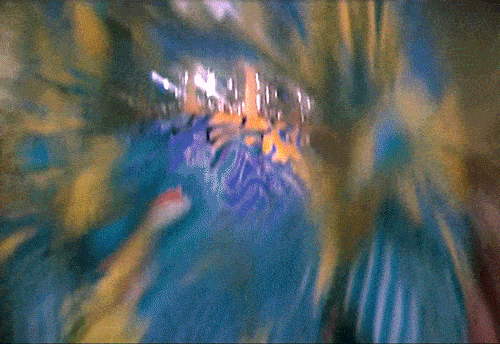
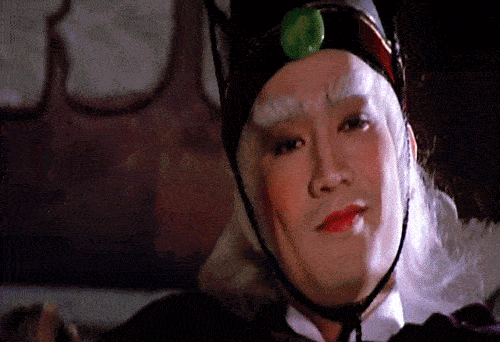
One of the most twisted, psychopathic villains in the Shaw Bros. oeuvre, Wang Zhen is a royal eunuch with ghastly pale, androgynous features and a deceptively polite, well mannered demeanor that masks the sinister, murderous, power hungry tyrant lurking just below the surface.
The main protagonist of the film is Captain Zhao, one of the elite royal soldiers of an emperor of a powerful Jianghu kingdom who is negligent and irresponsible as a ruler. He is easily distracted by a harem of lusty women supplied to him by the sexless Wang Zhen, who effectively rules in his place for all intents and purposes (as a thoroughly corrupt tyrant), relegating the emperor to essentially a figurehead and a puppet of Zhen.
The thrust of the film deals with Captain Zhao resigning from the imperial royal guard and rebelling against Wang Zhen when the evil despot orders Zhao to execute two of his fellow guardsmen who the captain feels are good, valuable soldiers who are undeserving of death. Zhen is infuriated as Zhao is one of the only soldiers among the emperor's elite royal guards who does not recognize and submit to his authority, and orders for the deaths of Zhao as well as his entire family as restitution for his rebellion.
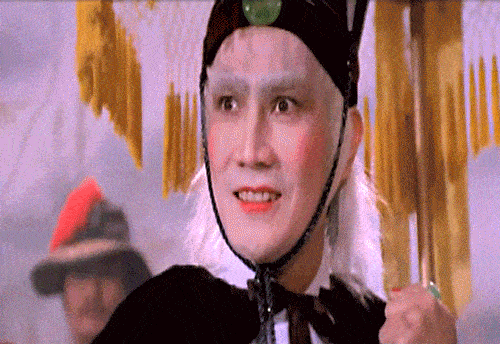
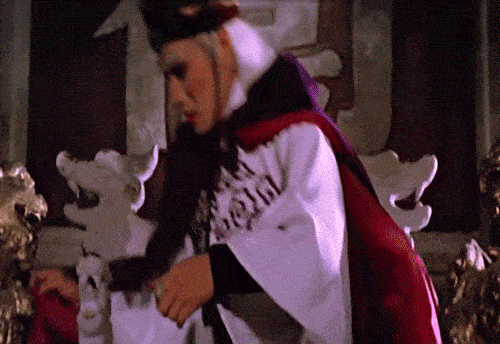
Zhao along with his wife and young son, take refuge in the home village of Zhao's ancestral warrior clan, who fight back against repeated attacks from an increasingly enraged Wang Zhen.
Besides many aspects of his appearance, demeanor, and overall personality (the calm, civil, reasonable veneer thinly masking a murderous black heart, as well as ghostly, vaguely androgynous features) Wang Zhen shares numerous other similarities with Freeza. Both spend massive amounts of their non-fighting screen time riding around on mobile throne-like chairs (Freeza being a more futuristic sci fi hover chair, Zhen's being carried about by his men) and both have incredibly similar voices (going by Nakao's performance for Freeza obviously) and wickedly haughty “Ho ho ho!” laughs.
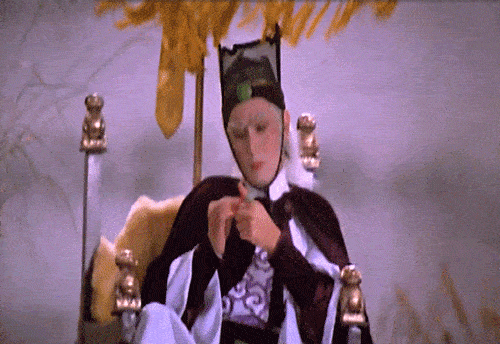
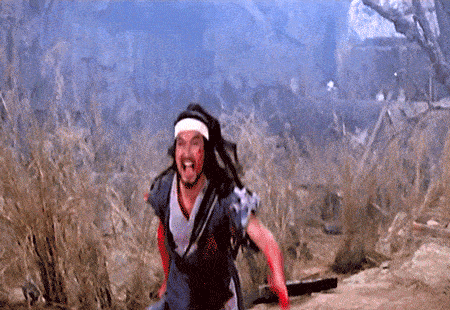
They also meet ultimately VERY similar ends, with both being bisected vertically down the middle by sword, and both being ultimately undone by their mutual obsessions with consolidating their hold over their armies by keeping a single rebellious warrior clan in line (and a member of that clan ultimately being responsible for their defeat and death). In many ways the Freeza arc has a LOT in the way of common narrative and thematic ground with Secret Service of the Imperial Court. In many ways its a Toriyama-ified, sci fi makeover of many of the same basic narrative conceits and ideas.
Dragon Ball's three most sci fi-blended story arcs (Saiya-jin, Freeza, and Cell, which all ran from circa 1988/89 to 1993, which were not-coincidentally the peak-most years of the genre-blending era of Wuxia) are all ultimately still Wuxia stories about martial artists at their core behind the veil of crazy, wacky sci fi nonsense going on in the foreground.
Understand... one of the most consistently wrongheaded, frustrating readings of the series from present-day post-FUNimation Western fans is that its:
A) A warmhearted, sweet natured story of sentimental friendship. Or...
B) A Justice League-esque superhero story about saving the world.
Dragon Ball, as a Wuxia series, is about NEITHER of those things.

(Kanzenshuu's own Rocketman once put it best: Dragon Ball isn't about friendship, its about "I want you to hit me as hard as you can.")
The Saiya-jin arc introduces its main antagonists from beyond the stars... but at the end of the day their motives are purely fixed upon the magical MacGuffin of the series title. And even then, Vegeta can be pretty easily distracted from his original goal (obtain the Dragon Balls/immortality) merely by having some of his blood drawn by Goku in their fight, which sends him into a crazed rage and changes his motive from chasing the titular magical MacGuffin to proving his martial superiority over the “lower class” Kakarotto.
The thrust of the entire arc is a motley group of martial arts experts from this Jianghu world's Wulin community who all originally met as competitors in a series of global martial arts tournaments banding together and training in preparation for the arrival of a pair of powerful opponents, largely out of self-defense and self-preservation on their part. And by the next arc (Freeza/Namek) the thrust switches to being one of the protagonists attempting to revive their slain comrades, completely unintentionally getting mixed up and involved in the affairs of Freeza and his army.
Gohan, Kuririn, and Bulma are motivated by wanting to save their friends, not the universe, whereas Goku (as always) is driven out of a desire to challenge himself against an overwhelming opponent like Freeza: and also later on, after coming to grips with his ancestry, getting revenge for those he's killed, particularly Kuririn as with the Daimao arc which was also primarily driven by revenge for the slaying of Kuririn. Remember the archaic ethics of the Xia, where cold-blooded revenge is among the key components that forms the backbone of their sense of justice and morality.
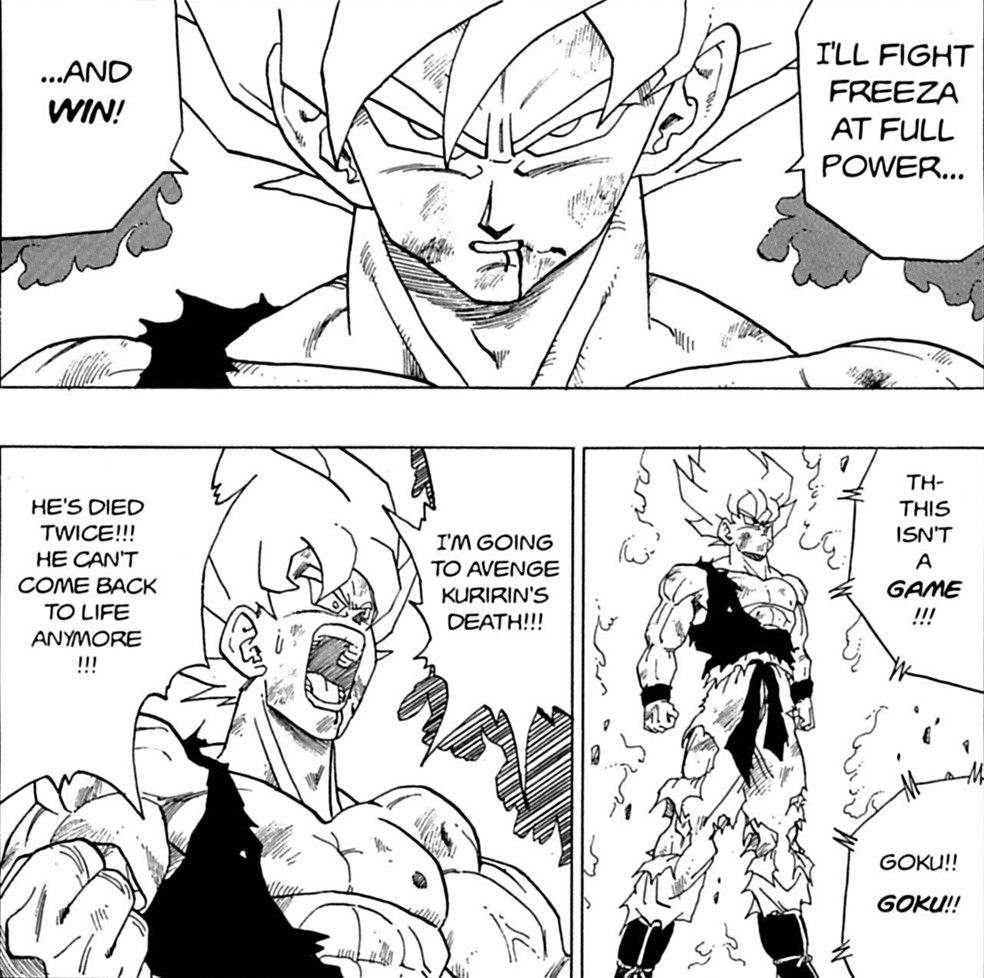
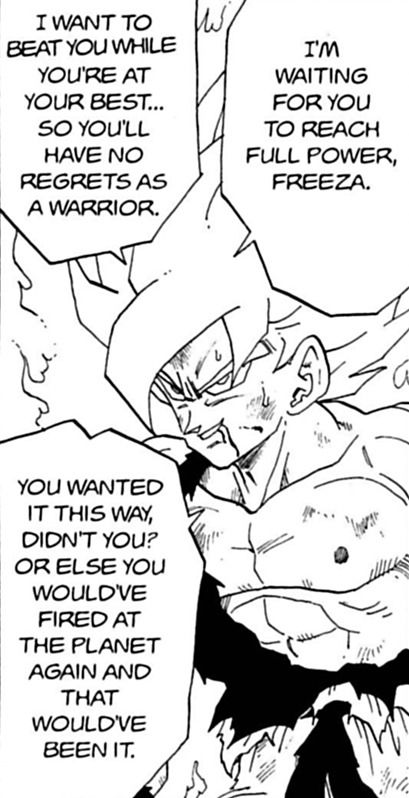
These characters are all ultimately a band of fighters who are all motivated by pride and competition to varying degrees. Many times, as in countless other Wuxia stories, the fate of a world or two MIGHT hang in the balance, but to characters like these its often a side-concern and rarely ever paramount on their list of priorities. A group of Wulin martial arts experts is not one and the same thing as the Justice League.
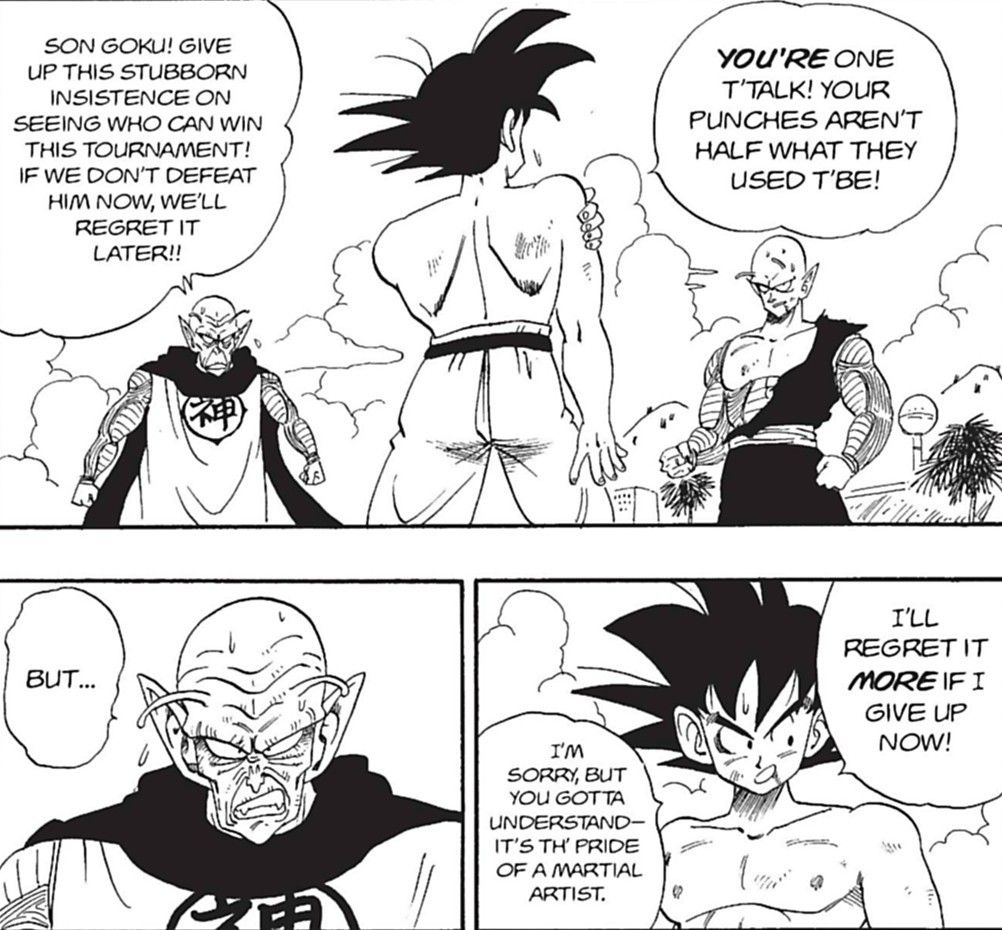
As a subset of the martial arts genre, Wuxia is in many ways a genre that is often about competitiveness rather than altruism. There's a streak of self-centered pridefulness that runs deep at the core of most of the types of characters and stories (its not for nothing that Goku often finds himself saying “Sorry for being so selfish.” whenever his inherent need and yearning to test himself against his enemies inevitably overwhelms any other viewpoints).
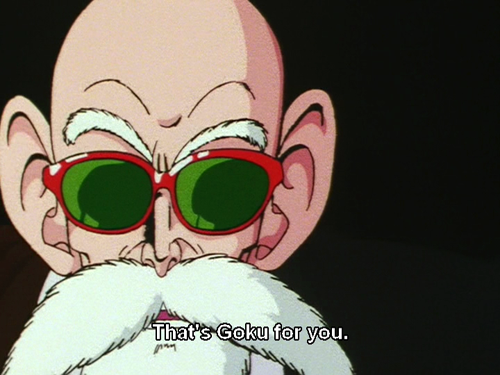
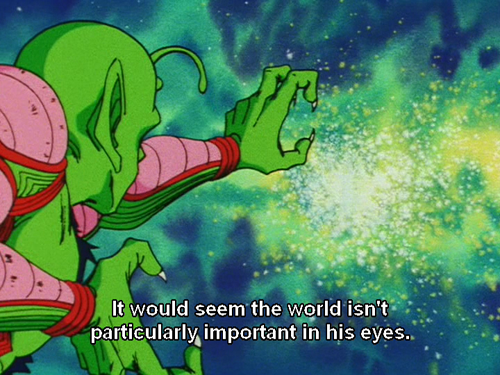
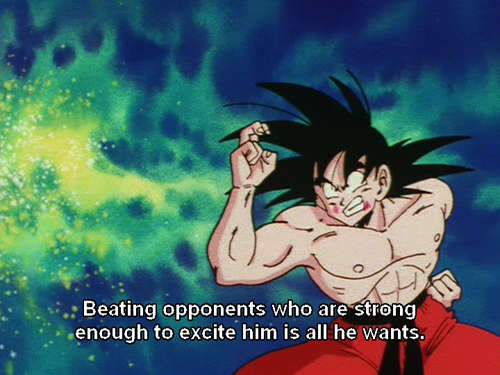
The conflicts inherent to this paradigm come to a head within the Cell arc, which introduces a major character (Trunks) who DOESN'T possess a Xia's outlook the same way that all of the other Z Warriors do and is one of the only major characters in the entire series who is actually primarily, legitimately interested in saving the world rather than getting revenge for someone or testing the limits of his skills.
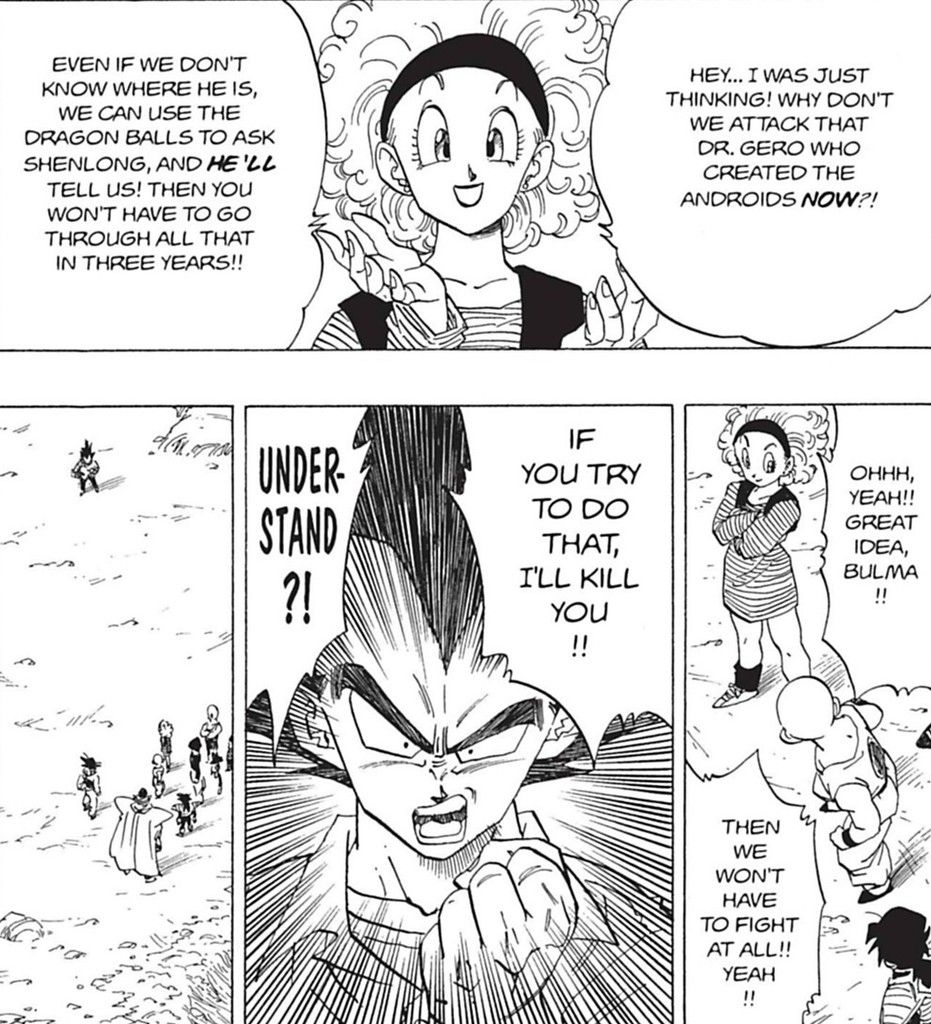
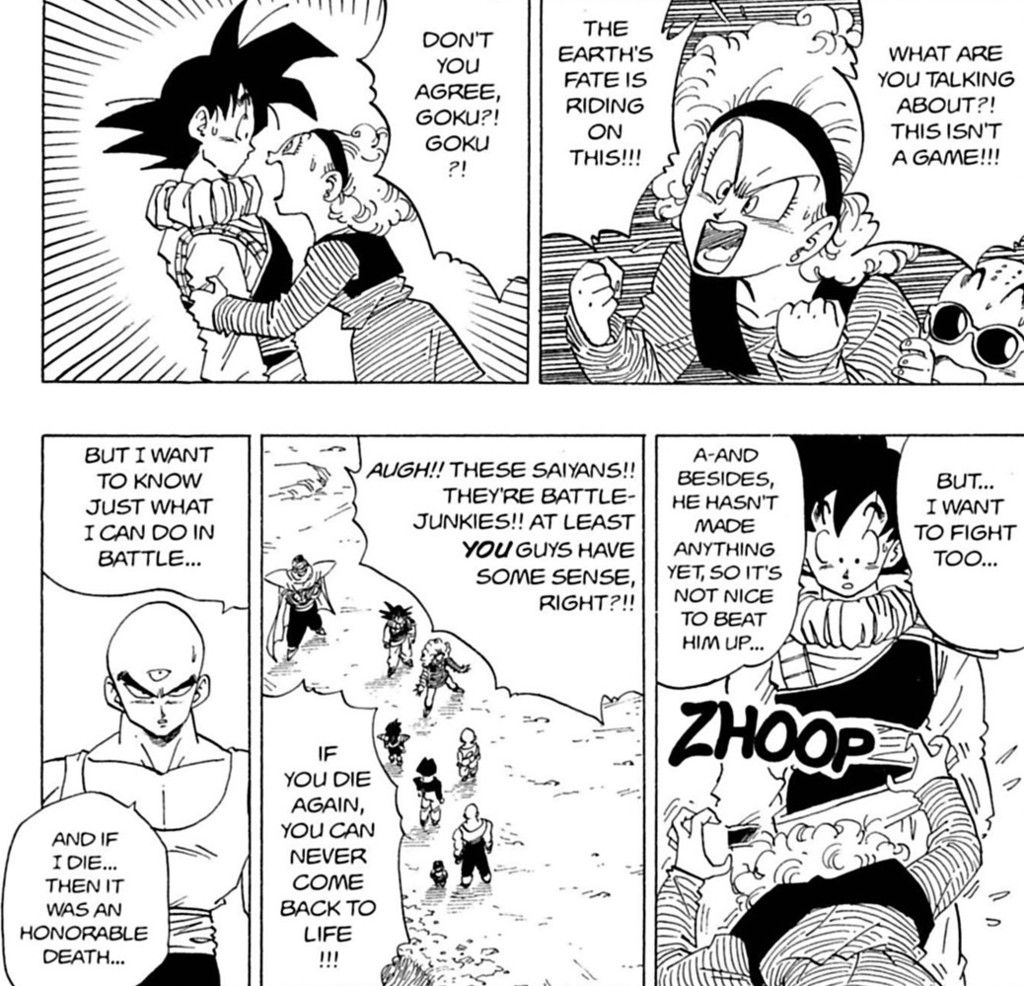
(If Dragon Ball were TRULY the sort of series that many of its current-day North American fans believed it to be, this entire conversation never would've taken place.)
While Gero's motives for creating his Jinzoningen abominations may have been one of revenge, ultimately what principally drives much of the Cell arc is a darker take on the Youxia's idea of competition and testing the limits of their skills. Cell, upon achieving his Perfect form, essentially acts as a dark, evil, twisted mirror of Goku, wishing for nothing more than to revel in tournament glory as he pits his artificially enhanced skills against the very best that Toriyama's Jianghu has to offer.

Of course even throughout the Dragon Ball/Z anime's ENTIRE run (up through and including the more gonzo early 90s sci fi stuff) the franchise keeps one foot planted squarely in the past with Shinsuke Kikuchi's heavily, and I do mean HEAVILY classic Shaw Brothers-inspired musical score. This score, apart from just being kickass all unto itself, effectively does a LOT just on its own to ensure that the series' tone stays always firmly rooted in its Wuxia heritage, no matter what weirdo early 90s nonsense Toriyama or the Toei staff decides to throw in there.
I don't really even need to add much here in the way of me yammering: just listen to some choice sample Shaw scores and hear for yourself.
Invincible Shaolin
Brave Archer II
Sword Stained With Royal Blood
Ten Tigers of Kwangtung
In terms of classic Wuxia warlord characters, Freeza in many ways most closely resembles (in terms of personality, demeanor, and characterization) Wang Zhen from the 1984 Shaw Bros. Wuxia epic Secret Service of the Imperial Court.


One of the most twisted, psychopathic villains in the Shaw Bros. oeuvre, Wang Zhen is a royal eunuch with ghastly pale, androgynous features and a deceptively polite, well mannered demeanor that masks the sinister, murderous, power hungry tyrant lurking just below the surface.
The main protagonist of the film is Captain Zhao, one of the elite royal soldiers of an emperor of a powerful Jianghu kingdom who is negligent and irresponsible as a ruler. He is easily distracted by a harem of lusty women supplied to him by the sexless Wang Zhen, who effectively rules in his place for all intents and purposes (as a thoroughly corrupt tyrant), relegating the emperor to essentially a figurehead and a puppet of Zhen.
The thrust of the film deals with Captain Zhao resigning from the imperial royal guard and rebelling against Wang Zhen when the evil despot orders Zhao to execute two of his fellow guardsmen who the captain feels are good, valuable soldiers who are undeserving of death. Zhen is infuriated as Zhao is one of the only soldiers among the emperor's elite royal guards who does not recognize and submit to his authority, and orders for the deaths of Zhao as well as his entire family as restitution for his rebellion.


Zhao along with his wife and young son, take refuge in the home village of Zhao's ancestral warrior clan, who fight back against repeated attacks from an increasingly enraged Wang Zhen.
Besides many aspects of his appearance, demeanor, and overall personality (the calm, civil, reasonable veneer thinly masking a murderous black heart, as well as ghostly, vaguely androgynous features) Wang Zhen shares numerous other similarities with Freeza. Both spend massive amounts of their non-fighting screen time riding around on mobile throne-like chairs (Freeza being a more futuristic sci fi hover chair, Zhen's being carried about by his men) and both have incredibly similar voices (going by Nakao's performance for Freeza obviously) and wickedly haughty “Ho ho ho!” laughs.


They also meet ultimately VERY similar ends, with both being bisected vertically down the middle by sword, and both being ultimately undone by their mutual obsessions with consolidating their hold over their armies by keeping a single rebellious warrior clan in line (and a member of that clan ultimately being responsible for their defeat and death). In many ways the Freeza arc has a LOT in the way of common narrative and thematic ground with Secret Service of the Imperial Court. In many ways its a Toriyama-ified, sci fi makeover of many of the same basic narrative conceits and ideas.
Dragon Ball's three most sci fi-blended story arcs (Saiya-jin, Freeza, and Cell, which all ran from circa 1988/89 to 1993, which were not-coincidentally the peak-most years of the genre-blending era of Wuxia) are all ultimately still Wuxia stories about martial artists at their core behind the veil of crazy, wacky sci fi nonsense going on in the foreground.
Understand... one of the most consistently wrongheaded, frustrating readings of the series from present-day post-FUNimation Western fans is that its:
A) A warmhearted, sweet natured story of sentimental friendship. Or...
B) A Justice League-esque superhero story about saving the world.
Dragon Ball, as a Wuxia series, is about NEITHER of those things.

(Kanzenshuu's own Rocketman once put it best: Dragon Ball isn't about friendship, its about "I want you to hit me as hard as you can.")
The Saiya-jin arc introduces its main antagonists from beyond the stars... but at the end of the day their motives are purely fixed upon the magical MacGuffin of the series title. And even then, Vegeta can be pretty easily distracted from his original goal (obtain the Dragon Balls/immortality) merely by having some of his blood drawn by Goku in their fight, which sends him into a crazed rage and changes his motive from chasing the titular magical MacGuffin to proving his martial superiority over the “lower class” Kakarotto.
The thrust of the entire arc is a motley group of martial arts experts from this Jianghu world's Wulin community who all originally met as competitors in a series of global martial arts tournaments banding together and training in preparation for the arrival of a pair of powerful opponents, largely out of self-defense and self-preservation on their part. And by the next arc (Freeza/Namek) the thrust switches to being one of the protagonists attempting to revive their slain comrades, completely unintentionally getting mixed up and involved in the affairs of Freeza and his army.
Gohan, Kuririn, and Bulma are motivated by wanting to save their friends, not the universe, whereas Goku (as always) is driven out of a desire to challenge himself against an overwhelming opponent like Freeza: and also later on, after coming to grips with his ancestry, getting revenge for those he's killed, particularly Kuririn as with the Daimao arc which was also primarily driven by revenge for the slaying of Kuririn. Remember the archaic ethics of the Xia, where cold-blooded revenge is among the key components that forms the backbone of their sense of justice and morality.


These characters are all ultimately a band of fighters who are all motivated by pride and competition to varying degrees. Many times, as in countless other Wuxia stories, the fate of a world or two MIGHT hang in the balance, but to characters like these its often a side-concern and rarely ever paramount on their list of priorities. A group of Wulin martial arts experts is not one and the same thing as the Justice League.

As a subset of the martial arts genre, Wuxia is in many ways a genre that is often about competitiveness rather than altruism. There's a streak of self-centered pridefulness that runs deep at the core of most of the types of characters and stories (its not for nothing that Goku often finds himself saying “Sorry for being so selfish.” whenever his inherent need and yearning to test himself against his enemies inevitably overwhelms any other viewpoints).



The conflicts inherent to this paradigm come to a head within the Cell arc, which introduces a major character (Trunks) who DOESN'T possess a Xia's outlook the same way that all of the other Z Warriors do and is one of the only major characters in the entire series who is actually primarily, legitimately interested in saving the world rather than getting revenge for someone or testing the limits of his skills.


(If Dragon Ball were TRULY the sort of series that many of its current-day North American fans believed it to be, this entire conversation never would've taken place.)
While Gero's motives for creating his Jinzoningen abominations may have been one of revenge, ultimately what principally drives much of the Cell arc is a darker take on the Youxia's idea of competition and testing the limits of their skills. Cell, upon achieving his Perfect form, essentially acts as a dark, evil, twisted mirror of Goku, wishing for nothing more than to revel in tournament glory as he pits his artificially enhanced skills against the very best that Toriyama's Jianghu has to offer.

Of course even throughout the Dragon Ball/Z anime's ENTIRE run (up through and including the more gonzo early 90s sci fi stuff) the franchise keeps one foot planted squarely in the past with Shinsuke Kikuchi's heavily, and I do mean HEAVILY classic Shaw Brothers-inspired musical score. This score, apart from just being kickass all unto itself, effectively does a LOT just on its own to ensure that the series' tone stays always firmly rooted in its Wuxia heritage, no matter what weirdo early 90s nonsense Toriyama or the Toei staff decides to throw in there.
I don't really even need to add much here in the way of me yammering: just listen to some choice sample Shaw scores and hear for yourself.
Invincible Shaolin
Brave Archer II
Sword Stained With Royal Blood
Ten Tigers of Kwangtung
Last edited by Kunzait_83 on Tue Feb 02, 2016 3:00 pm, edited 2 times in total.
http://80s90sdragonballart.tumblr.com/
Kunzait's Wuxia Thread
Kunzait's Wuxia Thread
Journey to the West, chapter 26 wrote:The strong man will meet someone stronger still:
Come to naught at last he surely will!
Zephyr wrote:And that's to say nothing of how pretty much impossible it is to capture what made the original run of the series so great. I'm in the generation of fans that started with Toonami, so I totally empathize with the feeling of having "missed the party", experiencing disappointment, and wanting to experience it myself. But I can't, that's how life is. Time is a bitch. The party is over. Kageyama, Kikuchi, and Maeda are off the sauce now; Yanami almost OD'd; Yamamoto got arrested; Toriyama's not going to light trash cans on fire and hang from the chandelier anymore. We can't get the band back together, and even if we could, everyone's either old, in poor health, or calmed way the fuck down. Best we're going to get, and are getting, is a party that's almost entirely devoid of the magic that made the original one so awesome that we even want more.
Kamiccolo9 wrote:It grinds my gears that people get "outraged" over any of this stuff. It's a fucking cartoon. If you are that determined to be angry about something, get off the internet and make a stand for something that actually matters.
Rocketman wrote:"Shonen" basically means "stupid sentimental shit" anyway, so it's ok to be anti-shonen.
- Kunzait_83
- I Live Here
- Posts: 2974
- Joined: Fri Dec 31, 2004 5:19 pm
Re: Dragon Ball's True Genre: We Need to Talk about Wuxia
....aaaaaaand we're caught up!
http://80s90sdragonballart.tumblr.com/
Kunzait's Wuxia Thread
Kunzait's Wuxia Thread
Journey to the West, chapter 26 wrote:The strong man will meet someone stronger still:
Come to naught at last he surely will!
Zephyr wrote:And that's to say nothing of how pretty much impossible it is to capture what made the original run of the series so great. I'm in the generation of fans that started with Toonami, so I totally empathize with the feeling of having "missed the party", experiencing disappointment, and wanting to experience it myself. But I can't, that's how life is. Time is a bitch. The party is over. Kageyama, Kikuchi, and Maeda are off the sauce now; Yanami almost OD'd; Yamamoto got arrested; Toriyama's not going to light trash cans on fire and hang from the chandelier anymore. We can't get the band back together, and even if we could, everyone's either old, in poor health, or calmed way the fuck down. Best we're going to get, and are getting, is a party that's almost entirely devoid of the magic that made the original one so awesome that we even want more.
Kamiccolo9 wrote:It grinds my gears that people get "outraged" over any of this stuff. It's a fucking cartoon. If you are that determined to be angry about something, get off the internet and make a stand for something that actually matters.
Rocketman wrote:"Shonen" basically means "stupid sentimental shit" anyway, so it's ok to be anti-shonen.
- DragonBalllKaiHD
- I Live Here
- Posts: 2707
- Joined: Sun Apr 19, 2009 2:37 pm
- Location: Texas
- Contact:
Re: Dragon Ball's True Genre: We Need to Talk about Wuxia
Wow, that was an impressive thread with all these interesting in-depth points regarding Wuxia. I don't think Toriyama has ever mentioned in any of the interviews about Wuxia's influence on his stance as a manga artist writing Dragon Ball, but it's pretty apparent when you think about it.
While we are on the subject, I got the gist of Mortal Kombat and Matrix getting influenced from Wuxia's genre. I know a lot of 90's and 00's movies, video games, animes, etcs that exposed U.S., namely Pokemon, Variable Geo, Inuyasha, King of the Fighters, Drunken Master, etcs, got influenced by Wuxia, but I've never seen other works outside Japan and U.S. A lot of pictures you posted are from China and Taiwan, both of which I'm not familiar with. It's still an interesting insight, though.
While we are on the subject, I got the gist of Mortal Kombat and Matrix getting influenced from Wuxia's genre. I know a lot of 90's and 00's movies, video games, animes, etcs that exposed U.S., namely Pokemon, Variable Geo, Inuyasha, King of the Fighters, Drunken Master, etcs, got influenced by Wuxia, but I've never seen other works outside Japan and U.S. A lot of pictures you posted are from China and Taiwan, both of which I'm not familiar with. It's still an interesting insight, though.
Katsuyoshi Nakatsuru's #1 biggest fan
A piece of animation is a beauty of art.
A piece of animation is a beauty of art.
- EmmaWinters
- Moderator
- Posts: 863
- Joined: Fri Dec 05, 2014 11:10 pm
- Location: The Interstice
- Contact:
Re: Dragon Ball's True Genre: We Need to Talk about Wuxia
I know it's probably way too much to ask, but it would be awesome if you could source each gif, especially the first page or two. I'd love to check out some of those movies, and I'm sure many other would as well!
「恨むんならてめえの運命を恨むんだな··· このオレのように···」
- Polyphase Avatron
- Born 'n Bred Here
- Posts: 6643
- Joined: Wed Mar 27, 2013 10:48 am
Re: Dragon Ball's True Genre: We Need to Talk about Wuxia
The second-best cheesy 80s kung-fu movie (after Big Trouble in Little China) is The Last Dragon. The main character even goes Super Saiyan in it.
Cool stuff that I upload here because Youtube will copyright claim it: https://vimeo.com/user60967147
Re: Dragon Ball's True Genre: We Need to Talk about Wuxia
followup question: would Bulma be considered a Scholar character or something else?
Re: Dragon Ball's True Genre: We Need to Talk about Wuxia
Best thread on kanzenshuu ever.
Spent the past hour reading this. Can't look at shonen anime the same.
Spent the past hour reading this. Can't look at shonen anime the same.
Re: Dragon Ball's True Genre: We Need to Talk about Wuxia
This was incredible. I read the whole thing. Some was known to me -- much was not. Even the parts that were were masterfully explained here in a way I hope to point others toward.
I'd been wondering for a while where Toriyama, not an action artist prior to Dragon Ball, sourced inspiration for some of his more kinetic fight scenes, especially once grandiose ki techniques and lightning-fast movement become involved. The comparisons offered here to wuxia manhua panels answered that. It'd be interesting to hear about more of his direct artistic influences, because he must have been using some of that (in addition to the obvious Hong Kong movie references) for research during or prior to Dragon Ball's run.
Or perhaps it's all so familiar in Japan it doesn't merit comment.
It was also killer seeing such a simply distilled breakdown of how and why certain anime caught on in the U.S., and why these connections were never readily apparent here, all drawing on information you stated seeding this history with on the first page. Just damn good stuff.
Kunzait, serious question -- I don't know what your background is, but this was all so wonderfully thorough and engaging -- have you ever thought about putting you hobby-based knowledge and uncanny ability to trace and communicate cultural trends and connections into a book? You put together one hell of a readable crash course.
I'd been wondering for a while where Toriyama, not an action artist prior to Dragon Ball, sourced inspiration for some of his more kinetic fight scenes, especially once grandiose ki techniques and lightning-fast movement become involved. The comparisons offered here to wuxia manhua panels answered that. It'd be interesting to hear about more of his direct artistic influences, because he must have been using some of that (in addition to the obvious Hong Kong movie references) for research during or prior to Dragon Ball's run.
Or perhaps it's all so familiar in Japan it doesn't merit comment.
It was also killer seeing such a simply distilled breakdown of how and why certain anime caught on in the U.S., and why these connections were never readily apparent here, all drawing on information you stated seeding this history with on the first page. Just damn good stuff.
Kunzait, serious question -- I don't know what your background is, but this was all so wonderfully thorough and engaging -- have you ever thought about putting you hobby-based knowledge and uncanny ability to trace and communicate cultural trends and connections into a book? You put together one hell of a readable crash course.
-
theoriginalbilis
- I'm, pretty, cozy, here...
- Posts: 1904
- Joined: Mon Apr 17, 2006 1:33 pm
- Location: United States
- Contact:
Re: Dragon Ball's True Genre: We Need to Talk about Wuxia
I agree. This was an excellent informative read.
Have you ever considering professional writing or publishing of some sort? Because you are definitely well-educated, and present yourself as authoritative regarding this material and its cultural context. Maybe work with Derek Padula? He publishes Dragon Ball scholarly material on a regular basis.
Have you ever considering professional writing or publishing of some sort? Because you are definitely well-educated, and present yourself as authoritative regarding this material and its cultural context. Maybe work with Derek Padula? He publishes Dragon Ball scholarly material on a regular basis.
Nothing matters (in a cosmic sense.) Have a good time.
Re: Dragon Ball's True Genre: We Need to Talk about Wuxia
kanzenshuu should use this as an article or something. This deserves to be 'stickied.
It's hard to believe Toriyama didn't use direct Wuxia influences in making the manga. Even the fight scenes in the manga look very Wuxia. All the little details from the horse stance to Gohan's scholar outfit as a kid, amazing.
It's hard to believe Toriyama didn't use direct Wuxia influences in making the manga. Even the fight scenes in the manga look very Wuxia. All the little details from the horse stance to Gohan's scholar outfit as a kid, amazing.
- TheUltimateVegito
- OMG CRAZY REGEN
- Posts: 998
- Joined: Sat Feb 22, 2014 10:37 am
- Location: Buu's Nightmares
Re: Dragon Ball's True Genre: We Need to Talk about Wuxia
I've honestly never heard of Wuxia in my life let alone in the DB community, which is pretty darn amazing if it's really DB's genre.Kunzait_83 wrote:So... this post.
Honestly, for all the difficulty and hurdles that a topic of this magnitude would require on my end, probably among the hardest parts for me to work out was how the hell do I even get this thing started in the first place?
It was in quickly delving back through my recent posting history trying to think up an idea for how to even begin this thing that I stumbled across this little gem from something I posted months and months ago back when I was first throwing that vintage DB art tumblr blog together:
….Kunzait_83 wrote:Do not remotely mistake this though for "the return of Kunzait the Dragon Ball essayist" though. That's ship has LONG and permanently sailed and sunk to the bottom of the Pacific, which is where I fully intend to leave it to rot.
…..oh how hilariously bald face of a lie THAT'S now gonna be in the wake of this gargantuan behemoth.
There's simply no possible way for the opening of a post like this from a person like me with my history with this particular community to somehow NOT be awkward. This is gonna be fucking awkward. So to take from a valuable lesson I've long learned since I was very little: when in doubt, shamelessly make fun of yourself.
Well looks like I'm making like James Cameron and digging this old fossil up for another maiden voyage. And yes I know the Titanic sunk in the Atlantic and my quote referenced the Pacific, but why let pesky historical accuracy get in the way of a perfectly good pop culture reference? Especially one this befitting because like Cameron's bloated '97 opus, this is going to be a WAY overly-long ass-number. Hopefully its also somewhat educational.Kunzait_83 wrote:Do not remotely mistake this though for "the return of Kunzait the Dragon Ball essayist" though. That's ship has LONG and permanently sailed and sunk to the bottom of the Pacific, which is where I fully intend to leave it to rot.
Bottom line: I made the concrete decision several years back to up and leave this community rather than be the person who starts this discussion. Then flash forward about 4 years or so and now I'm making the concrete decision to go back on my previous concrete decision and start this conversation after all.
*Throws up hands in the air*
The takeaway here? So much for concrete decision making.
The topic title is key here though:
Genre.
That's predominantly what we're going to be focusing on here. Genre: definitions, conventions, history, historical context, and so forth. Specifically (of course, obviously) Dragon Ball's genre. I doubt I'll be blowing too many minds or rousing too much in the way of controversy when I note that Dragon Ball has easily one of the single most dysfunctionally bizarre fandoms (specifically on the North American side of things) of damn near anything one can think up. I've been in more than my share of weird fandoms for weird shit my whole life, and I've been in this particular one for a decent chunk of time: trust me, this one's up there.
And quite frankly, this is a topic - that of genre - that I personally find to be at the heart of a MASSIVE amount of the modern day Dragon Ball fandom's many, many freakishly bizarre quirks and idiosyncrasies. Which is part of why we're gonna be spending. A. Fucking. LOT. Of time. Unwrapping Dragon Ball's genre. And as the topic title denotes, Dragon Ball's ACTUAL genre. Because that I feel is where so much of the heart of the dysfunction at the core of Dragon Ball's modern day (and by modern day I mean from roughly 1997/1998-ish or thereabouts and onward) North American fanbase initially stems forth from.
I think we can all agree that among the most important basic details to know about any given creative work of fiction is its genre. Before anyone sits down to discuss say... The Godfather, everyone knows that we're settling in to discuss an epic mob/crime drama. Same goes for The Shining: we all know we're talking horror. On a very baseline, brainstem nature, genre is crucial. Genre is key. Classifying a given work's genre sets the tone for almost everything that's bound to follow in terms of discourse regarding the work itself.
So... very quickly, off the cuff, off the top of everyone's heads here, what is Dragon Ball's genre?
*Typical canned responses*
”Dragon Ball is Shonen!”
Bzzzzt! Wrong. Shonen isn't actually a genre: its a target demographic (that of middle school-age boys). Any other takers?
”Dragon Ball is an Action Cartoon!”
That's... closer. But also EXTREMELY vague. There's a much more specific, tangible answer that covers everything that Dragon Ball represents under a single word.
”Wait a second... that can't be right. EVERYTHING that DB encompasses in a SINGLE word? But Dragon Ball is such a weird hodgepodge of disparate things: fantasy, sci fi, martial arts, ancient myth, dopey gag manga... how do you cram ALL of that into just one single word?”
Not only is there a single genre label that covers EVERYTHING that defines Dragon Ball as Dragon Ball, its also one of the oldest ever genres in the entire history of fiction. One of the oldest and one of the broadest-reaching and encompassing in terms of media that its invaded and stylistic tones it has taken on. And frankly I think its fair to say that understanding this genre is necessary and key in order to truly understand Dragon Ball – certainly to understand its cultural frame of reference - at all on a basic-level.
So now I'm going to say something that I DO think will probably rile controversy: I think that in not understanding the fundamentals of Dragon Ball's actual genre, I think that a VAST majority of Dragon Ball's modern day Western fanbase doesn't really understand the series itself to a certain degree. Which is sad for a number of reasons, not the least of which being that A) neither Dragon Ball nor its actual genre are exactly rocket science and B) this genre is and long has been the FARTHEST thing from super underground and niche (it WAS among Westerners at one point, but that hasn't been the case for more than 15 years now) especially all the more so now today in this hyper-connected and globalized world where everything is a Google or Wiki search away.
Yes I think that the root of this dysfunction runs MASSIVELY deep in the core of this fanbase. How deep? I distantly recall one of the most glaringly incorrect and misunderstood things I ever heard said about this series was something to the basic effect of (and I'm paraphrasing from memory here) “Its very easy for most people to forget that Dragon Ball is an anime because there's nothing particularly Japanese or Asian about it at all.”
One might immediately guess that that came from some awful dub-based discussion, but that'd be incorrect: that came directly from VegettoEX “Mr. Dragon Ball” himself right from one of his old podcasts.
Truth be told that statement IS sort of half-based in truth: there's NOT whole lot that's specifically Japanese running at the core of Dragon Ball's storytelling roots. But Asian? Oh this is as Asian a genre as they conceivably come.
The genre of course, as the thread title plainly gives away, is Wuxia. Which is a very, very, VERY Chinese genre, making Dragon Ball a bit of cultural cross-pollination.
So: here's what we're gonna do. We're gonna talk Wuxia in this thread. Or rather to start with, I'm gonna talk. A. LOOOOOT. About Wuxia. Because frankly there's an ungodly lot to discuss, because this is a genre with as dense a history behind it as they get.
And no one else is raising this topic anywhere else in DB fandom despite how GLARINGLY apparent it is that this topic ought to be raised and is stupidly long overdue being properly examined. I didn't want to be the person responsible for “unpacking” any of this for the wider Dragon Ball community for numerous reasons (that I may or may not delve into as we get deeper into this) but its been made apparent to me in a few recent discussions I've had that no one else is going to bust this chestnut open.
I've got the time to spare, so fuck it: Basic Wuxia 101 For Dummies it is. And its coming to you all courtesy not from someone who's actually... you know, smart, or at least someone who's had some actual semblance of formal training and study in Chinese culture, history, or linguistics; no, your teacher here instead is an aging dork who learned just about everything he ever knew about this genre largely from ratty VHS tapes with horrendous subtitles, obtained via growing up around a ton of stoners and junkies in a seedy neighborhood over 25 years ago.
Yep, nothing can POSSIBLY go awry from this.
As a token of my enthusiasm for this topic however, this isn't going to just be the usual rambling, wordy nonsense typical of one of my ancient old diatribes on here from back in the day. Oh no, we're going a few extra miles here: liberally scattered throughout are numerous high resolution images and animated gifs taken from throughout quite literally my entire lifetime's worth of accumulated Wuxia media. I've gone this extra step of including these for numerous reasons:
First off they MASSIVELY dress up what would otherwise be an absolutely insufferably boring lecture of an info-dump session.
Secondly they act as handy visual aids that at times save me from having to needlessly spend more text describing shit I can just as easily show.
Thirdly, because of how tragically, obscenely under-discussed any of this currently is in present day DB fandom: I want to hammer home with the use of LOTS of media exactly how far reaching this stuff actually goes so that A) it gets across how directly under your noses this whole time a lot of this stuff has always been (because frankly one of the single most infuriating aspects of this whole topic is seeing it get routinely swept aside unknowingly, having something that is so MASSIVE across global mainstream media be senselessly disregarded within all discussion for so globally mainstream a work of media for no real justifiable reason), and B) so that some random jackass can't derail the discussion with pointless disbelief.
“I never heard no one on any DB forum I've ever visited talk about Wuxi-whatever, so how do I know you're not just making all this up?”
Pictures're worth a thousand words. Moving, animated ones probably that many millions more. So don't just take the word of some ranting, long-winded jackass on some forum somewhere such as myself as gospel: I've brought along with me countless bundles of hard evidence to back up each and every claim I'll be making throughout this bulimia of text.
So without further ado, lets get this underway.
YouTube account:
https://www.youtube.com/user/SuperVegitoSSJ2
PSN: Songojames
My Reddit account is also Songojames
https://www.youtube.com/user/SuperVegitoSSJ2
PSN: Songojames
My Reddit account is also Songojames
- Kunzait_83
- I Live Here
- Posts: 2974
- Joined: Fri Dec 31, 2004 5:19 pm
Re: Dragon Ball's True Genre: We Need to Talk about Wuxia
As much as I'd like to thank people here for the kind words (I'm not very good with taking compliments, my apologies), I'd also like to take a moment to respond to something about this writeup that I ran across on Twitter just now randomly:
While many of the most influential and broadly-adapted Wuxia novels of the modern-era (and many of the ones I think this individual is largely focused on) didn't see print in their native China until circa-the 1950s, to say that there was absolutely NO precedent for the genre before that - even in Japan - is just flat out demonstrably incorrect. This "M1120A" person even in their very own tweets had copped to "kung fu movies' influence on Japanese subculture": dismissing the idea that Wuxia had ANY cultural presence whatsoever in Japan prior to the mid-90s is to dismiss the very Wuxia films that this person within the same breath flatly admitted to having impacted Japanese culture.
Wuxia is FAR more in terms of media presence than just books and novels. Even if the most cornerstone works of Jin Yong or Gu Long didn't see official Japanese print until the mid-90s (and I don't really know for sure how true that is, but this M1120A person seems pretty convinced that it is, so I'm open to the possibility), plenty of Wuxia Manhua, films, televisions shows, video games, etc. had without question penetrated Japan well, well long many years/decades beforehand, as they have plenty of other territories.
And at no point in my write-up do I contradict the premise that the roots of Wuxia concepts cropping up in Japanese media are stemmed from anything other than the extreme similarities between Japanese and Chinese cultures. Those similarities were hardly coincidental: its long been common knowledge that Japan has had a very, very long history of cribbing cultural notions and ideas from China. Wuxia is hardly an exception to this. If my writeup was more overtly China-focused, that's because Wuxia is to its core an inherently Chinese genre with much of the real meat of its history stemming from there, with Japan often (as they're generally want to do with plenty of other Chinese cultural cues) mimicking along.
Apologies also for responding indirectly to something said elsewhere off-site, but this nagged at me.
I think what we have here is a simple difference of opinion. Whereas this person (who I THINK might be Japanese or at least lives in Japan, but I can't say that with any real certainty) finds my definition of Wuxia as a genre to be too broad-reaching, based on what they've written here... positing it down primarily it seems to a specific set of novels that didn't see official Japanese publication until the mid-90s... I would have to say that their definition of Wuxia as a genre may be far too narrow and pedantic.M1120A @M1120A 4h
"Now I'm reading Kunzait's thread about "Wuxia." While it's very well thought out, there seem to be stretches here and there. His ideas are basically too China-centered. Though I admit kung-fu movies' influences on the Japanese subculture, the genre "Wuxia" doesn't have any presence there. Wuxia novels were first introduced into Japan in the mid 1990s. I think a lot of the similarities he states are actually the results of some kind of a convergent evolution based on similar cultures. He uses the word "Wuxia" with a very broad definition, but I'm against it. It's nothing but a genre created in the early 20 century which was introduced into Japan in the 1990s. The "Wuxia" like genres in Japan have different roots."
While many of the most influential and broadly-adapted Wuxia novels of the modern-era (and many of the ones I think this individual is largely focused on) didn't see print in their native China until circa-the 1950s, to say that there was absolutely NO precedent for the genre before that - even in Japan - is just flat out demonstrably incorrect. This "M1120A" person even in their very own tweets had copped to "kung fu movies' influence on Japanese subculture": dismissing the idea that Wuxia had ANY cultural presence whatsoever in Japan prior to the mid-90s is to dismiss the very Wuxia films that this person within the same breath flatly admitted to having impacted Japanese culture.
Wuxia is FAR more in terms of media presence than just books and novels. Even if the most cornerstone works of Jin Yong or Gu Long didn't see official Japanese print until the mid-90s (and I don't really know for sure how true that is, but this M1120A person seems pretty convinced that it is, so I'm open to the possibility), plenty of Wuxia Manhua, films, televisions shows, video games, etc. had without question penetrated Japan well, well long many years/decades beforehand, as they have plenty of other territories.
And at no point in my write-up do I contradict the premise that the roots of Wuxia concepts cropping up in Japanese media are stemmed from anything other than the extreme similarities between Japanese and Chinese cultures. Those similarities were hardly coincidental: its long been common knowledge that Japan has had a very, very long history of cribbing cultural notions and ideas from China. Wuxia is hardly an exception to this. If my writeup was more overtly China-focused, that's because Wuxia is to its core an inherently Chinese genre with much of the real meat of its history stemming from there, with Japan often (as they're generally want to do with plenty of other Chinese cultural cues) mimicking along.
Apologies also for responding indirectly to something said elsewhere off-site, but this nagged at me.
http://80s90sdragonballart.tumblr.com/
Kunzait's Wuxia Thread
Kunzait's Wuxia Thread
Journey to the West, chapter 26 wrote:The strong man will meet someone stronger still:
Come to naught at last he surely will!
Zephyr wrote:And that's to say nothing of how pretty much impossible it is to capture what made the original run of the series so great. I'm in the generation of fans that started with Toonami, so I totally empathize with the feeling of having "missed the party", experiencing disappointment, and wanting to experience it myself. But I can't, that's how life is. Time is a bitch. The party is over. Kageyama, Kikuchi, and Maeda are off the sauce now; Yanami almost OD'd; Yamamoto got arrested; Toriyama's not going to light trash cans on fire and hang from the chandelier anymore. We can't get the band back together, and even if we could, everyone's either old, in poor health, or calmed way the fuck down. Best we're going to get, and are getting, is a party that's almost entirely devoid of the magic that made the original one so awesome that we even want more.
Kamiccolo9 wrote:It grinds my gears that people get "outraged" over any of this stuff. It's a fucking cartoon. If you are that determined to be angry about something, get off the internet and make a stand for something that actually matters.
Rocketman wrote:"Shonen" basically means "stupid sentimental shit" anyway, so it's ok to be anti-shonen.
- Metalwario64
- Born 'n Bred Here
- Posts: 6175
- Joined: Thu Feb 07, 2008 1:02 am
- Location: Namek
Re: Dragon Ball's True Genre: We Need to Talk about Wuxia
I may be mistaken, but I believe M1120A is kei17's Twitter handle.Kunzait_83 wrote:This "M1120A" person even in their very own tweets had copped to "kung fu movies' influence on Japanese subculture": dismissing the idea that Wuxia had ANY cultural presence whatsoever in Japan prior to the mid-90s is to dismiss the very Wuxia films that this person within the same breath flatly admitted to having impacted Japanese culture.M1120A @M1120A 4h
"Now I'm reading Kunzait's thread about "Wuxia." While it's very well thought out, there seem to be stretches here and there. His ideas are basically too China-centered. Though I admit kung-fu movies' influences on the Japanese subculture, the genre "Wuxia" doesn't have any presence there. Wuxia novels were first introduced into Japan in the mid 1990s. I think a lot of the similarities he states are actually the results of some kind of a convergent evolution based on similar cultures. He uses the word "Wuxia" with a very broad definition, but I'm against it. It's nothing but a genre created in the early 20 century which was introduced into Japan in the 1990s. The "Wuxia" like genres in Japan have different roots."
"Kenshi is sitting down right now drawing his mutated spaghetti monsters thinking he's the shit..."--Neptune Kai
"90% of you here don't even know what you're talking about (there are a few that do). But the things you say about these releases are nonsense and just plain dumb. Like you Metalwario64"--final_flash
"90% of you here don't even know what you're talking about (there are a few that do). But the things you say about these releases are nonsense and just plain dumb. Like you Metalwario64"--final_flash
Re: Dragon Ball's True Genre: We Need to Talk about Wuxia
Yup, that's Kei.Metalwario64 wrote:I may be mistaken, but I believe M1120A is kei17's Twitter handle.
Was hoping to see a response to his comments. He's been pretty absent lately, so I don't know if he'll come back with his own retort.
Follow me on Twitter for countless shitposts.
Deadtuber.
Deadtuber.
- Kunzait_83
- I Live Here
- Posts: 2974
- Joined: Fri Dec 31, 2004 5:19 pm
Re: Dragon Ball's True Genre: We Need to Talk about Wuxia
Sorry I missed this question earlier.irreality wrote:followup question: would Bulma be considered a Scholar character or something else?
Bulma's a bit of a weird case and I think one could make an argument for her either way. While she does share many traits in common with many scholar and overall non-combatant characters across other Wuxia stories, she also has a lot of distinctively Westernized traits as well. Between the two, I think that Gohan fills in far, far more of the usual Wuxia Scholar narrative conceits.
Bulma's lack of martial arts training is almost never really held against her by the narrative as a negative or an especially terrible burden: at worst, its very occasionally played up for mild tension or comedy, and almost never at her expense (admirably enough). Gohan's pacifism and disinterest in fighting or being a Youxia is at the heart and soul of the drama and conflict of the character. The narrative is CONSTANTLY playing it up and putting the character through grief and hell due to his unwillingness and lack of motivational drive to be a martial artist.
I think that oftentimes Bulma is treated by the narrative as much more of a generic action/adventure character (though not as much later on), whereas Gohan really is Dragon Ball's attempt at dealing specifically with the Wuxia Scholar archetype and all of the baggage that that entails.
In all honesty, if I was gonna dredge up another Wuxia character to directly compare Bulma to, I'd sooner probably go with Ning Choi-san from A Chinese Ghost Story, if only because he occupies such a similar dynamic alongside Yin Chik-ha as Bulma does with Goku (the non-fighter normal person who while useful, is a bit of a load at times for the seasoned warrior to have to carry around and constantly bail out of trouble).
http://80s90sdragonballart.tumblr.com/
Kunzait's Wuxia Thread
Kunzait's Wuxia Thread
Journey to the West, chapter 26 wrote:The strong man will meet someone stronger still:
Come to naught at last he surely will!
Zephyr wrote:And that's to say nothing of how pretty much impossible it is to capture what made the original run of the series so great. I'm in the generation of fans that started with Toonami, so I totally empathize with the feeling of having "missed the party", experiencing disappointment, and wanting to experience it myself. But I can't, that's how life is. Time is a bitch. The party is over. Kageyama, Kikuchi, and Maeda are off the sauce now; Yanami almost OD'd; Yamamoto got arrested; Toriyama's not going to light trash cans on fire and hang from the chandelier anymore. We can't get the band back together, and even if we could, everyone's either old, in poor health, or calmed way the fuck down. Best we're going to get, and are getting, is a party that's almost entirely devoid of the magic that made the original one so awesome that we even want more.
Kamiccolo9 wrote:It grinds my gears that people get "outraged" over any of this stuff. It's a fucking cartoon. If you are that determined to be angry about something, get off the internet and make a stand for something that actually matters.
Rocketman wrote:"Shonen" basically means "stupid sentimental shit" anyway, so it's ok to be anti-shonen.
Re: Dragon Ball's True Genre: We Need to Talk about Wuxia
Thanks for the reply! I appreciated the clarification that the Scholar normally has the implication of a Youxai that wasn't, vs. just being a normal/Arthur Dent.

